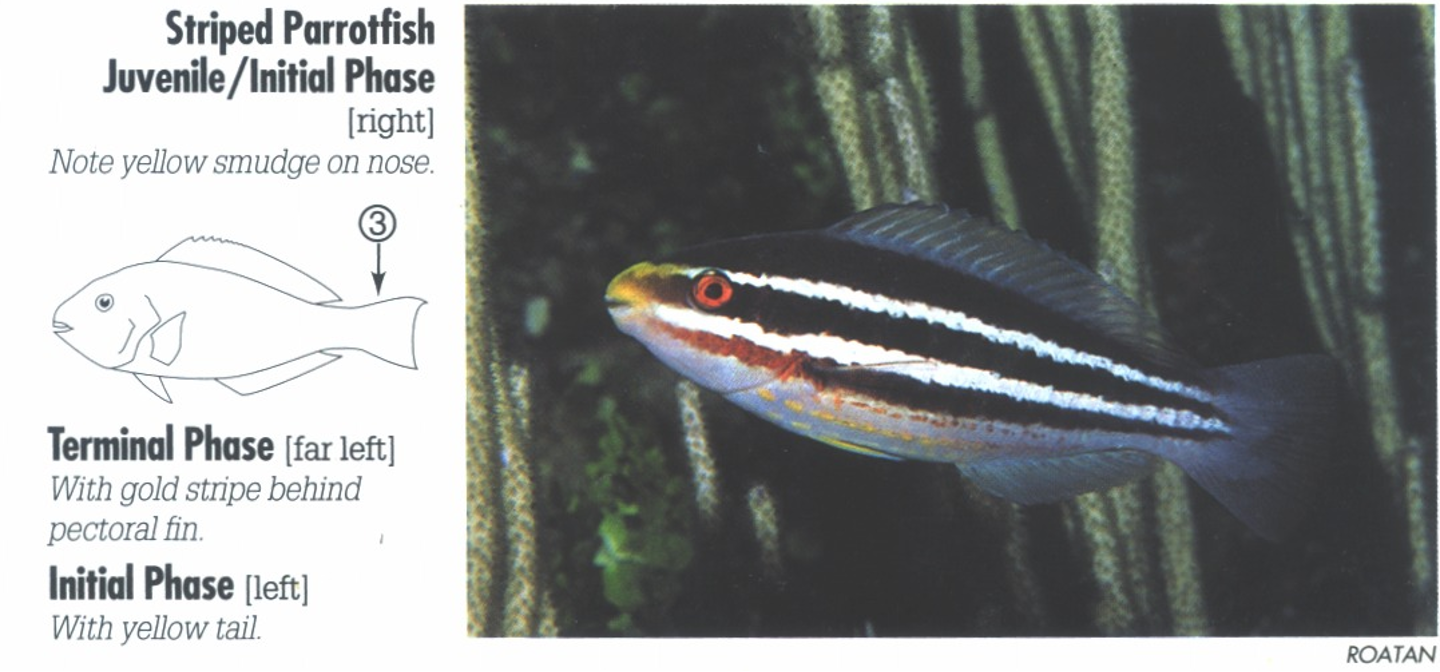Fish
1/168
Earn XP
Description and Tags
This is gonna be a dosy
Name | Mastery | Learn | Test | Matching | Spaced |
|---|
No study sessions yet.
169 Terms
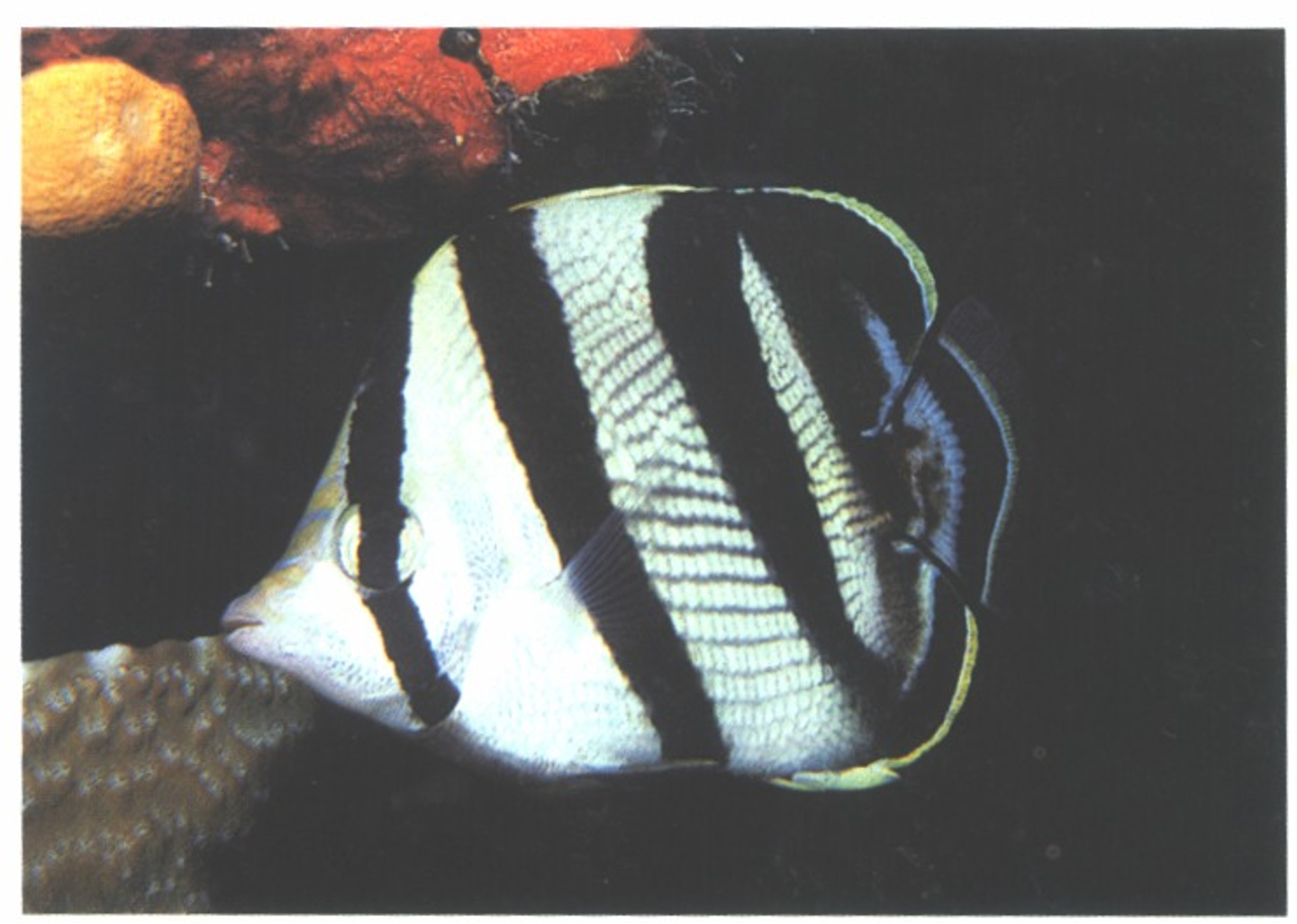
1. Two wide, black midbody bands.
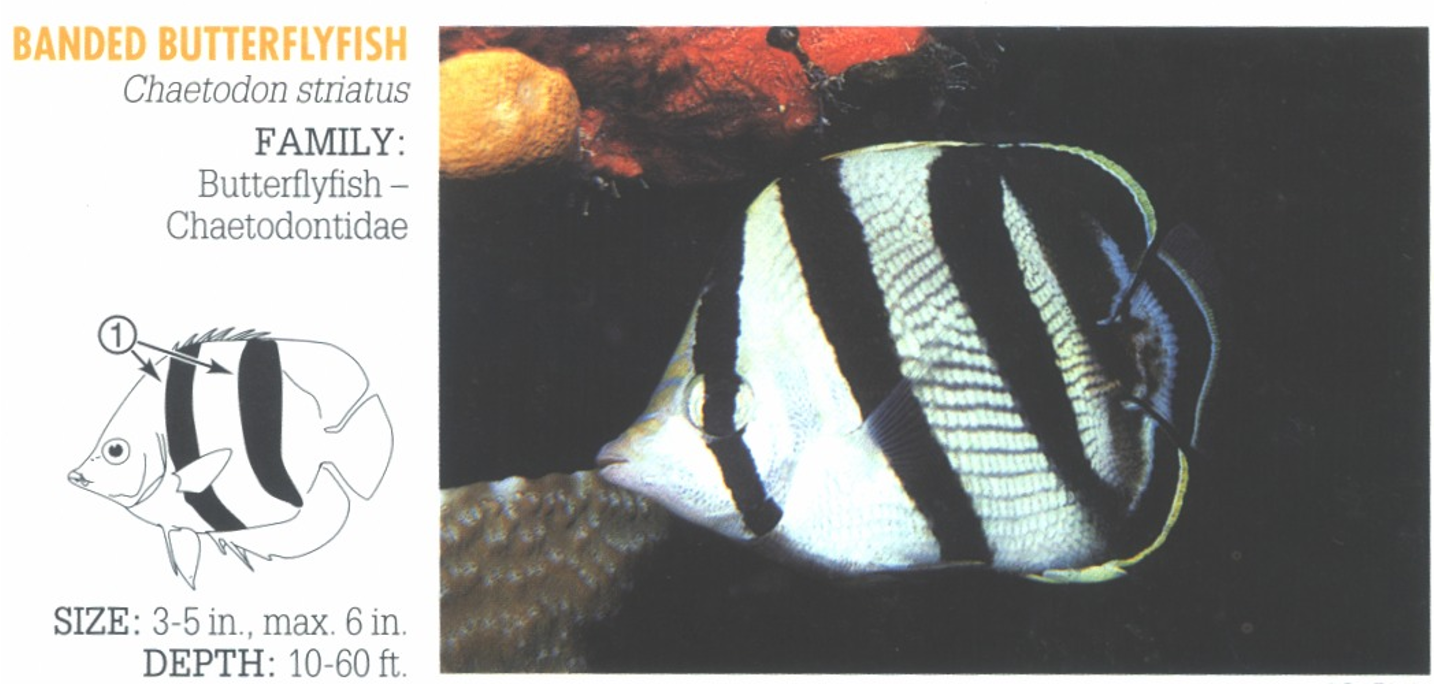
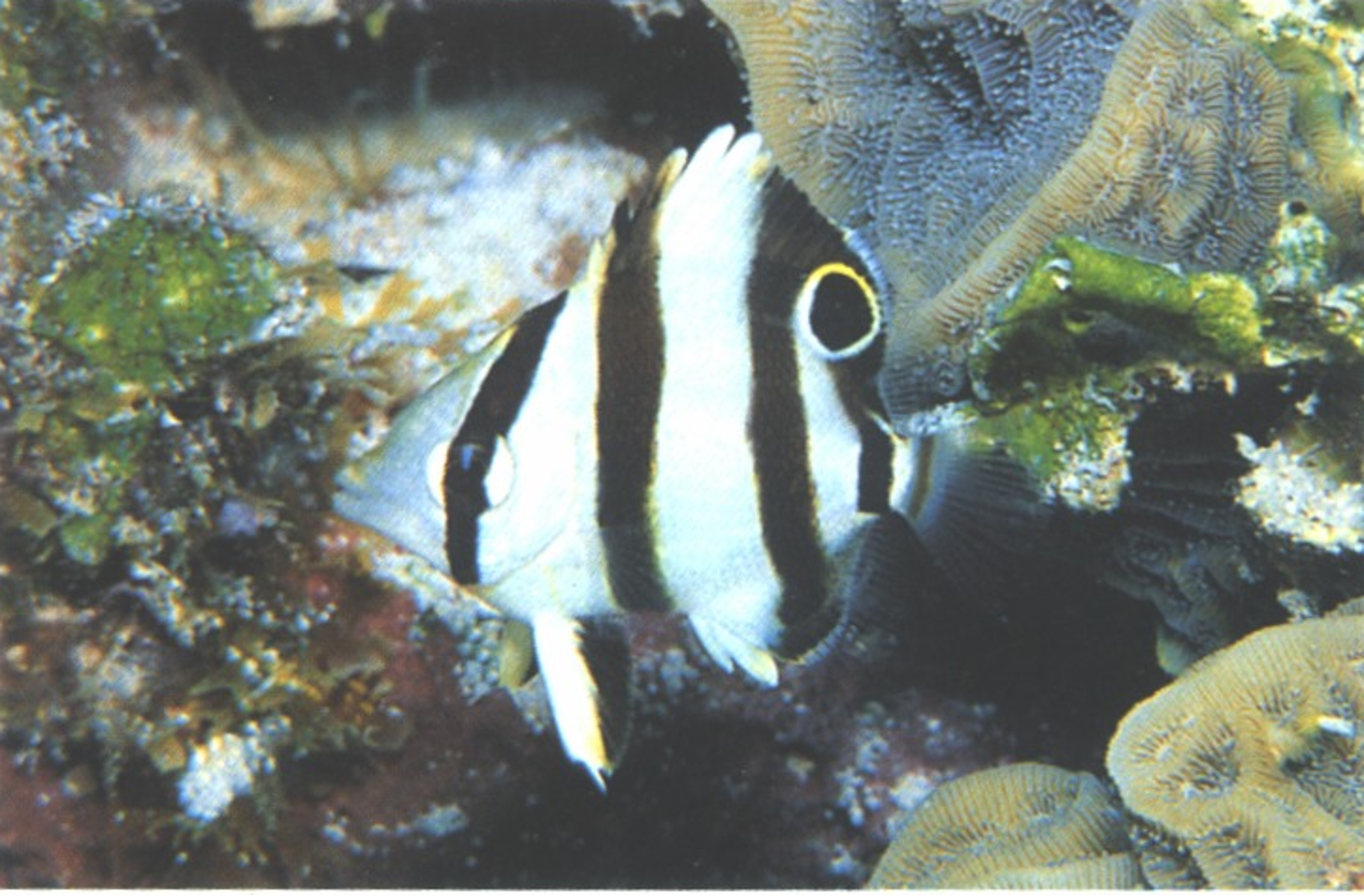
JUVENILE: 2. Black spot ringed in white on rear dorsal fin (easily distinguished from similar juveniles by lack of any yellowish fins).
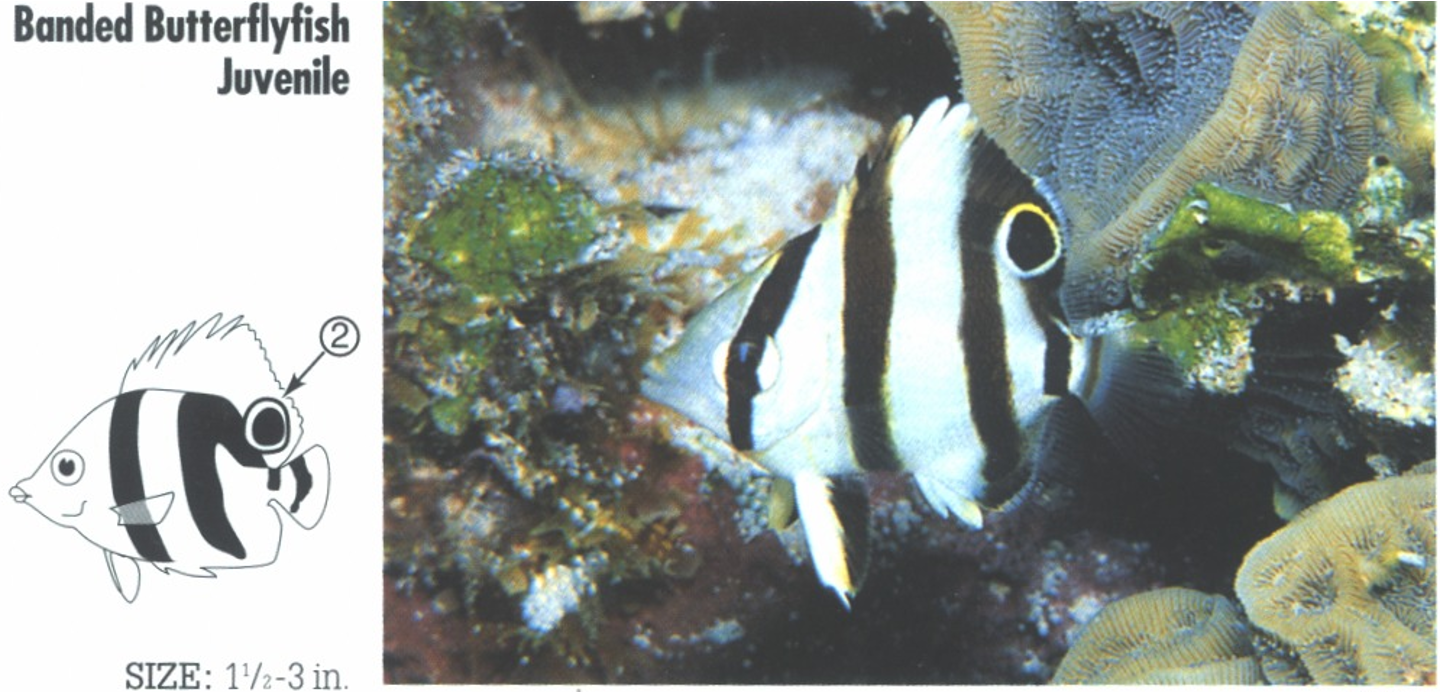
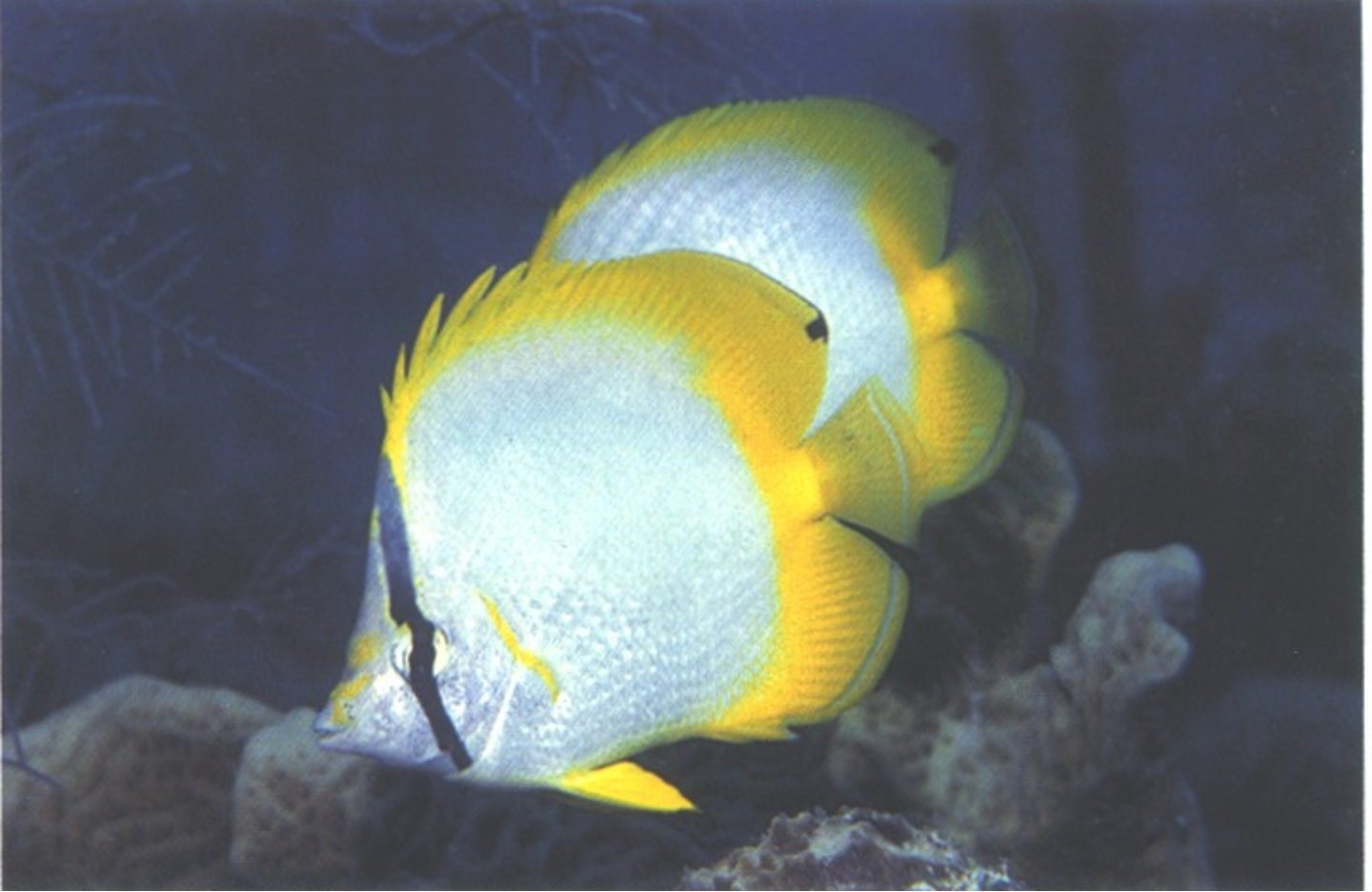
1. Fins (except pectoral) bright yellow. 2. Black dot on outer edge of rear dorsal fin.
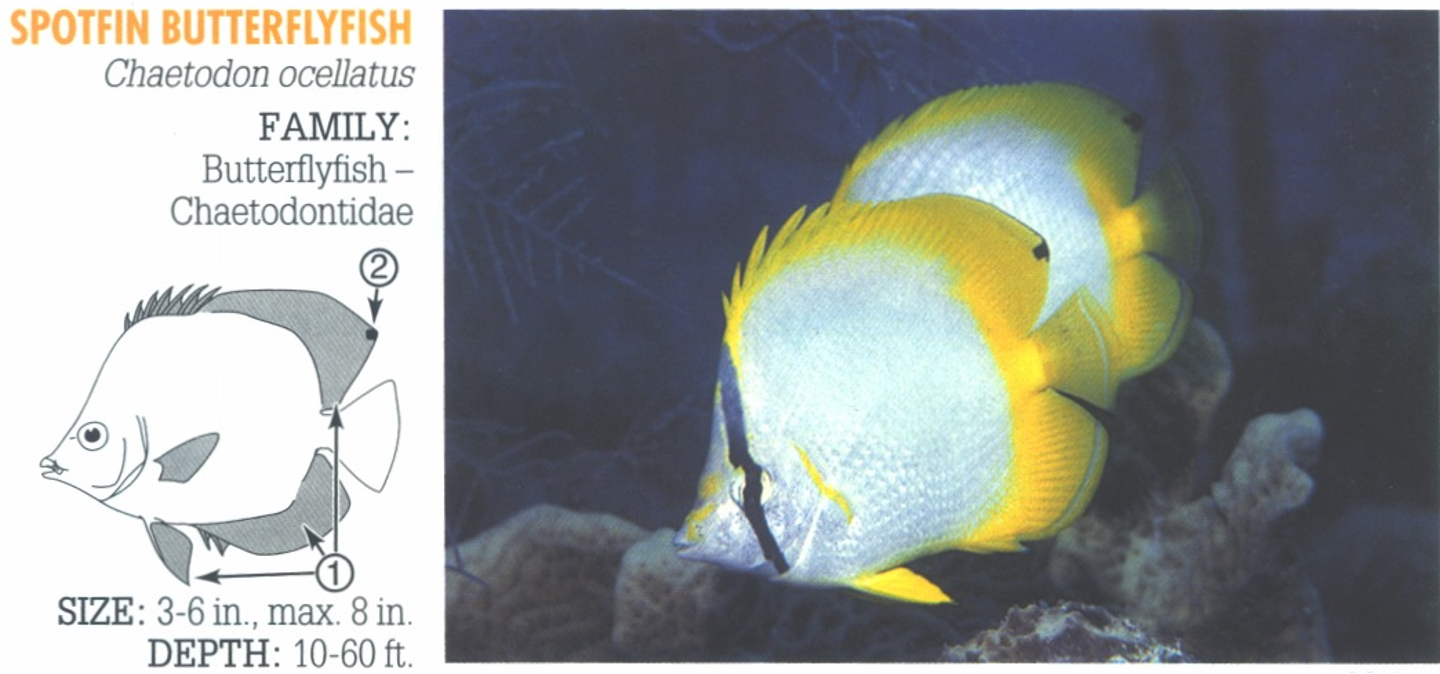
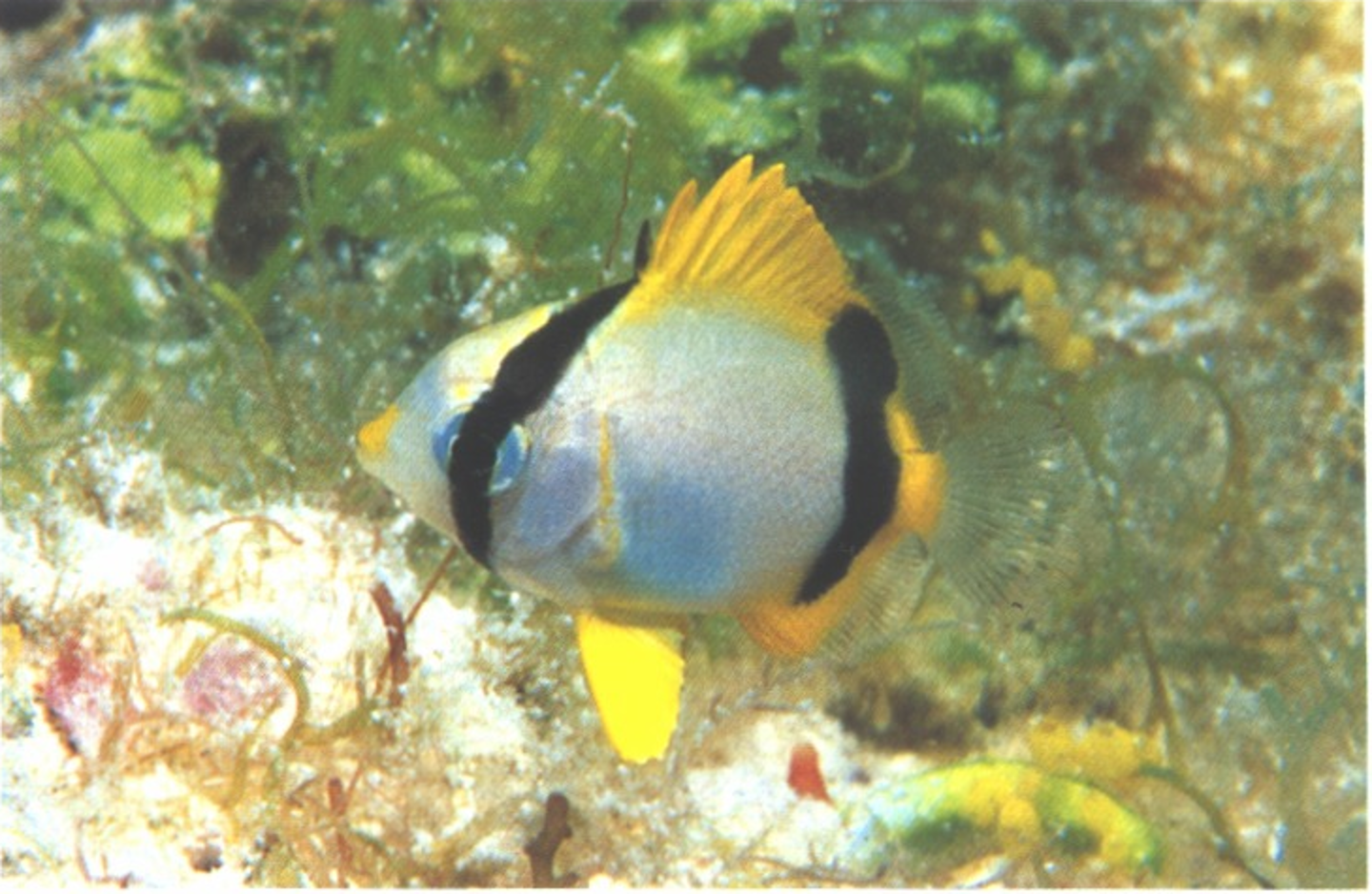
JUVENILE: 3. Very young have a black spot on the rear dorsal, anal and base tail fins which, with maturity, join to form a rear body bar.
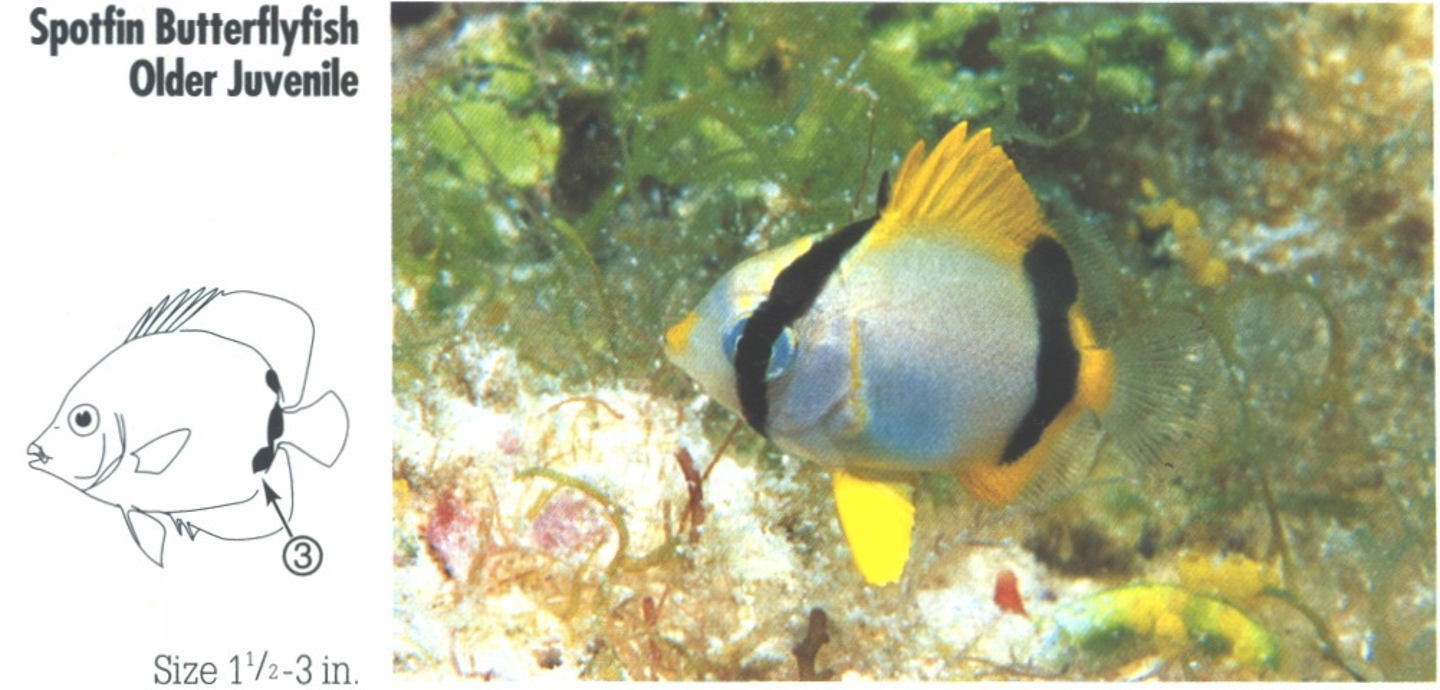
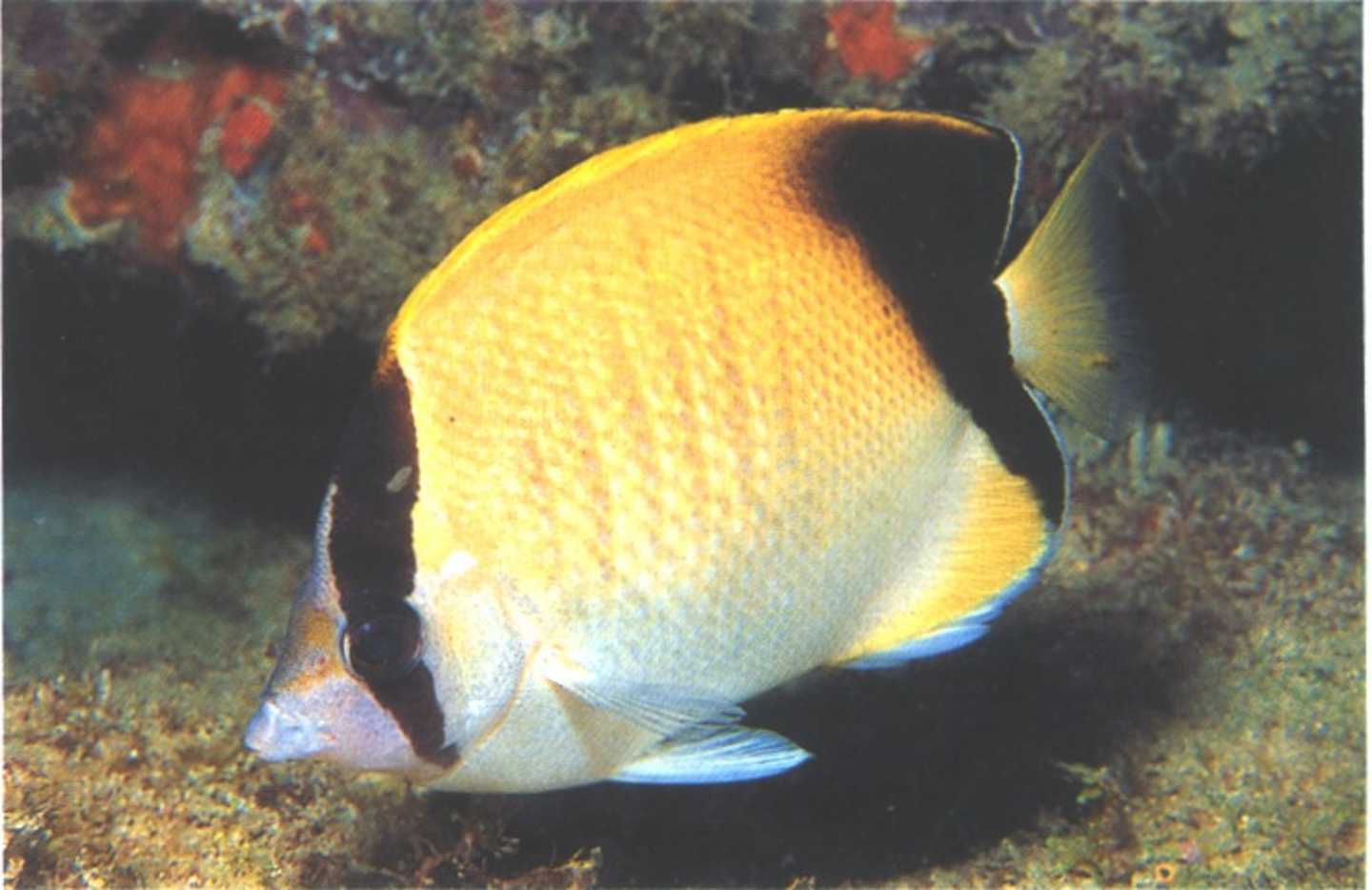
1. Broad, dark, bar-like area on rear body, including the rear portions of dorsal and anal fins.
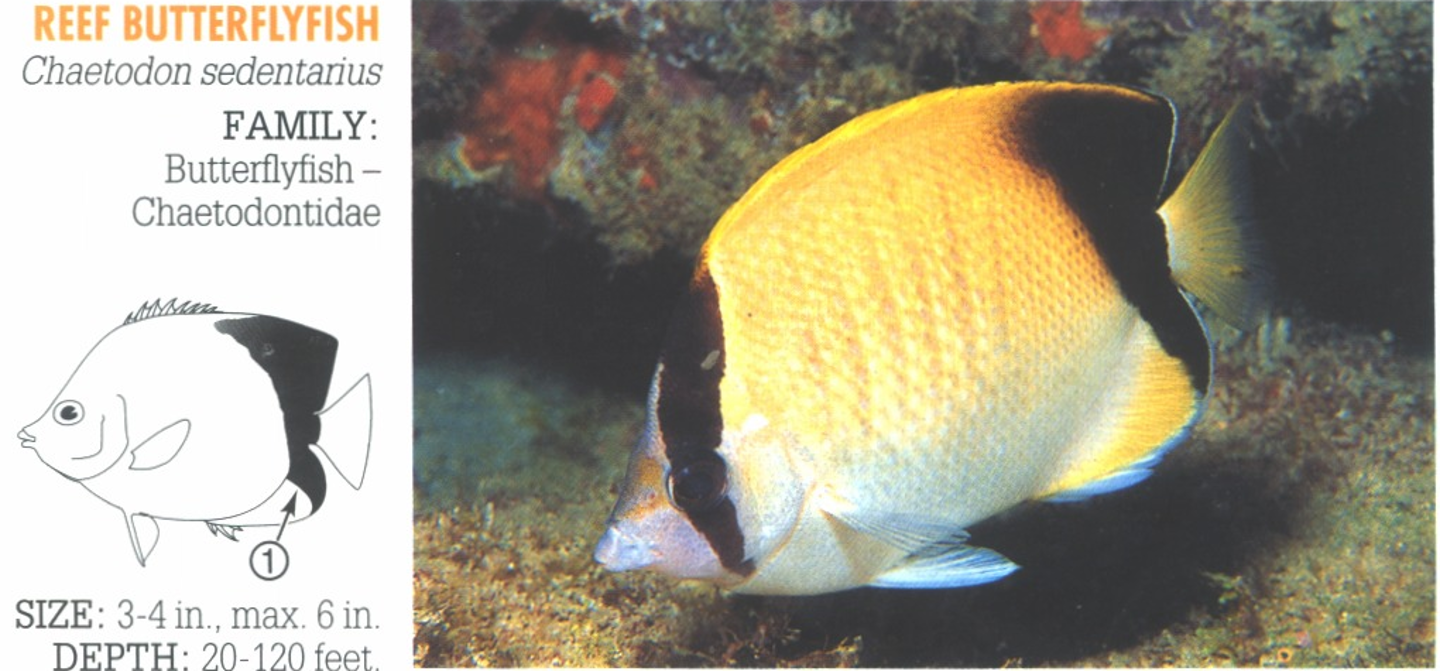
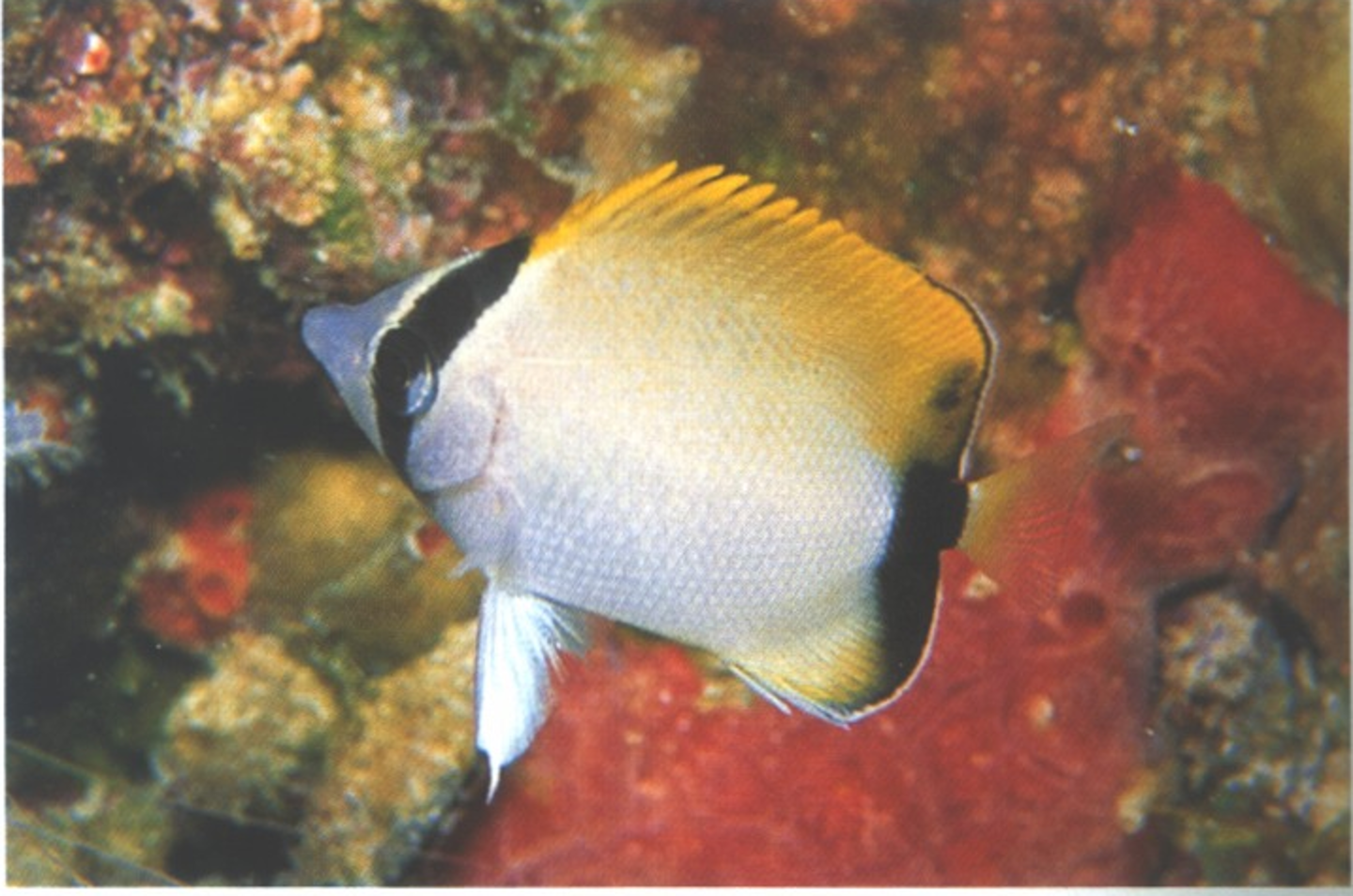
JUVENILE: 2. Black bar on rear anal fin and base of tail. 3. Very young have small black spot on rear dorsal fin.
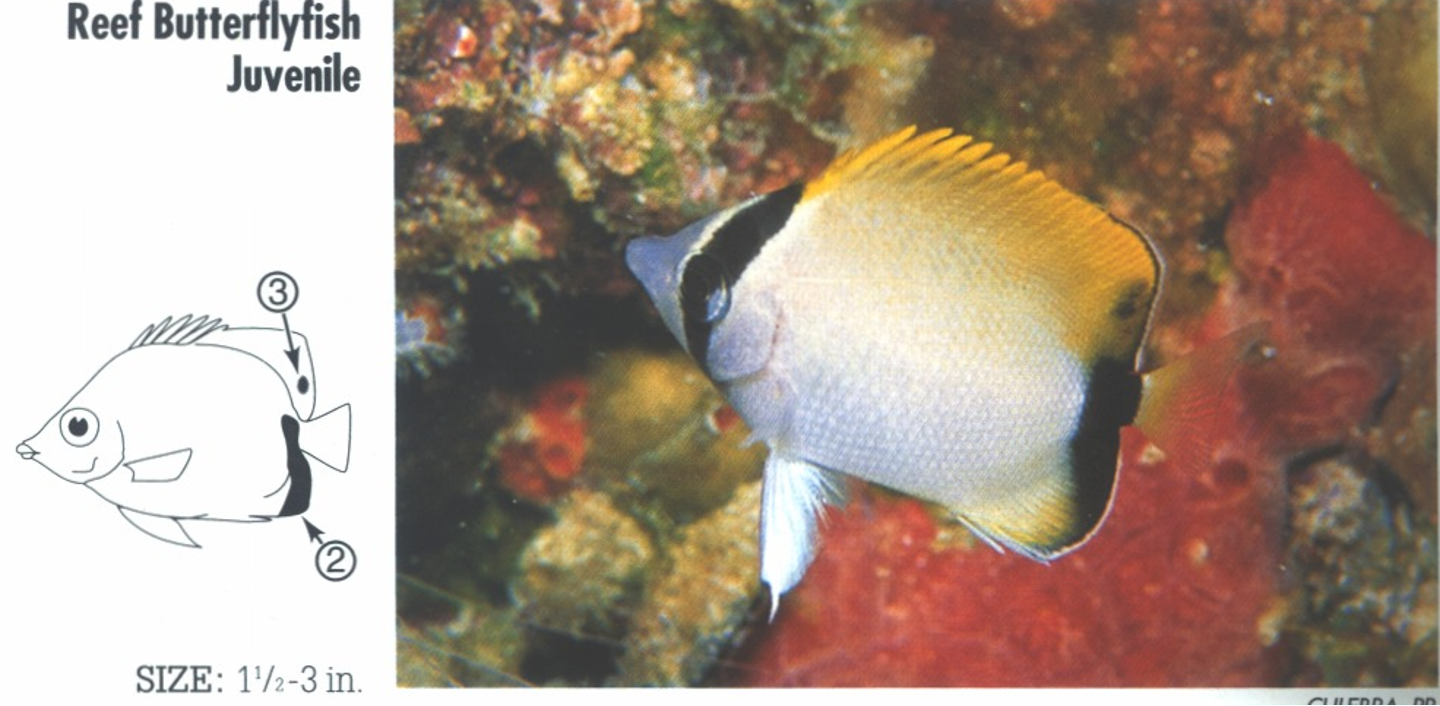
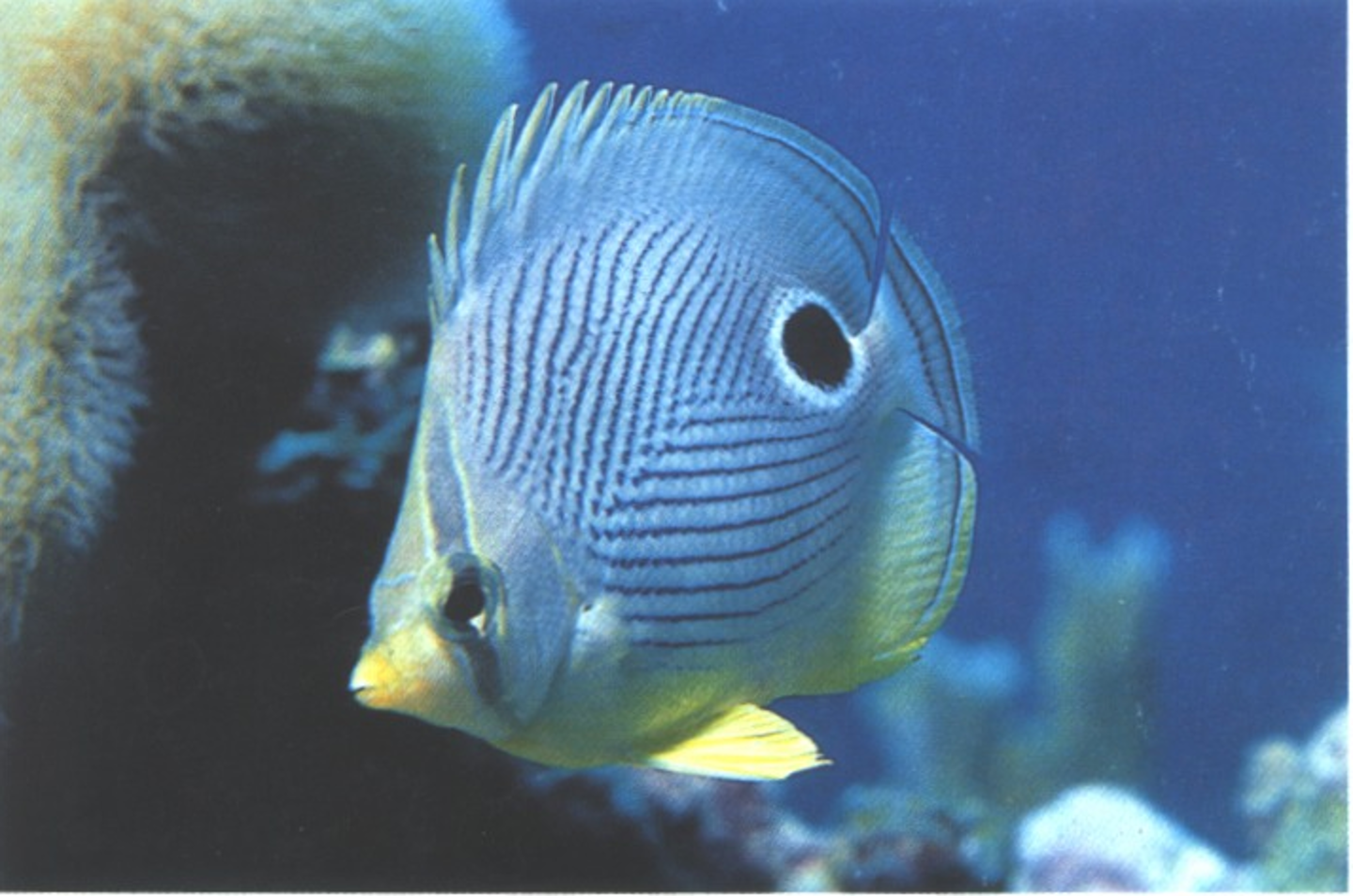
1. Black spot, ringed in white, on rear body near upper base of tail.
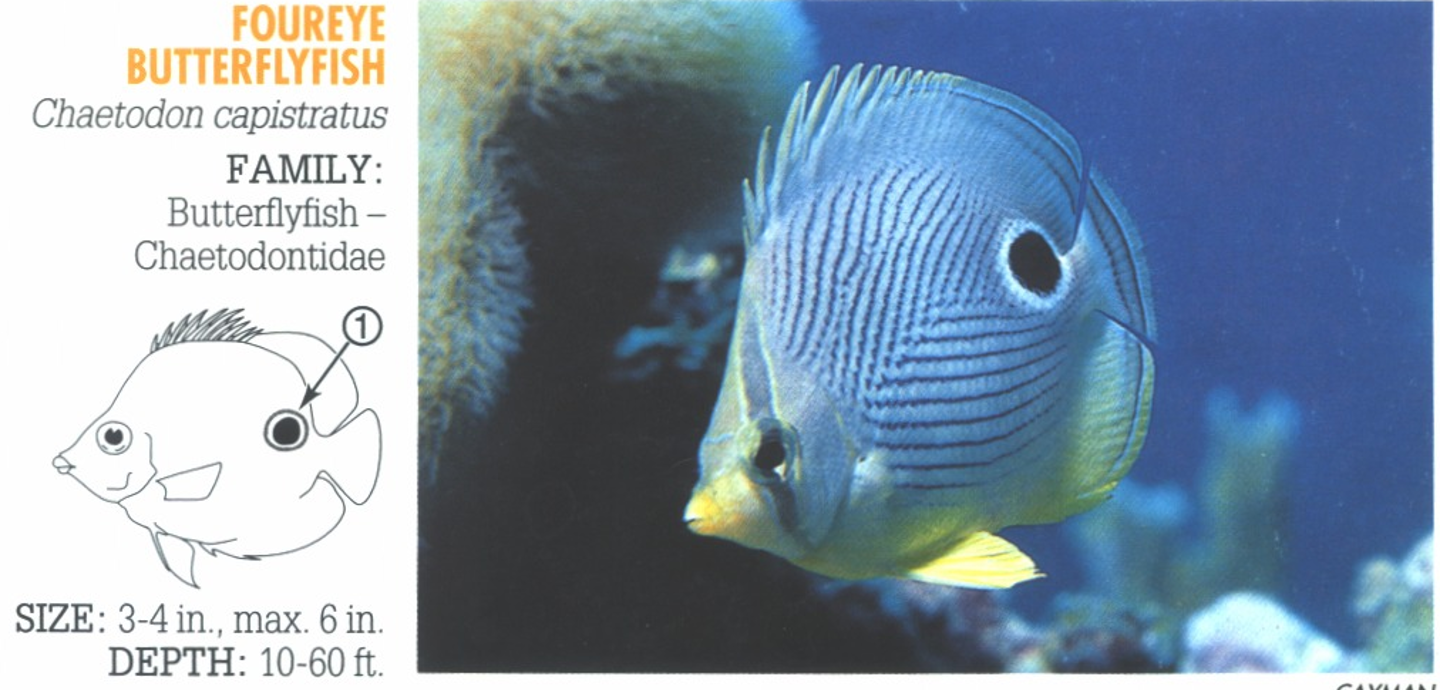
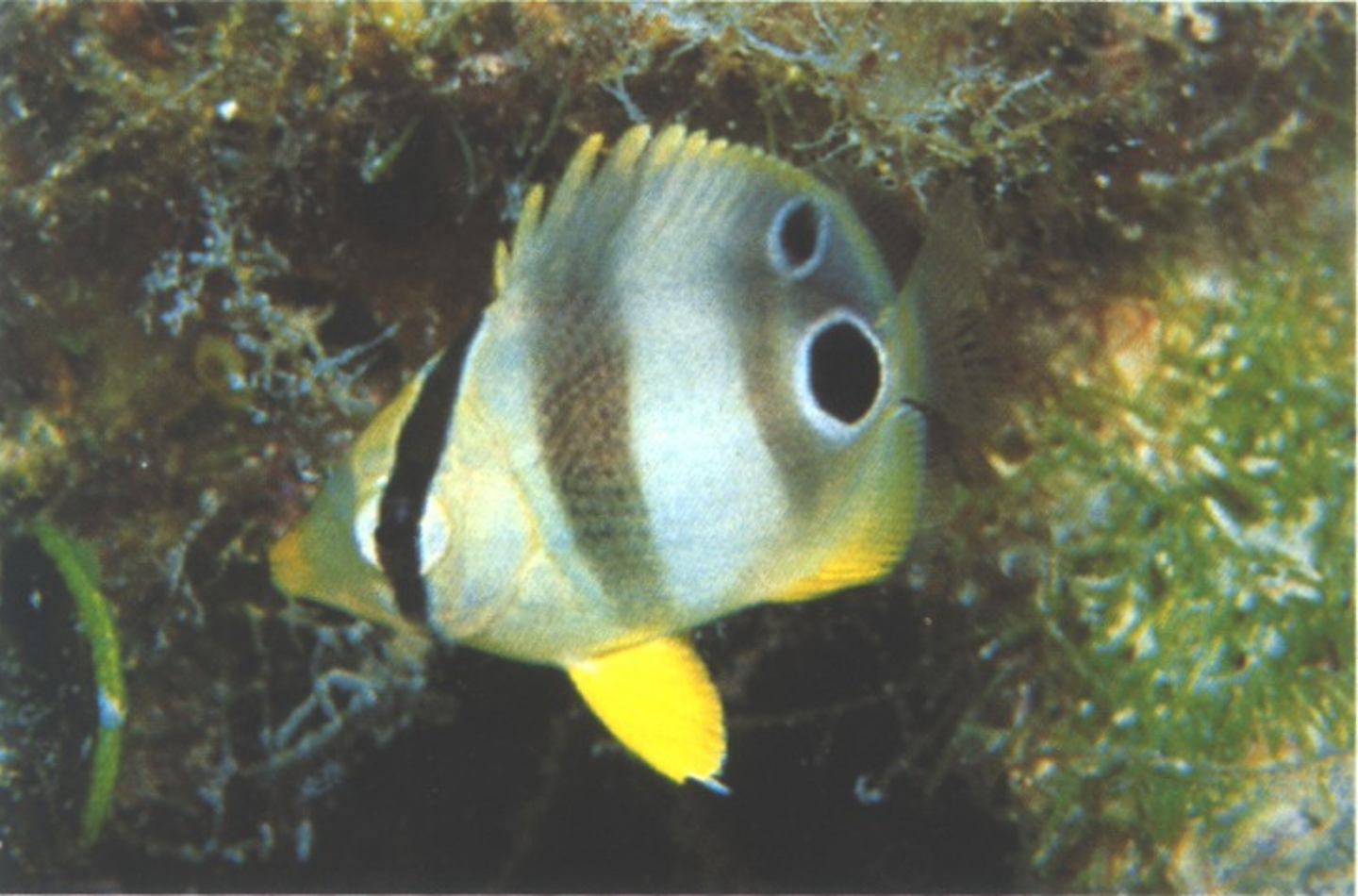
JUVENILE: 2. Two wide, dusky body bars. 3. Very young have second, smaller black spot ocellated in white on rear dorsal above larger spot.
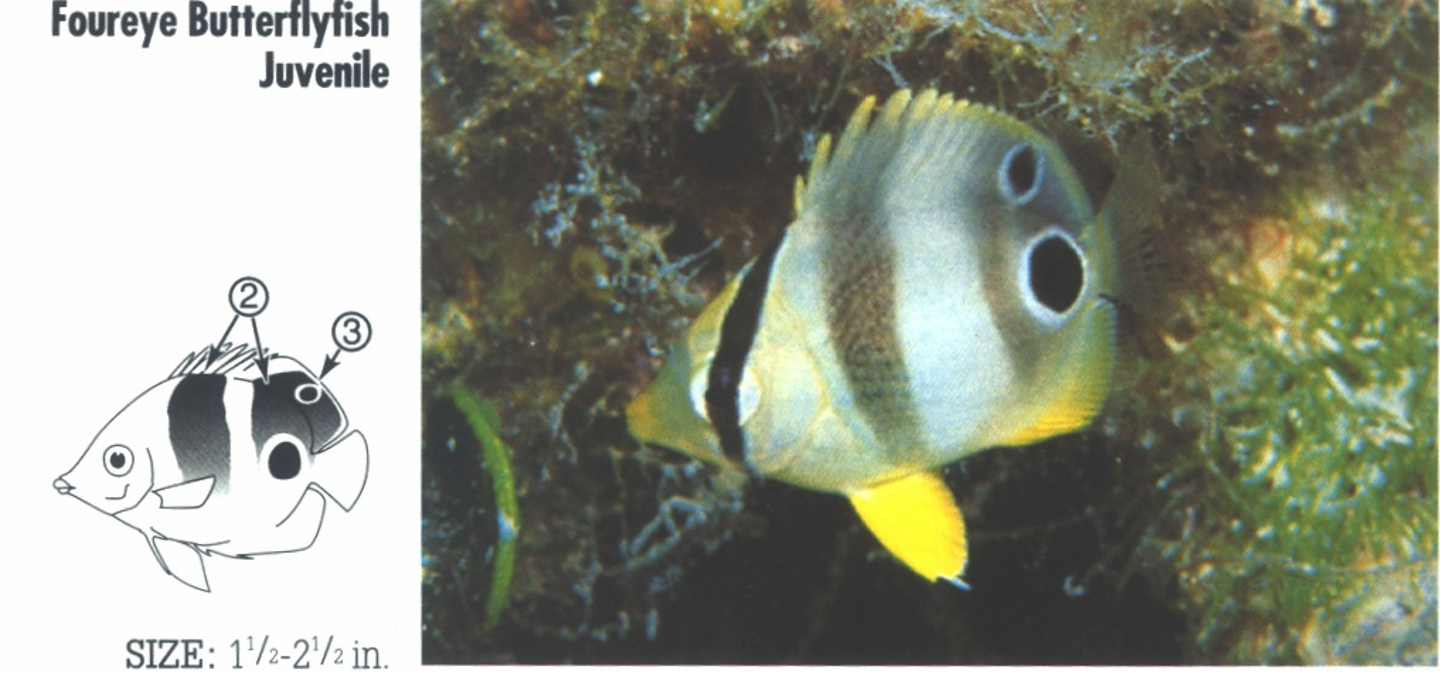
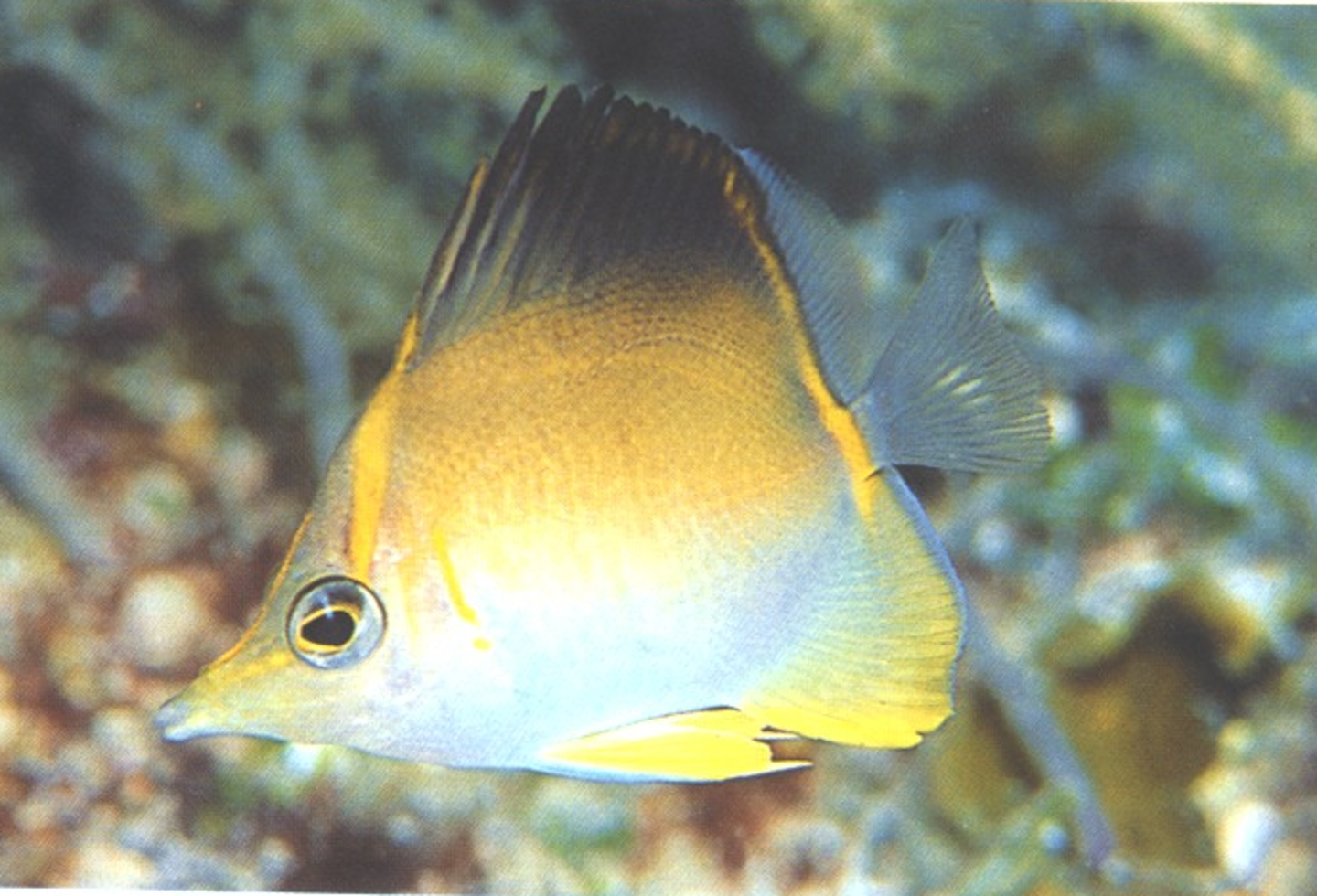
1. Long, pointed snout. 2. Dusky to yellow bar runs from upper head across eye, but not below eye as in other butterflies.
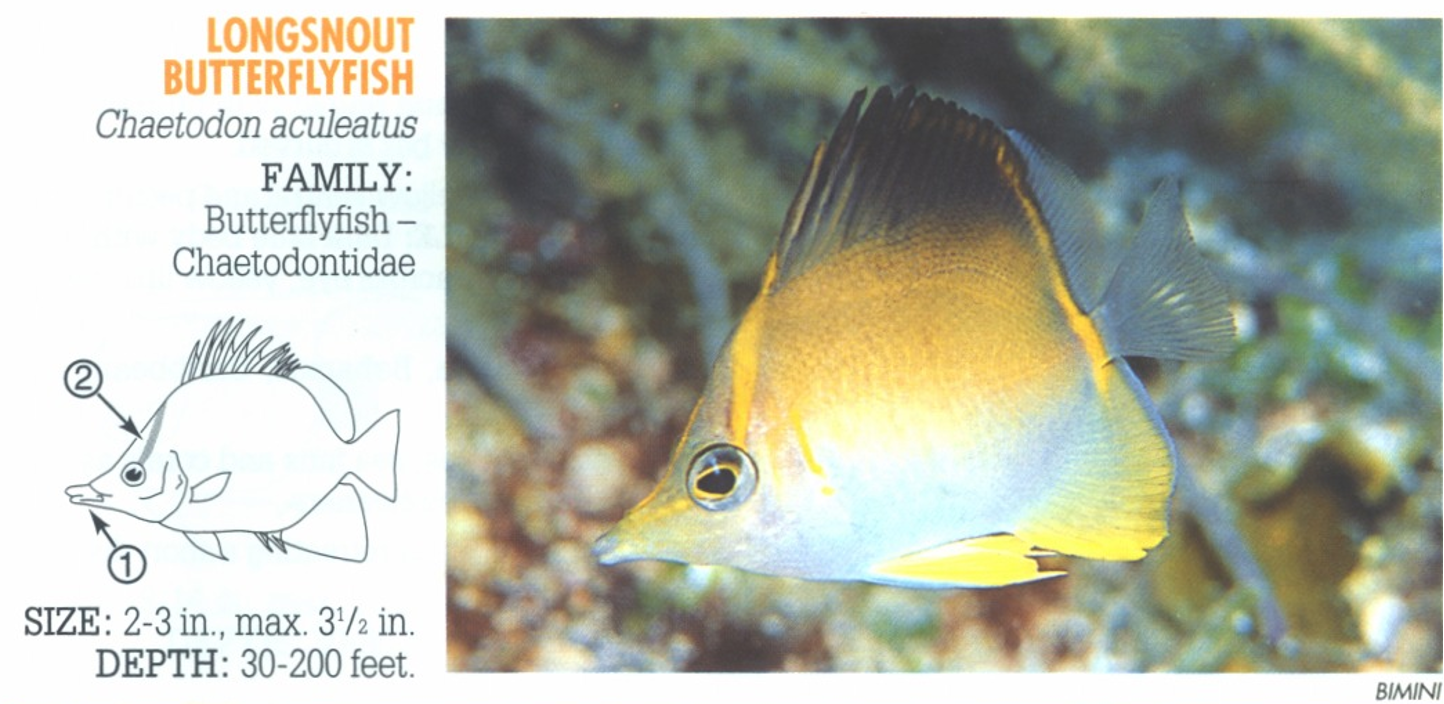
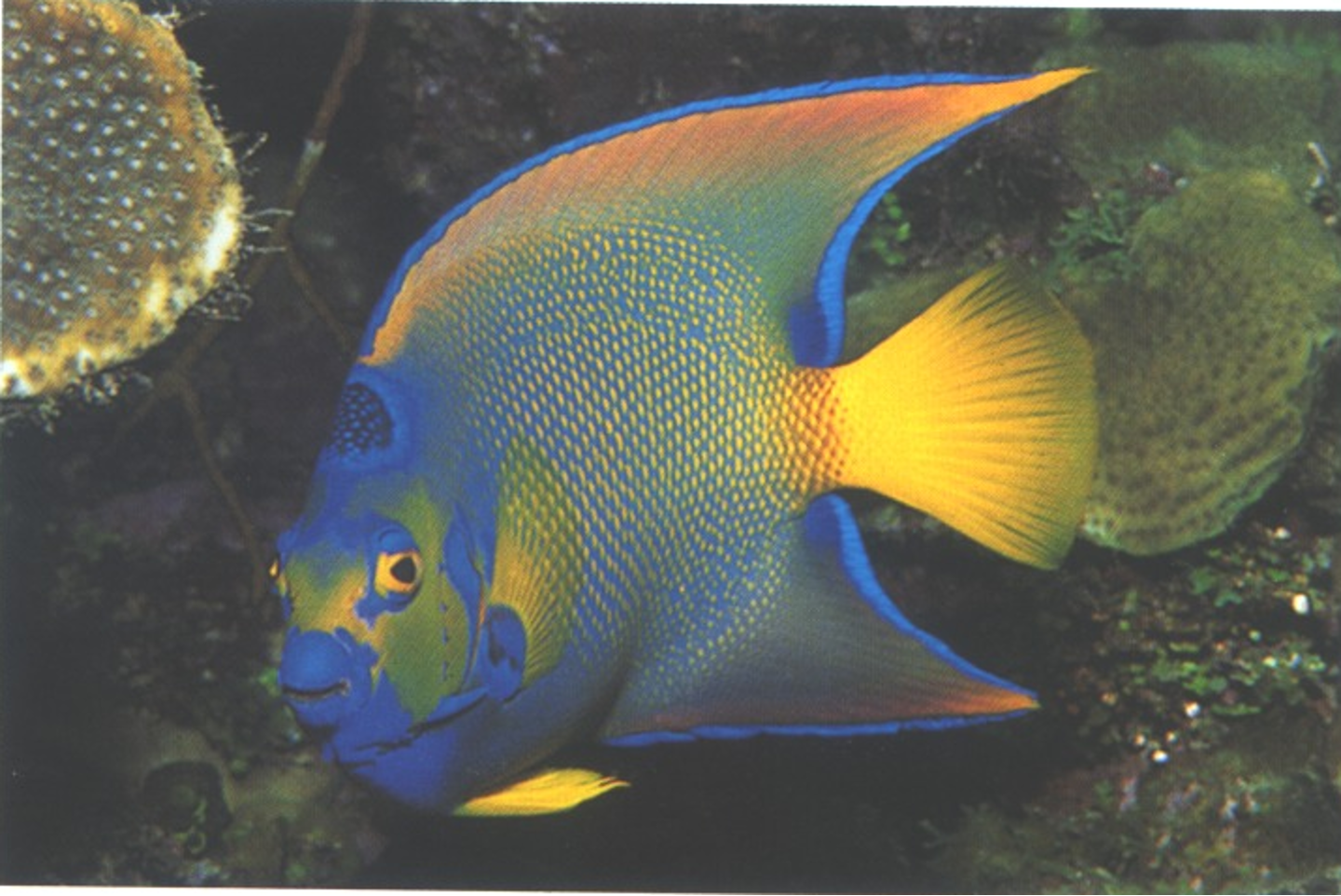
1. Dark blue spot on forehead, speckled and ringed with brilliant blue, forms the “crown.” 2. Tail yellow.
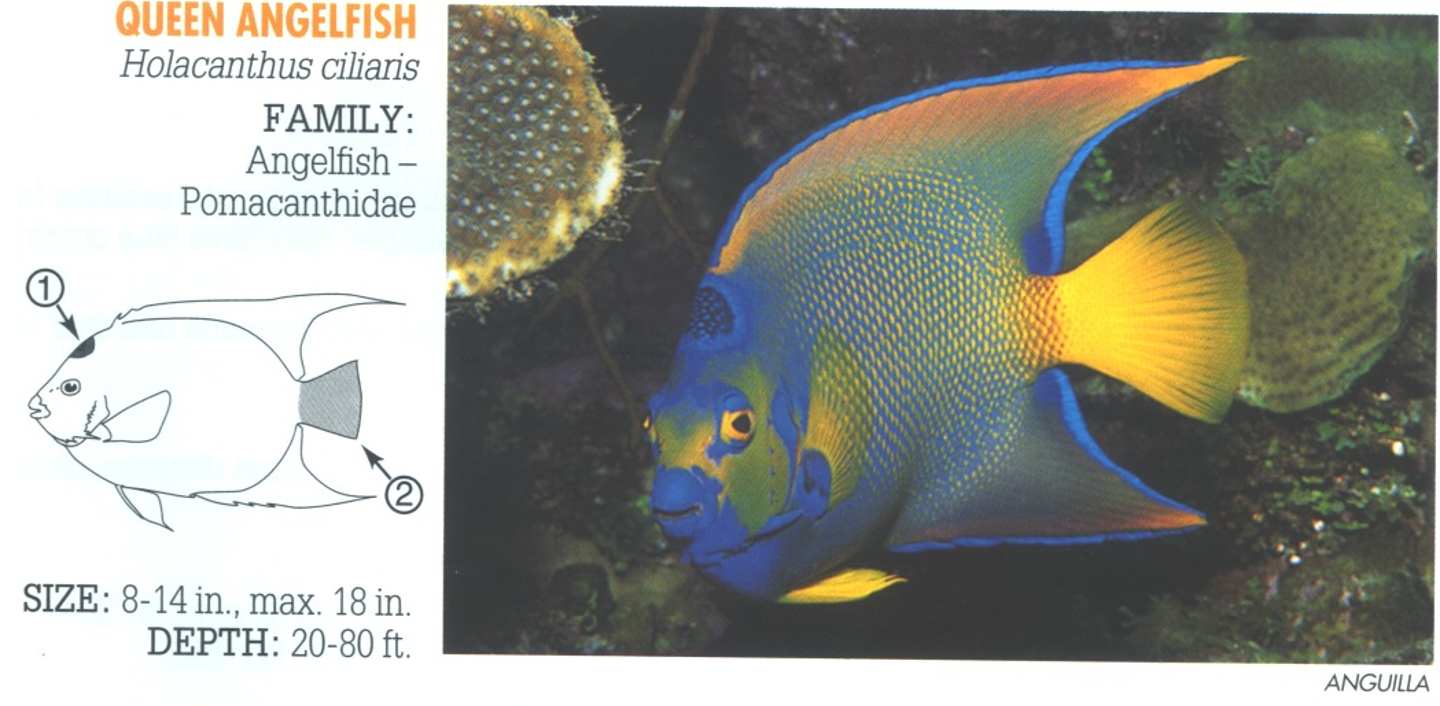
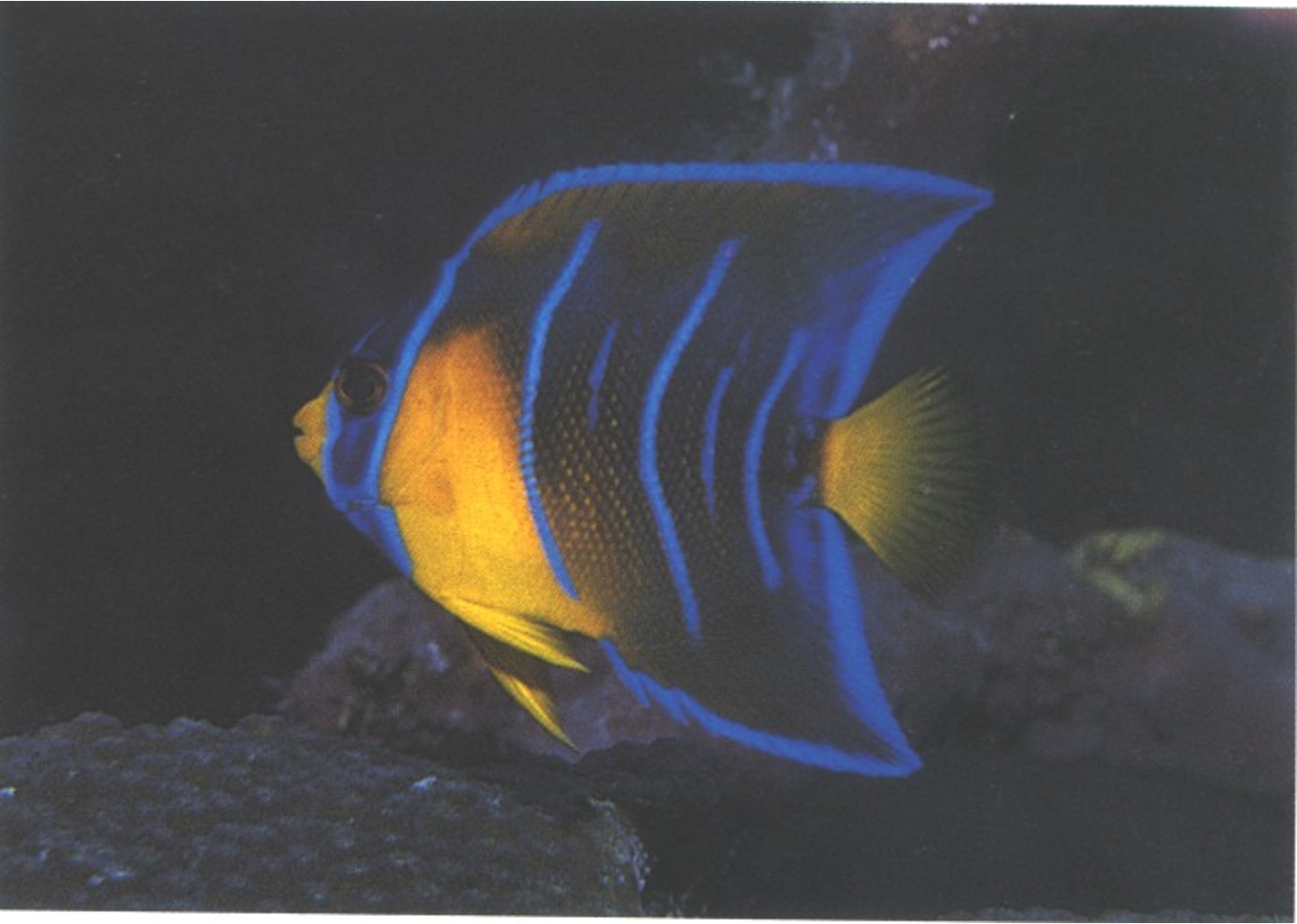
Juvenile: 3. Second blue body bar is curved.
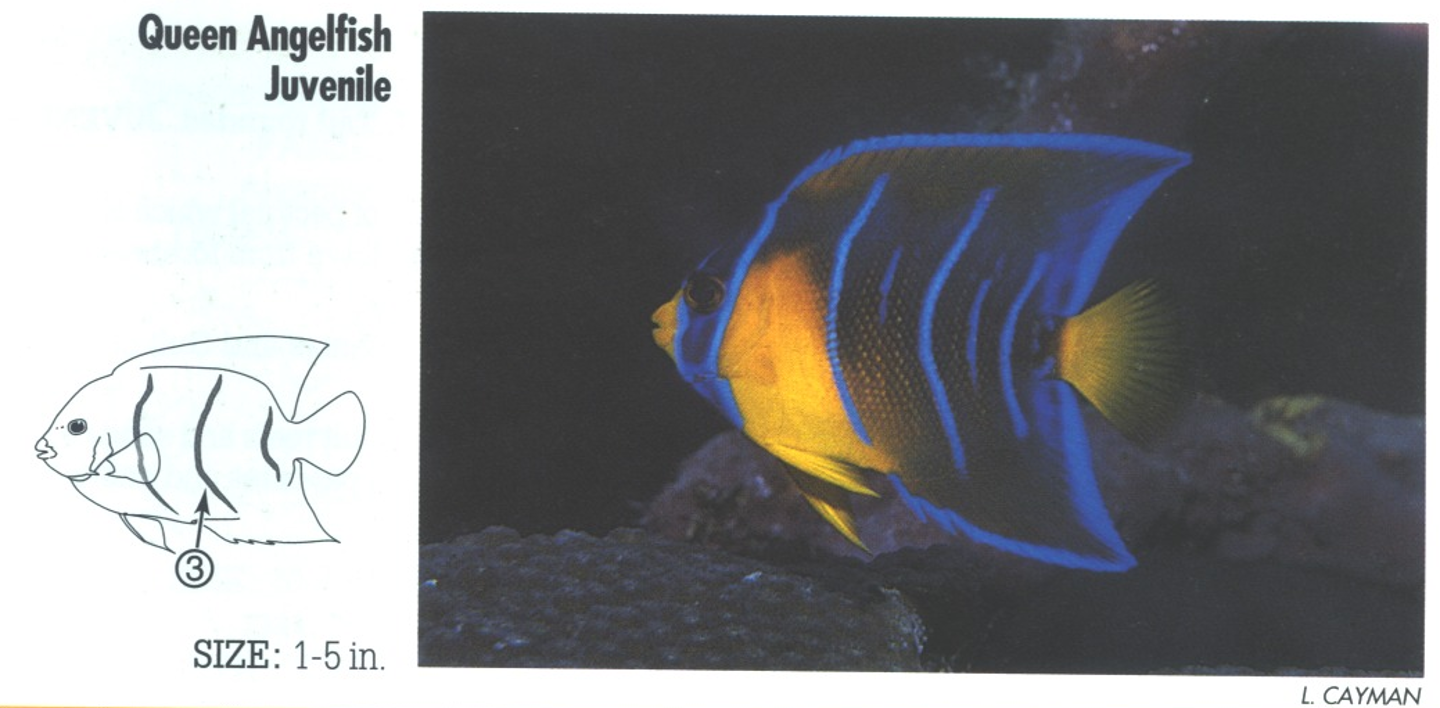
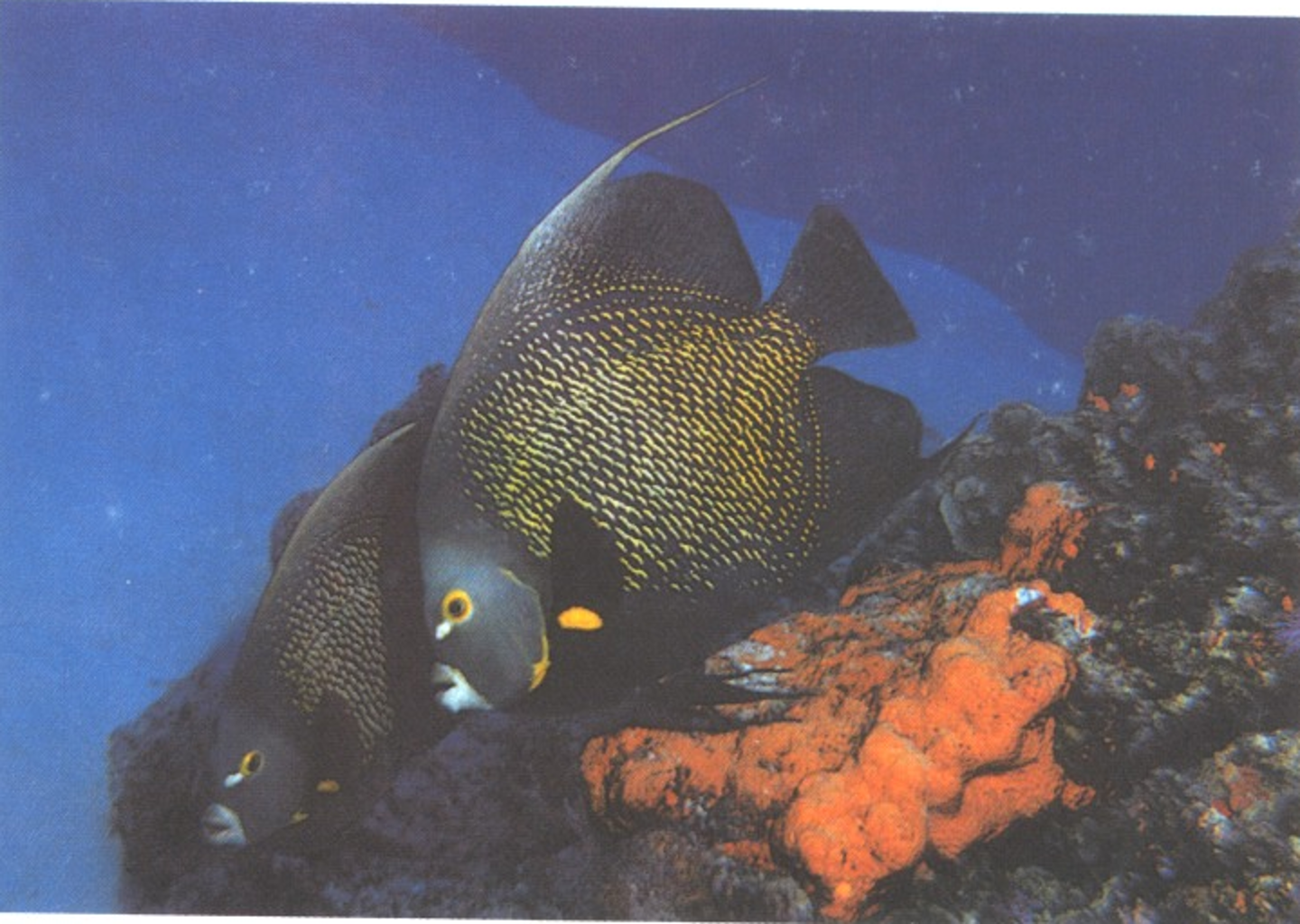
1. Tail rounded.
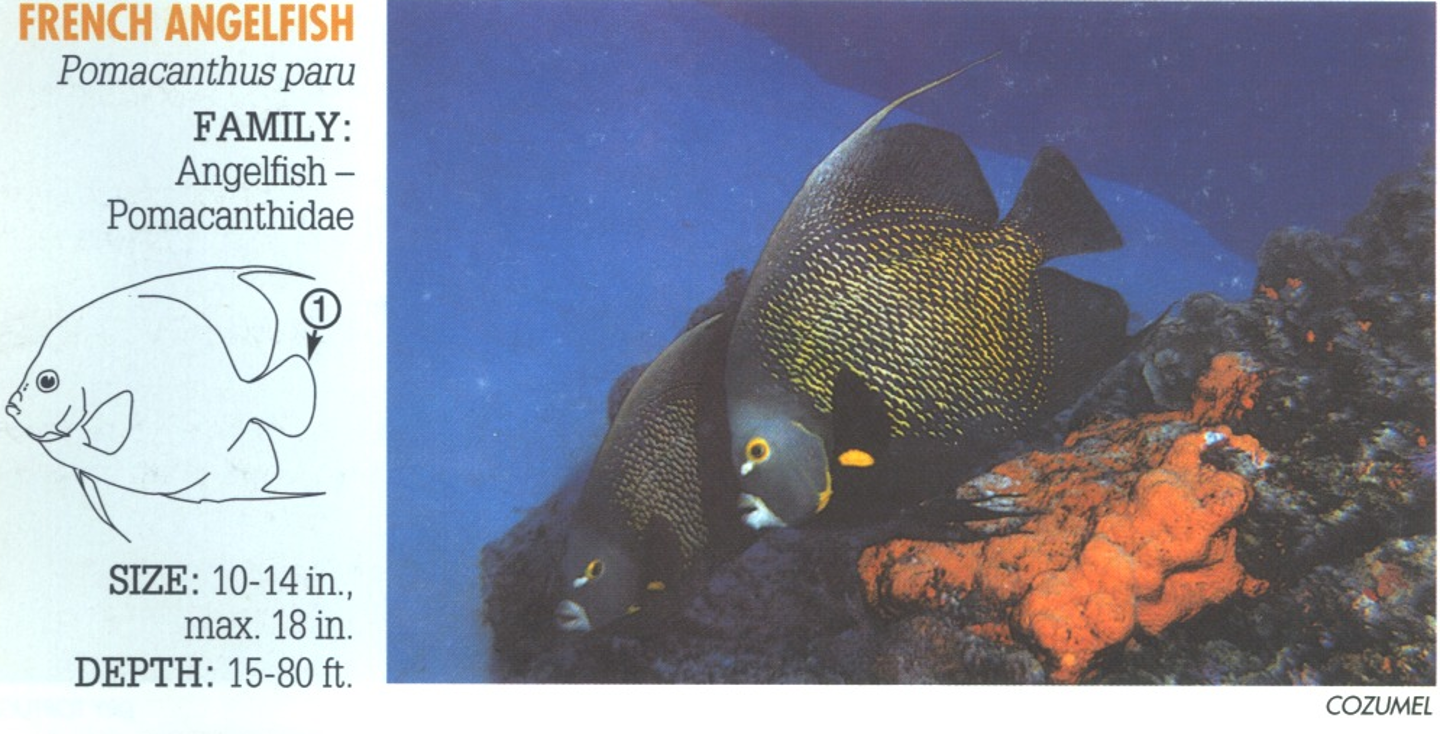
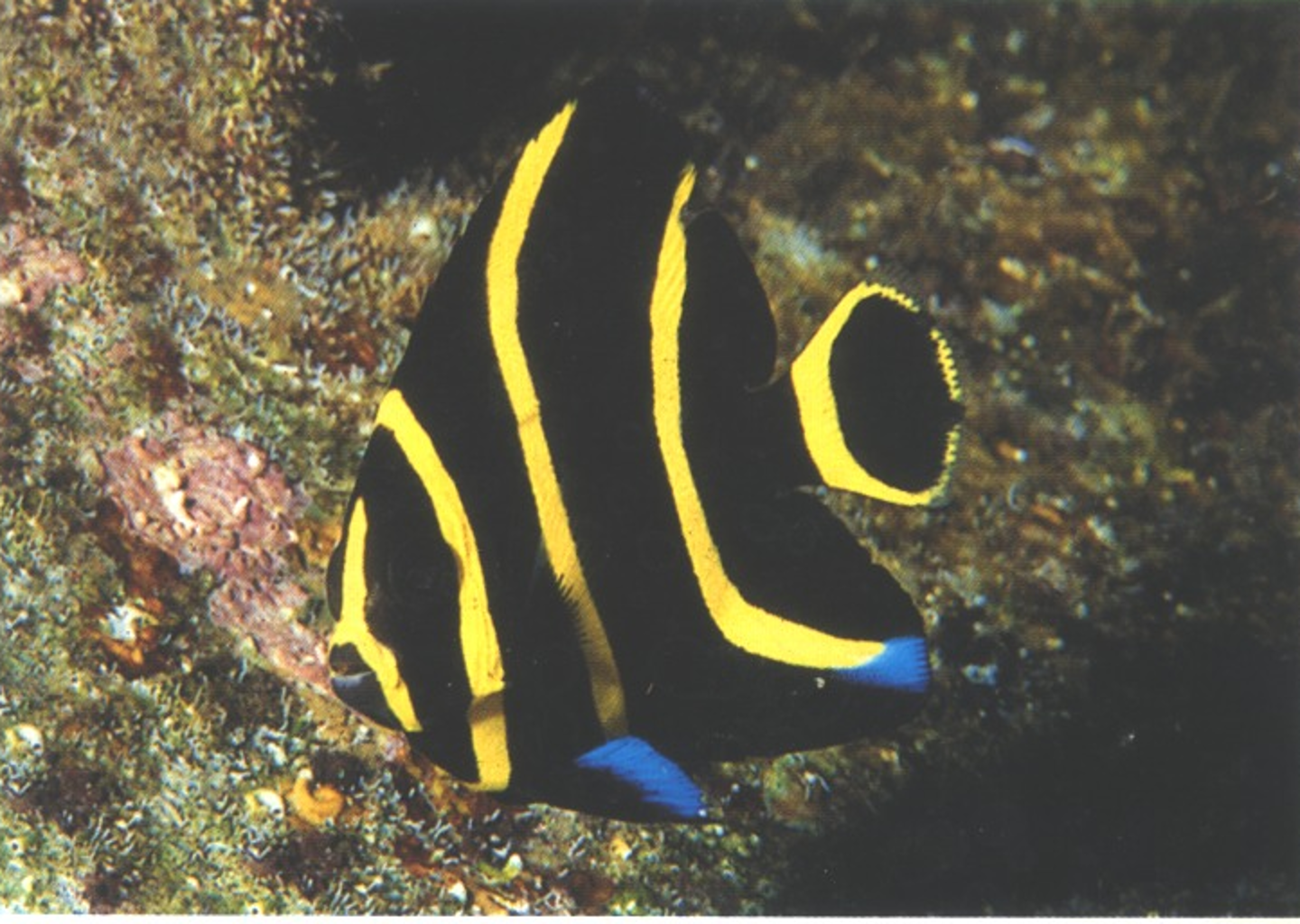
JUVENILE: 2. Rounded tail with yellow border forms an oval
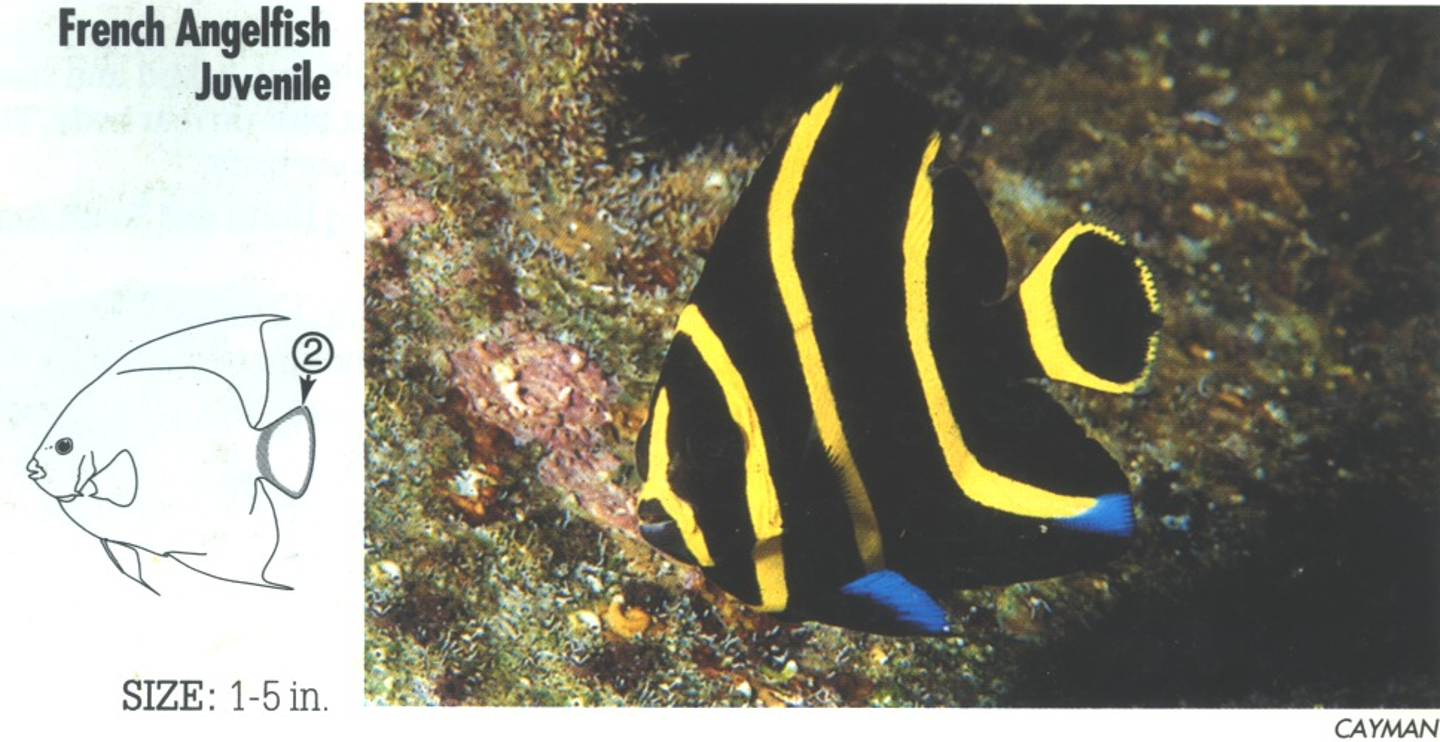
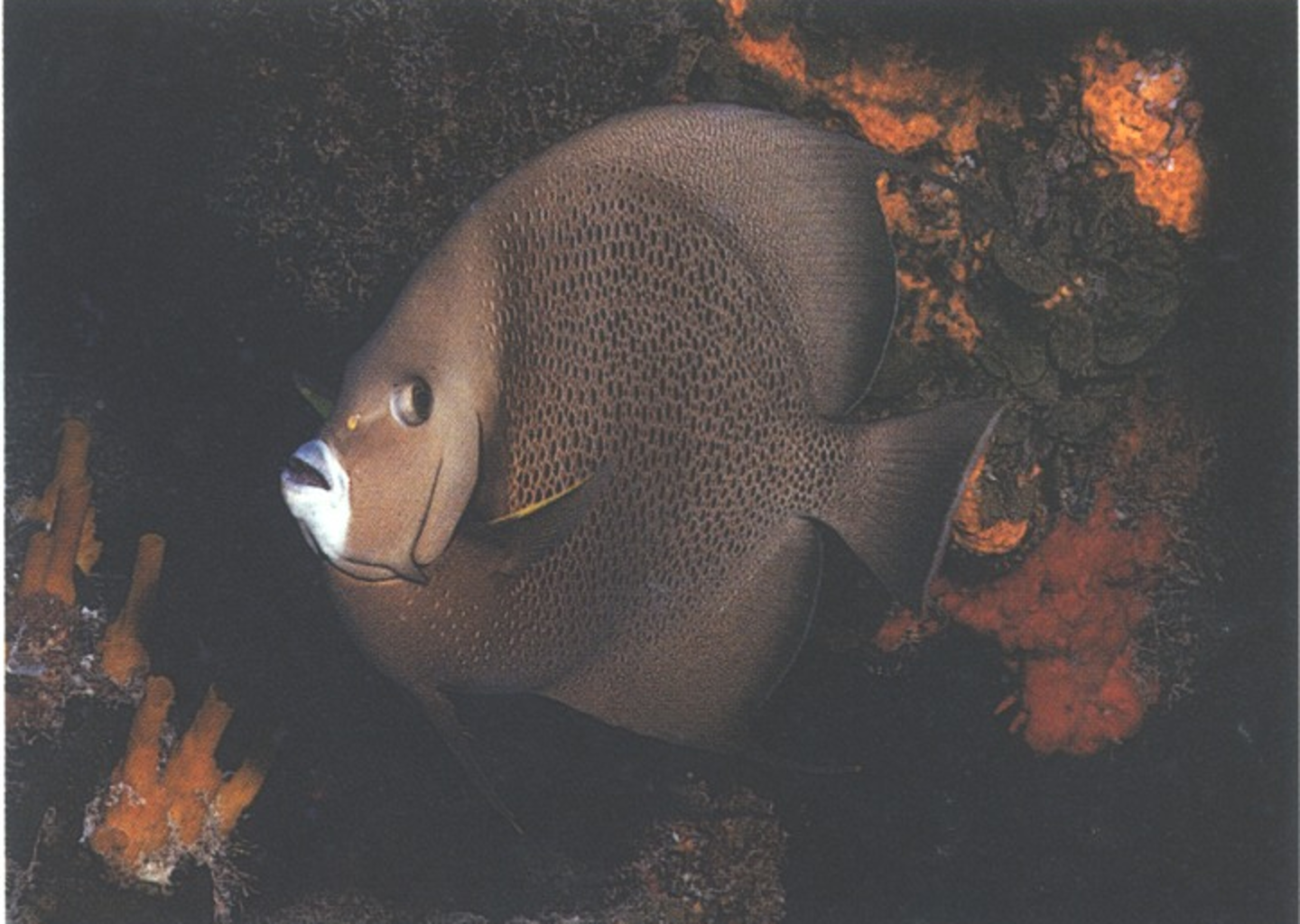
1. Yellow inner face of pectoral fin. 2. Square-cut tail.
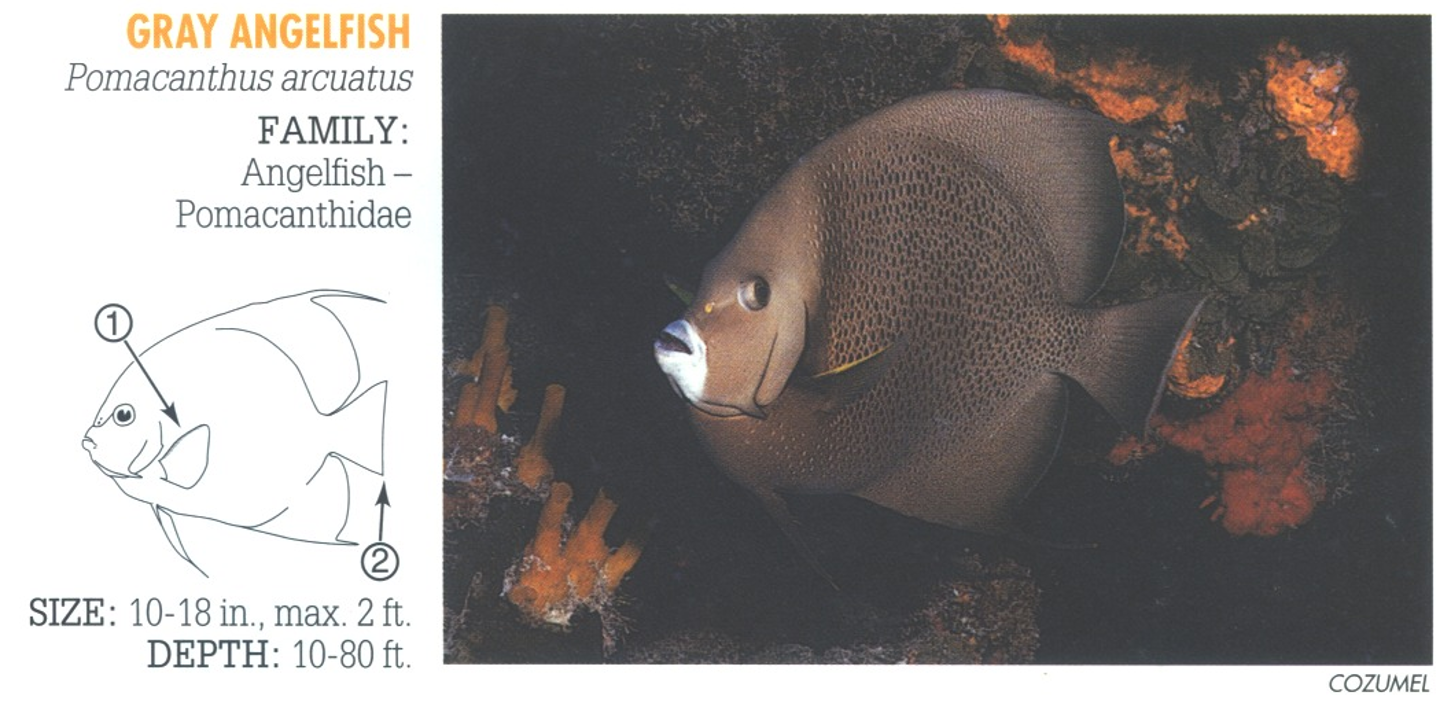

JUVENILE: 3. Square-cut tail with white to transparent margin.
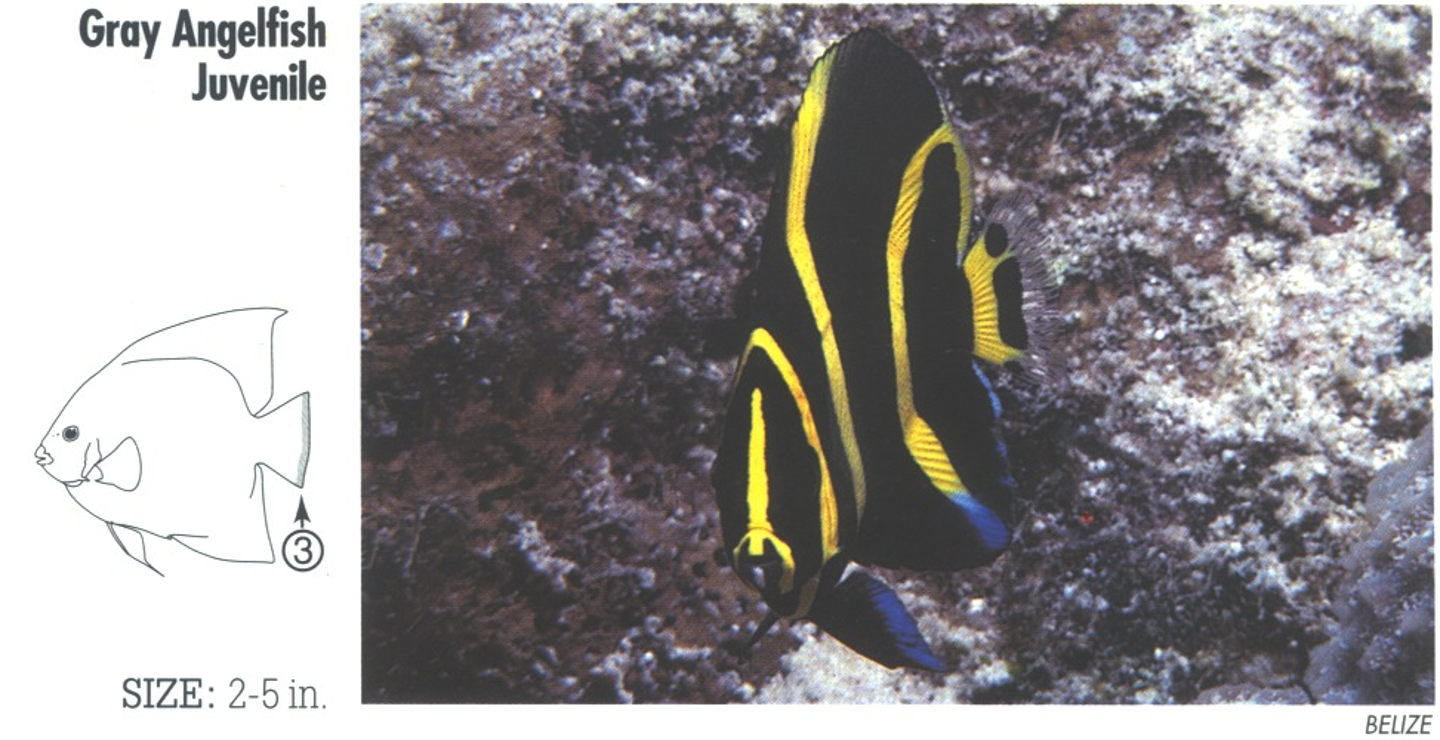

1. Yellow to yellow-orange forebody and tail. 2. Mid and rear body black.
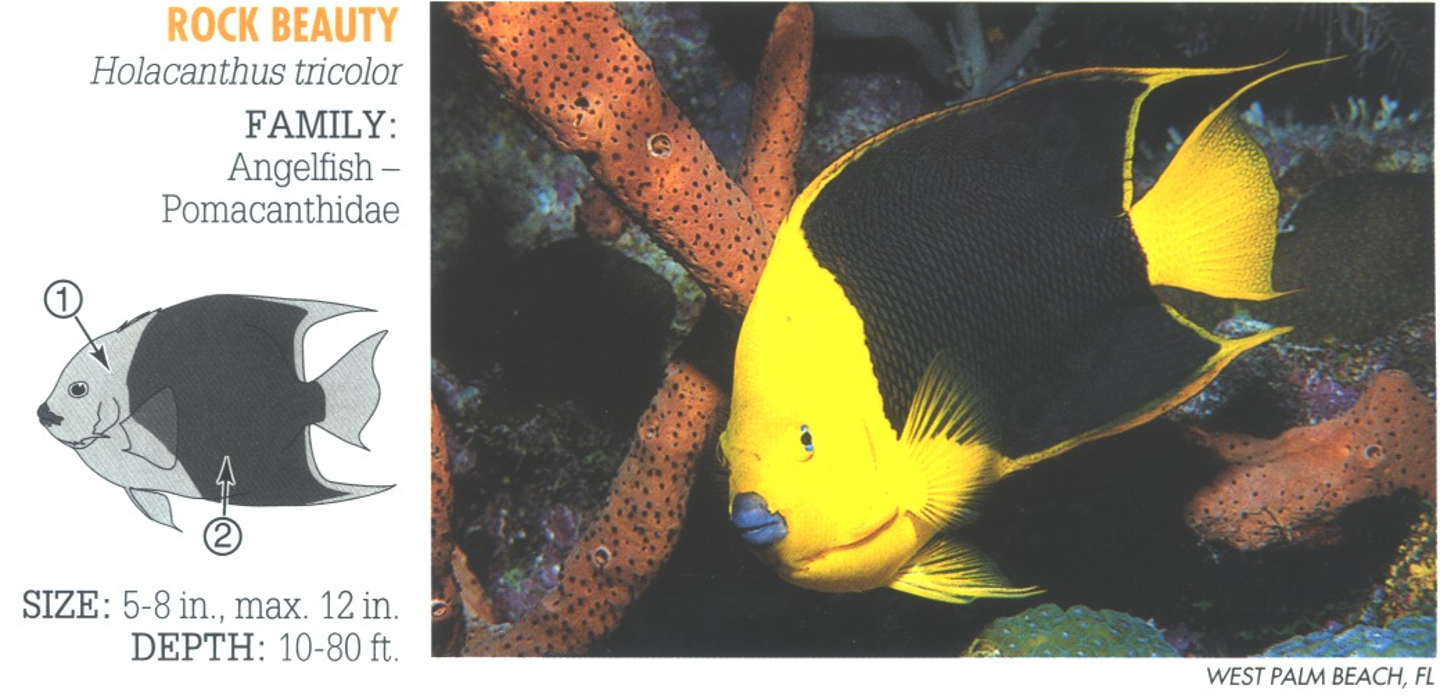
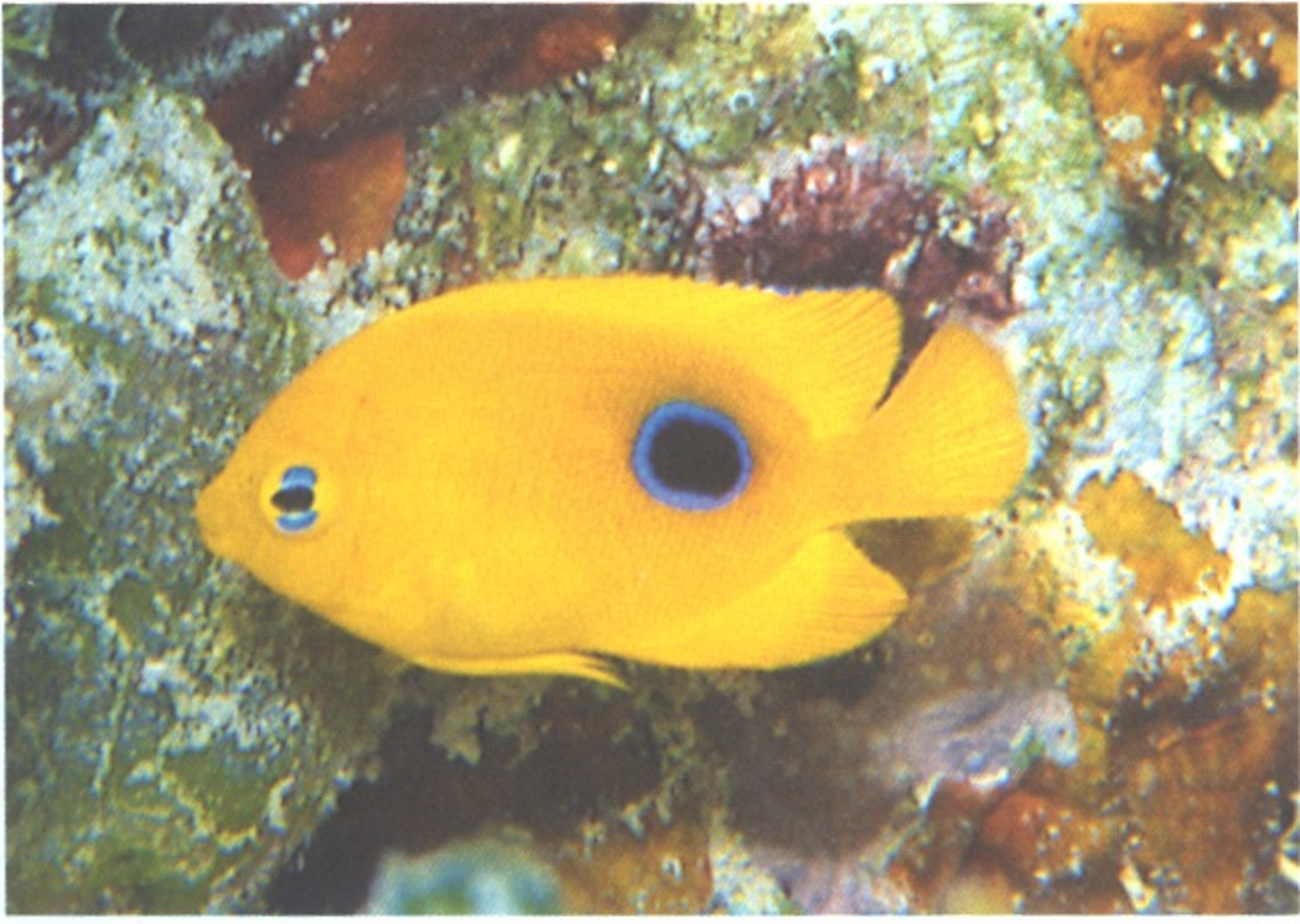
JUVENILE: 3. Very young have a black spot ringed in brilliant blue on rear body.
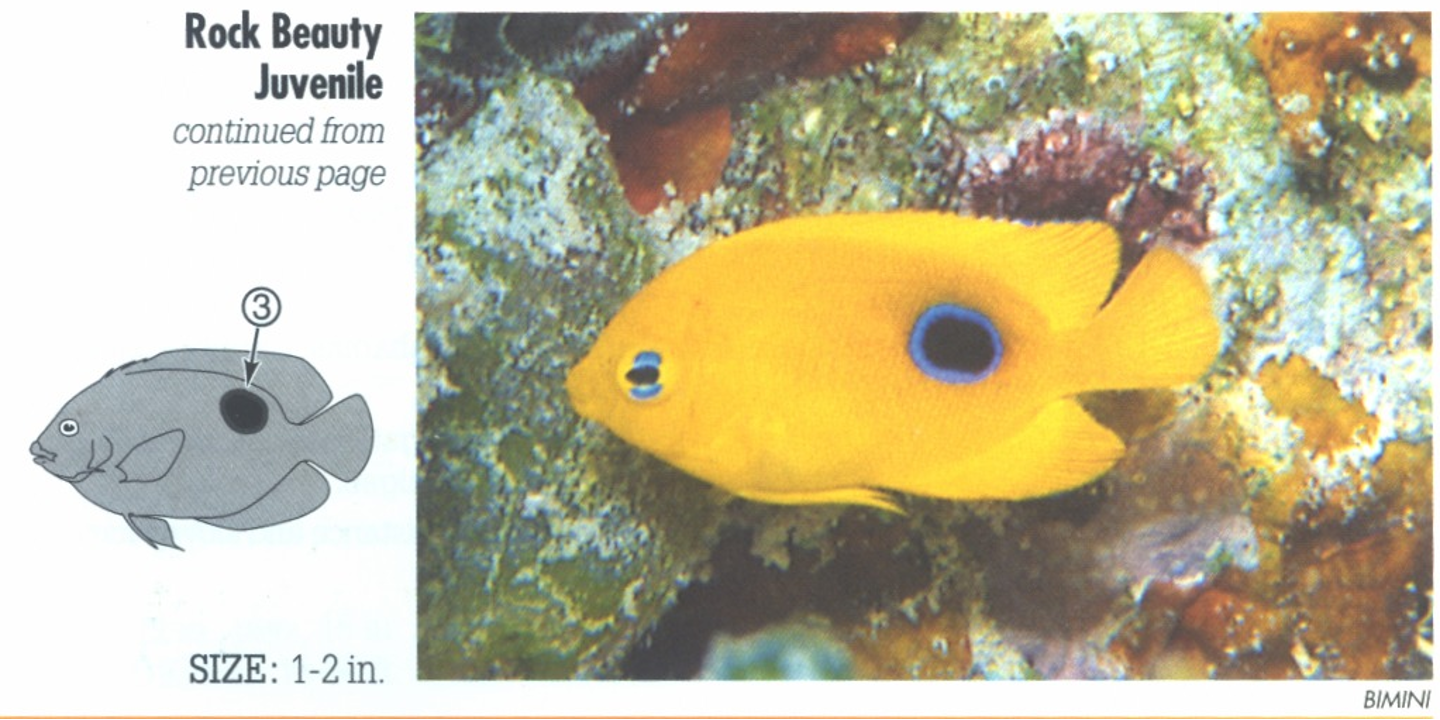

1. White or yellow spine on base of tail.
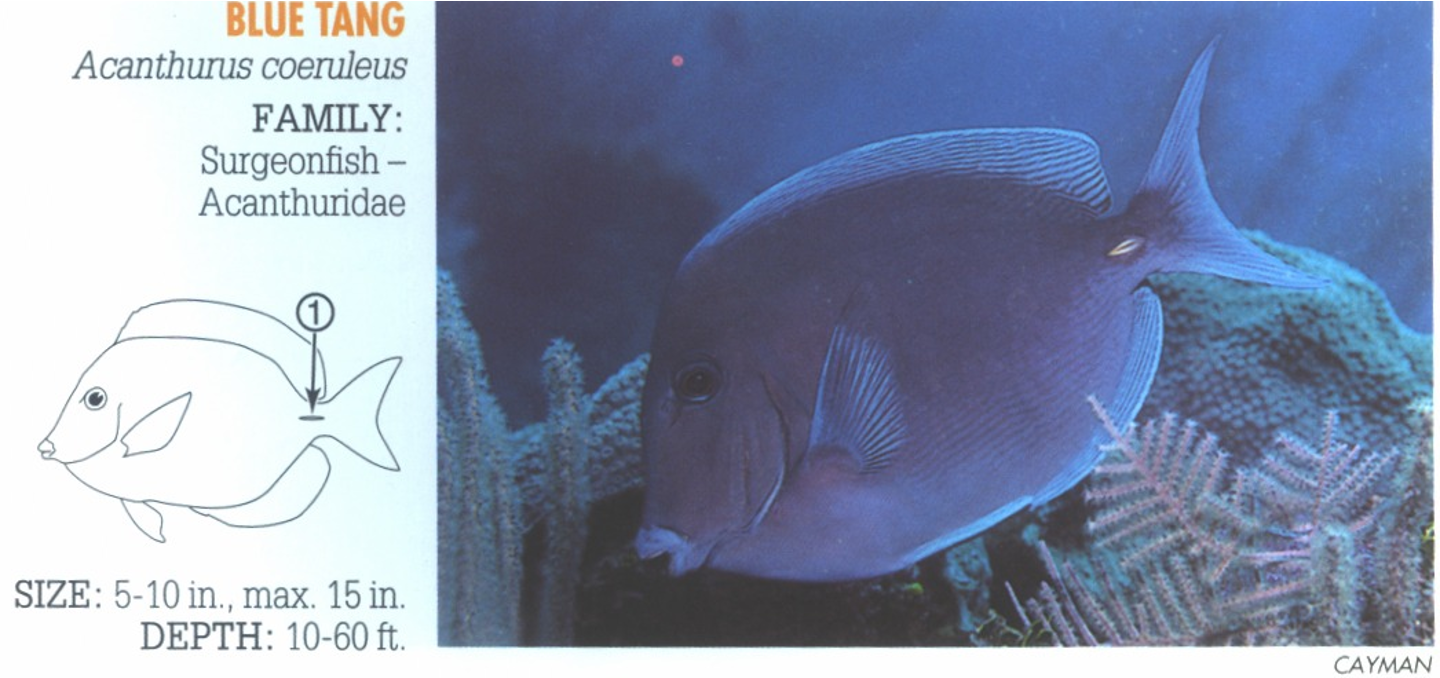
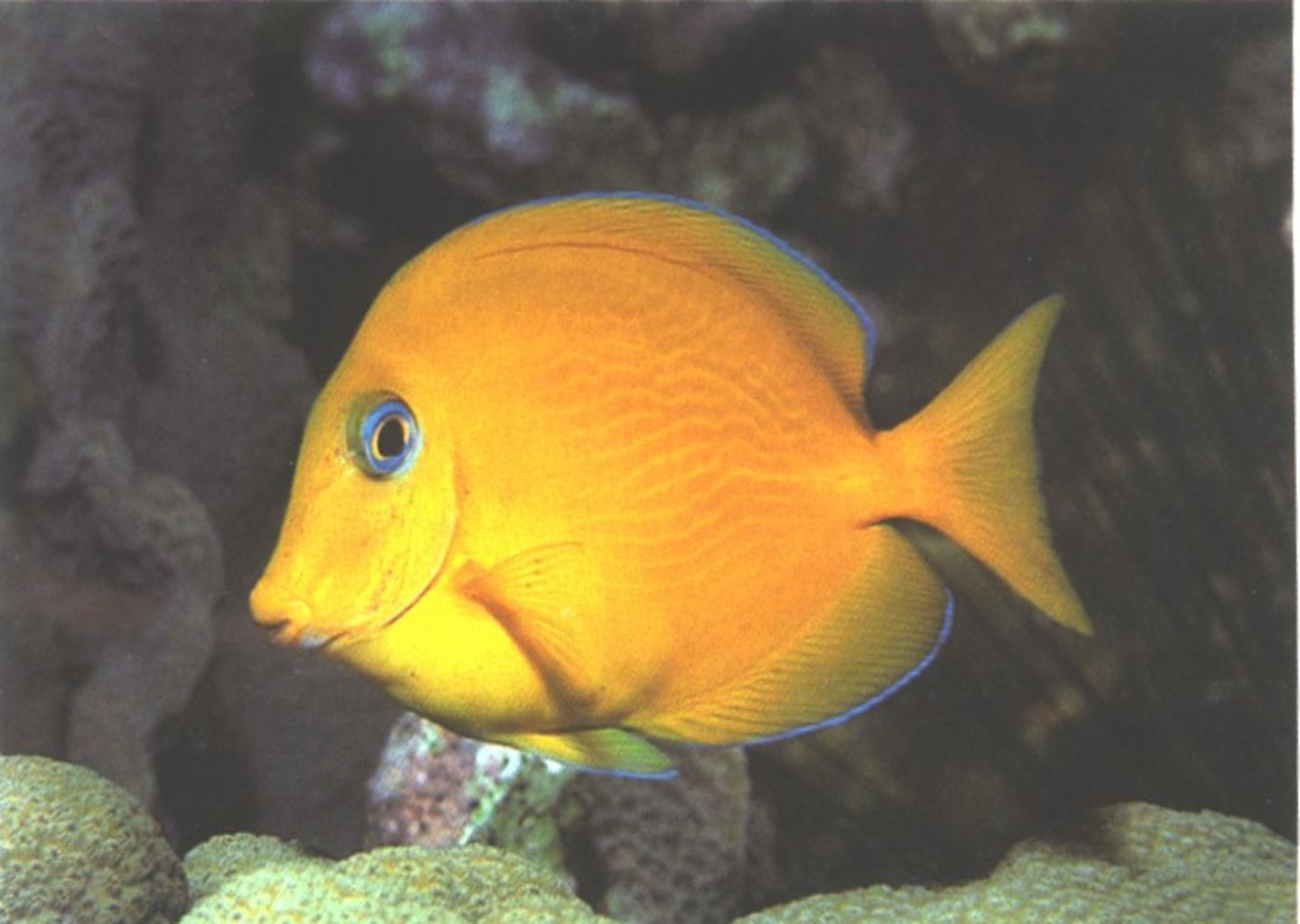
JUVENILE: Bright yellow overall. INTERMEDIATE: Blue head and body. 2. Yellow tail.


Uniform color with no body bars. Also has a dark phase.

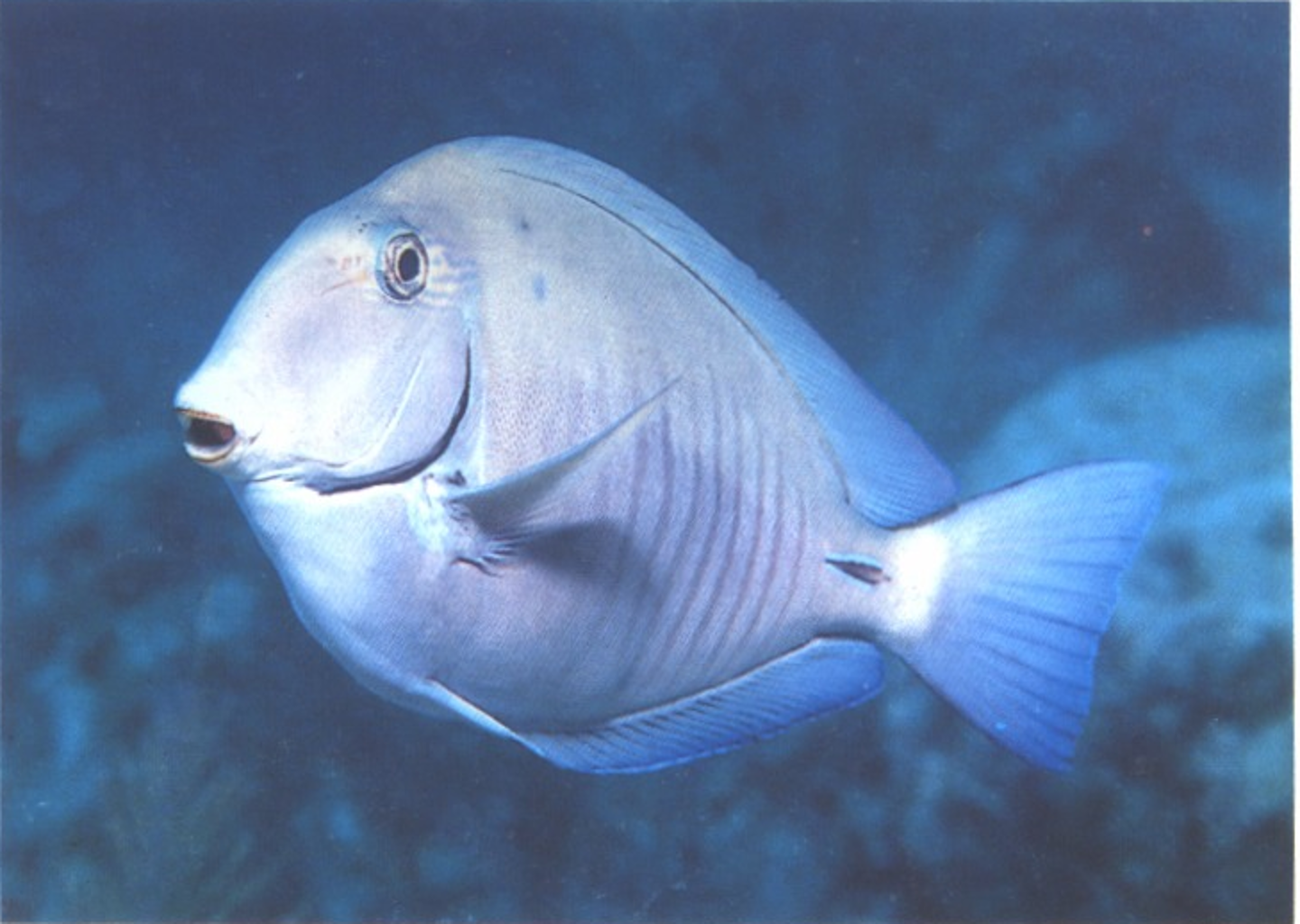
1. Always have body bars (10-12), although they may be quite faint.
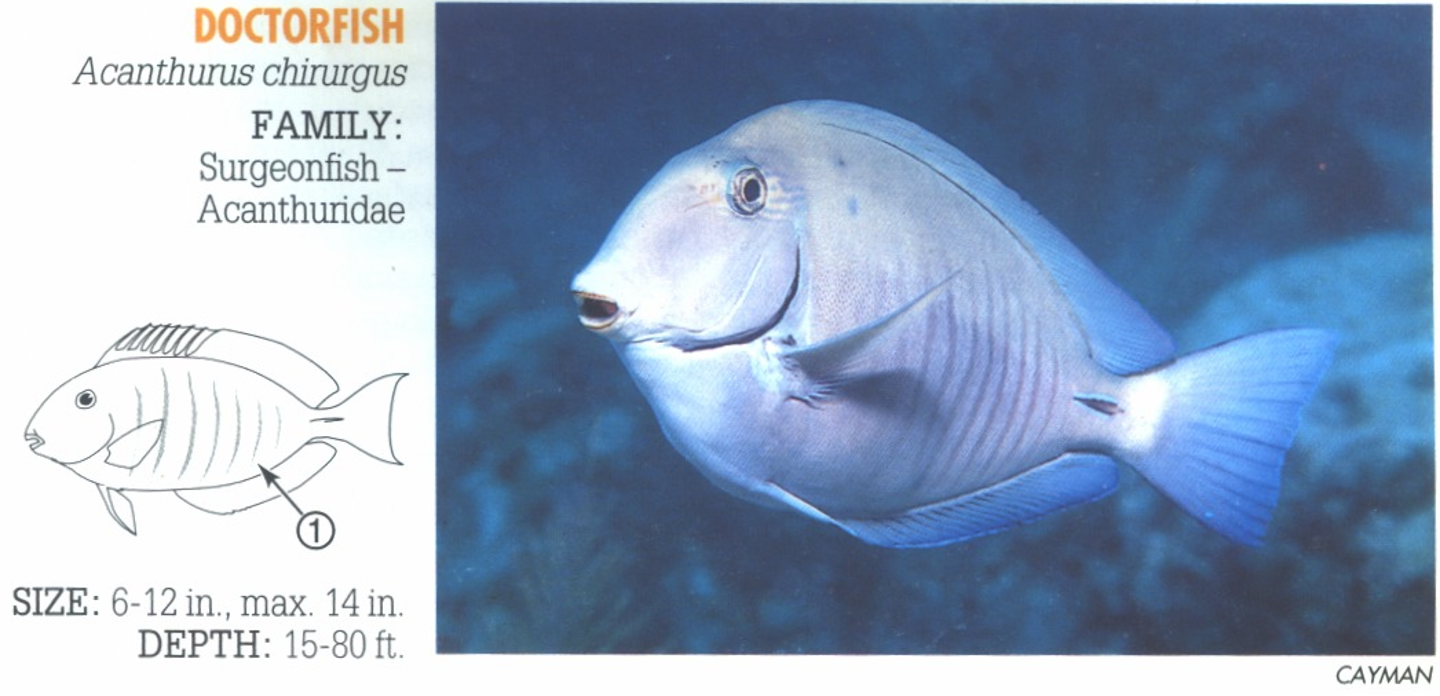
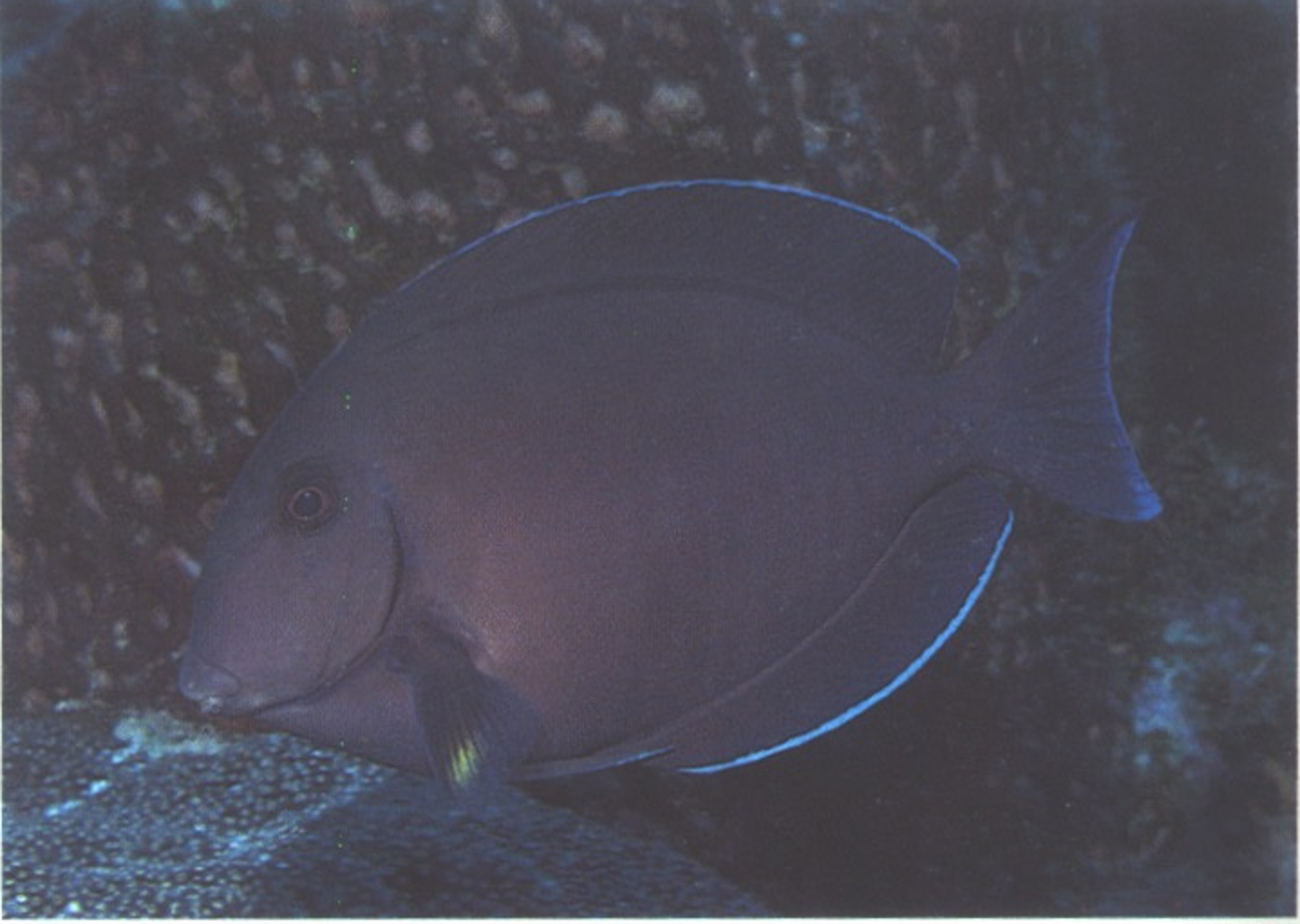
Obscure bars; dark color phase; no band base of tail.
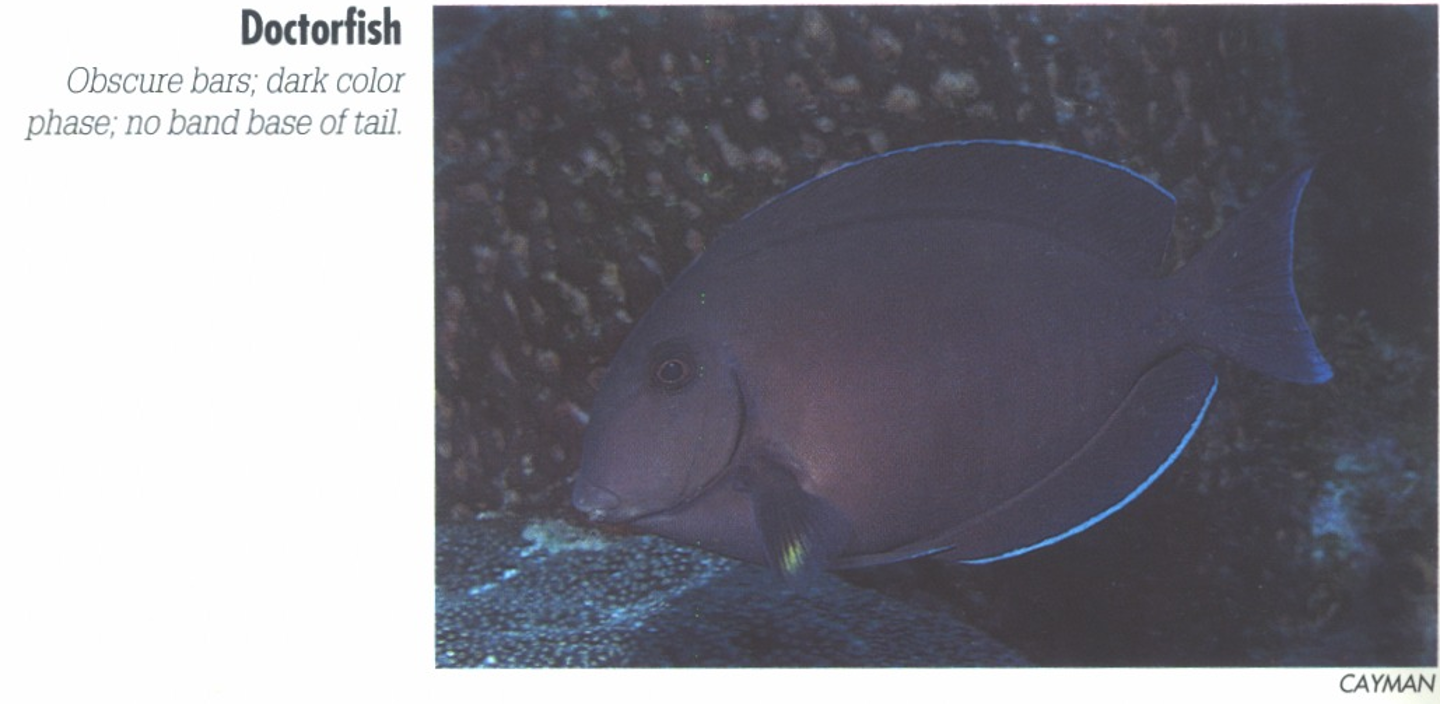
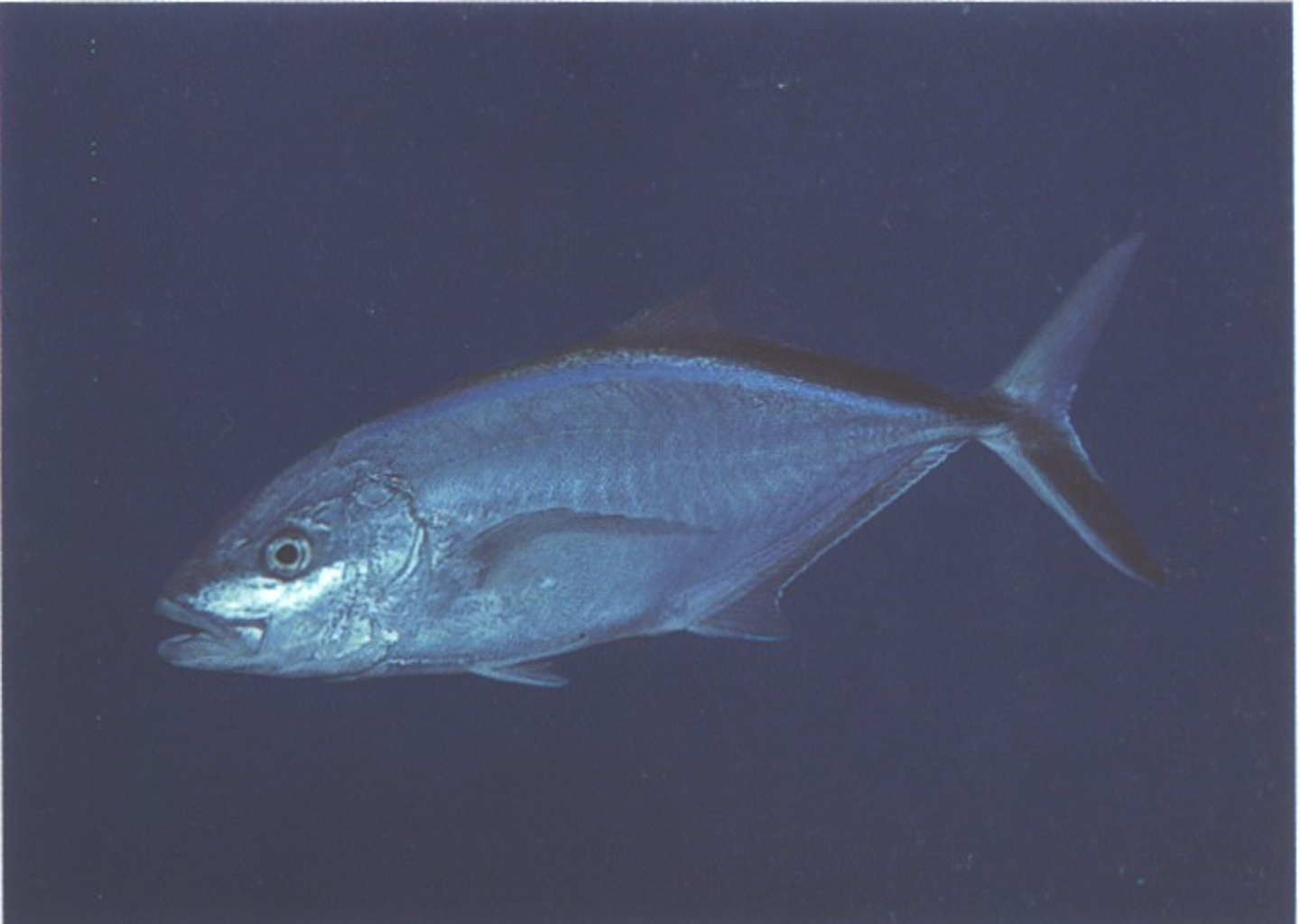
1. Bright blue-and-black border on back runs along dorsal fin and onto lower tail fin.
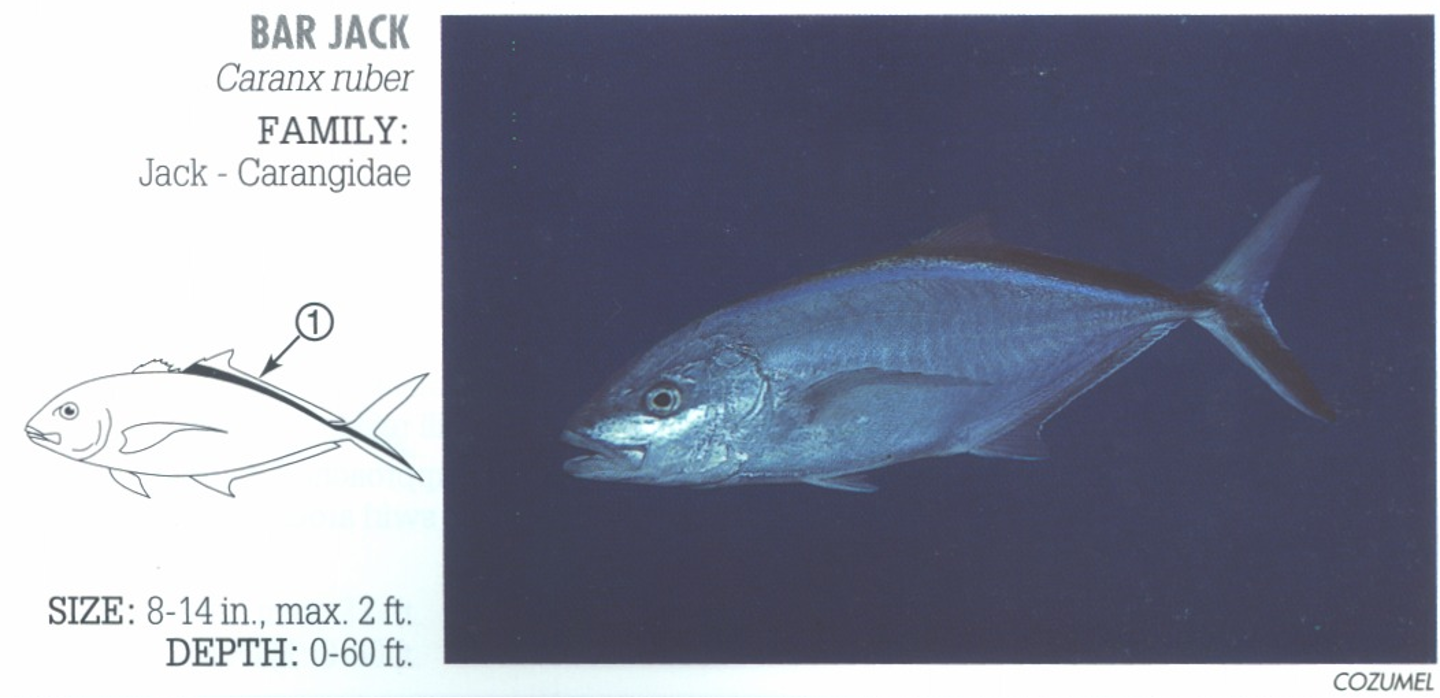
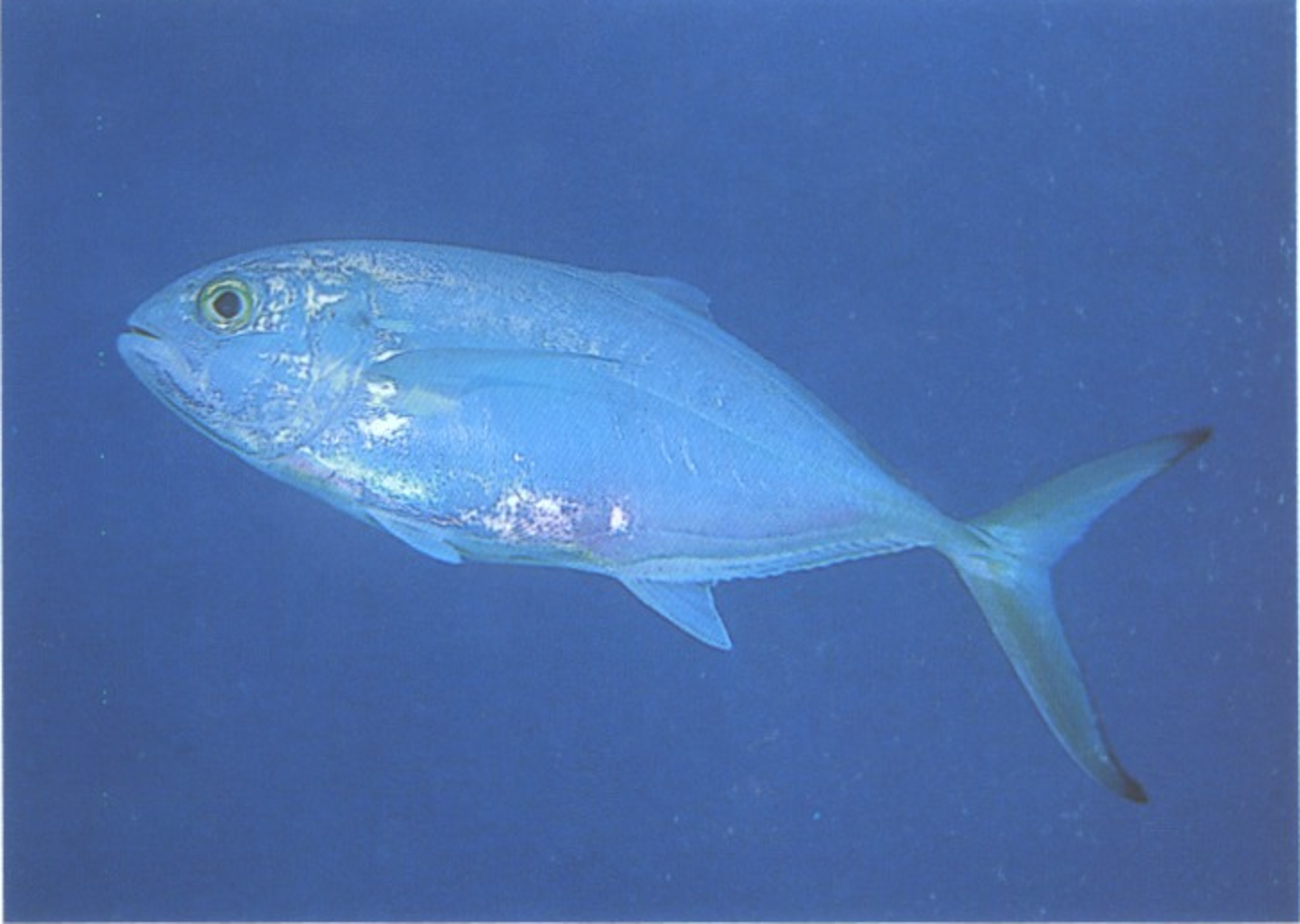
1. Tips of tail fins dark.
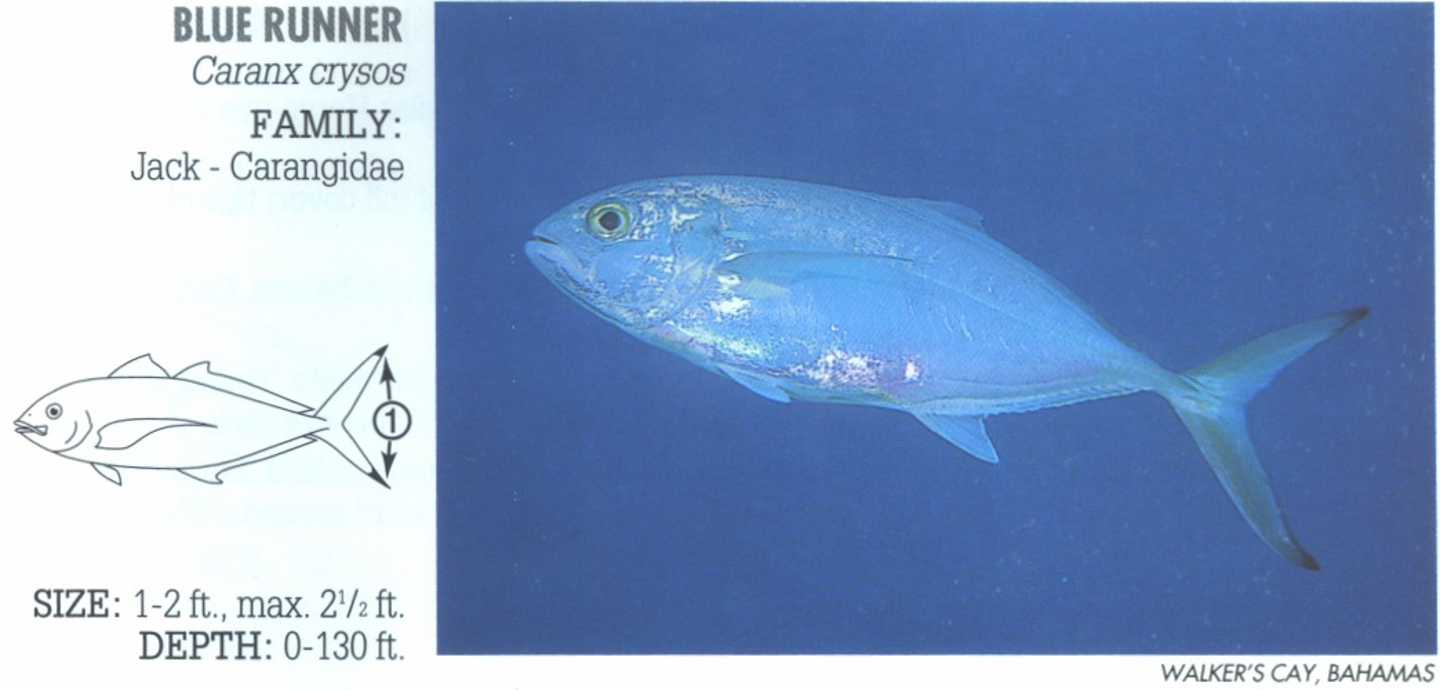
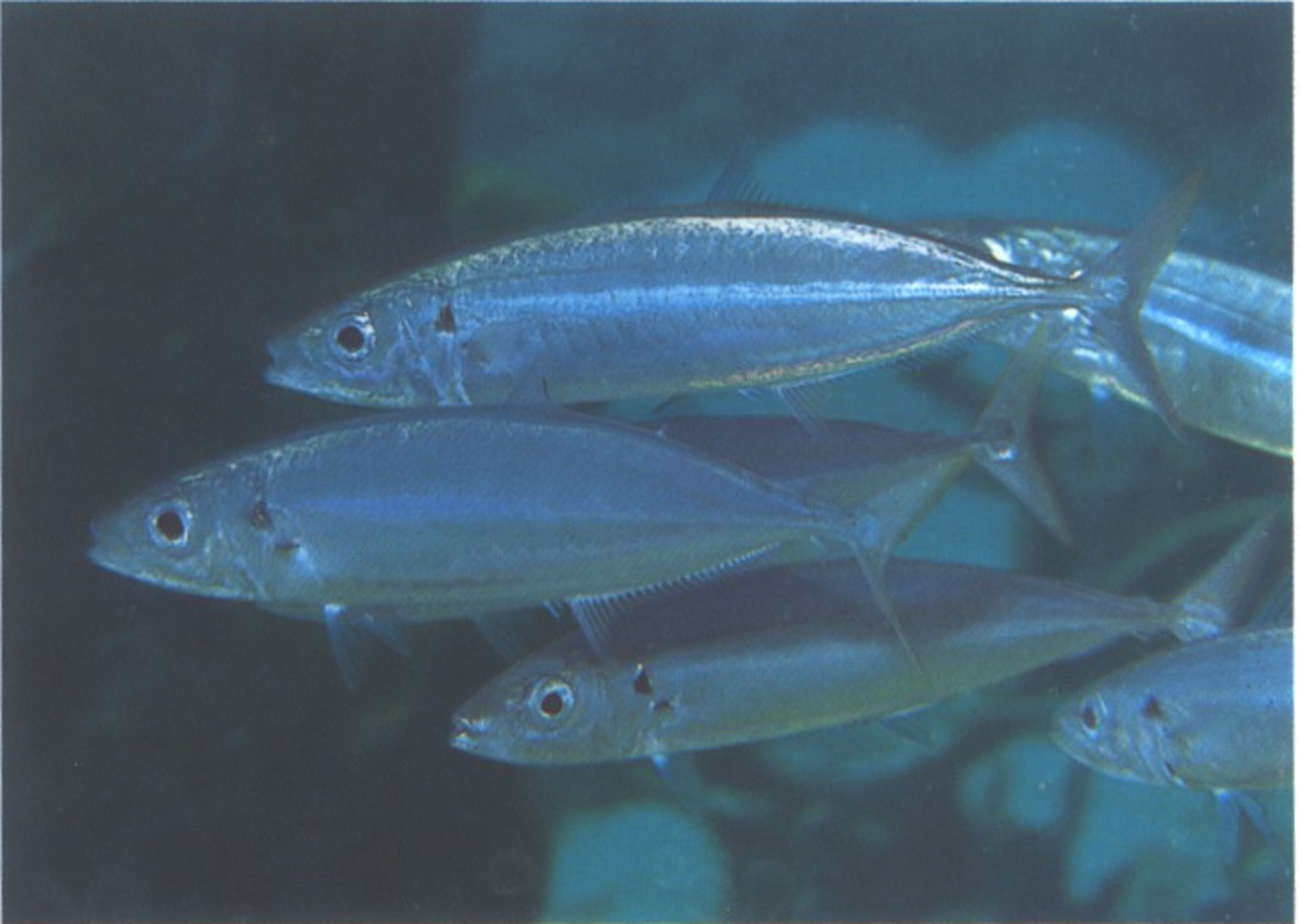
1. Black spot at upper edge of gill plate. 2. Slightly enlarged scutes on rear lateral line.
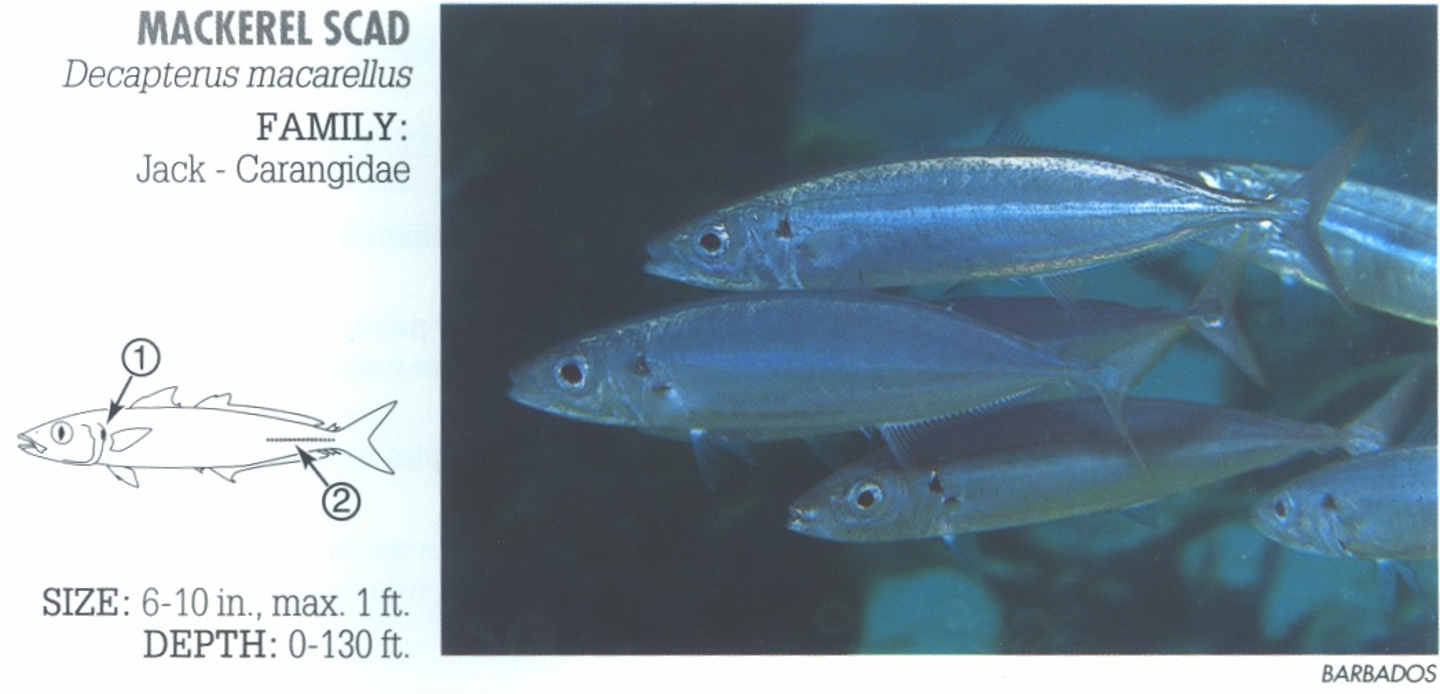
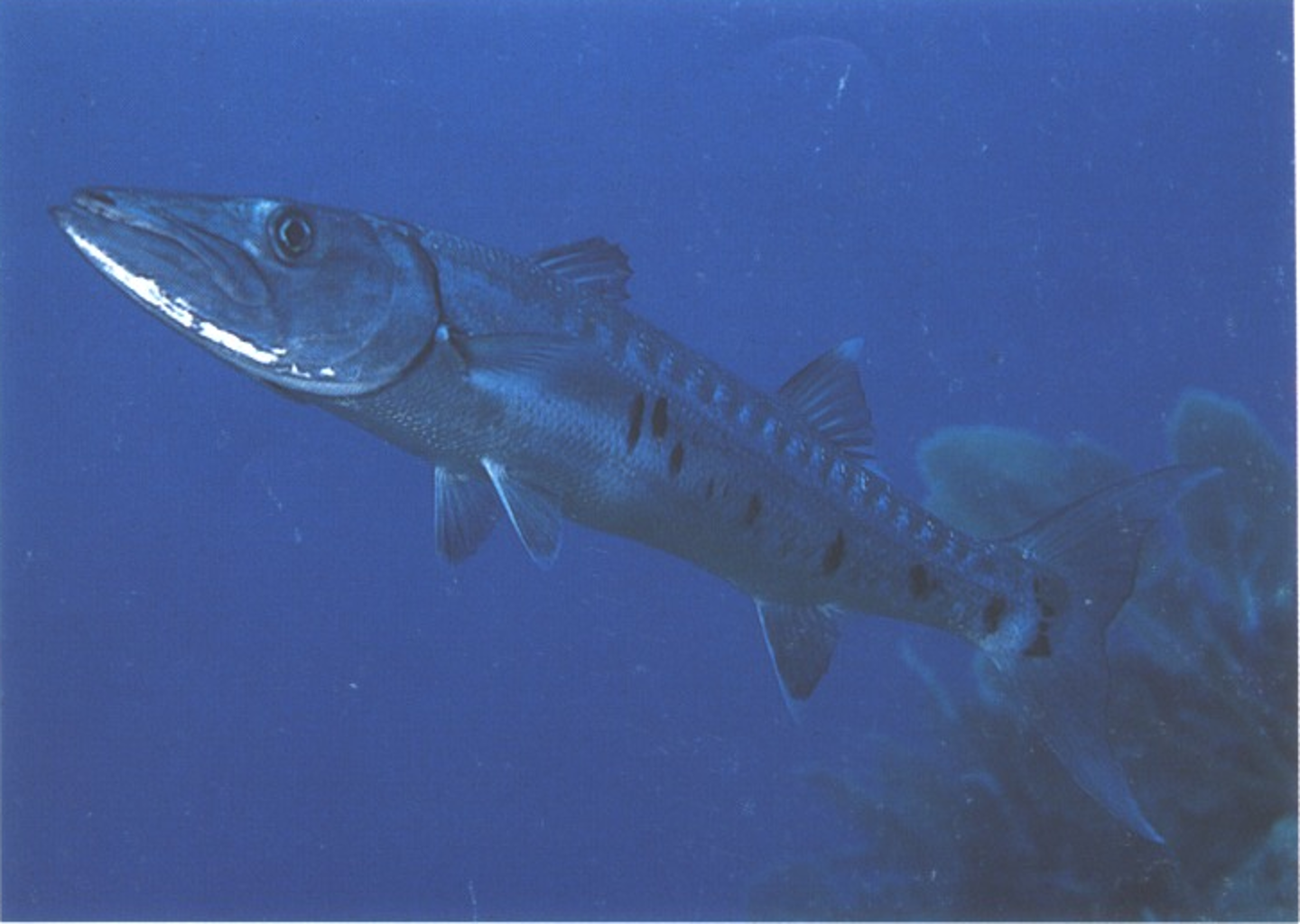

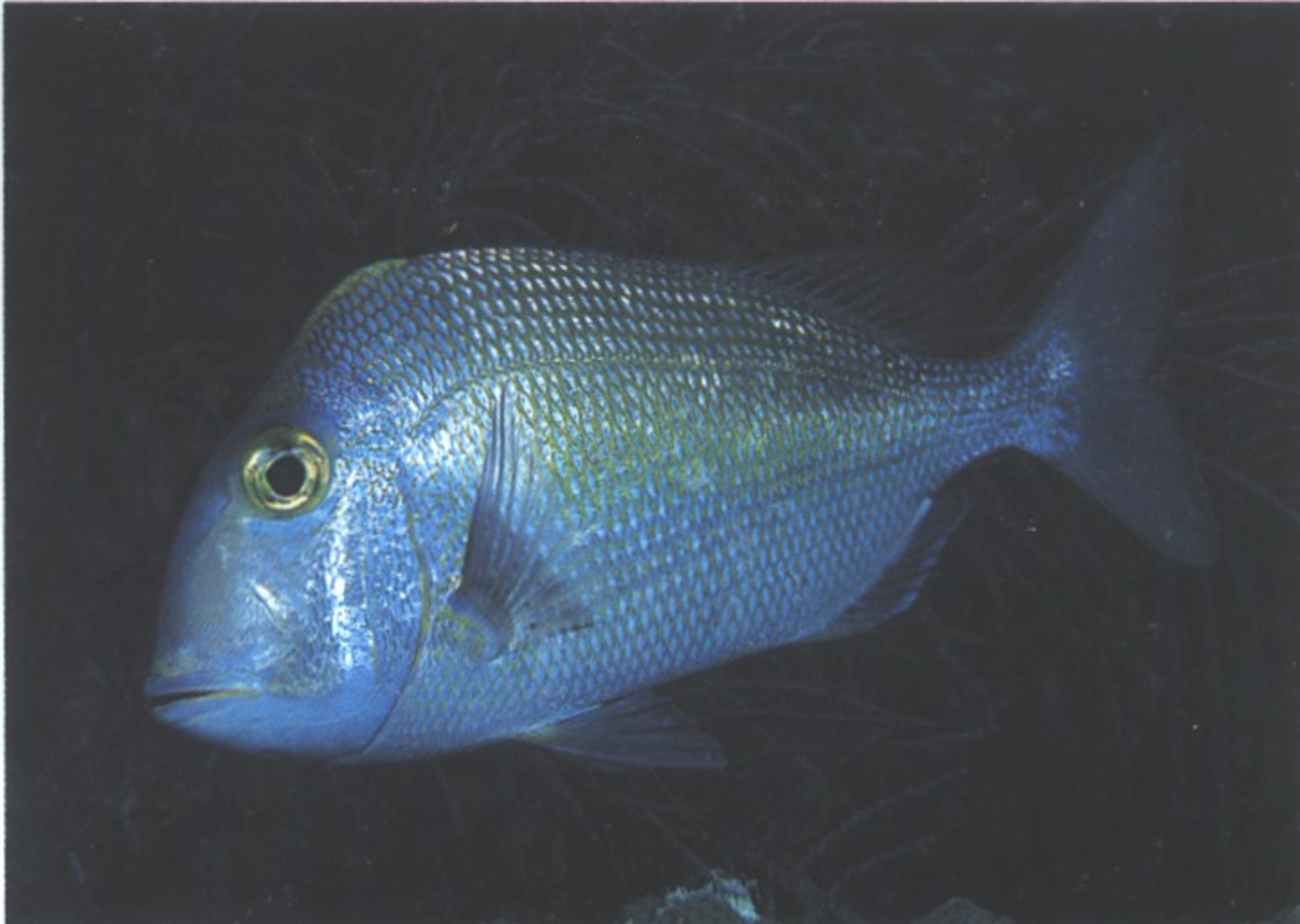
1. Short, bluish, saucer-shaped line below eye. 2. Small, bluish blotch at upper base of pectoral fin. 3. Corners of mouth yellow.
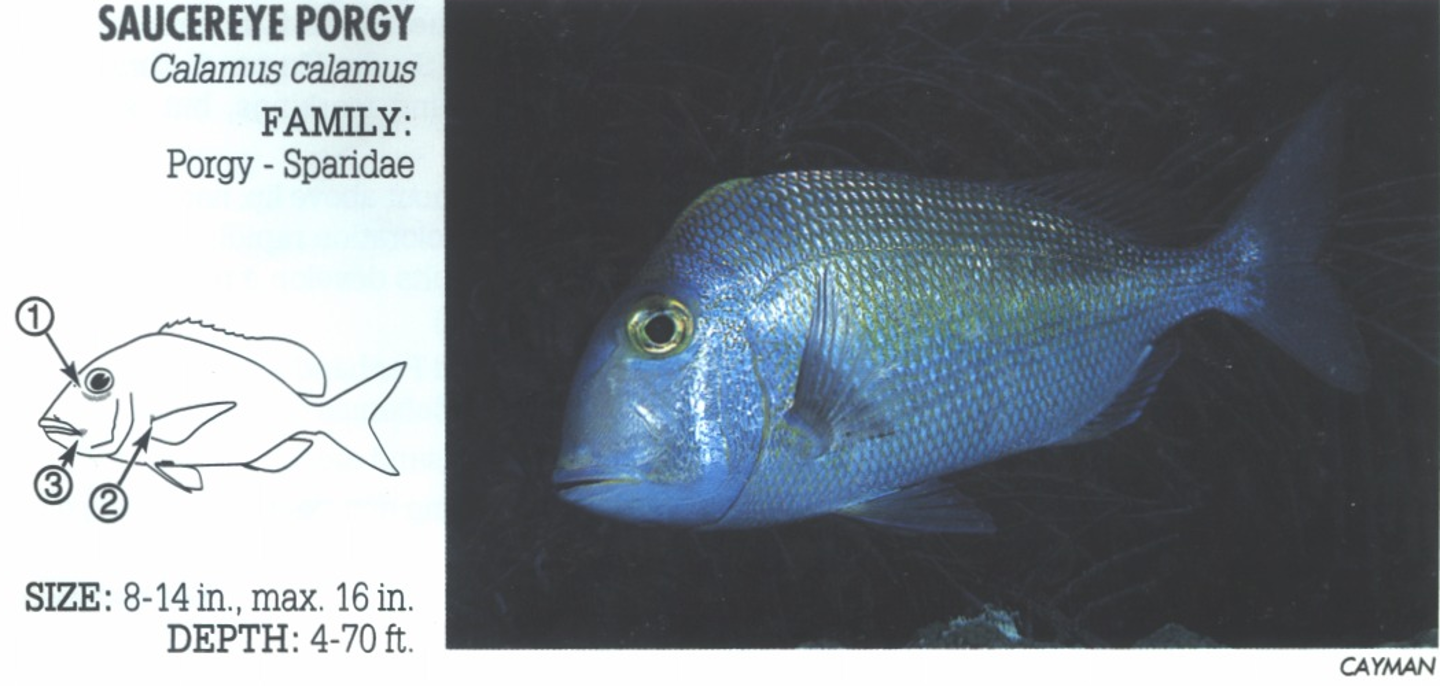
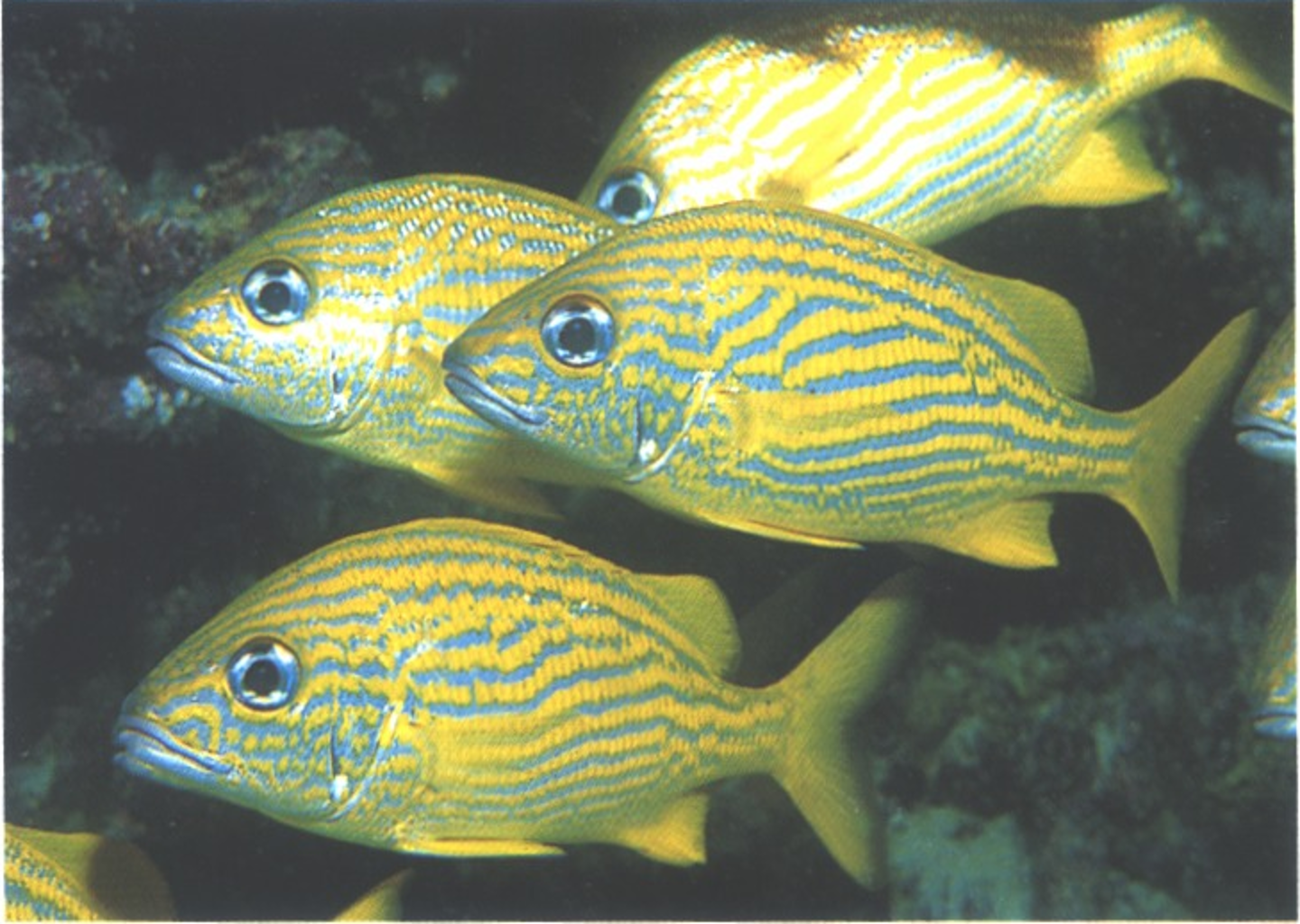
1. Yellow stripes below lateral line set on diagonal.
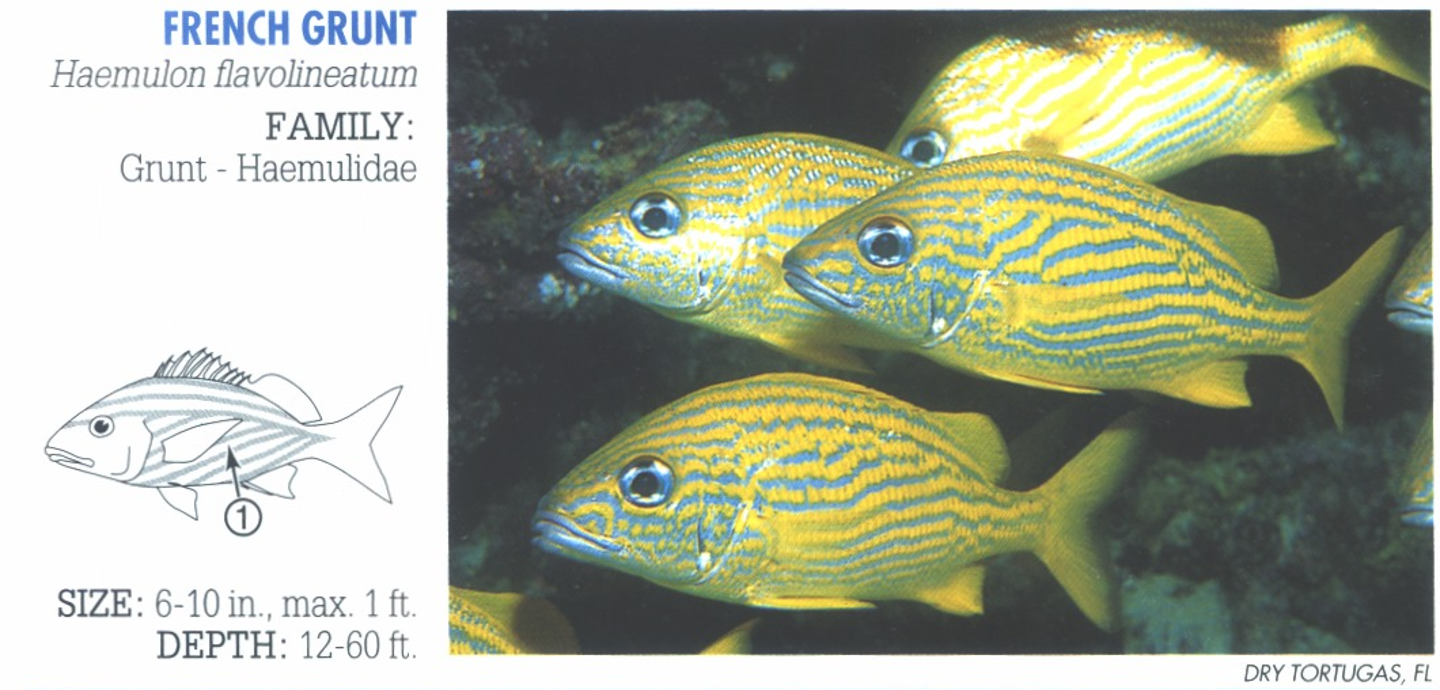
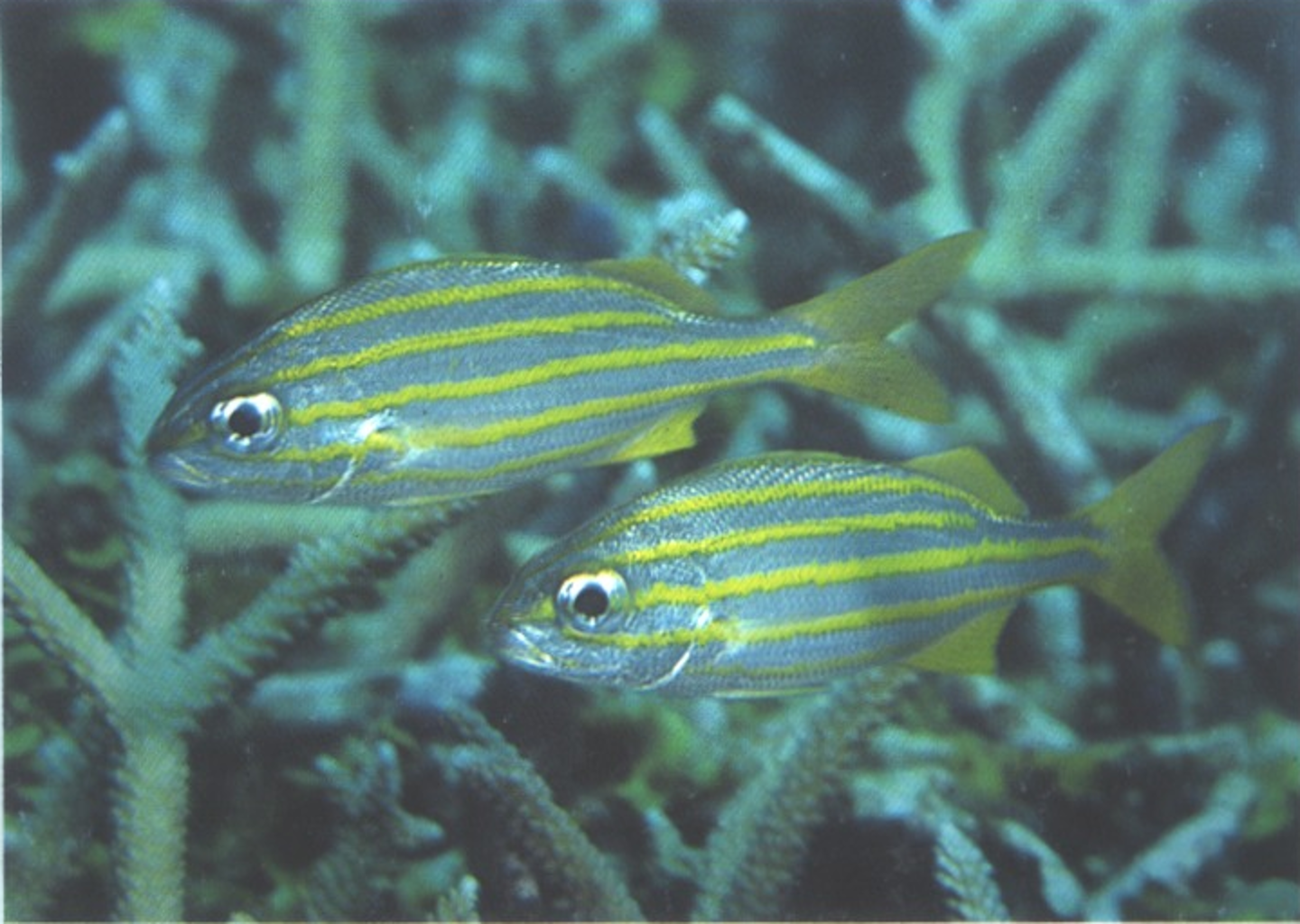
Elongated cylindrical body. 1. Five or six yellow stripes. 2. Fins yellow.
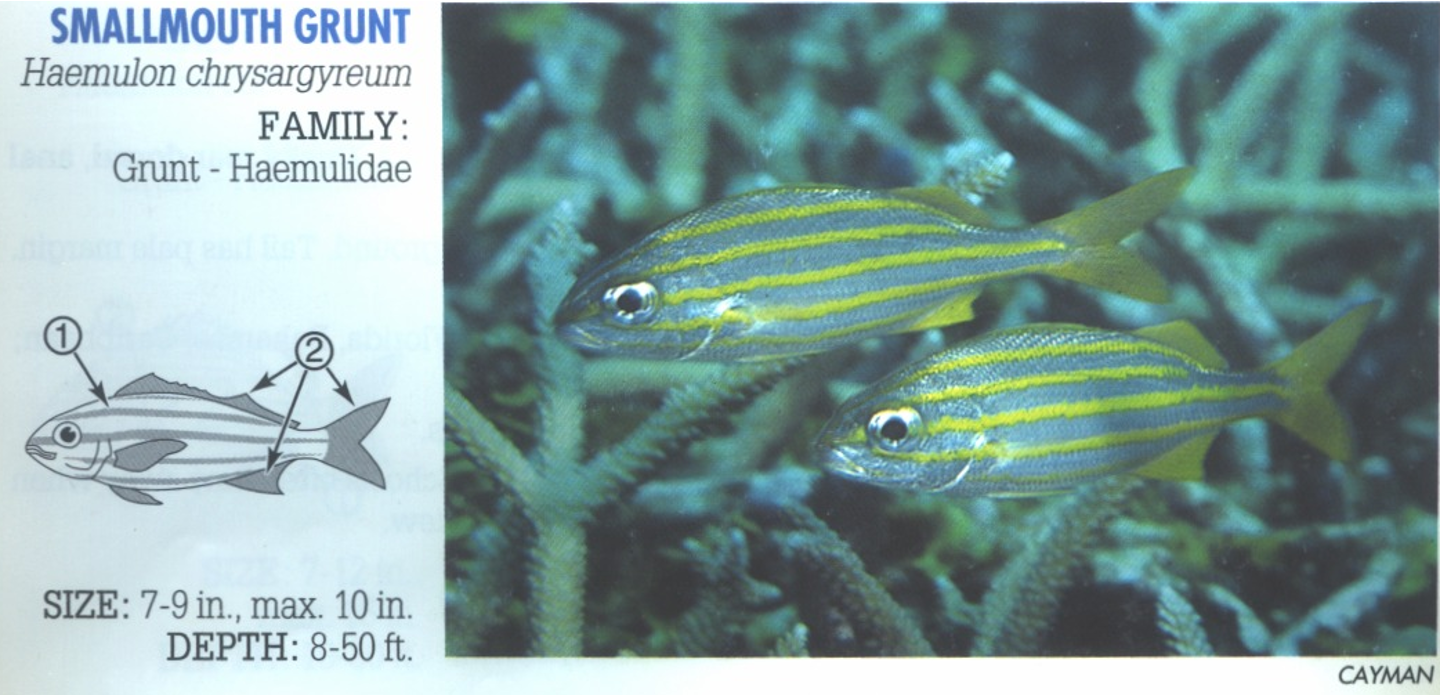
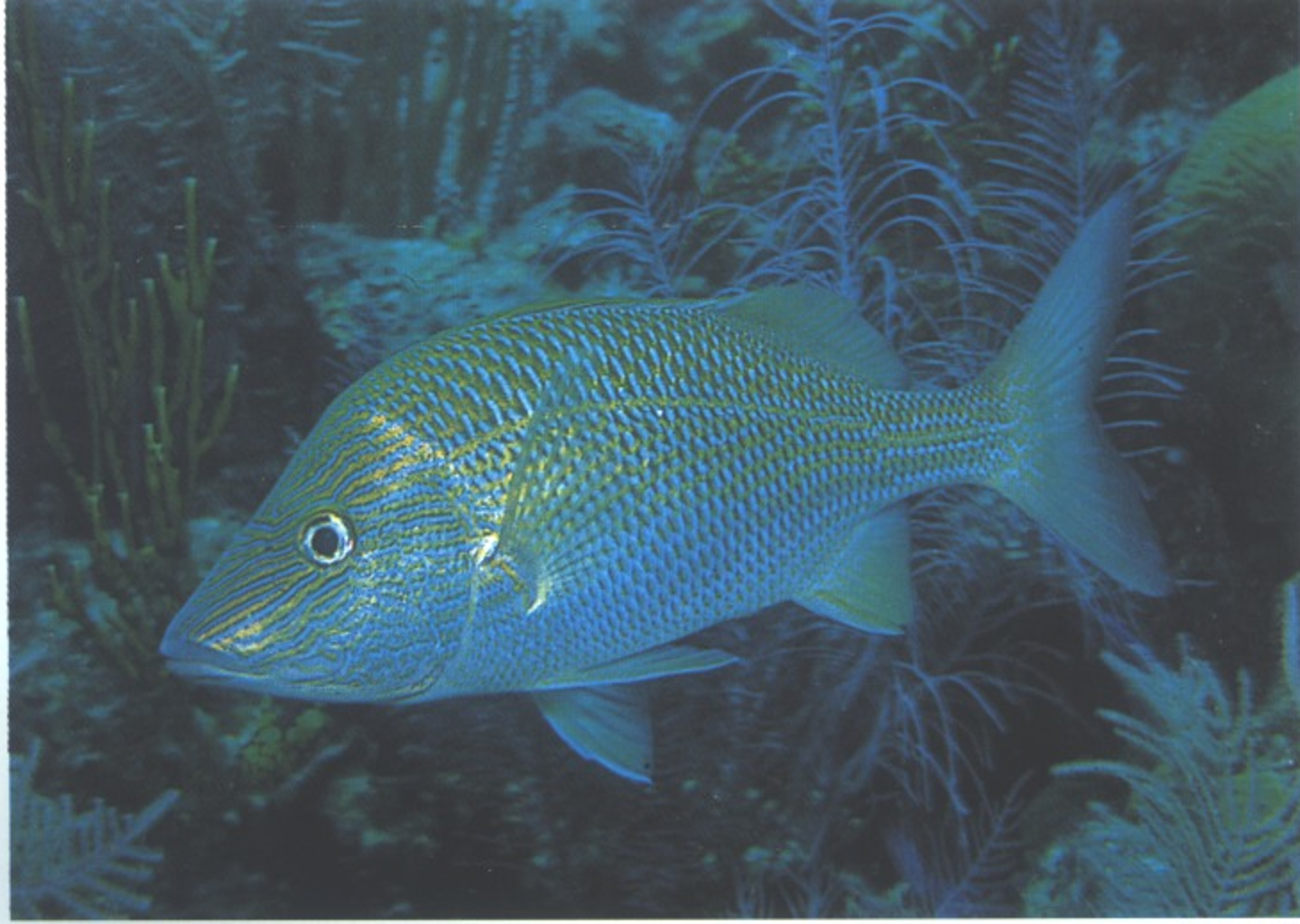
1. Stripes only on head.
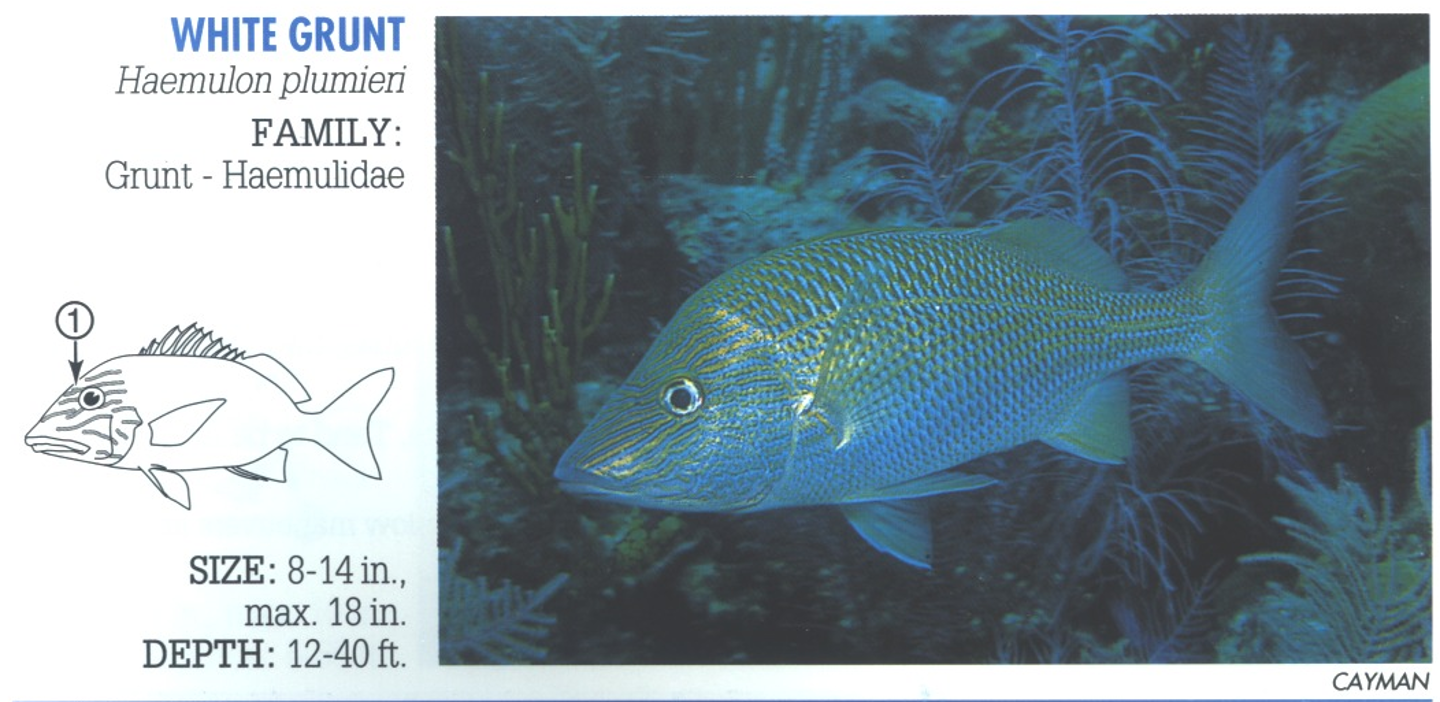
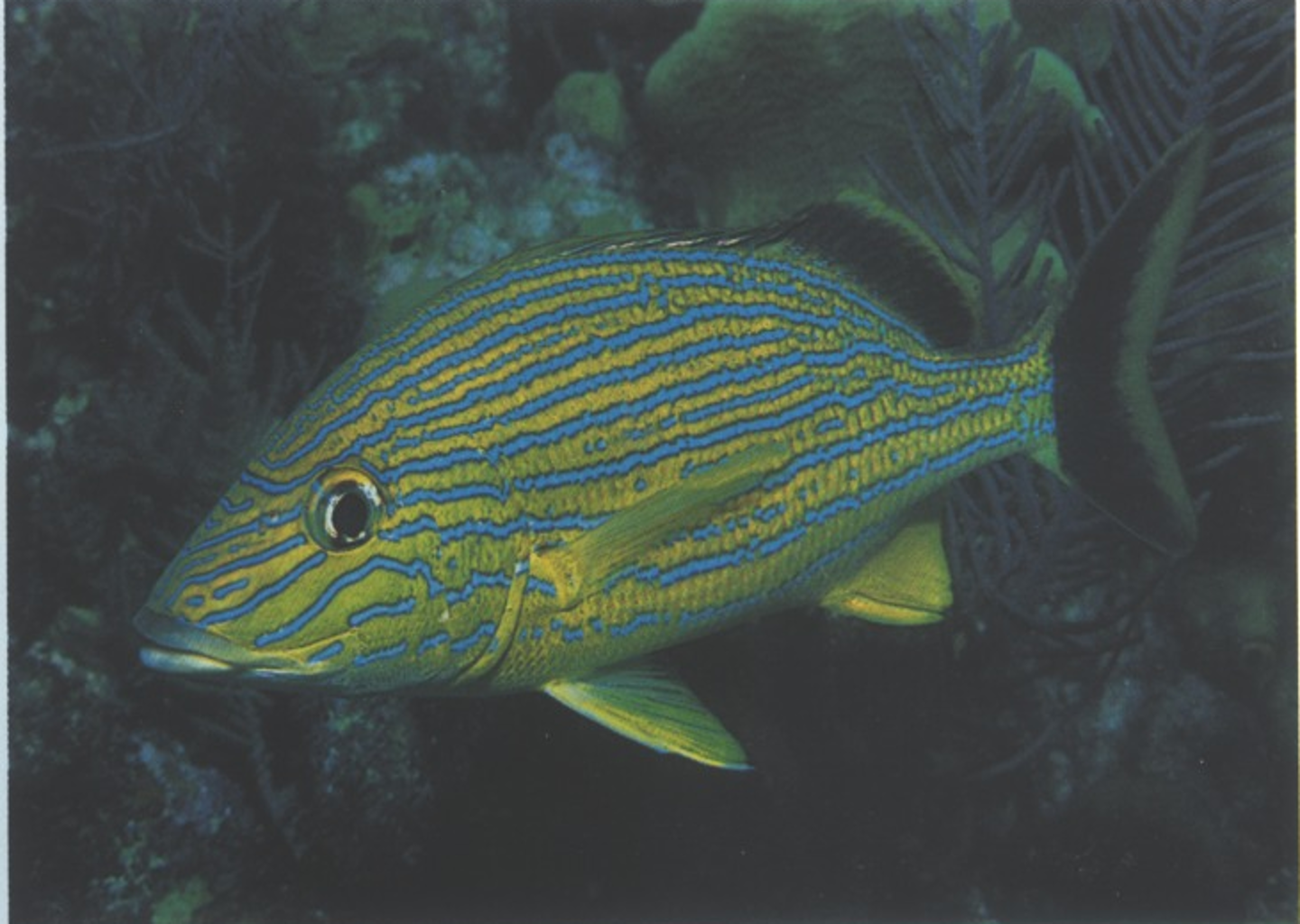
1. Dark tail and rear dorsal fin. 2. Blue stripes.
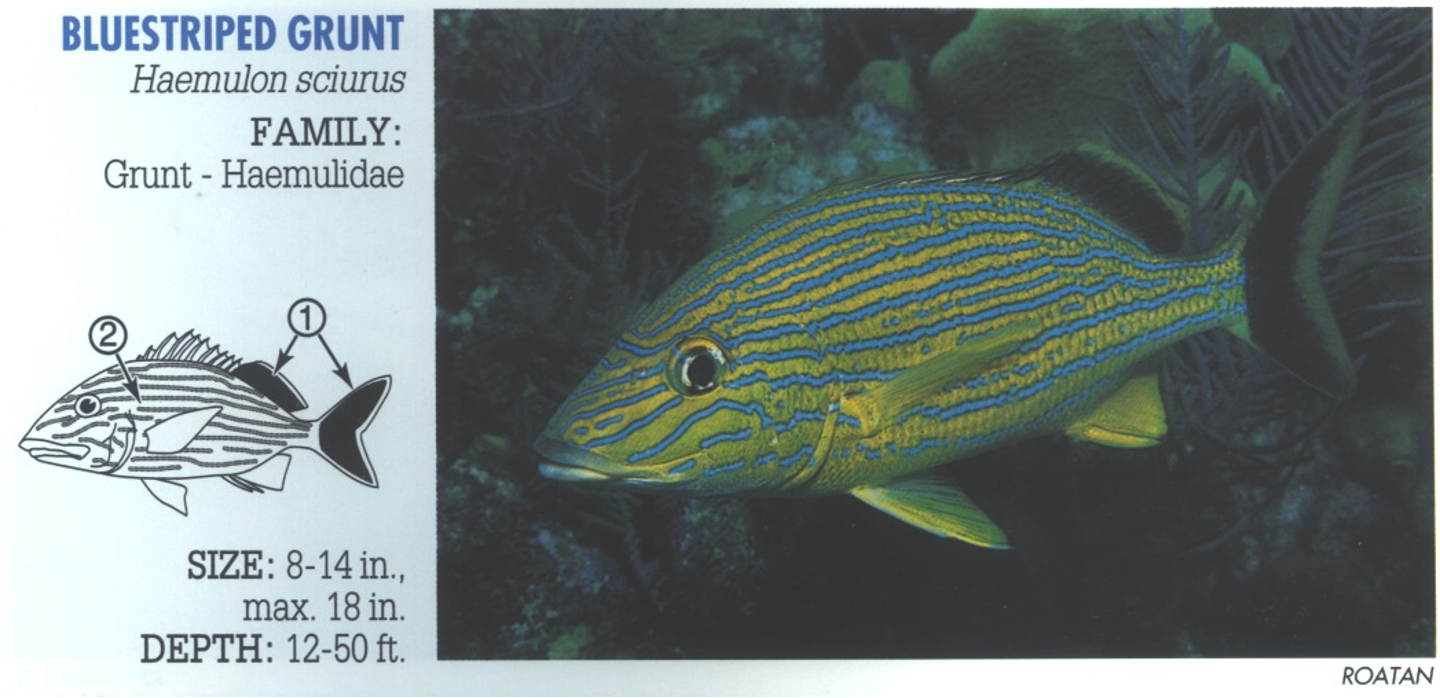

1. Yellow to dark copper/bronze stripes. 2. Dusky rear dorsal, anal and tail fins.
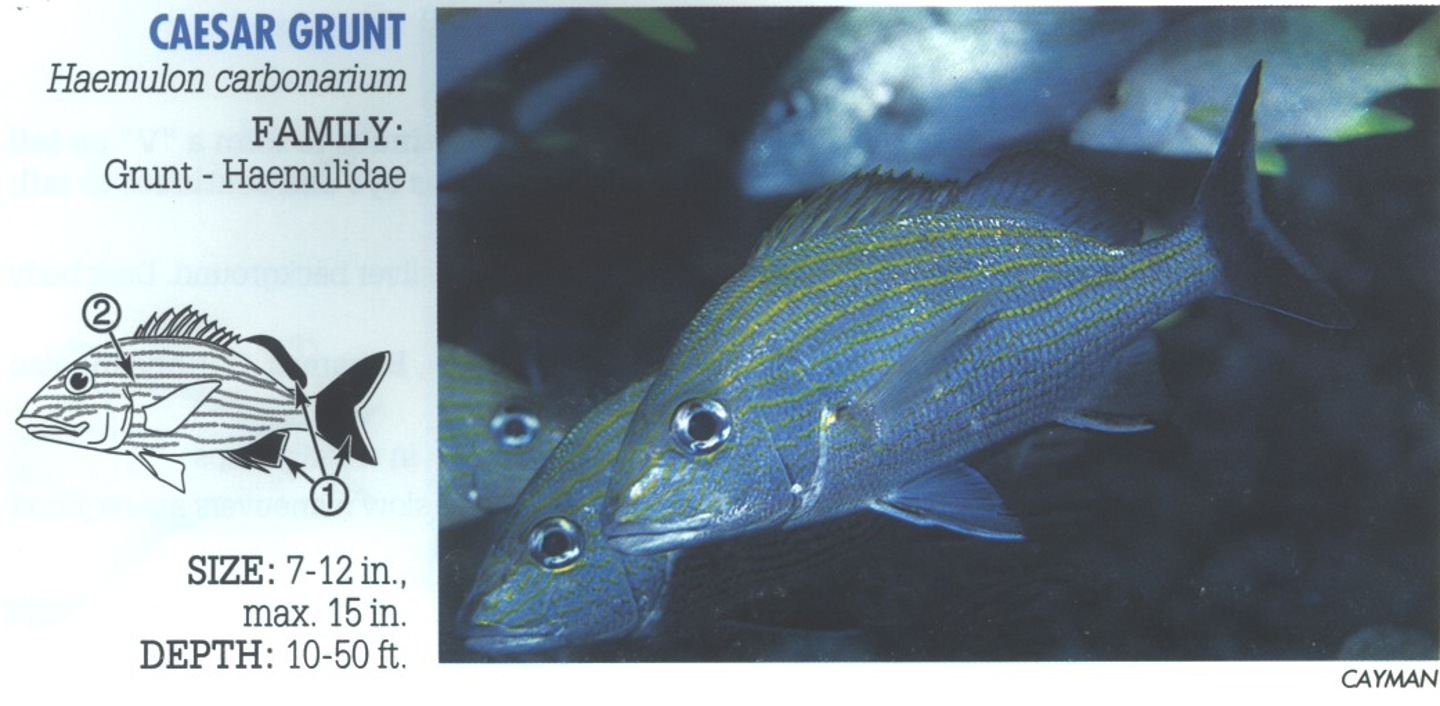
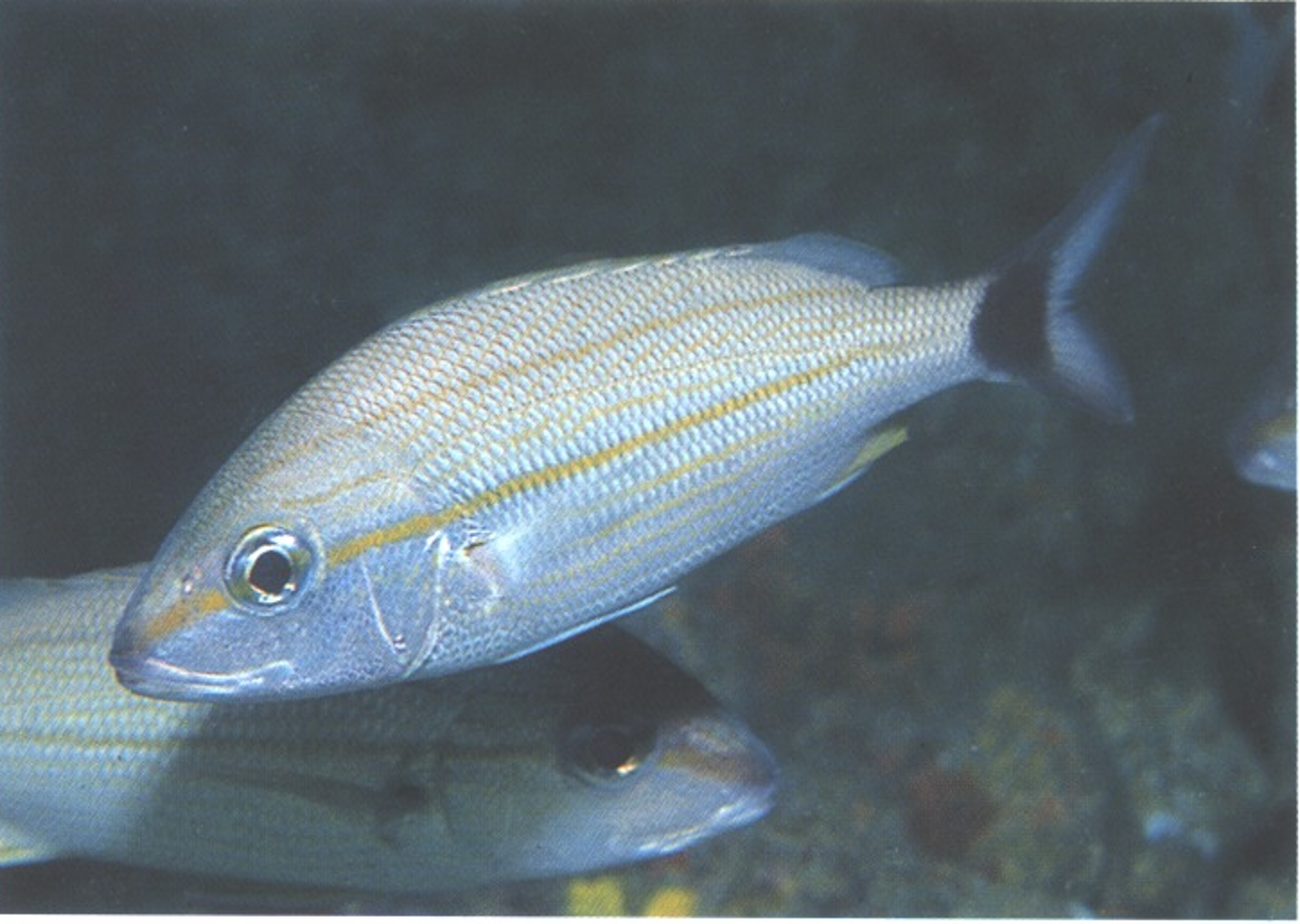
1. Prominent yellow to bronze stripe runs from snout through eye to base of tail; another thinner stripe on back. 2. Fins pale. 3. Black spot on base of tail (not always present).
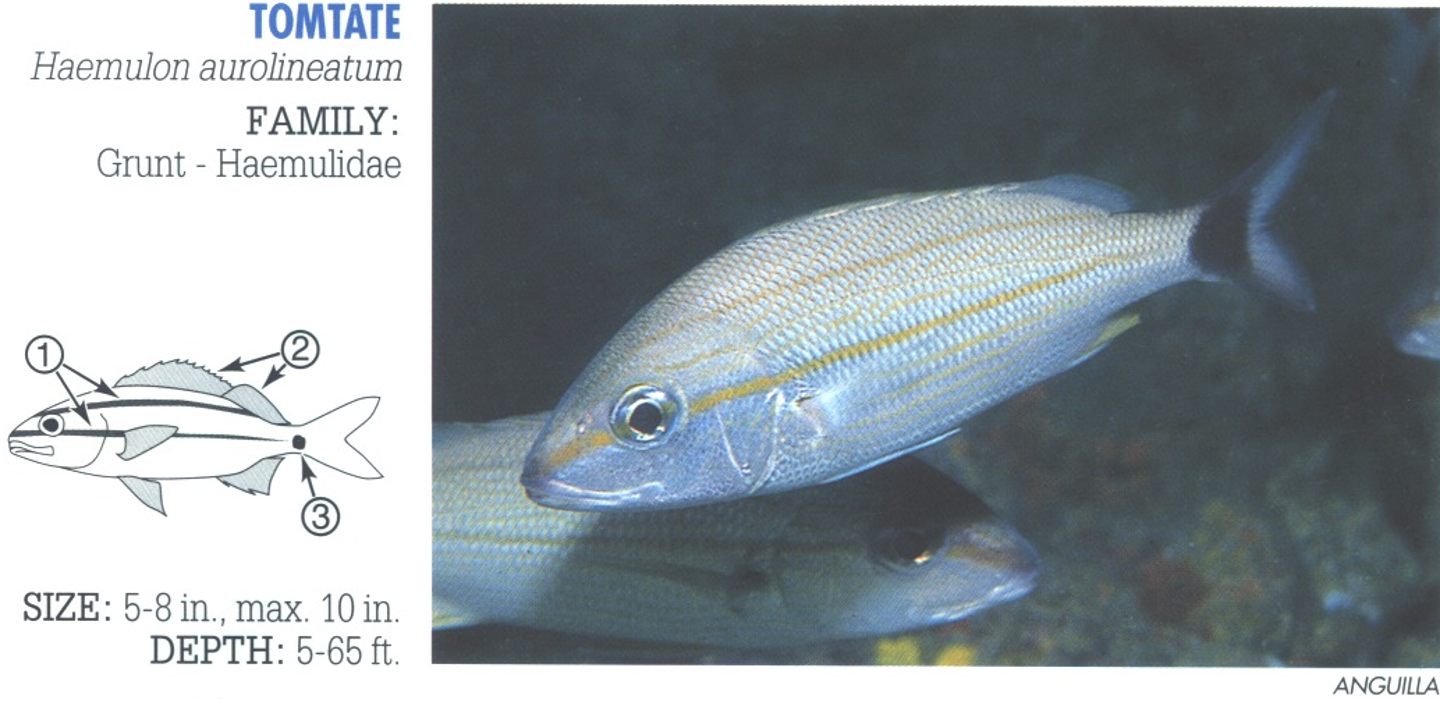
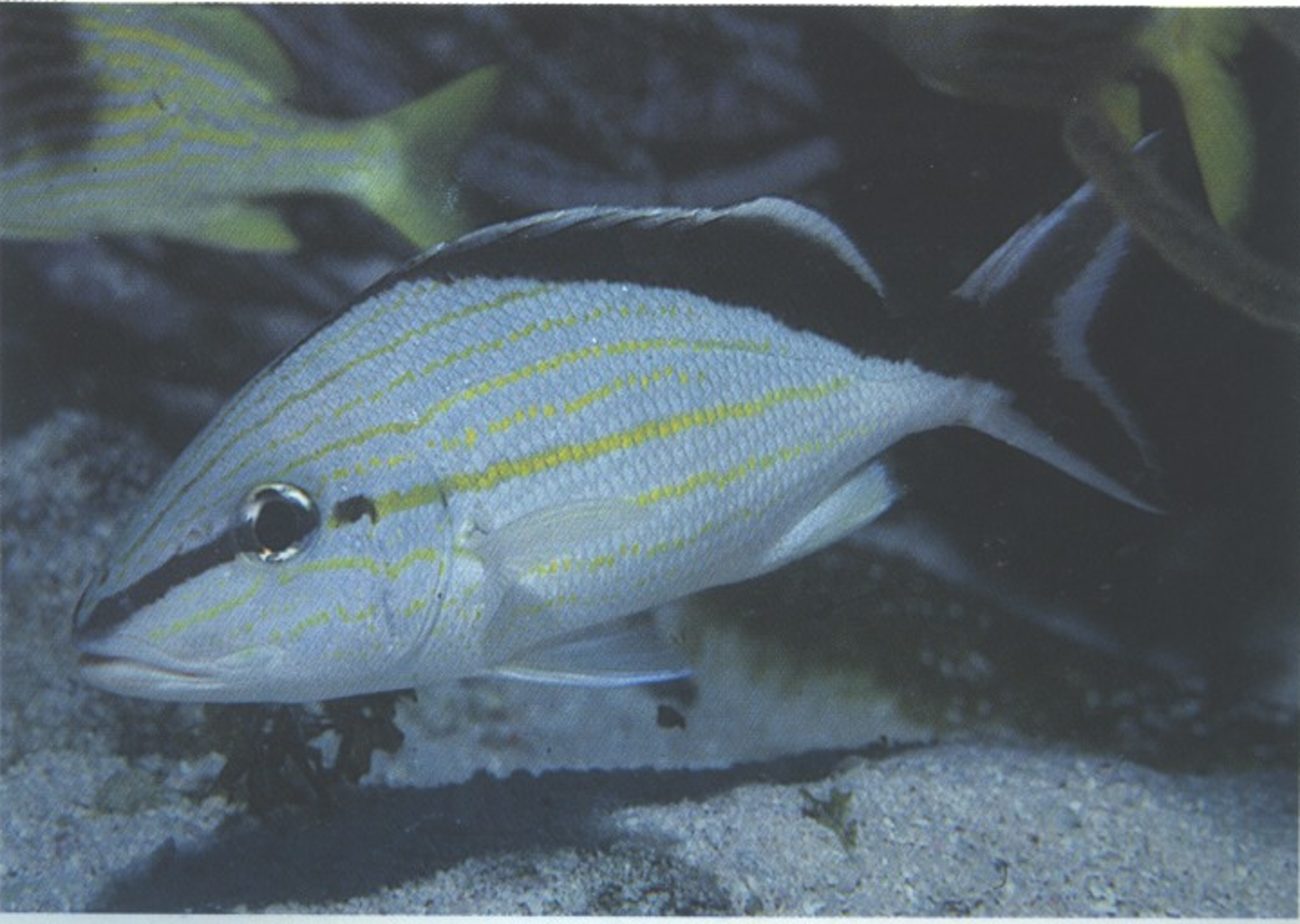
1. Bold, black stripe on dorsal fin continues to form a “V” on tail (absent in pale phase). 2. Black stripe begins on snout, runs across eye and continues to tail” color may change to yellow behind eyes.
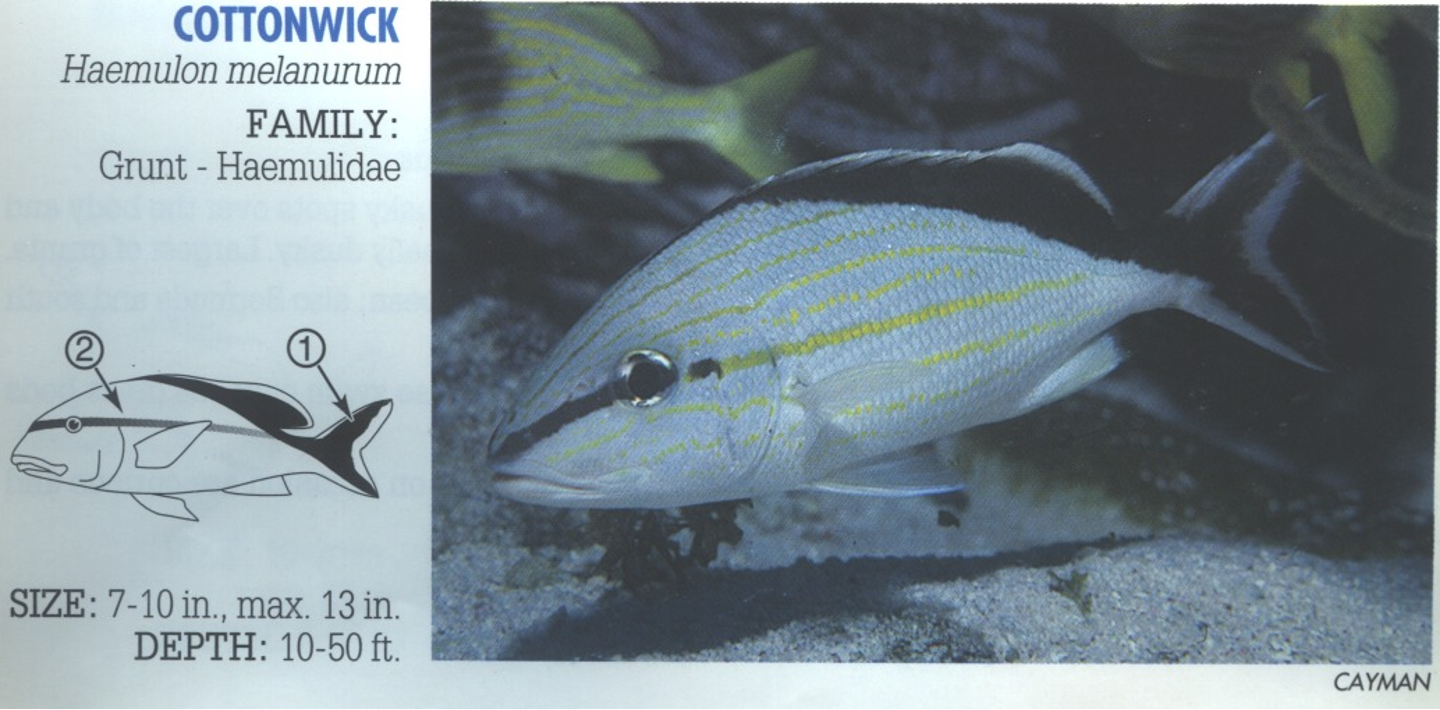
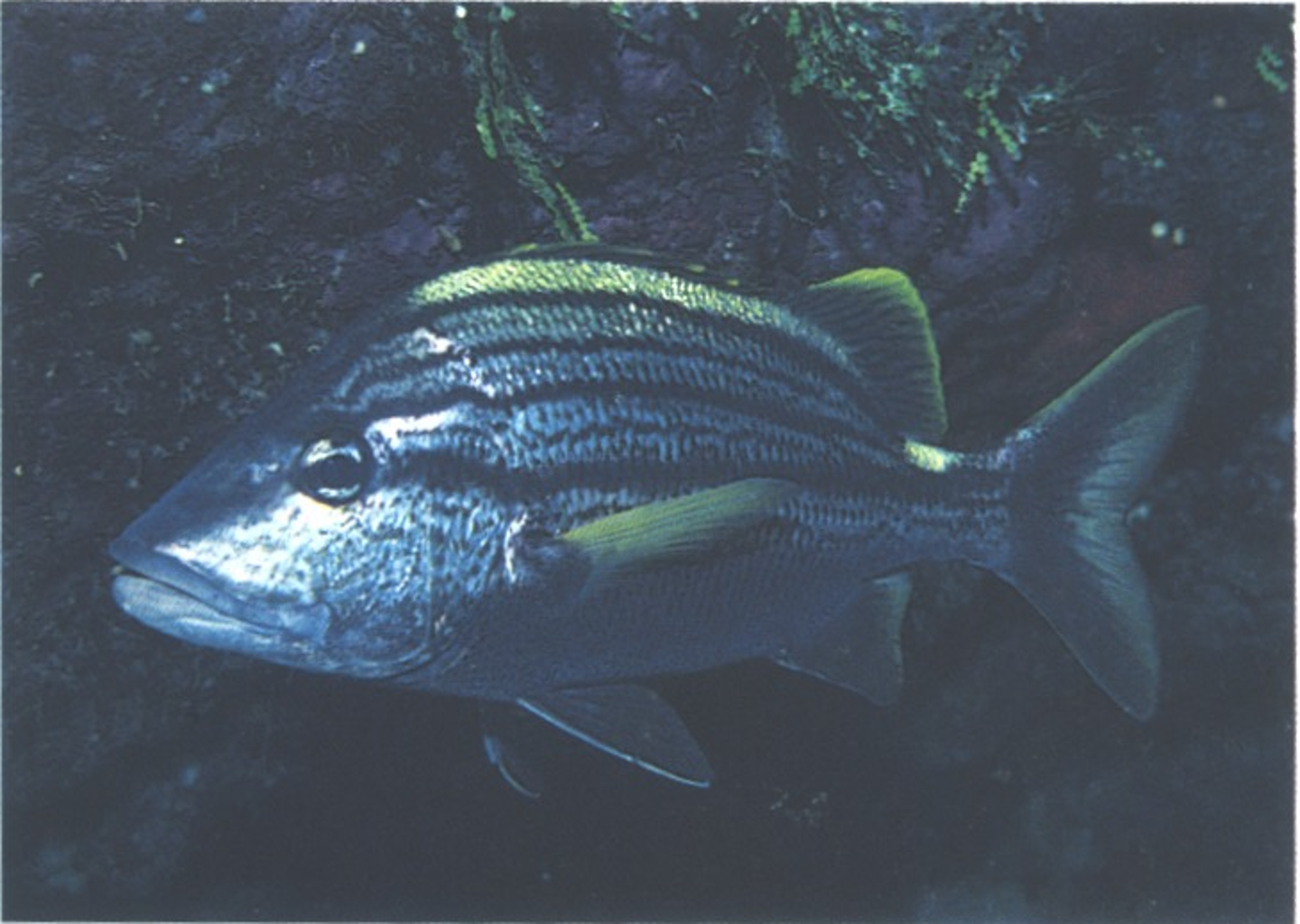
1. Bold black stripes on upper body. 2. Yellow-green dorsal hump. 3. Yellow saddle or spot on base of tail.

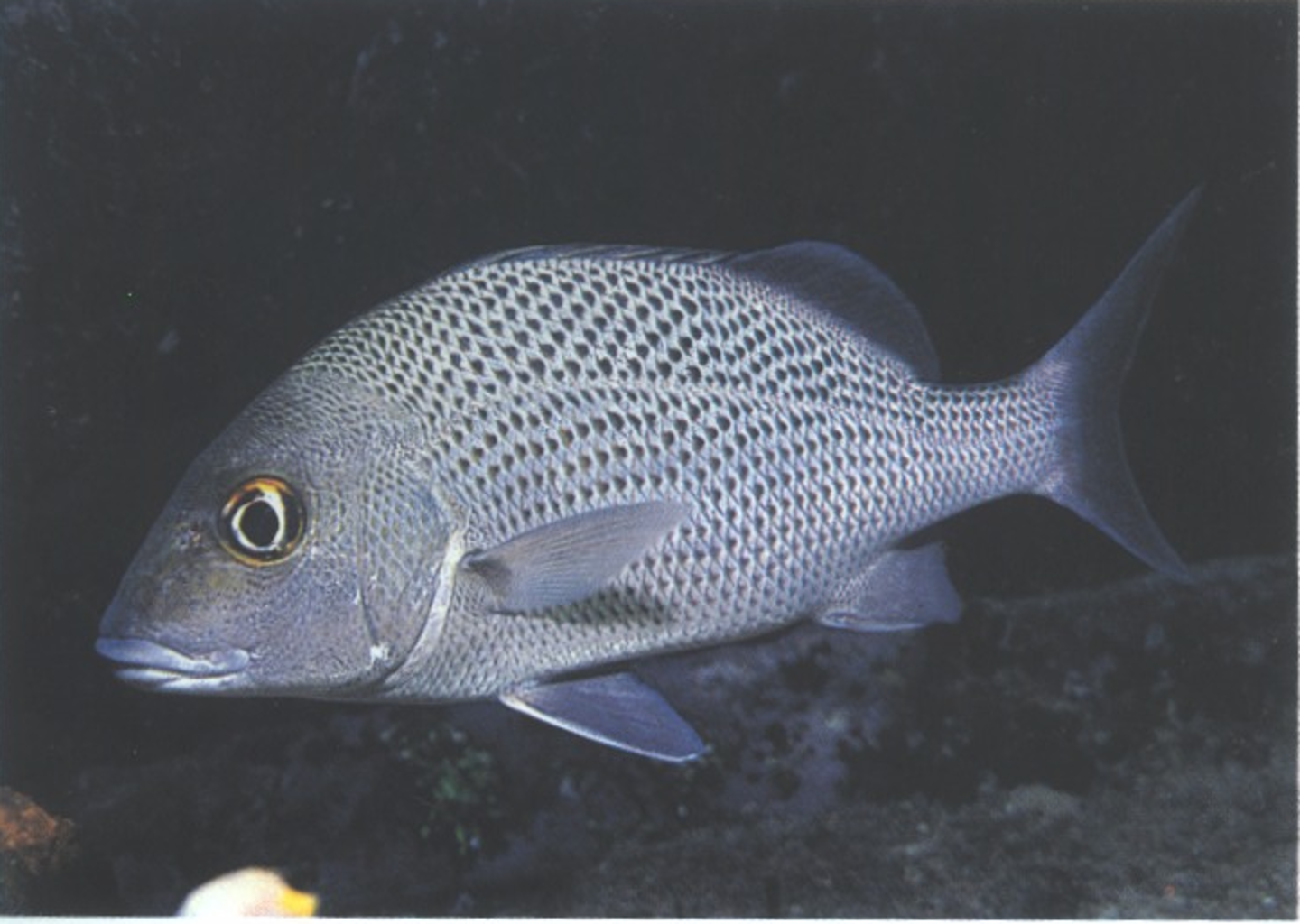
Distinct scale pattern accentuated by black spots forms lines over body. 1. Fins dusky to dark (except pectoral which may be light).
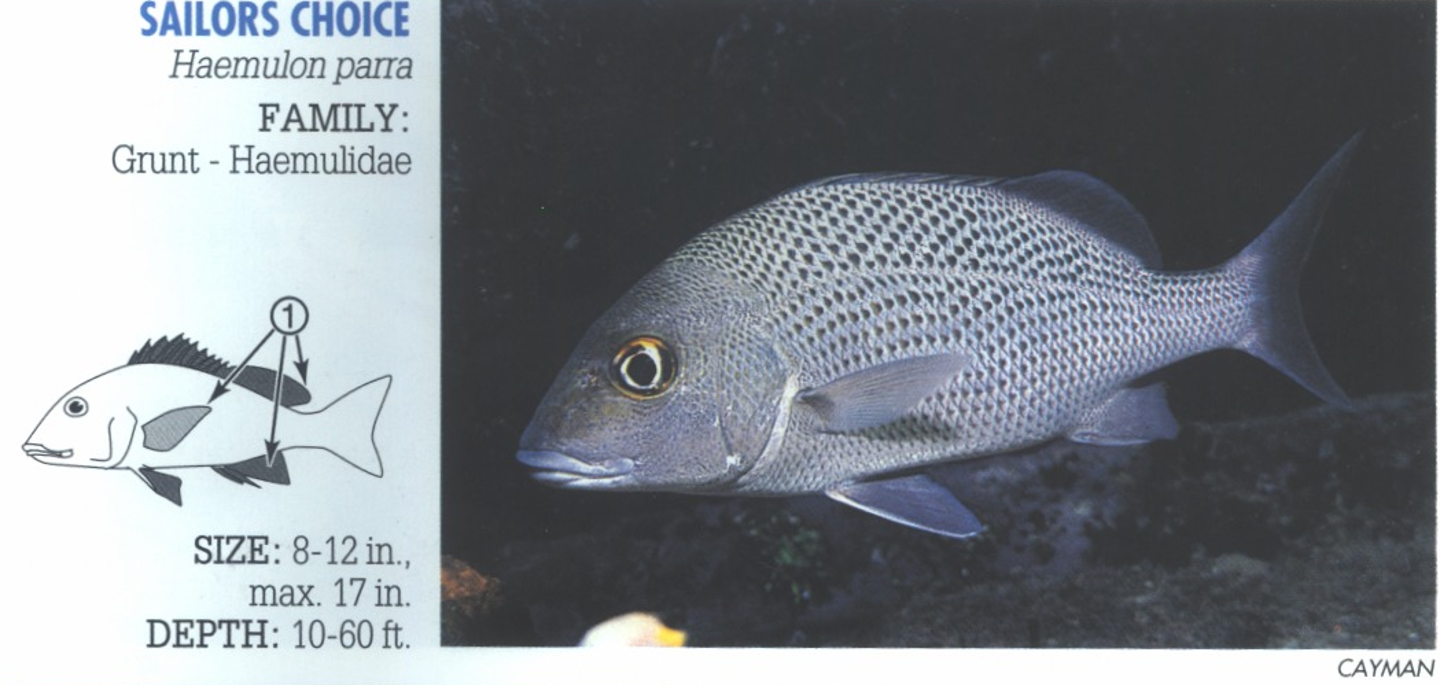

1. High back profile. 2. Light pectoral fins.
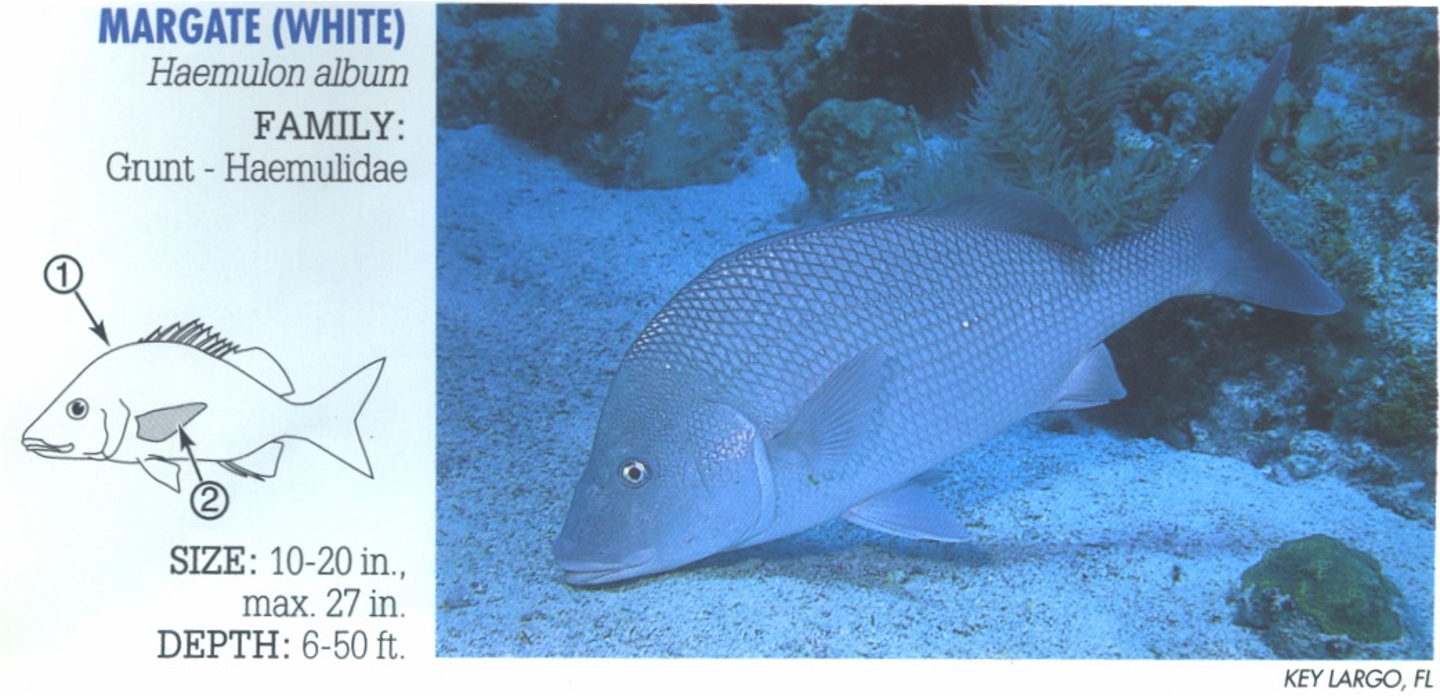
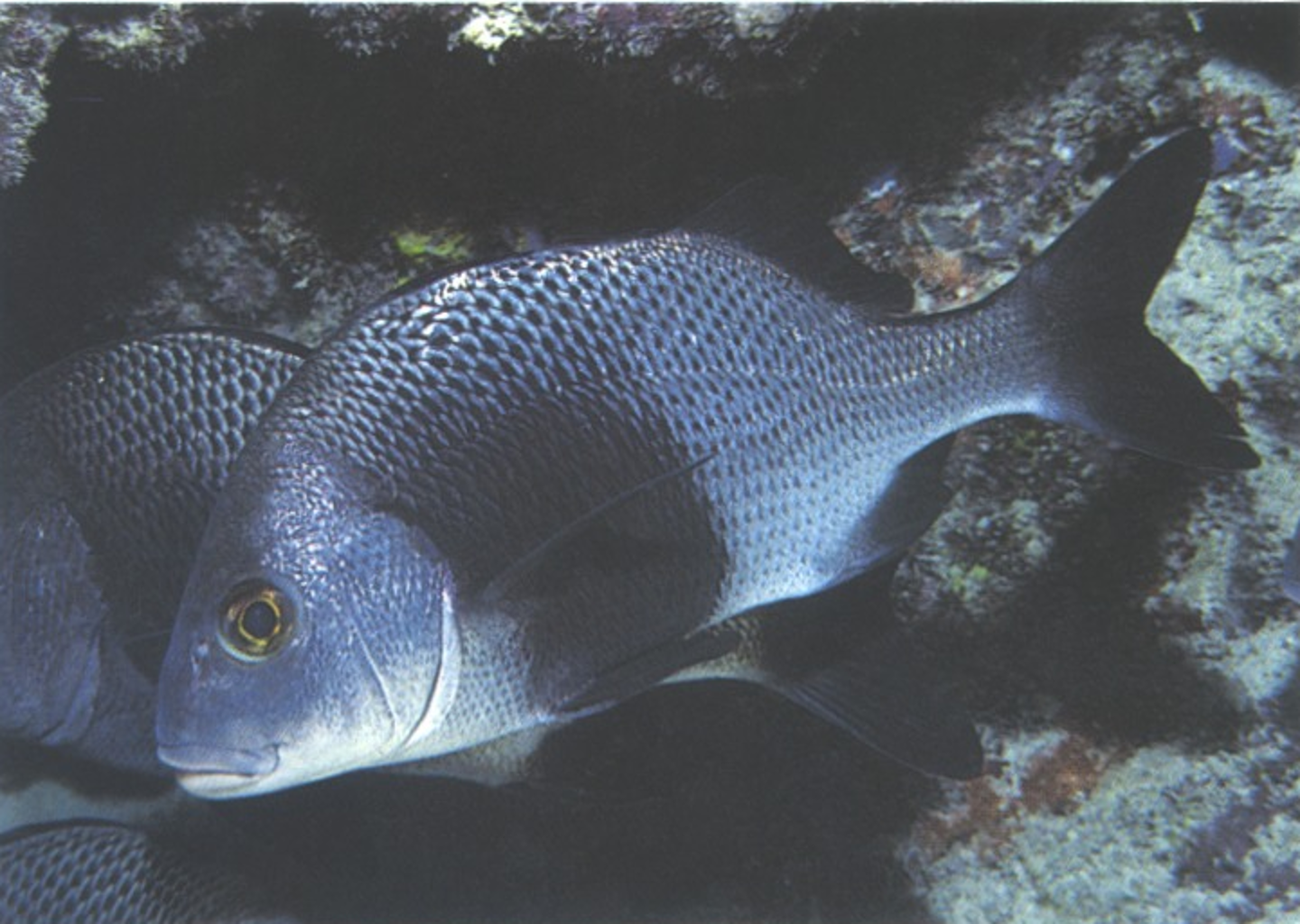
1. High back profile. 2. Dark patch behind pectoral fins.
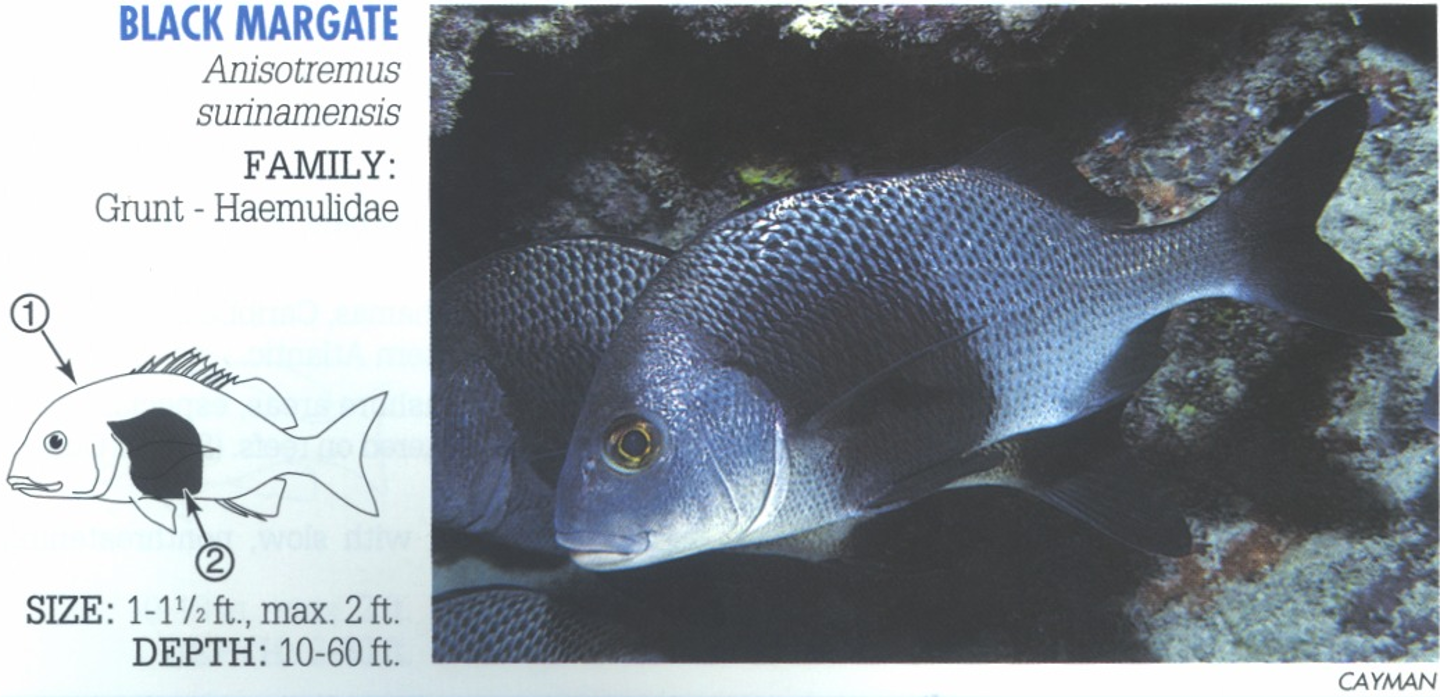
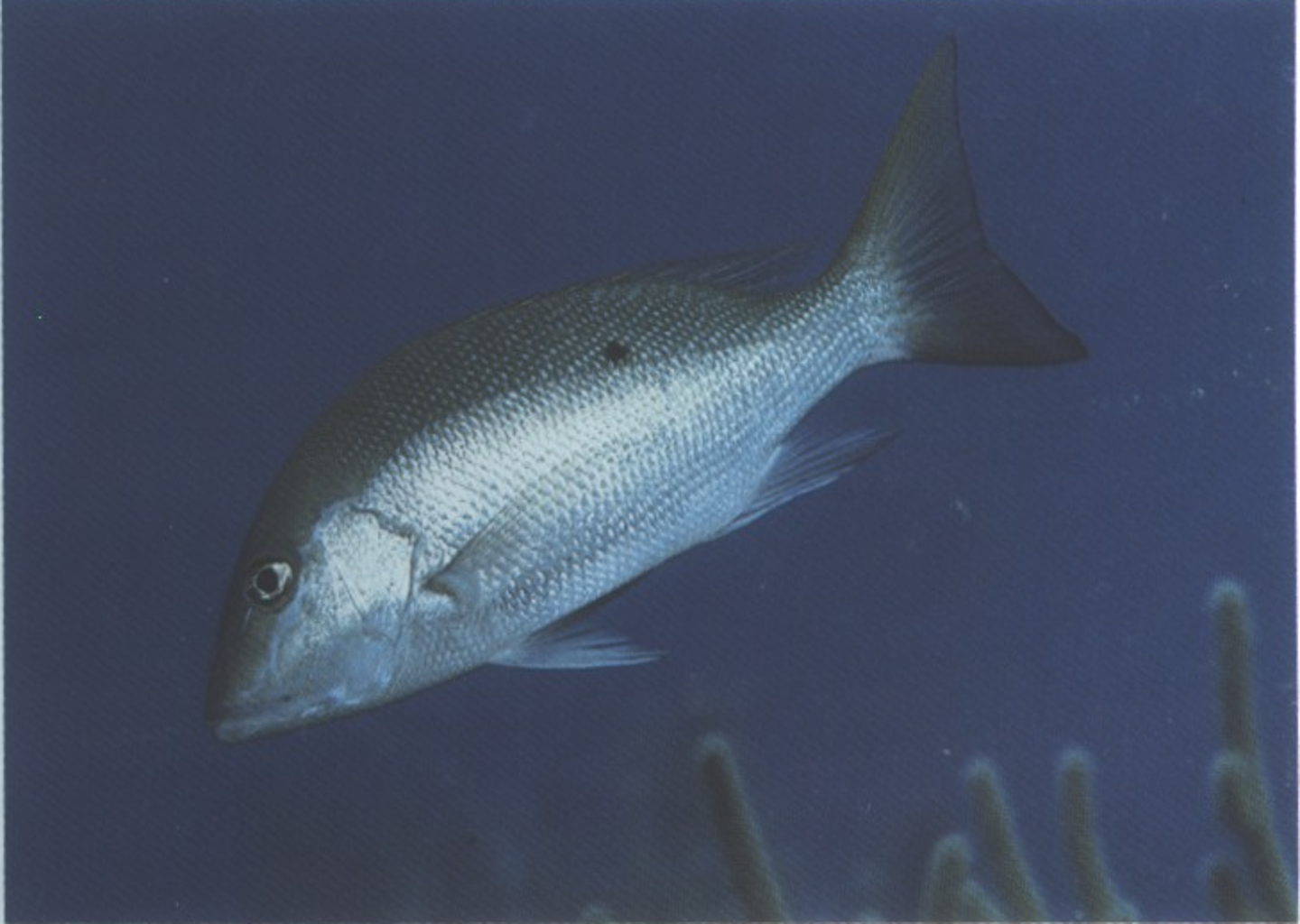
1. Fine blue lines below eye. 2. Pointed anal fin.
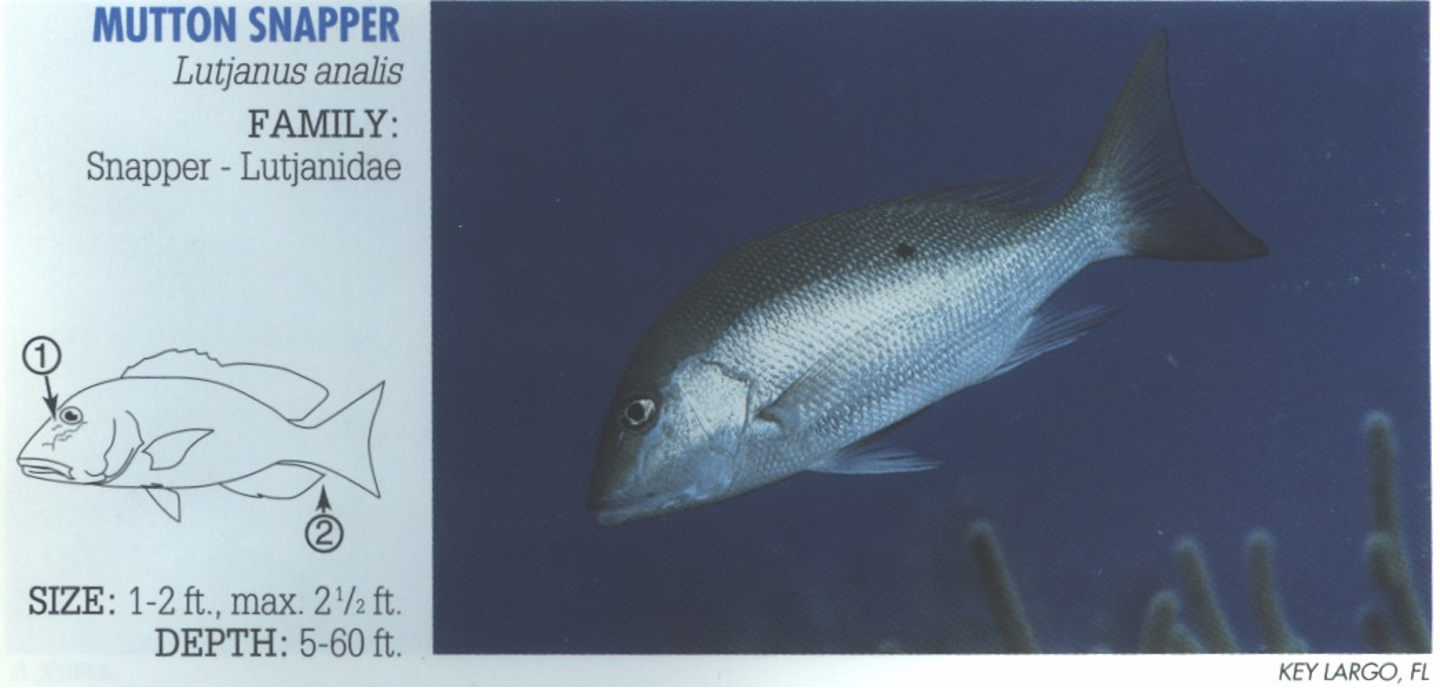
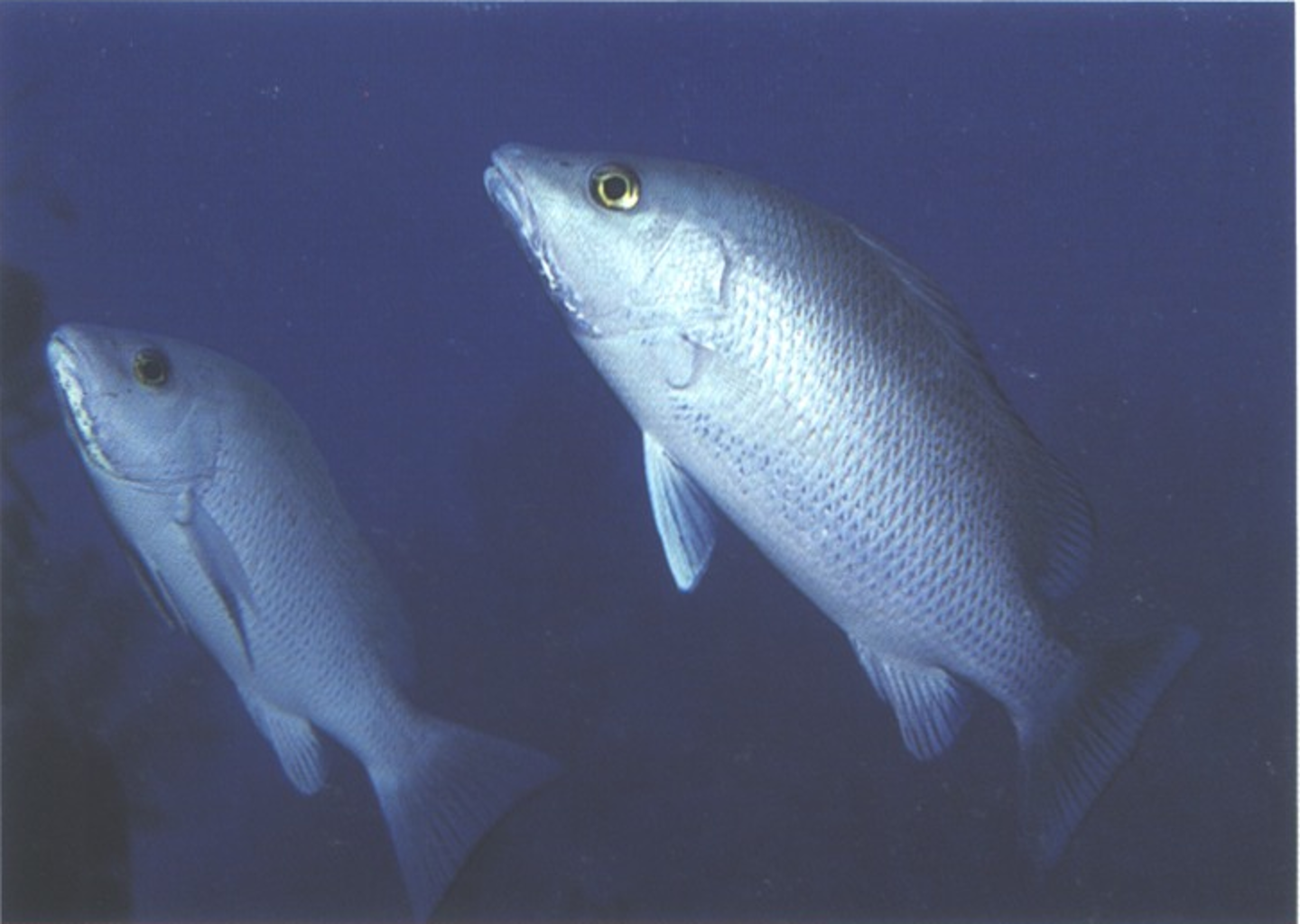
Often no distinguishing features; identification can be by process of elimination. (Similar Cubera Snapper, L. cyanopterus, distinguished by large size, blunter head and more pronounced lips.) 1. Darkish band occasionally runs from lip across eye.
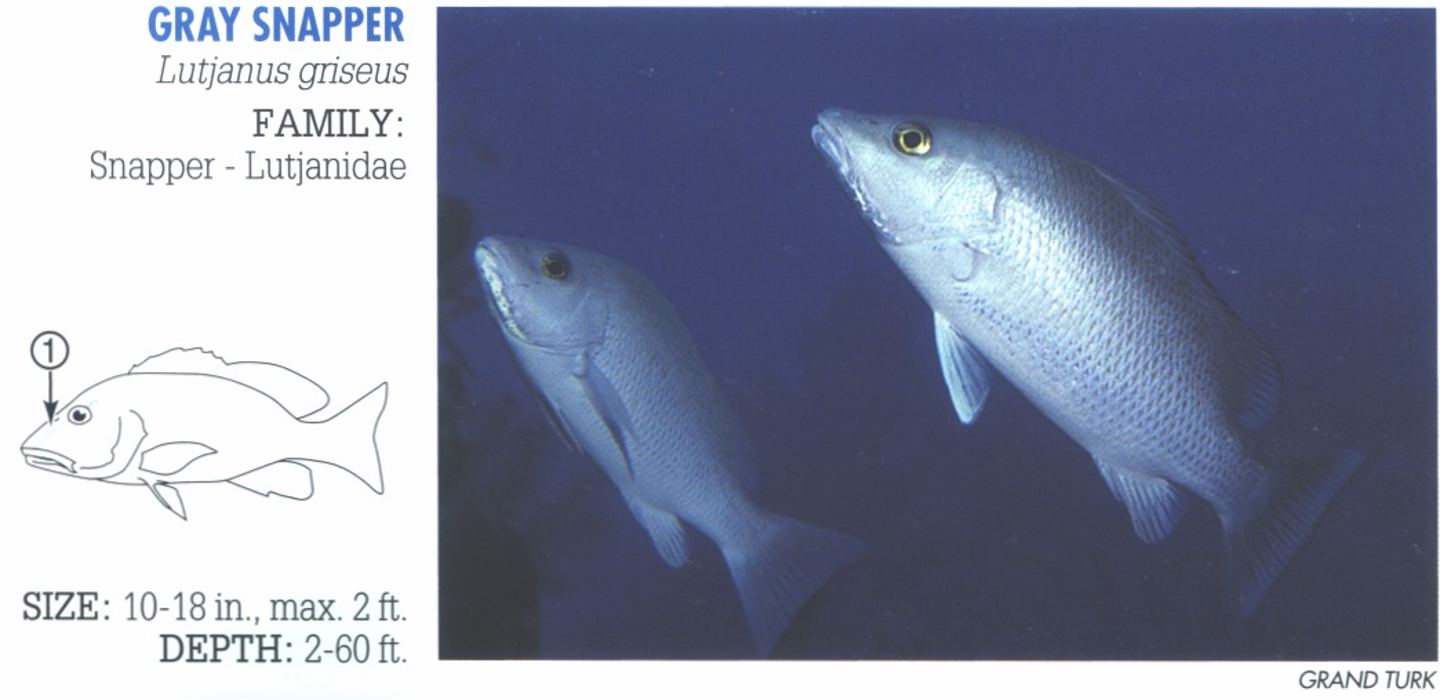
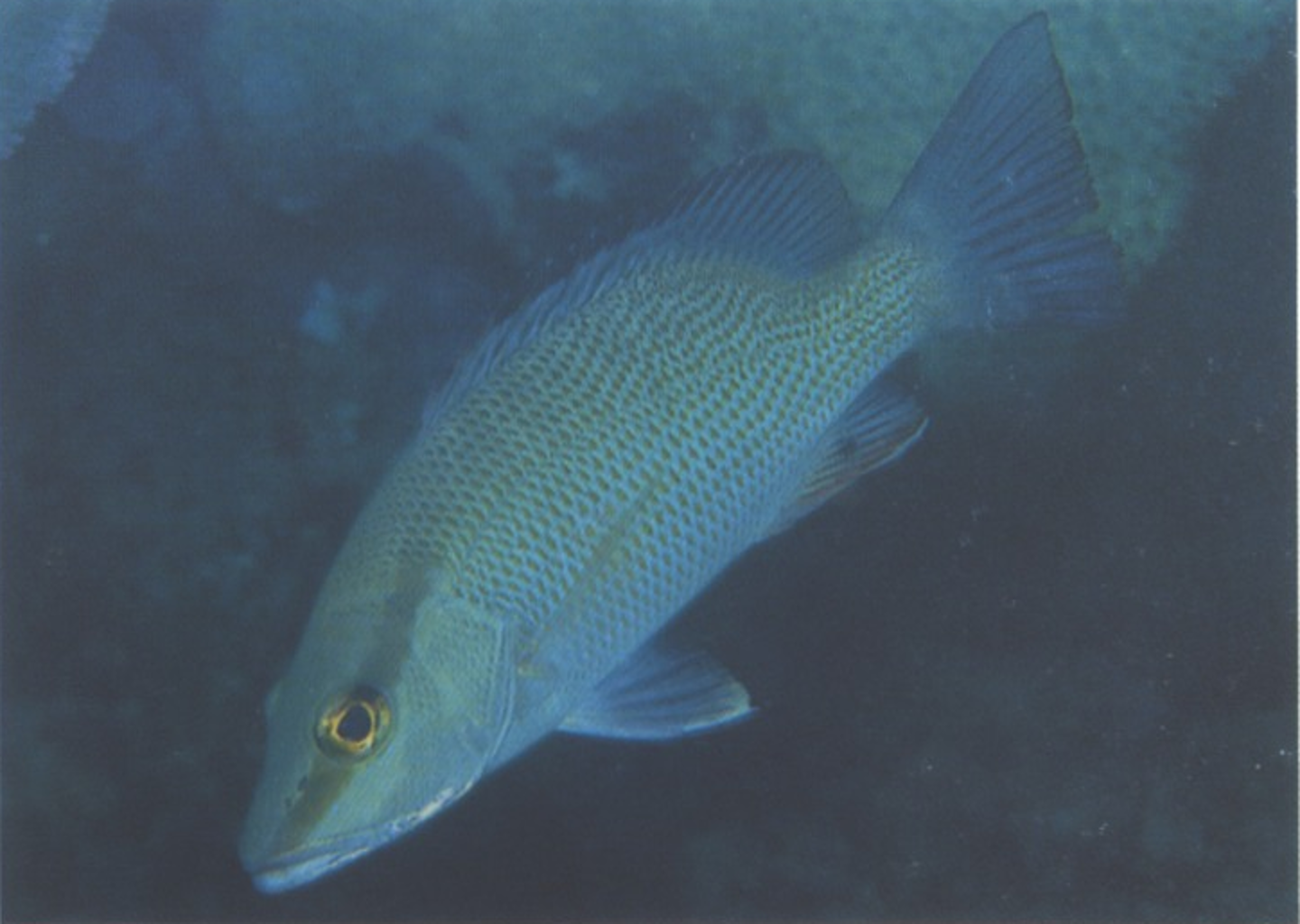
Often no distinguishing features; identification can be by process of elimination. (Similar Cubera Snapper, L. cyanopterus, distinguished by large size, blunter head and more pronounced lips.) 1. Darkish band occasionally runs from lip across eye.
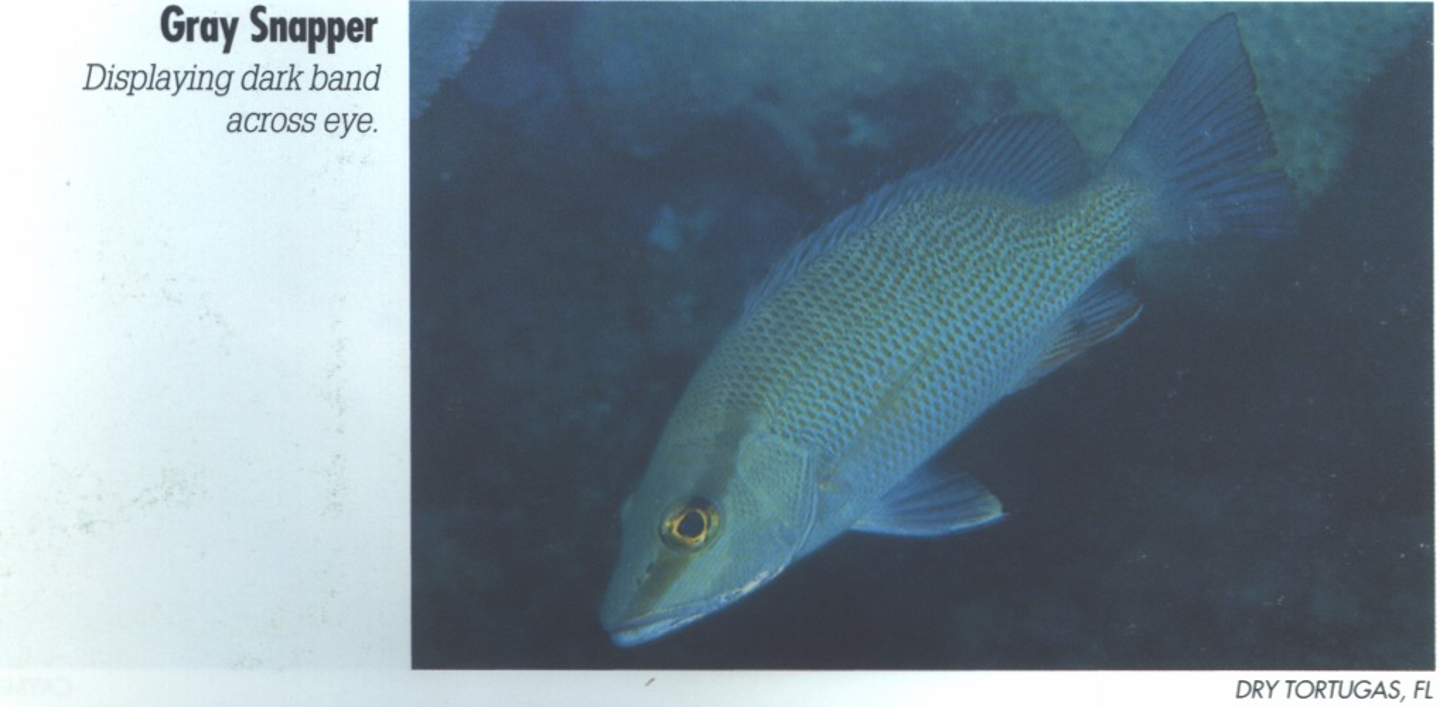
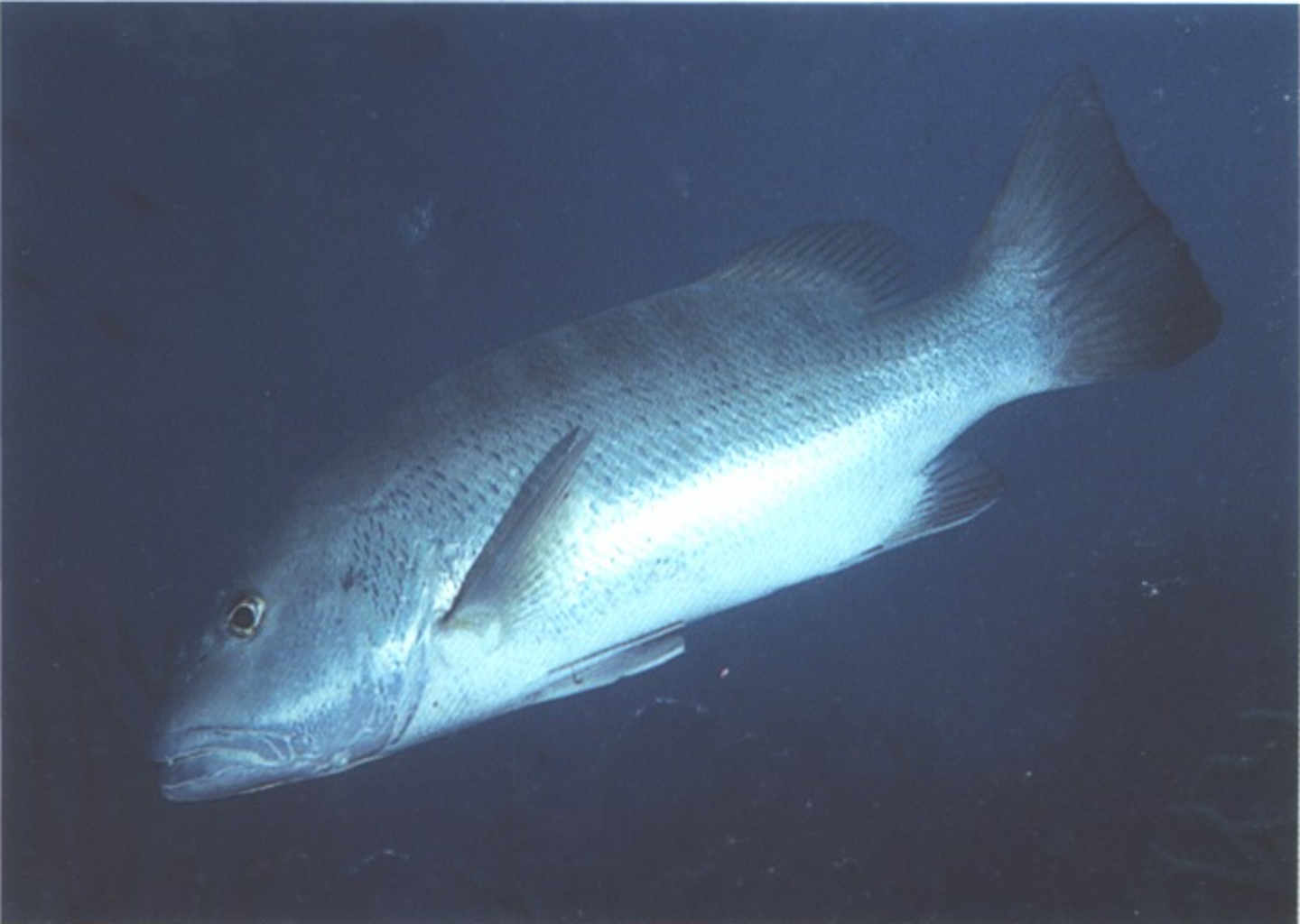
Often no distinguishing features; identification can be by process of elimination. (Similar Gray Snapper, L. griseus, distinguished by smaller size, more elongated head and smaller lips.) 1. Thick lips. 2. Occasionally have pale bars on back. (Never have bar and across eye like similar Gray Snapper or triangular patch like Dog Snapper, L. jocu.)
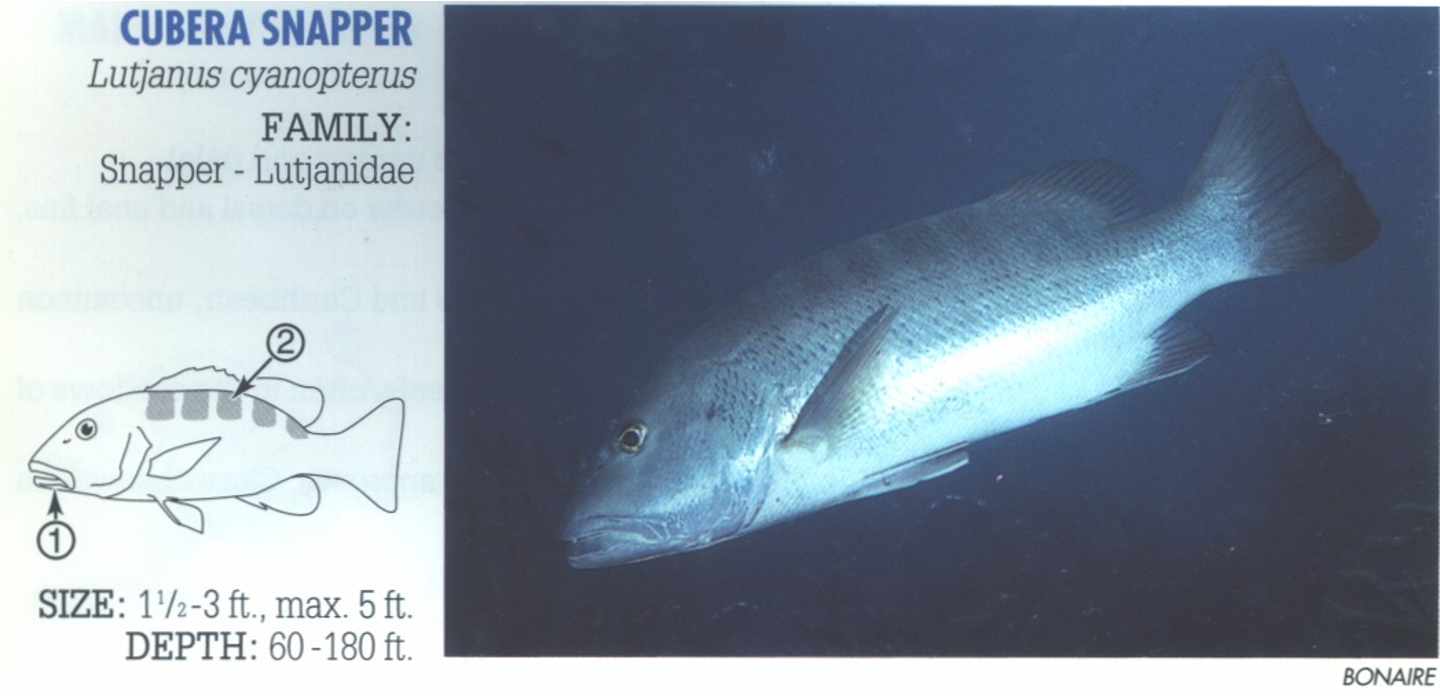
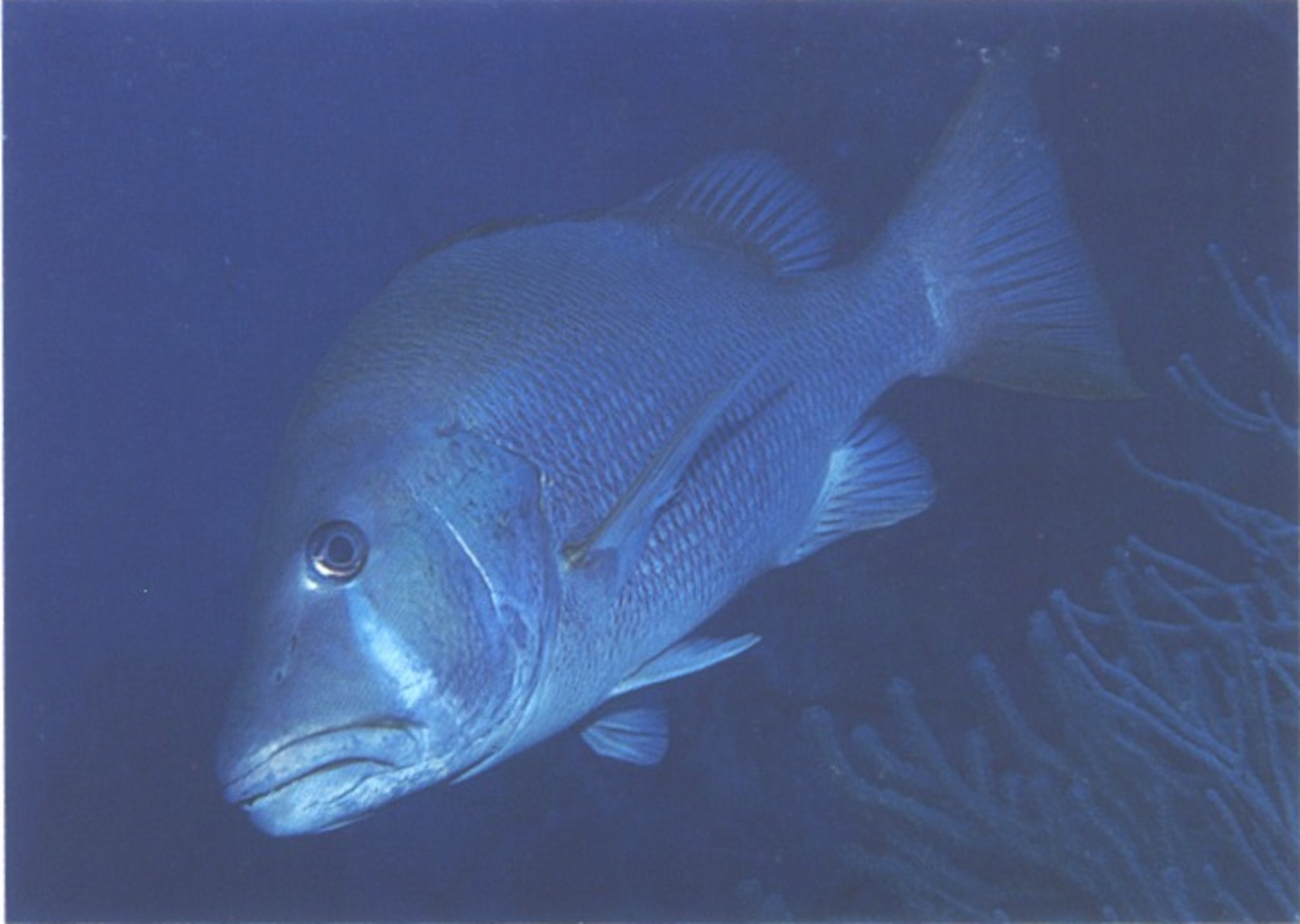
1. Pale triangular patch under eye.
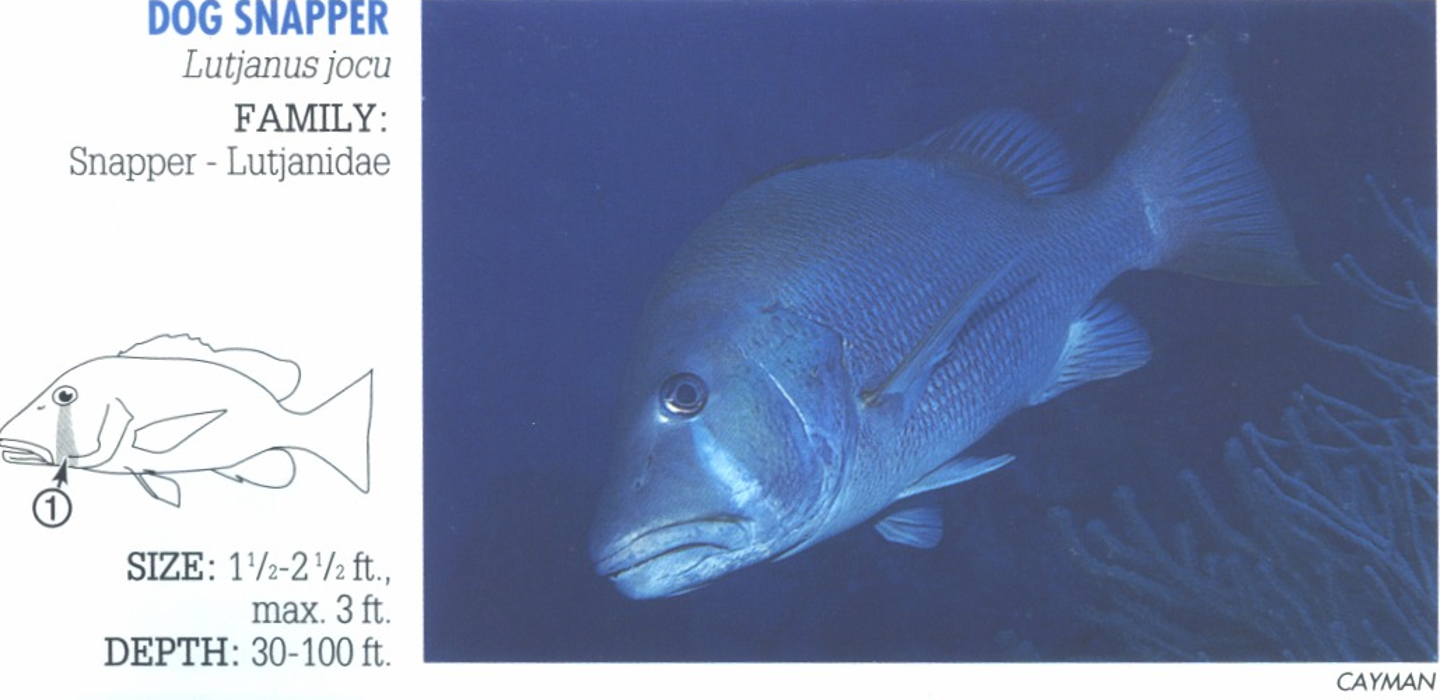
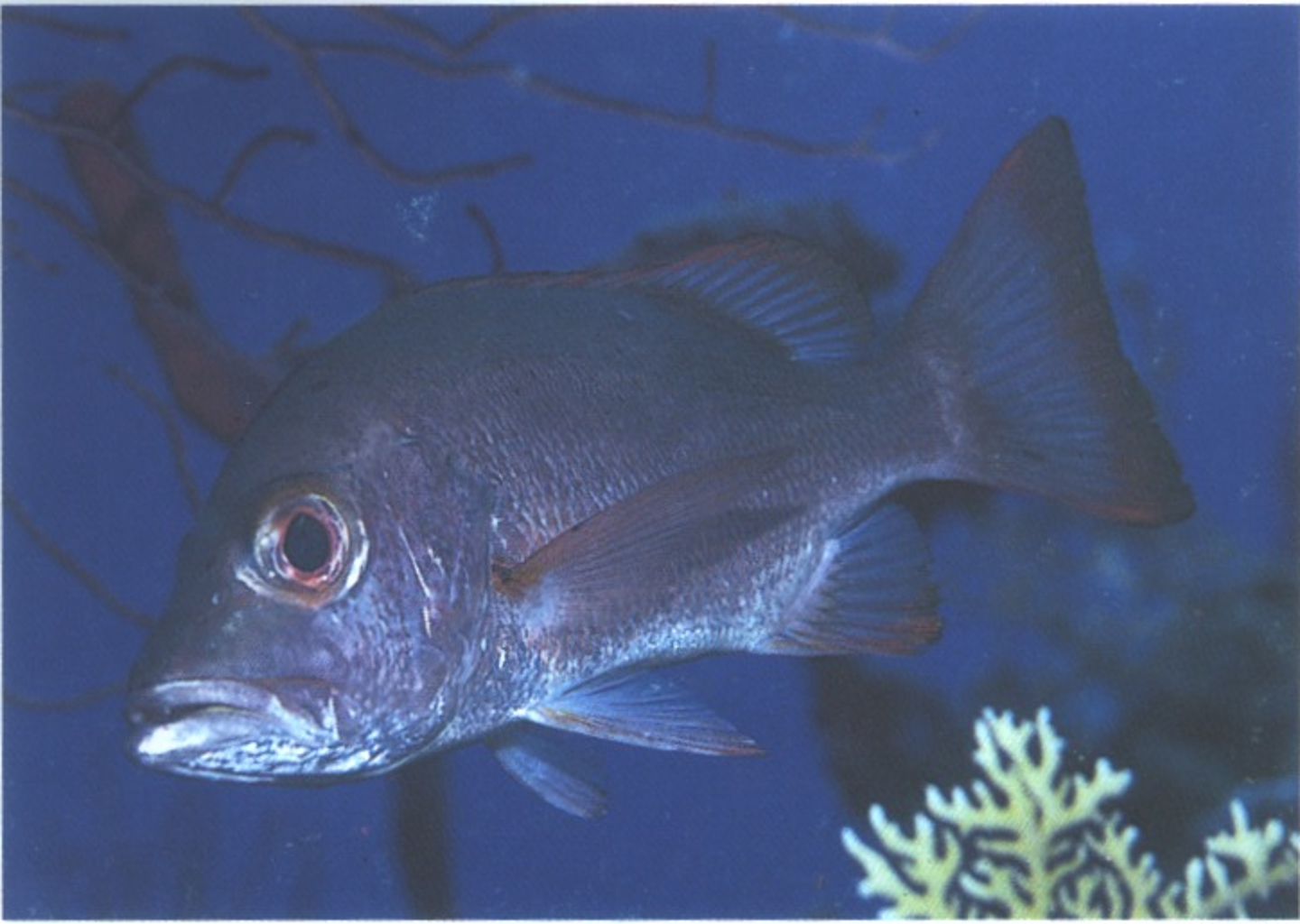
1. Reddish margin on tail (may be quite narrow and pale).
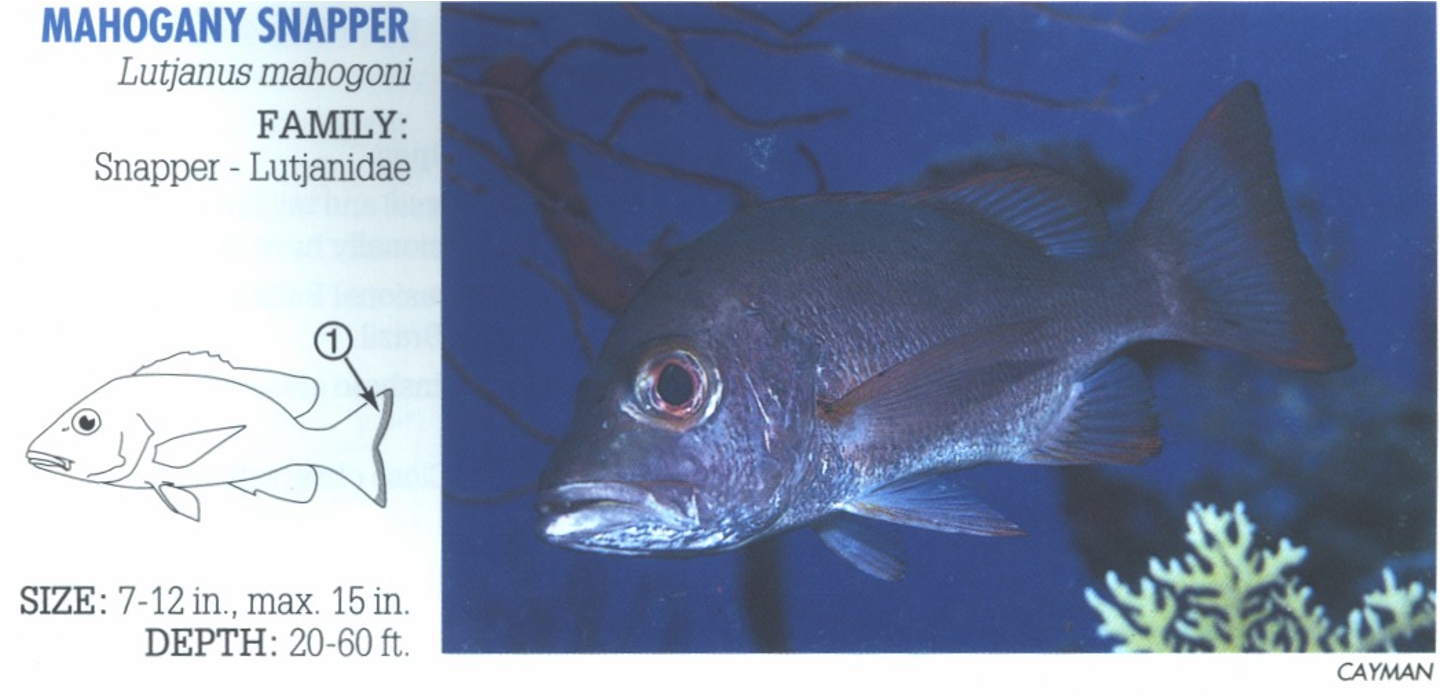
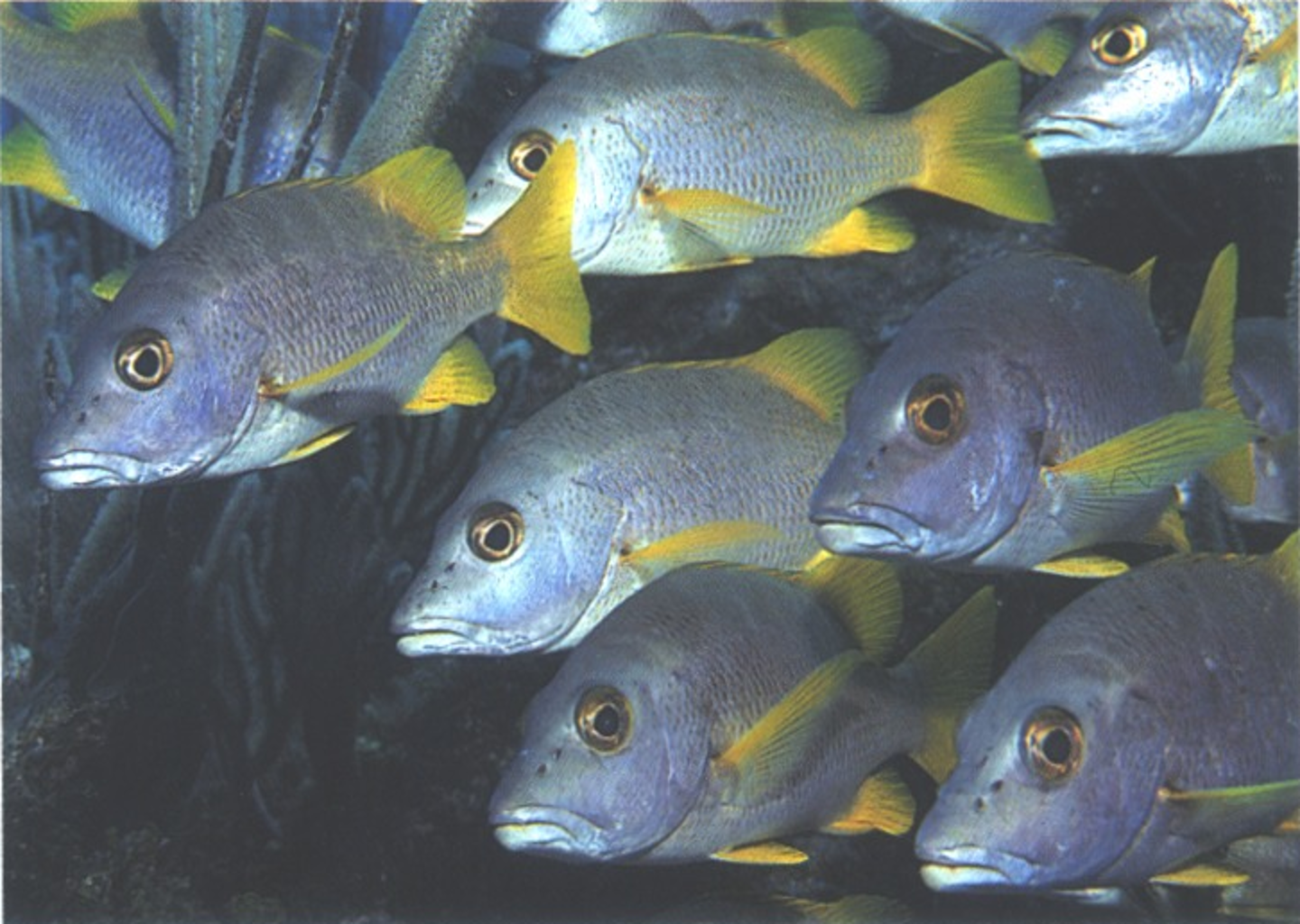
1. Fins yellow.
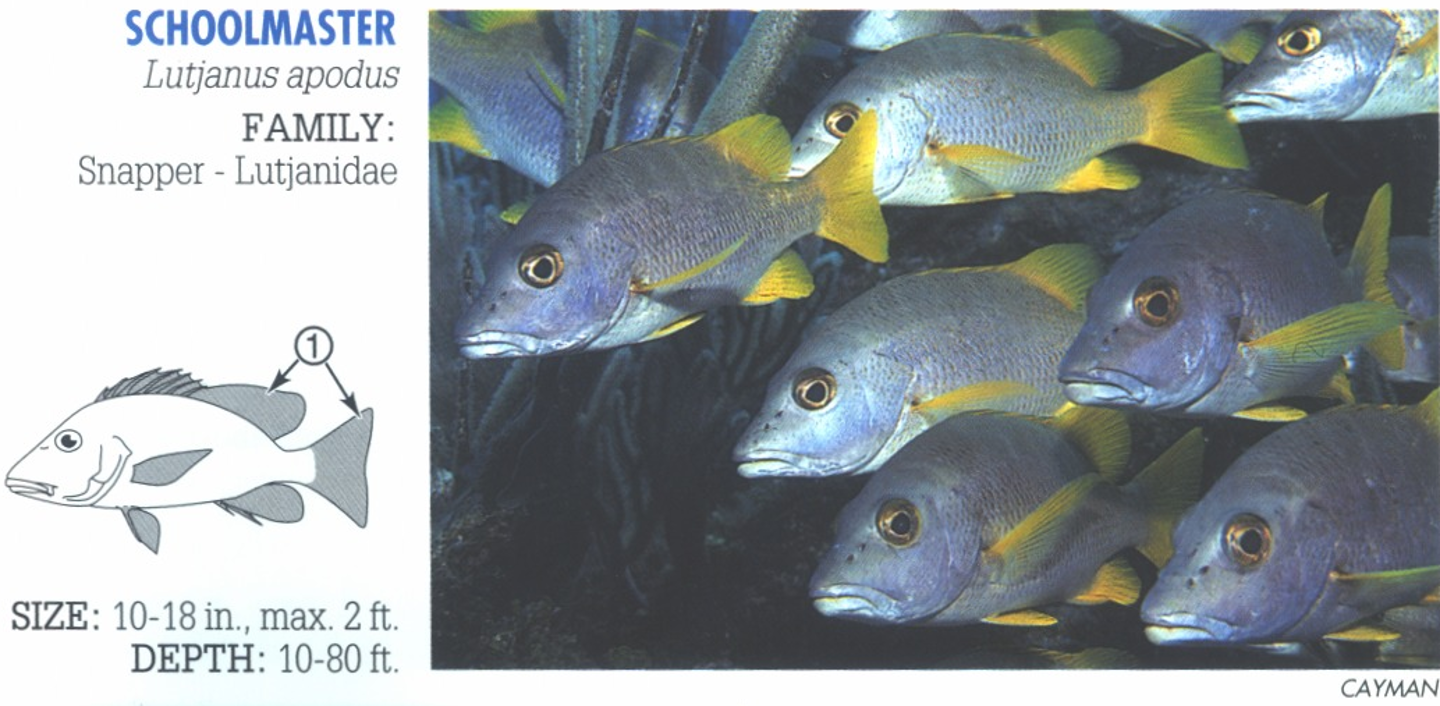
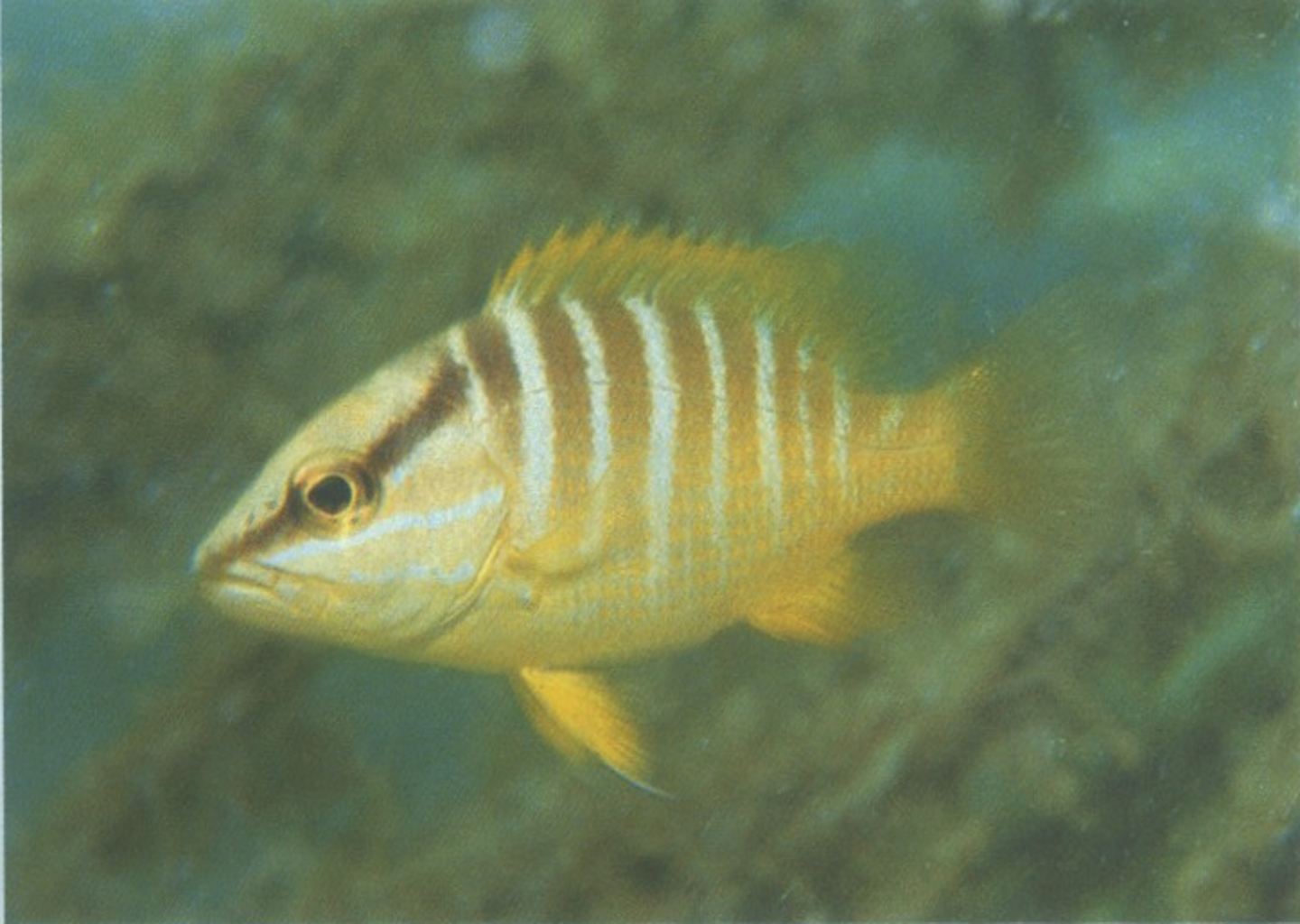
JUVENILE: 2. Bars on back.
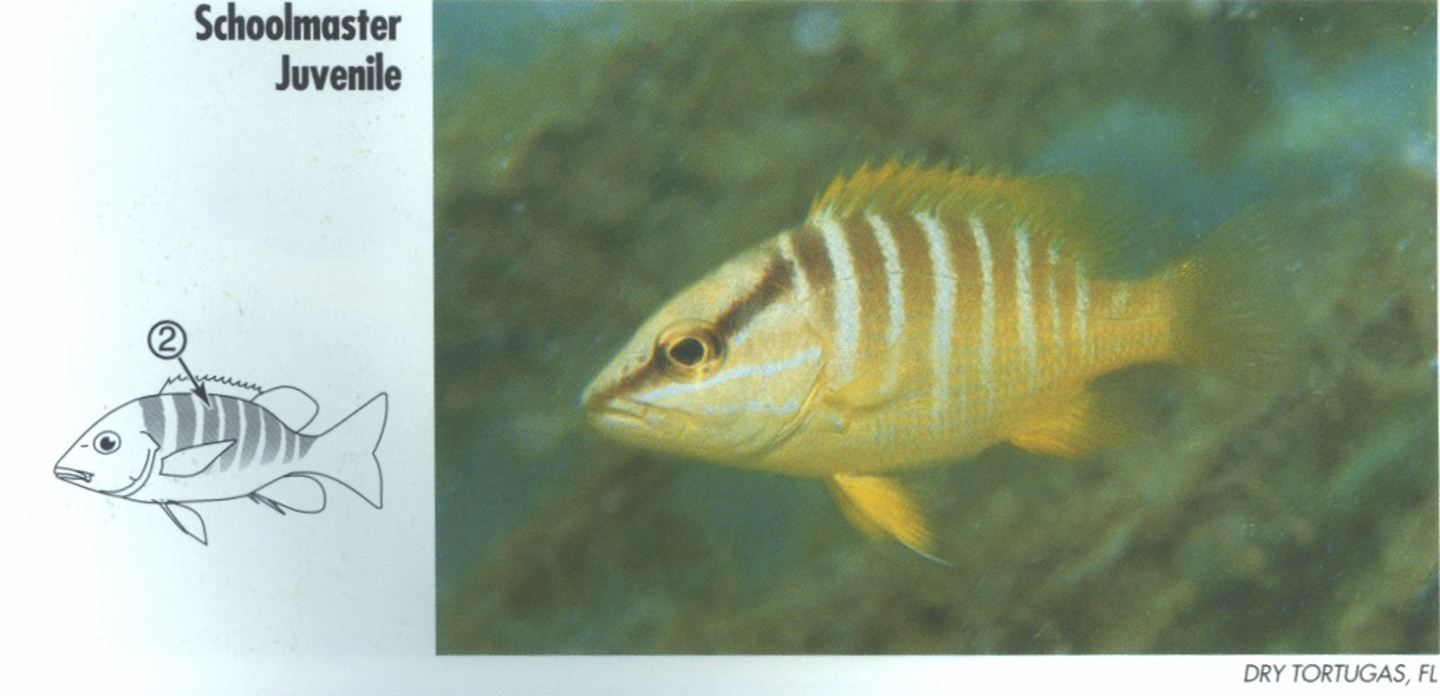
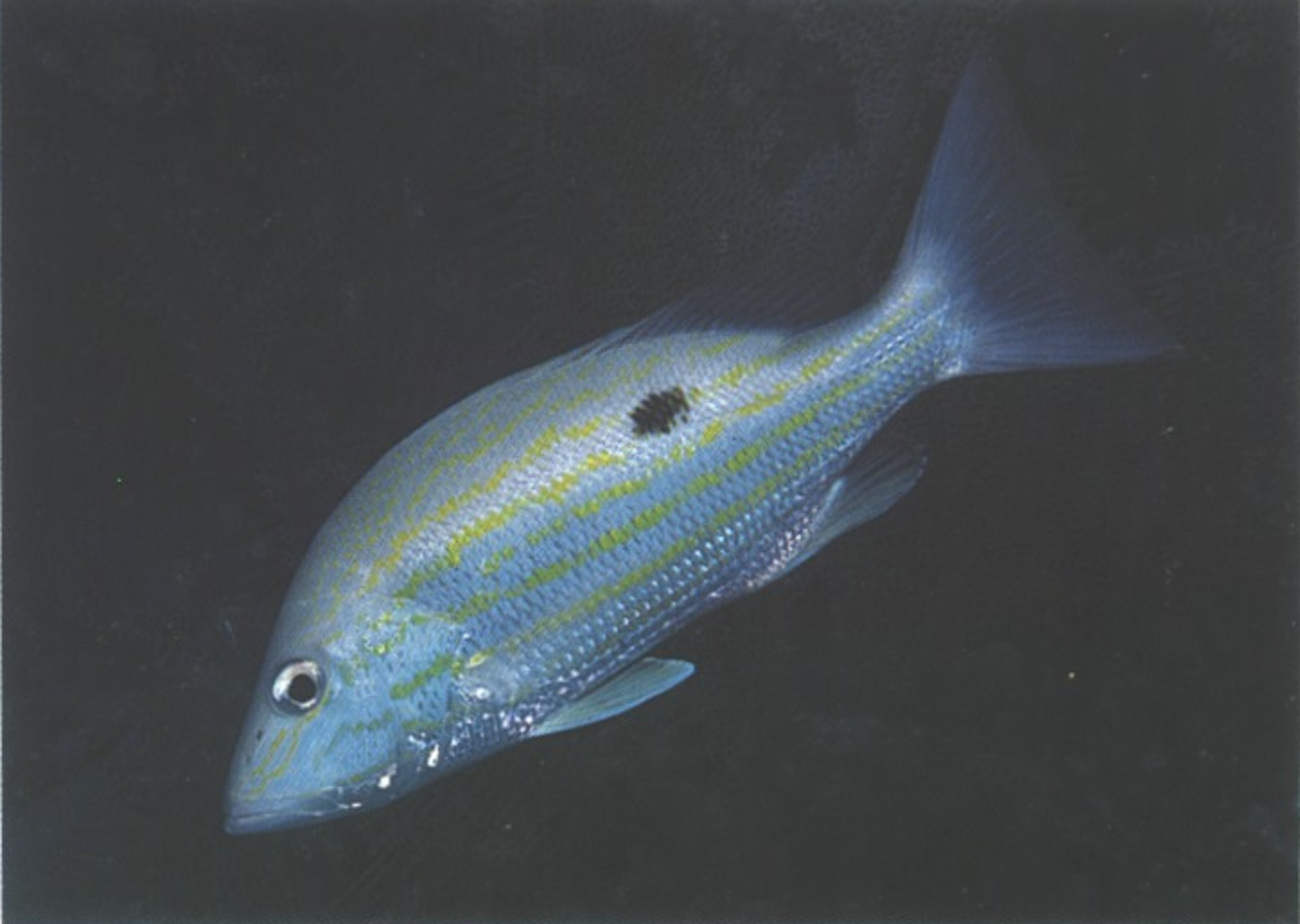
1. Several faint yellow to pink body stripes.
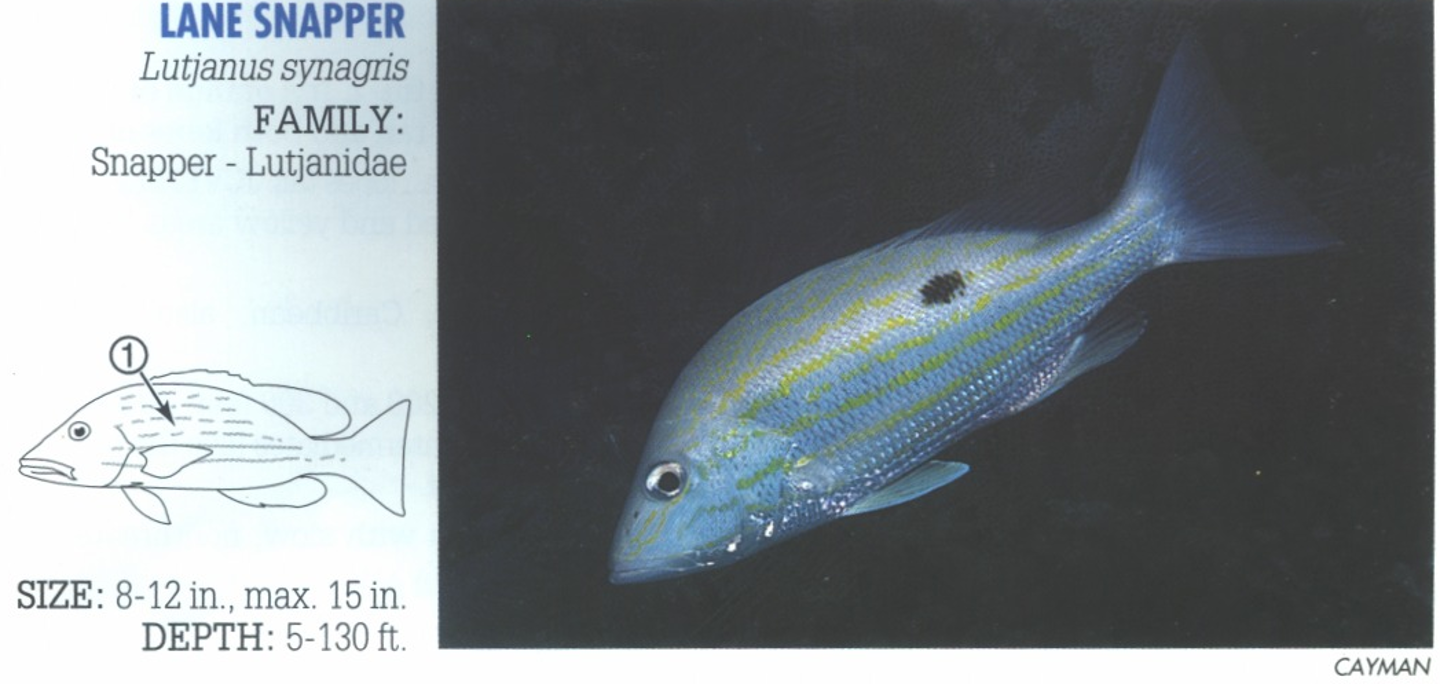
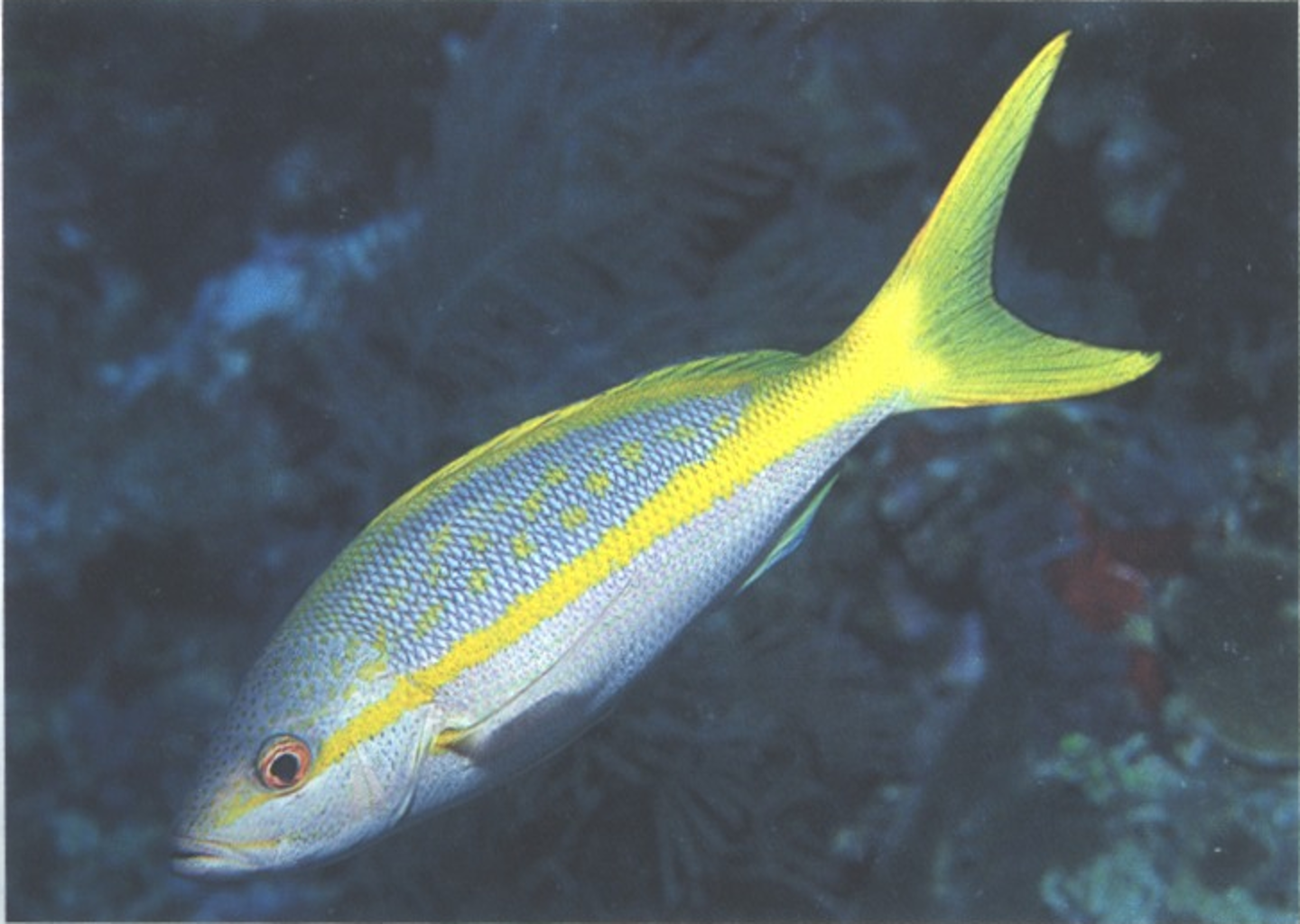
1. Brilliant yellow midbody stripe and tail.
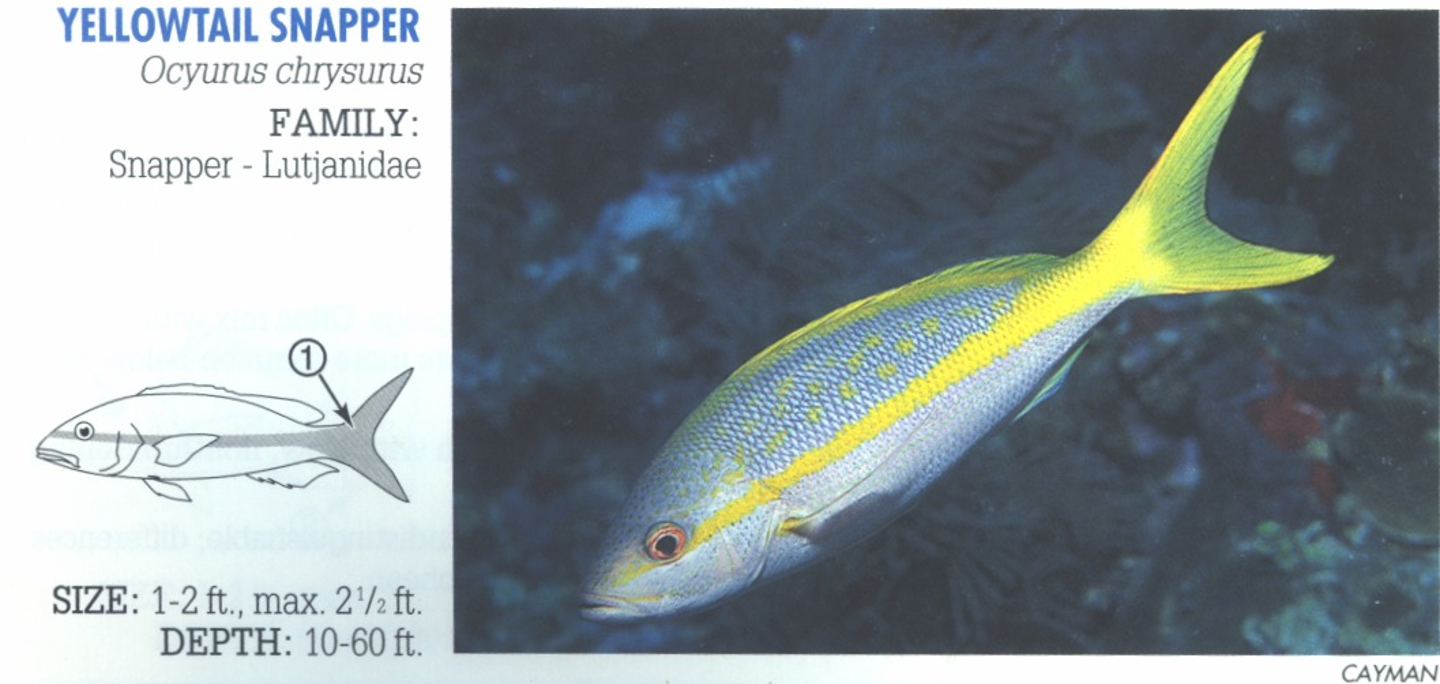
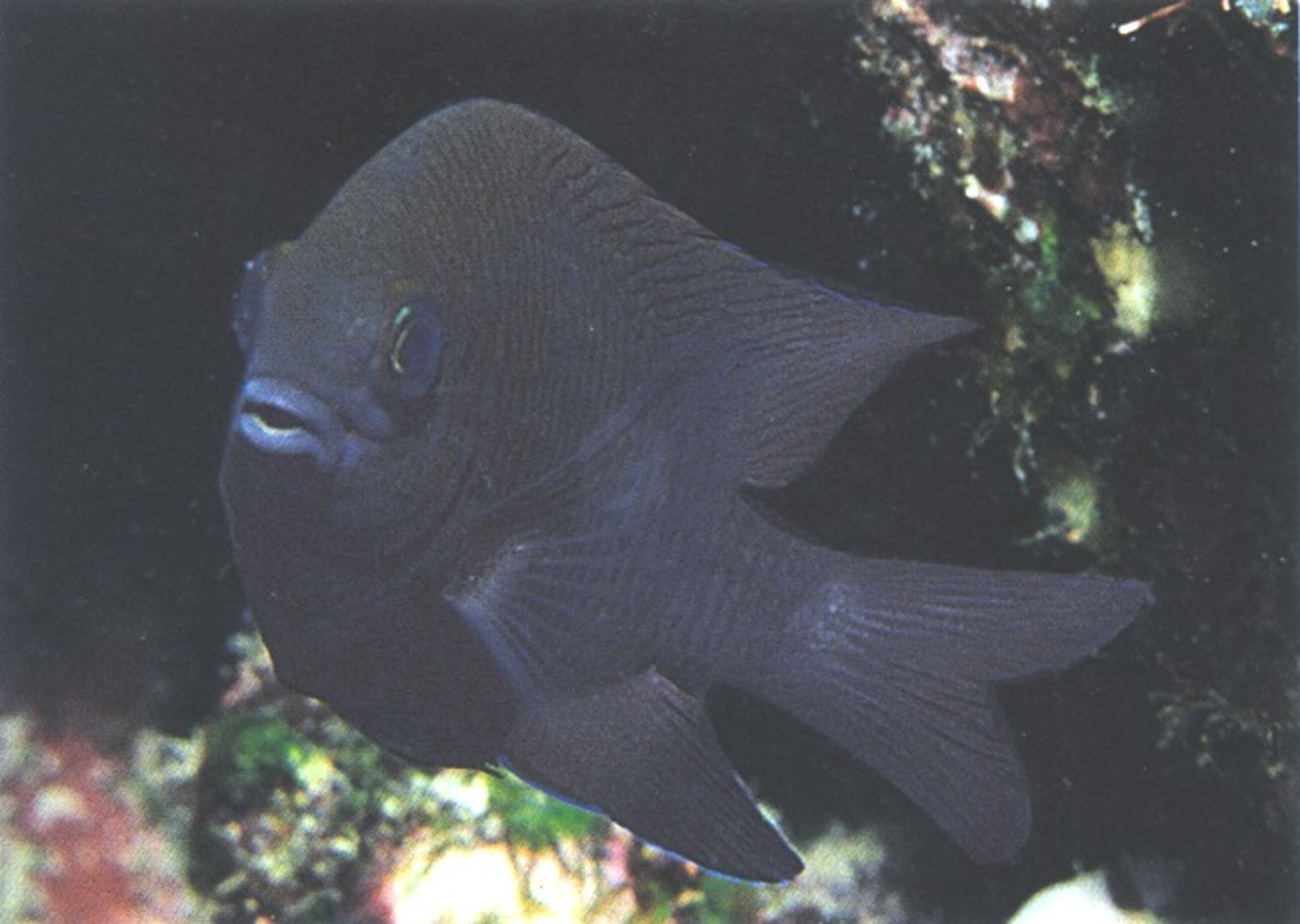
1. Dorsal and anal fins elongated and pointed, extending well beyond base of tail. (Difficult to distinguish from other similar adult damselfish, especially the Dusky Damselfish, S. fuscus, with shorter rounded fins.)

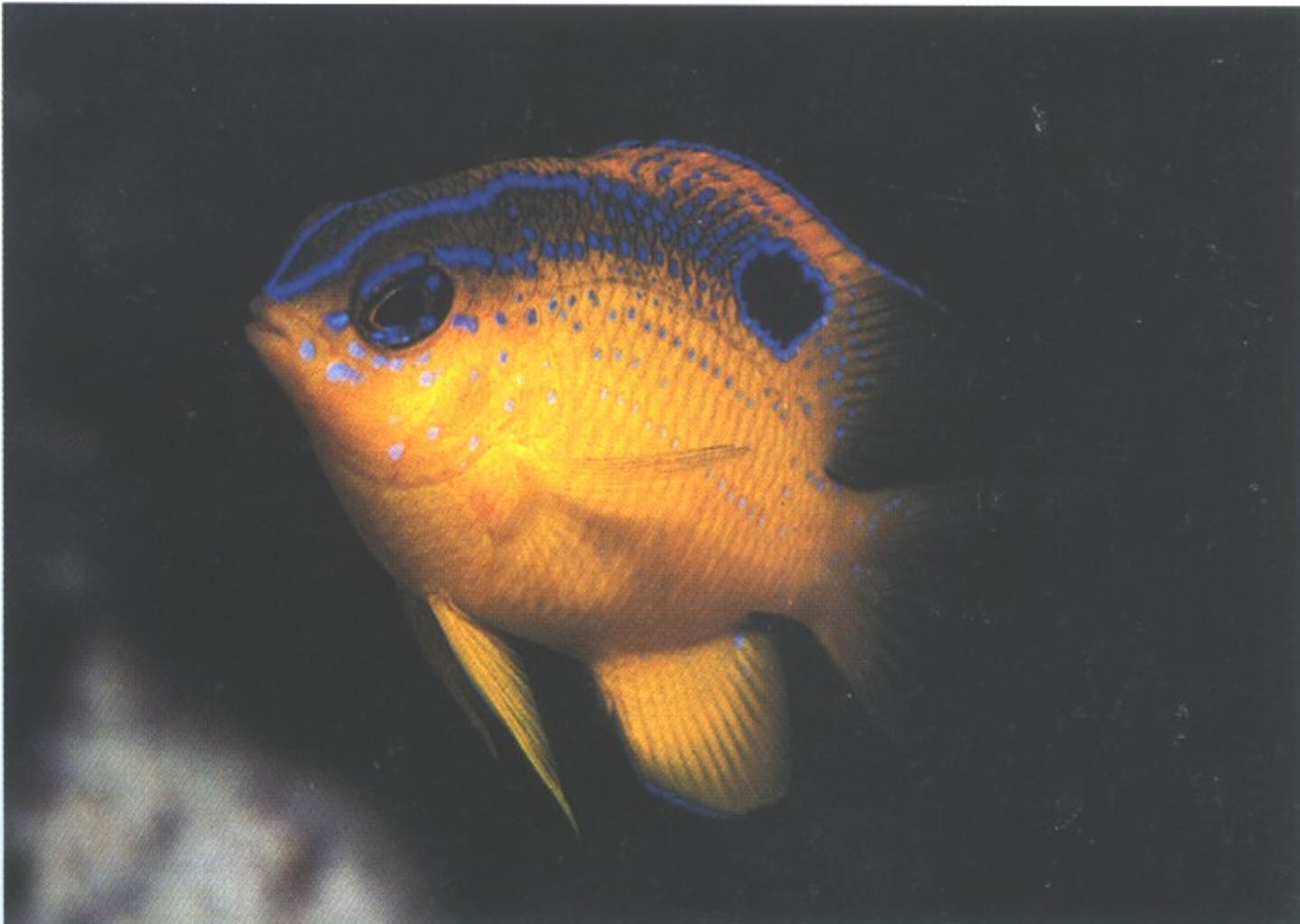
JUVENILE: Yellow-gold. 2. Brilliant blue lines run from snout across nape and down back. (Similar Cocoa, S. variabilis, and Beaugregory, S. leucostictus, have a blue wash instead of distinct lines.)
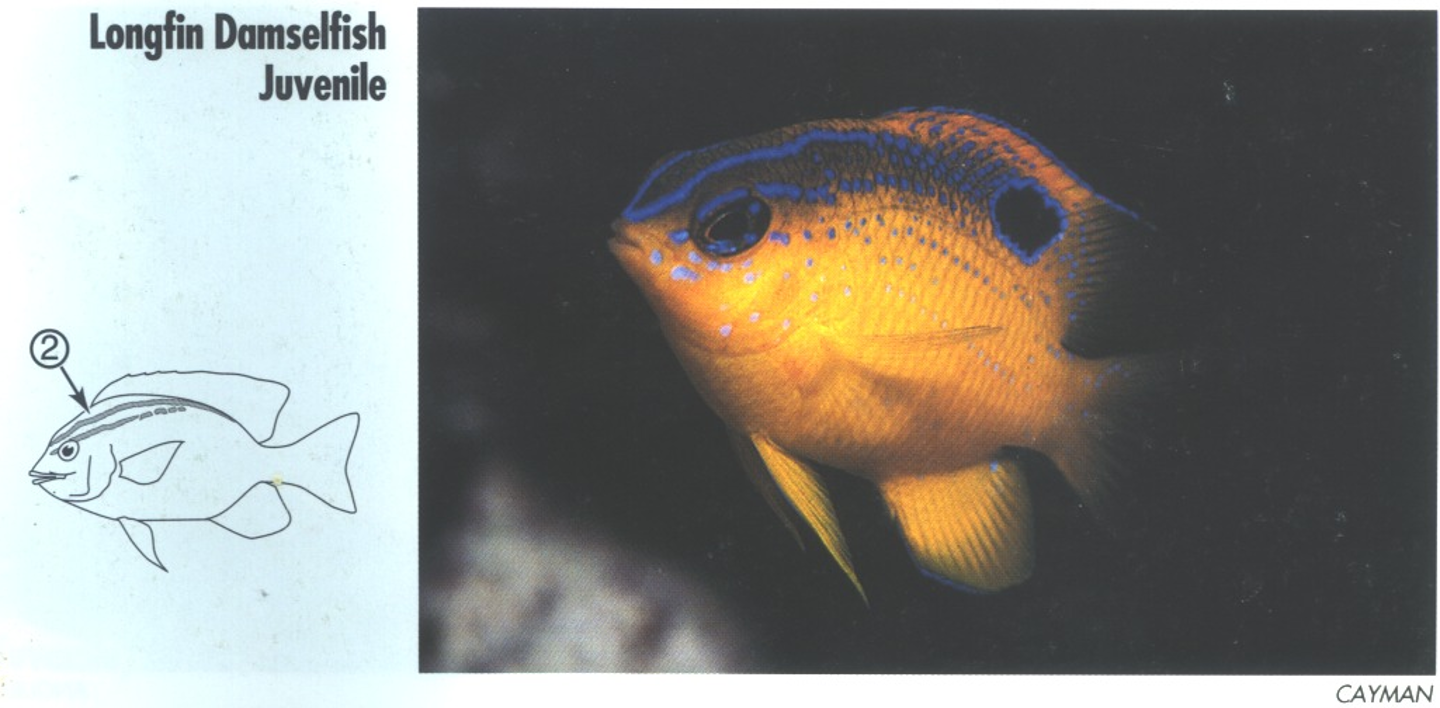
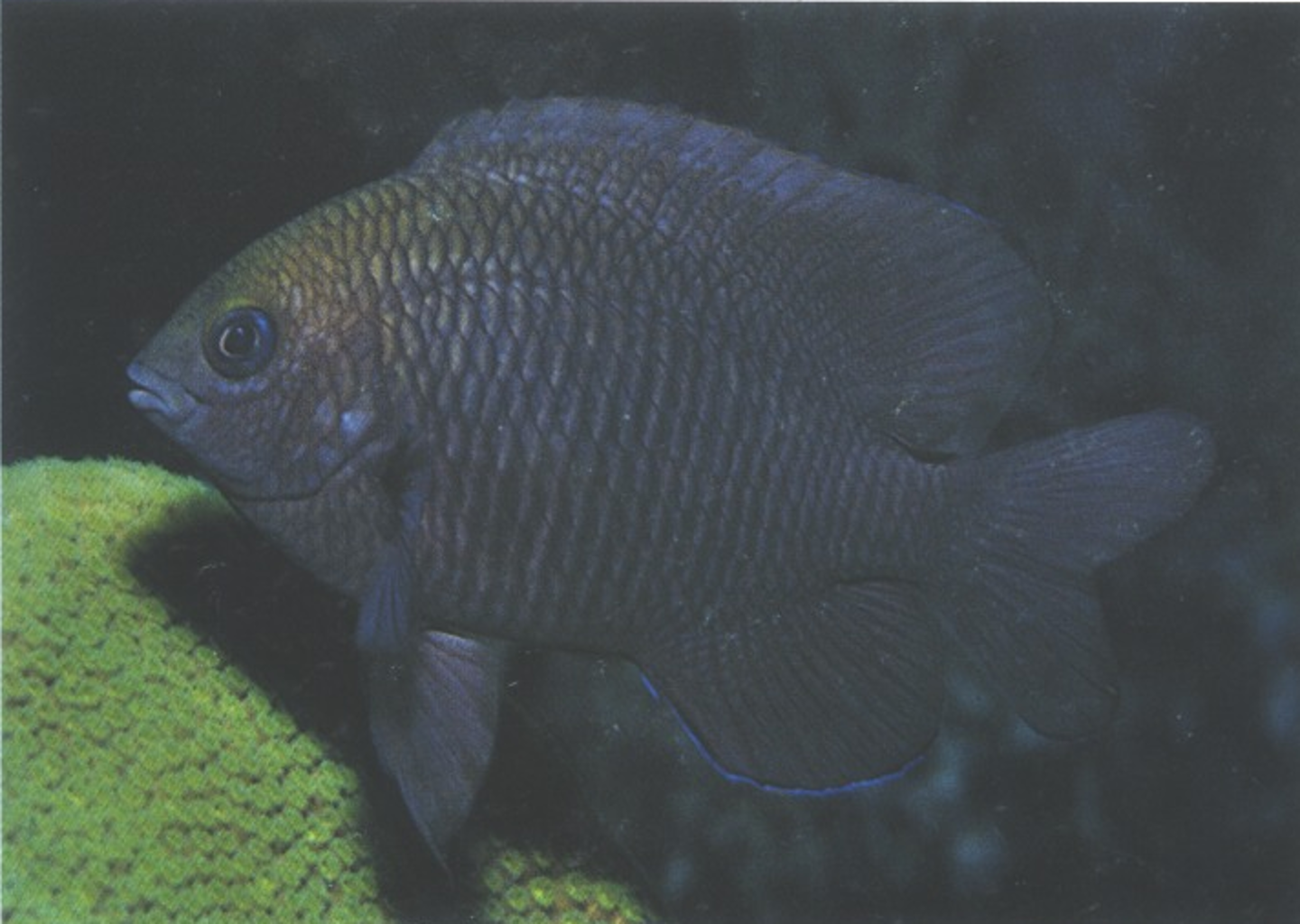
1. Dorsal and anal fins rounded and rarely extend beyond base of tail. (Difficult to distinguish from other similar adult damselfish, especially the Longfin Damselfish, E. diencaeus, with longer pointed fins.)
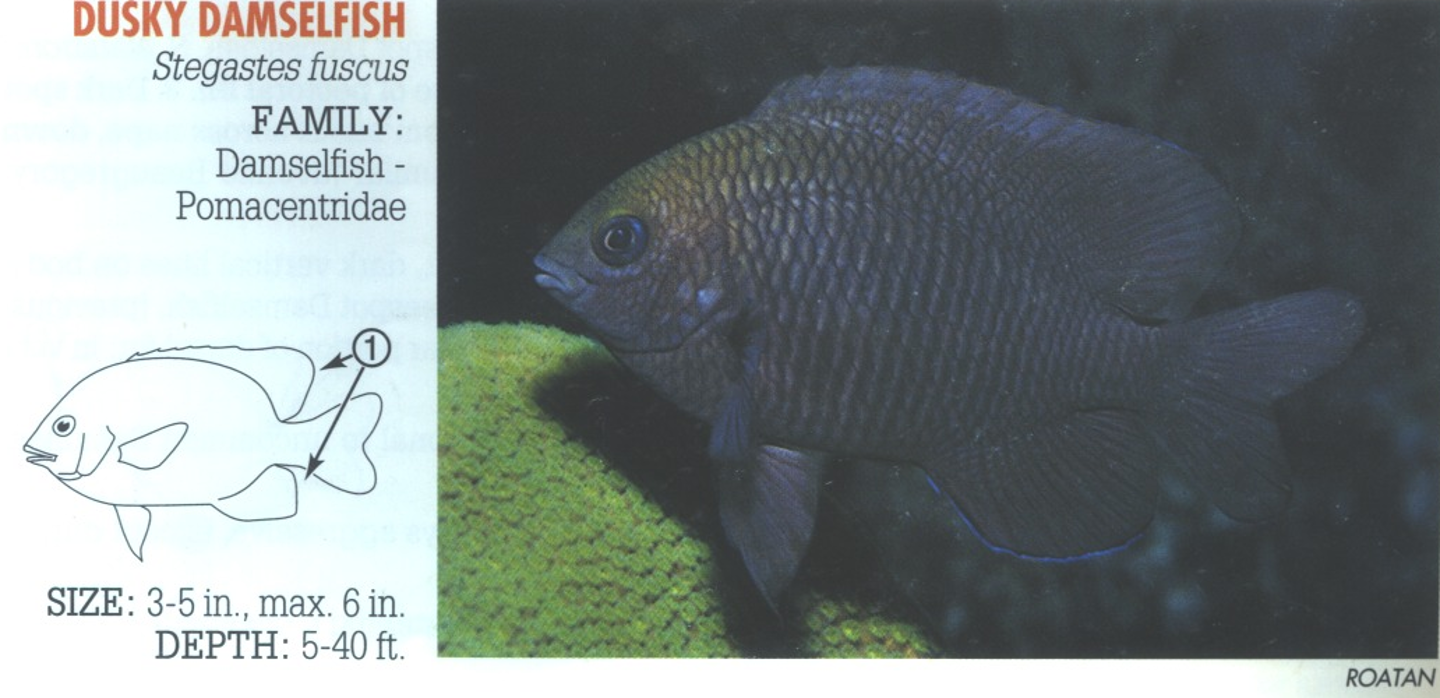
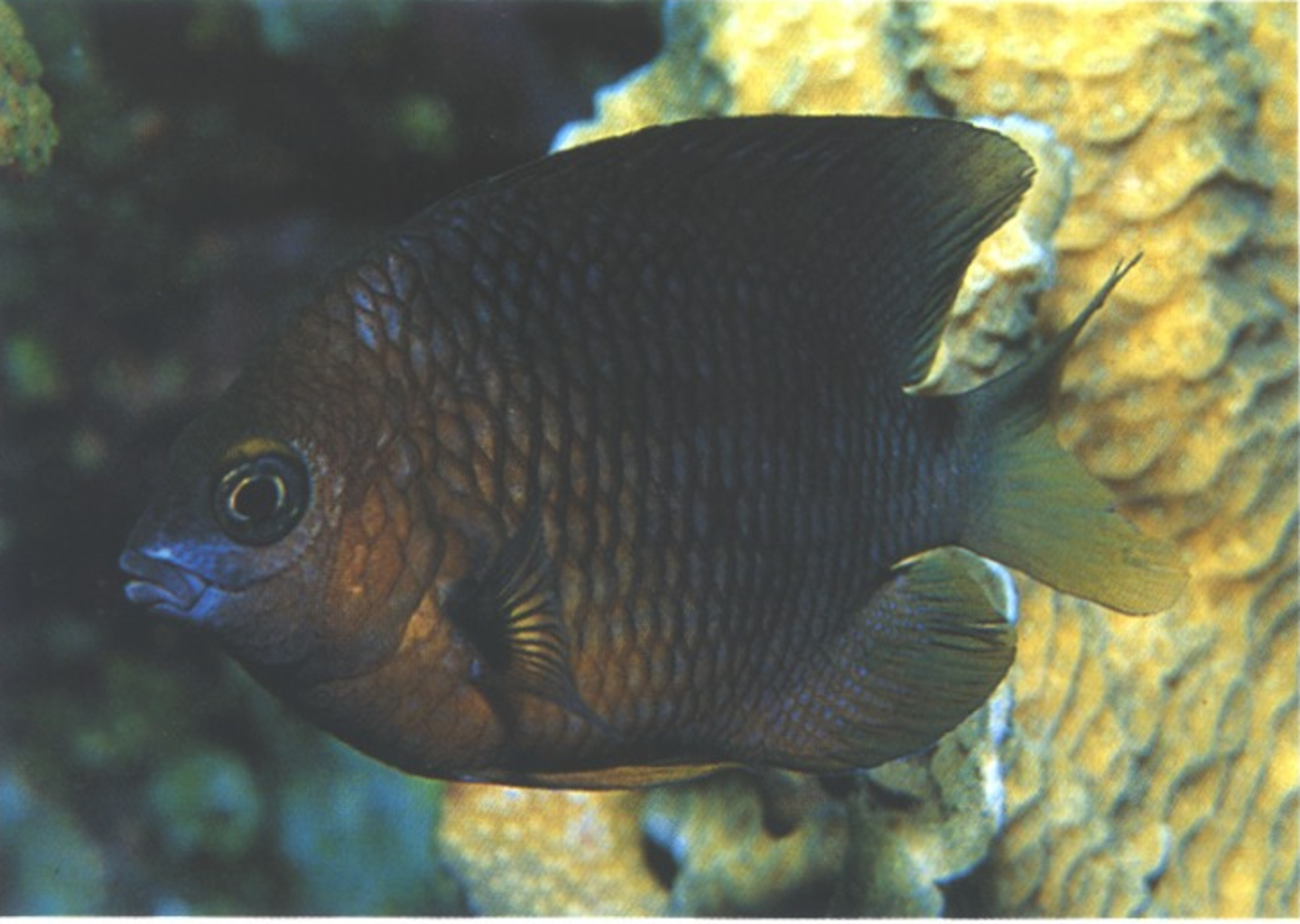
1. Yellow-gold crescent above eyes. 2. Dark spot on base of pectoral fin. 3. Black saddle on upper base of tail.

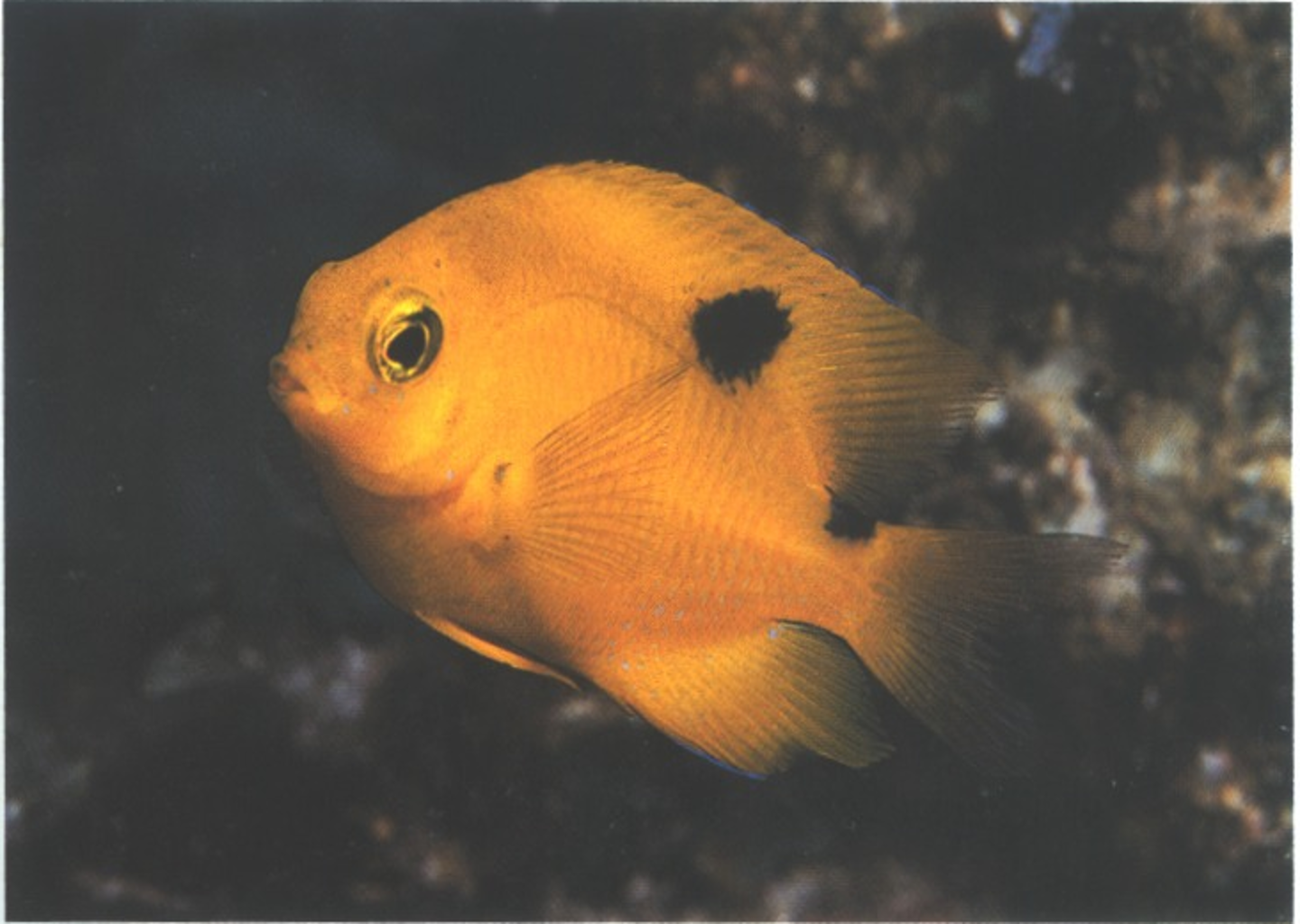
JUVENILE: 4. Black saddle on upper base of tail is retained
into adulthood. 5. Larger second dot on back and dorsal fin is lost with maturity. (Similar juvenile Rock Beauty, Holocanthus tricolor, lacks dot on base of tail.)
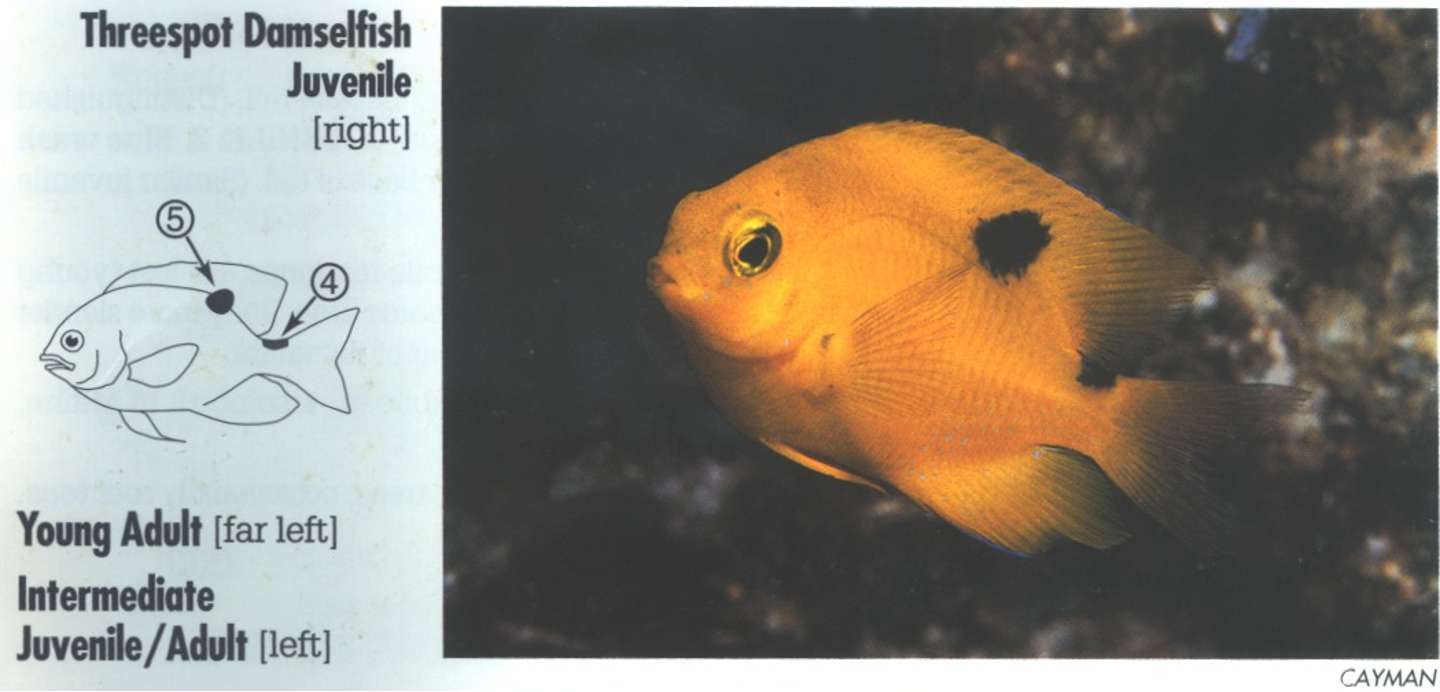
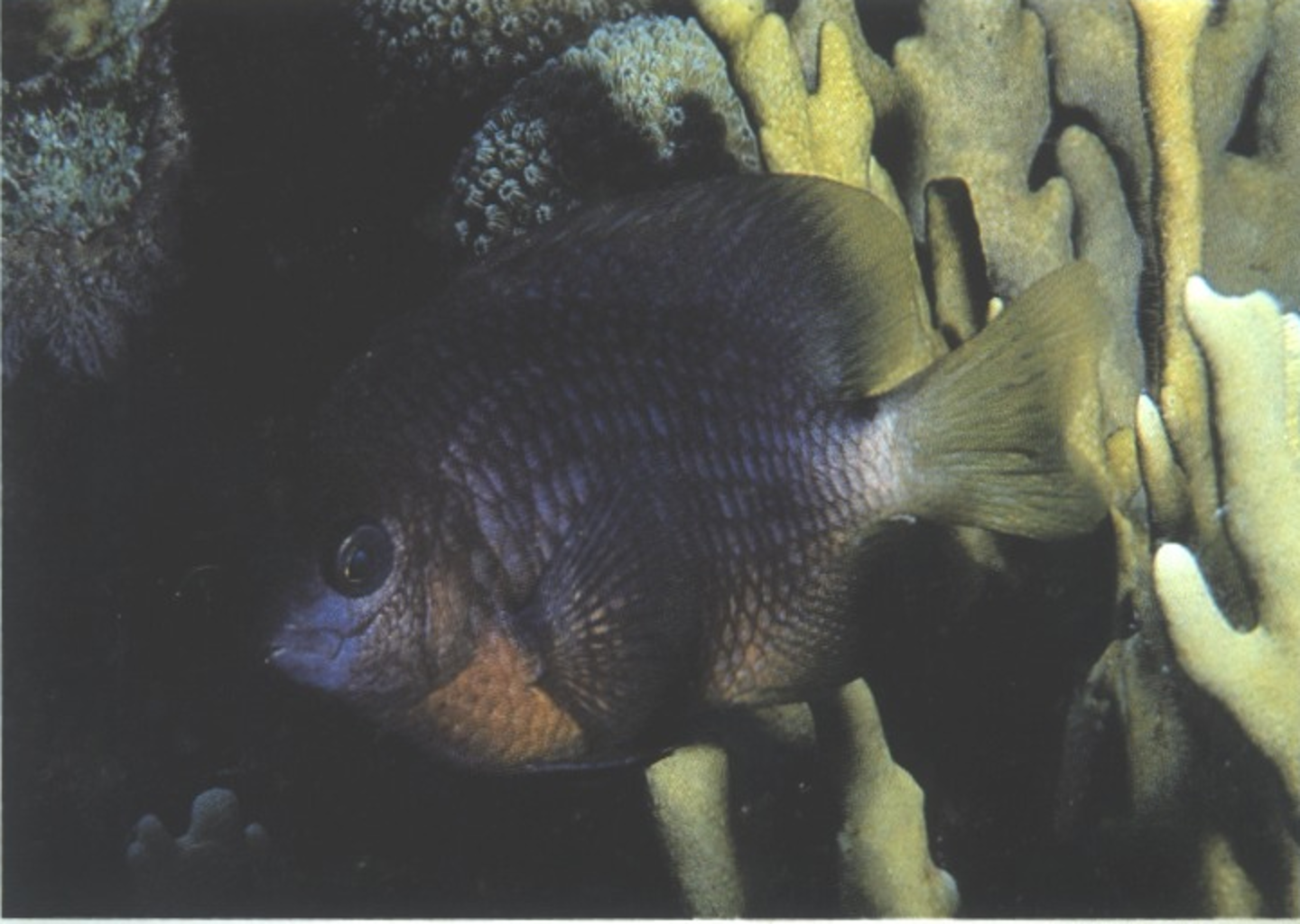
1. Area around eyes dark. (Similar Threespot Damselfish, S. planifrons, has yellow-gold crescent above eyes.) 2. Dark spot on base of pectoral fin. 3. Dark spot usually present on upper base of tail.
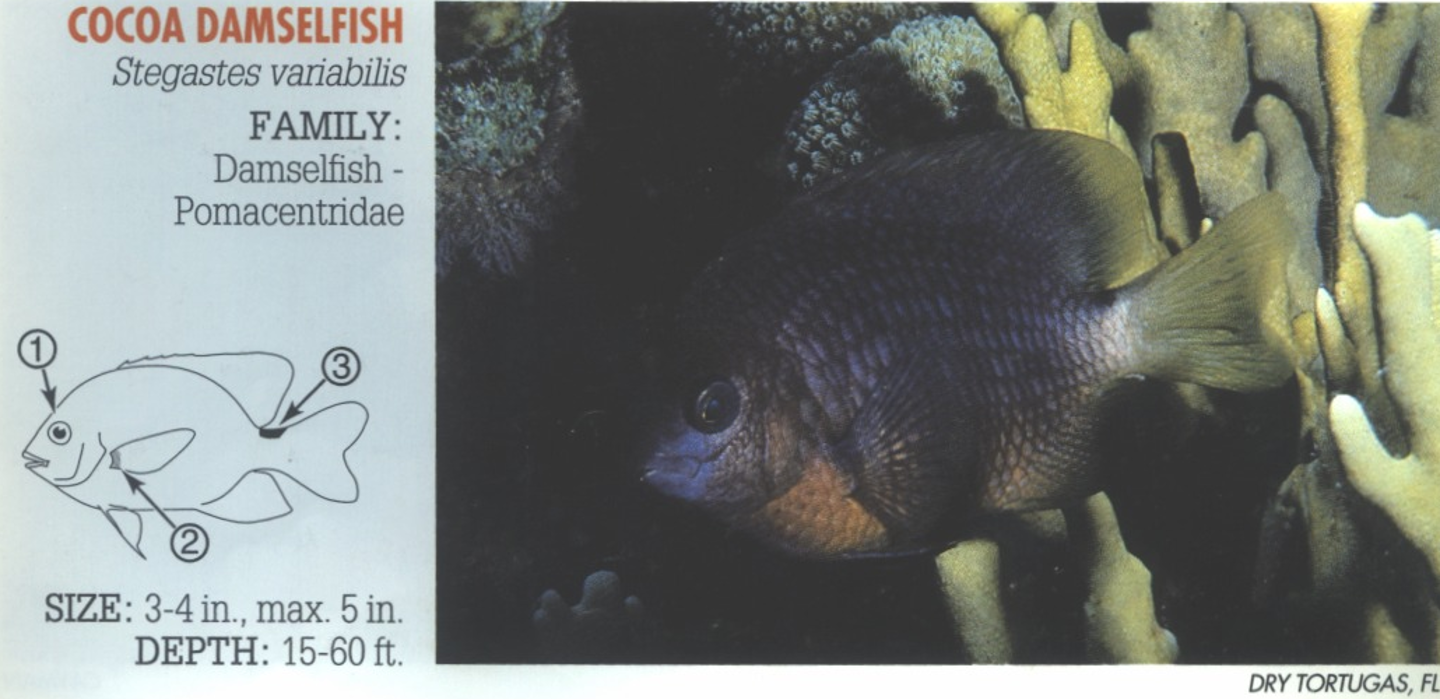
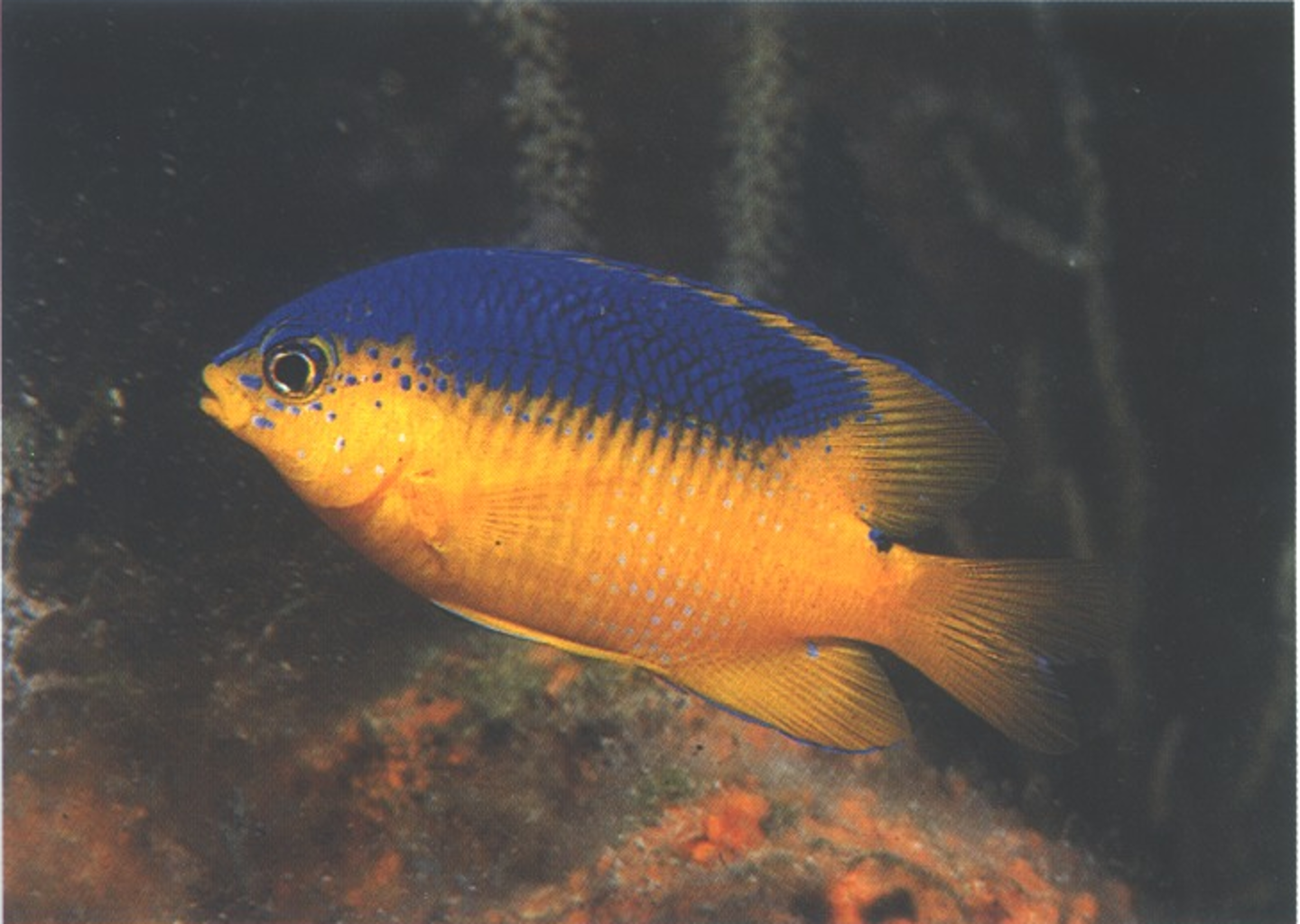
JUVENILE: 4. Blue wash from snout across nape, down the back and dorsal fin. 5. Dark spot on upper base of tail. (Similar juvenile Beaugregory, S. leucostictus, lacks this spot.)_
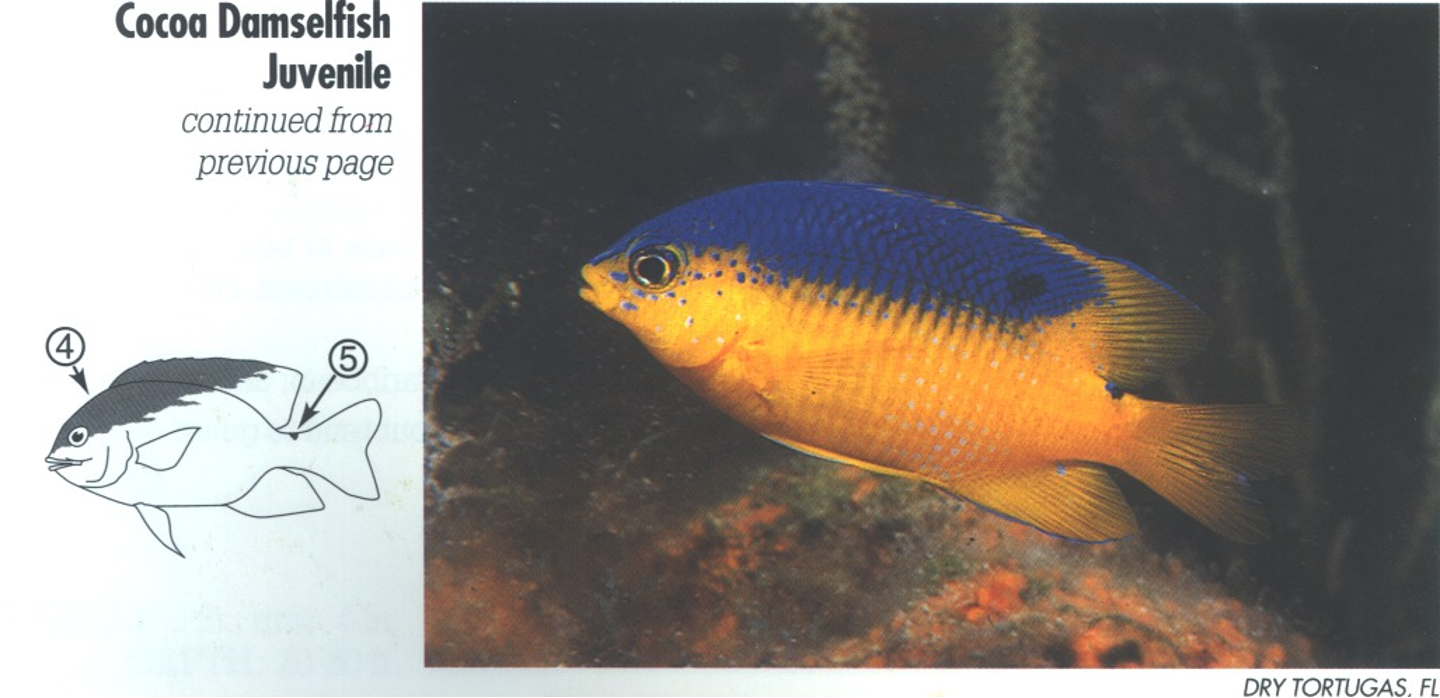

1. Pale to yellowish tail. No spot on upper base of tail. (Distinguished from similar Cocoa Damselfish, S. variabilis, which has spot.)
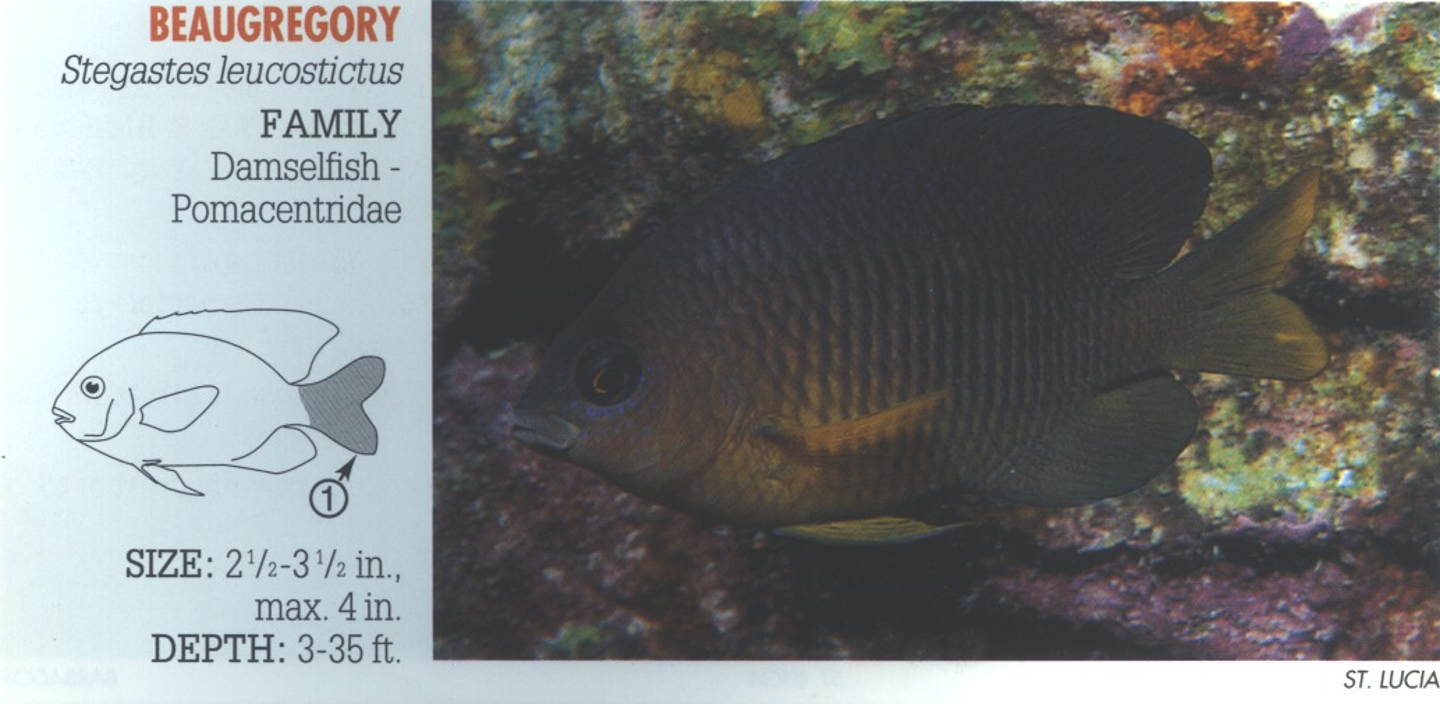
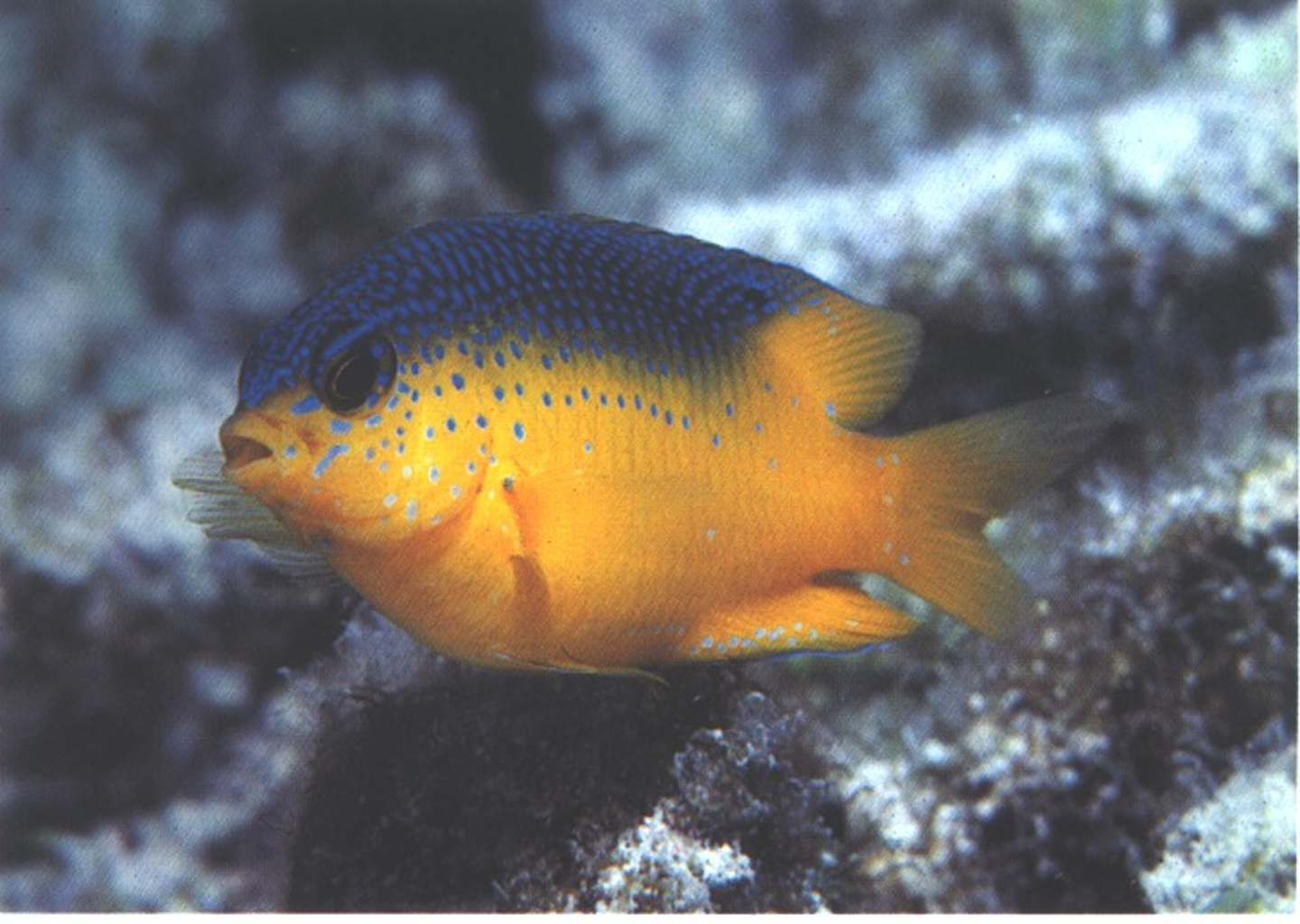
JUVENILE: 2. Blue wash from snout across snape, down back and dorsal fin. No spot on upper base of tail. (Similar juvenile Cocoa has a spot.)
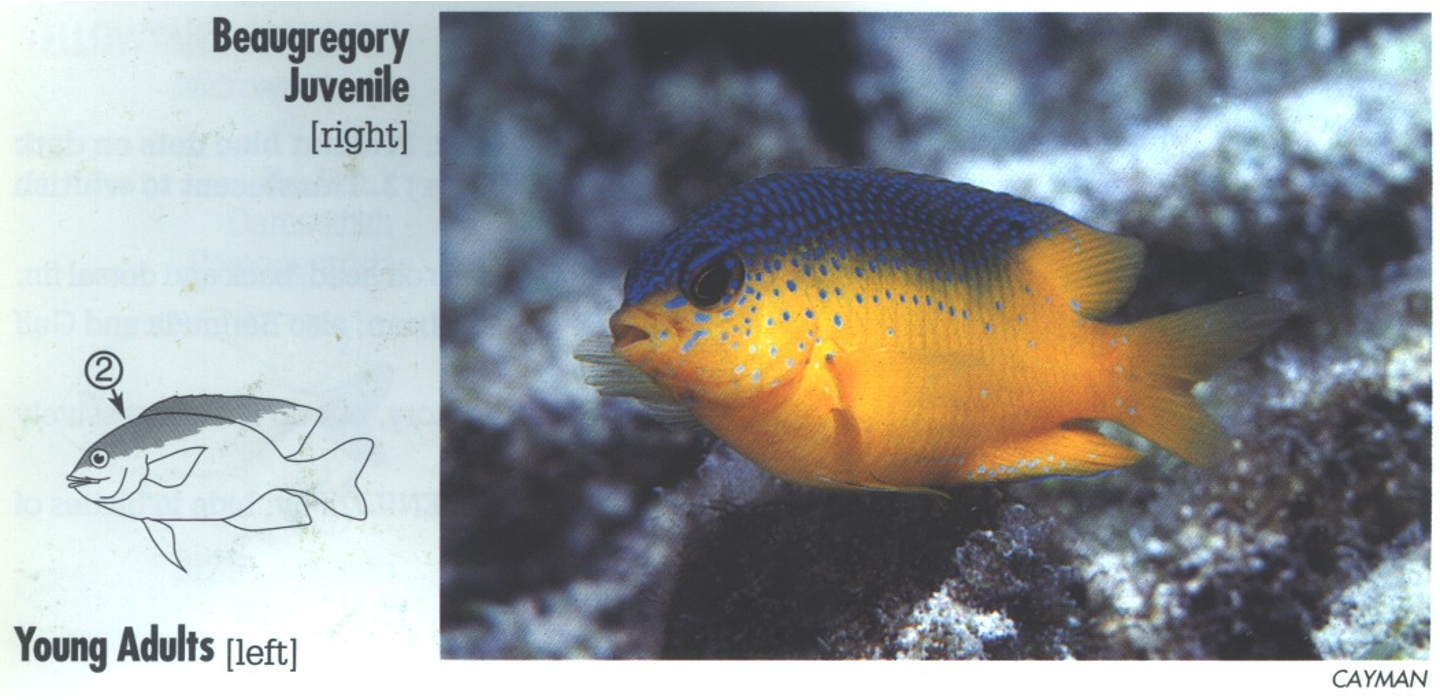
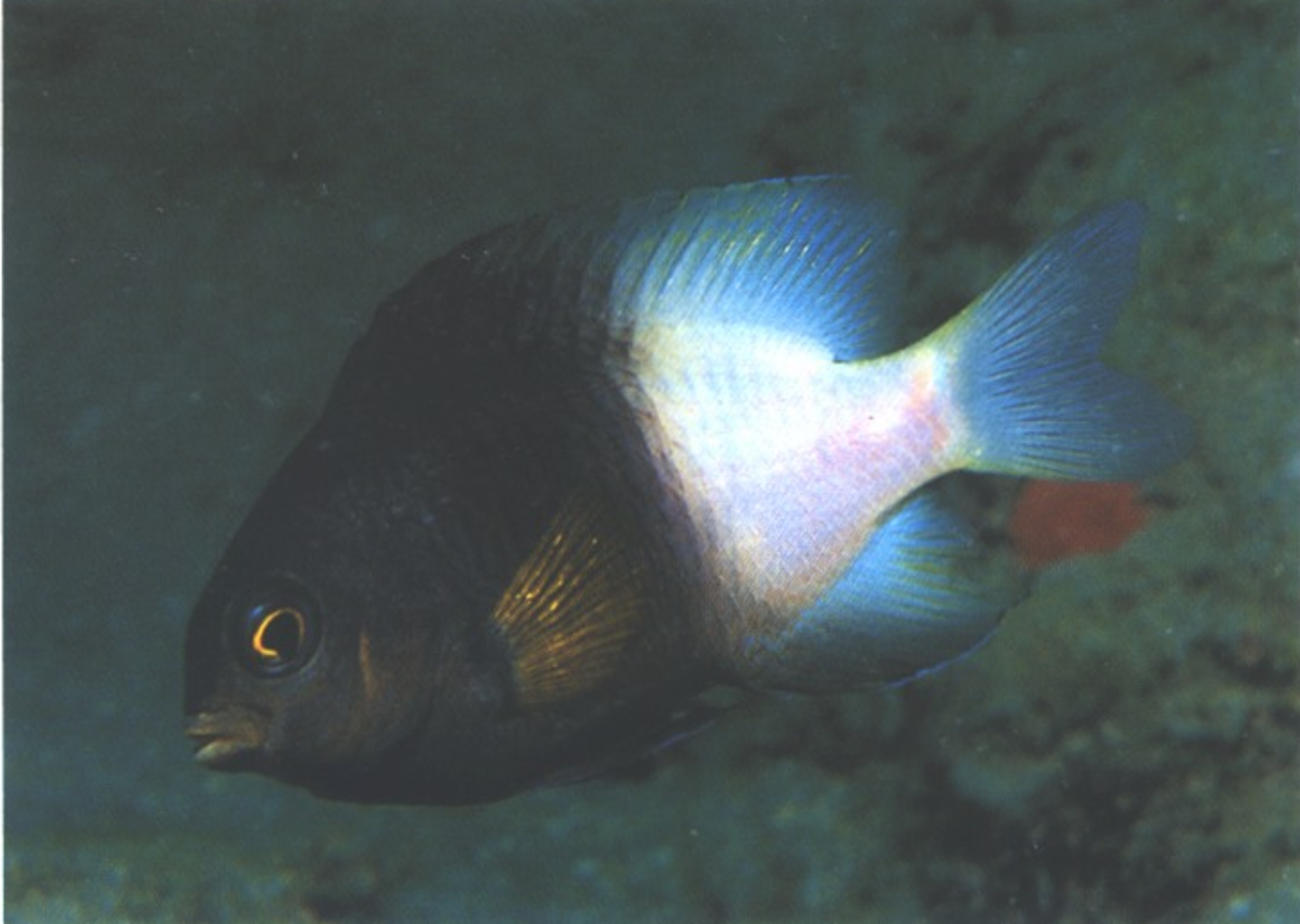
Black and white. 1. Forebody is usually black.
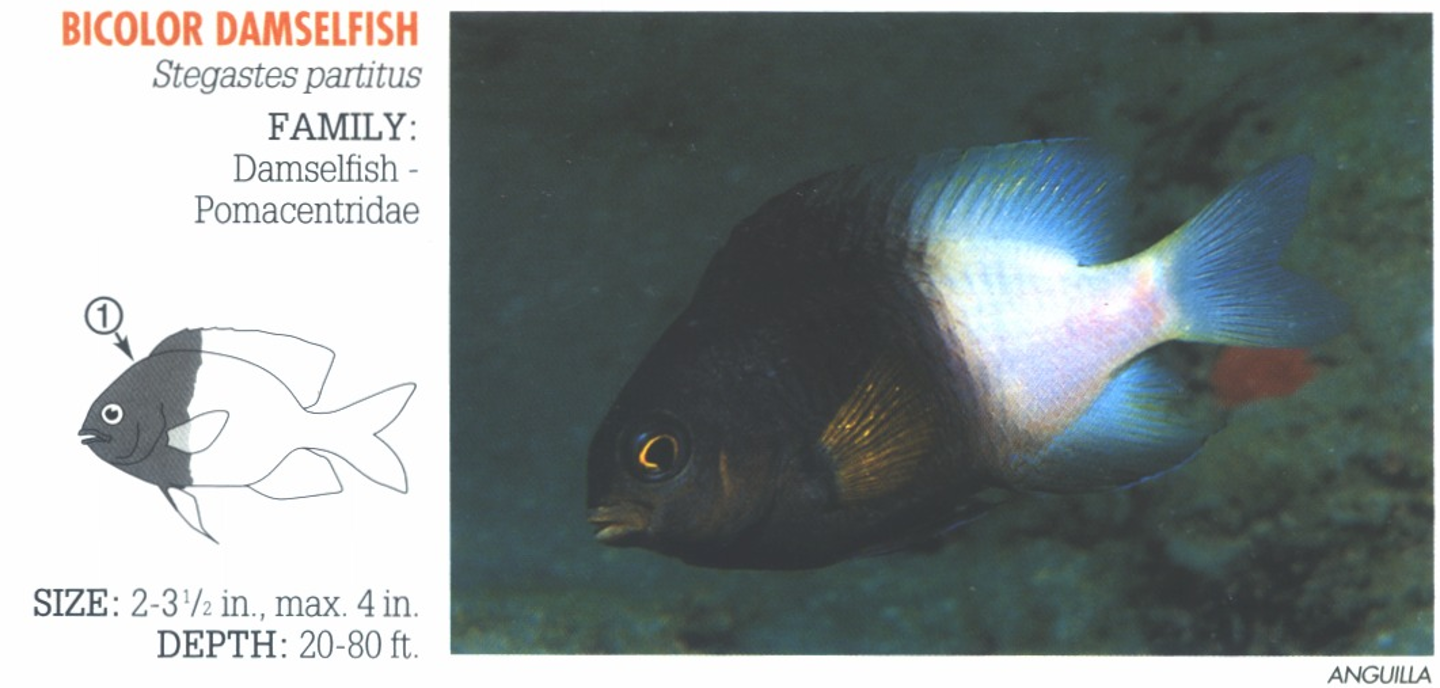
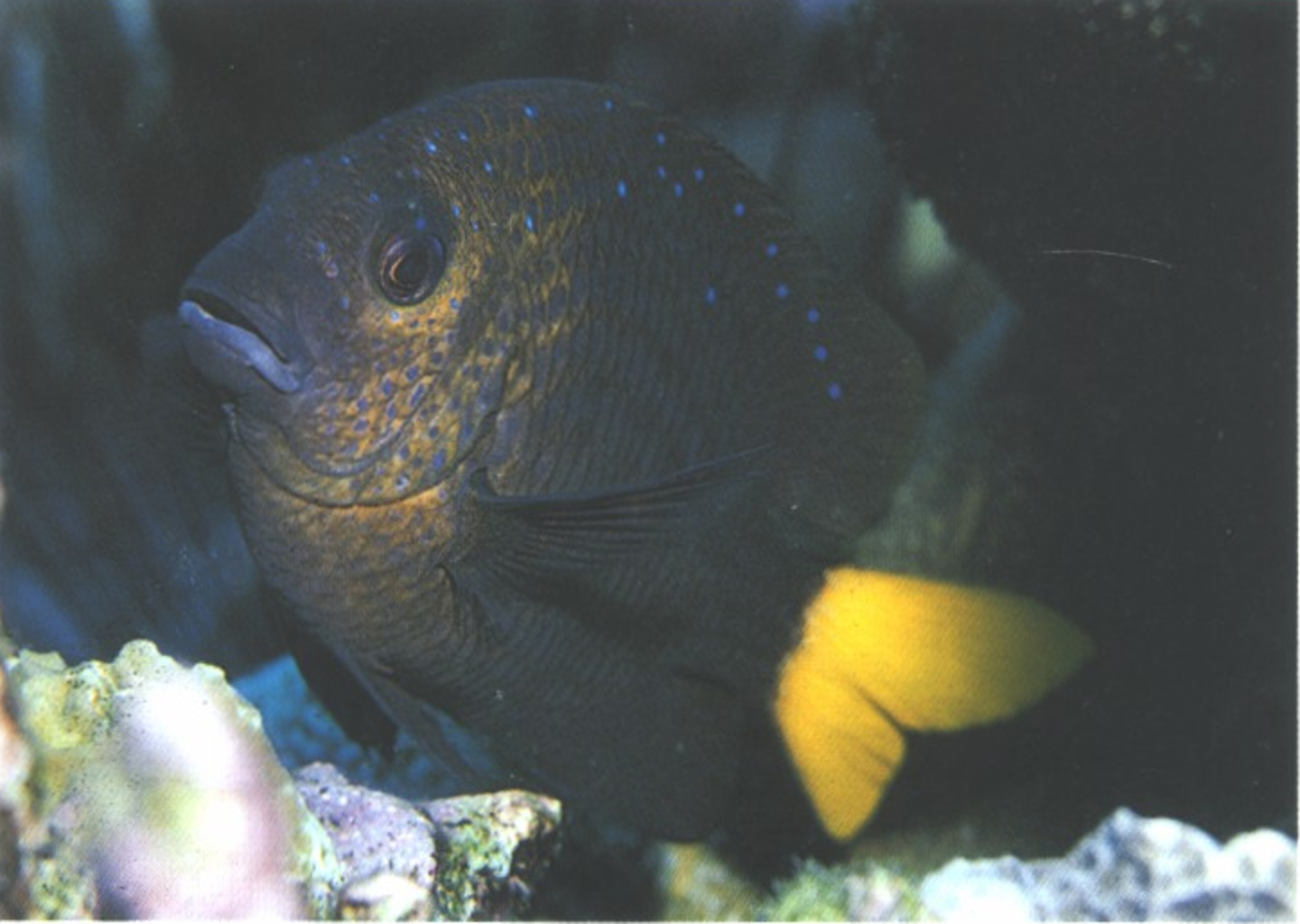
Dark body. 1. Yellow tail.
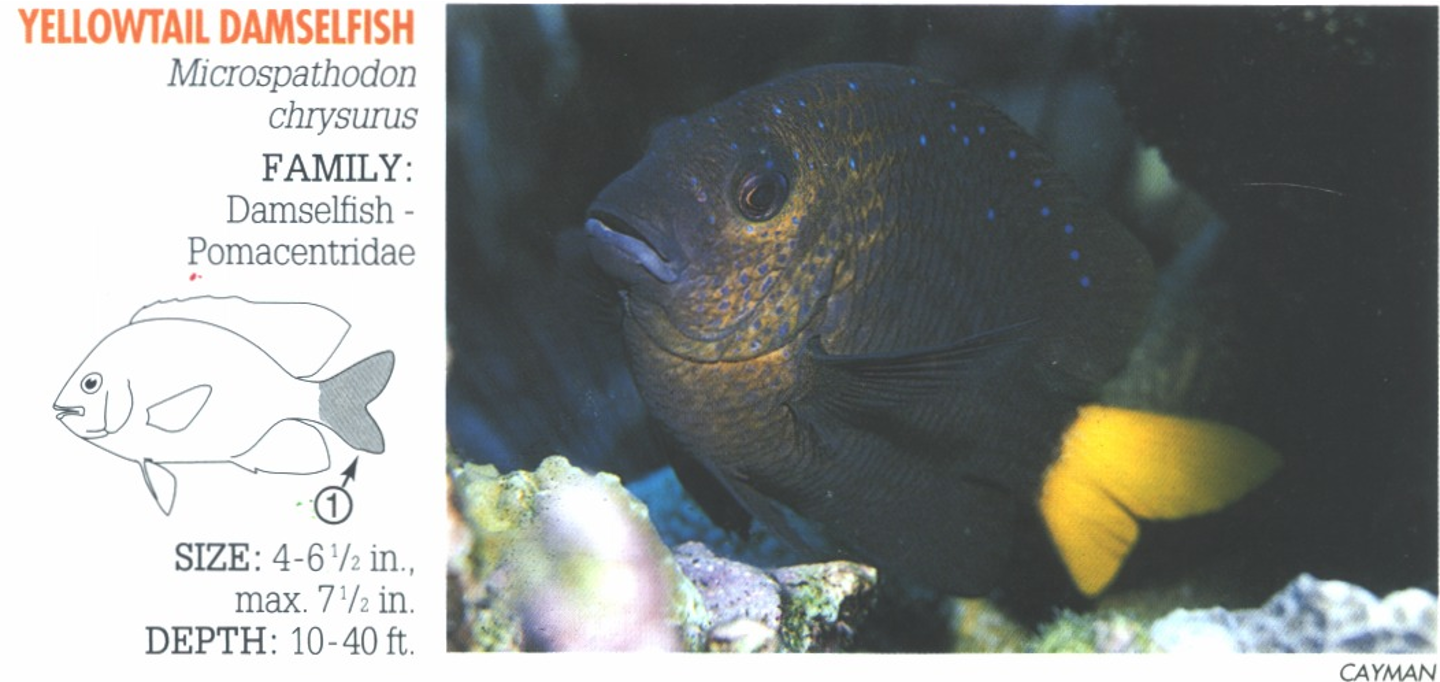
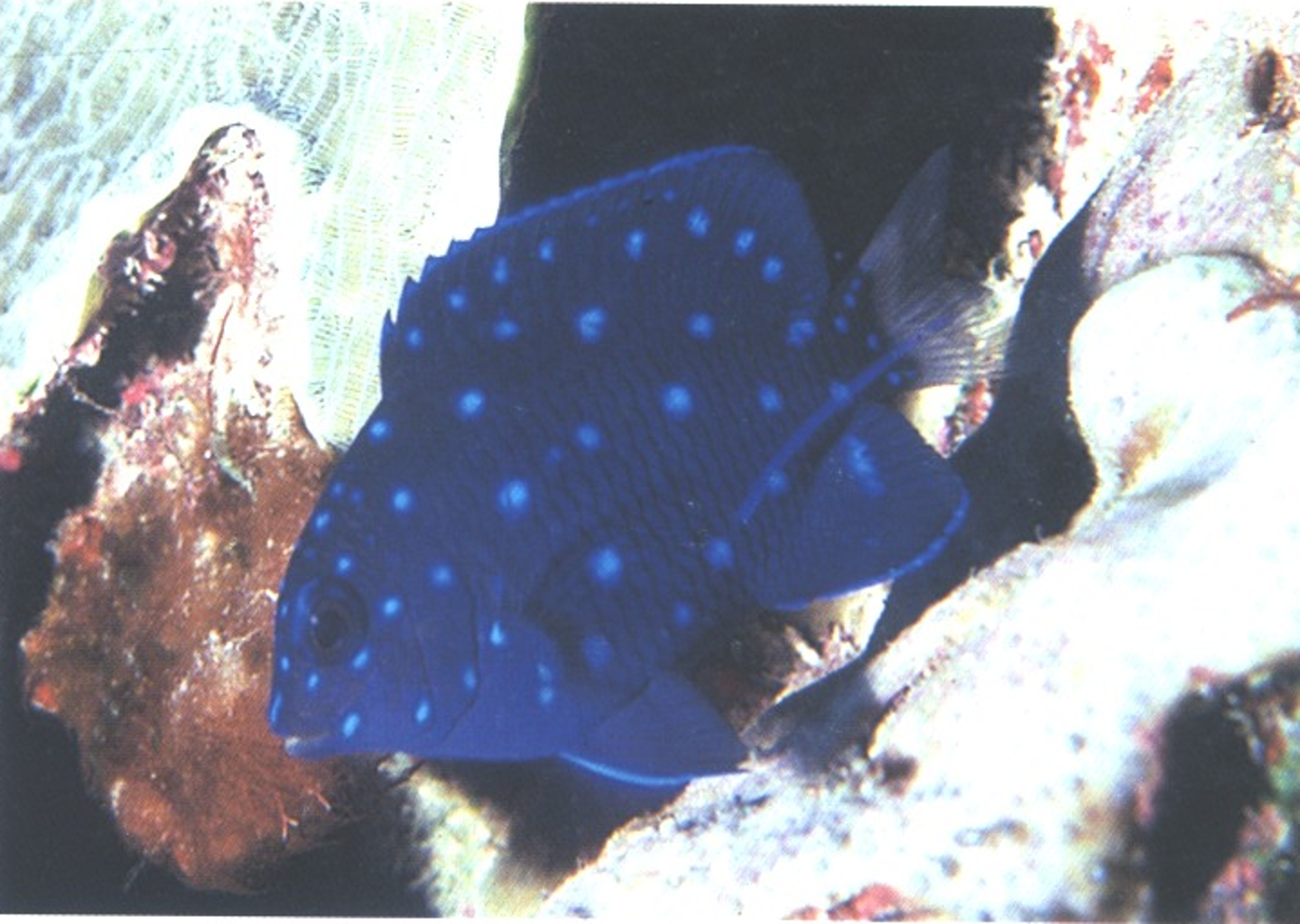
JUVENILE: 2. Brilliant blue dots on dark blue. (Occasionally called Jewelfish because of these gem-like dots.) 3. Translucent to whitish tail, changes to yellow with maturity.
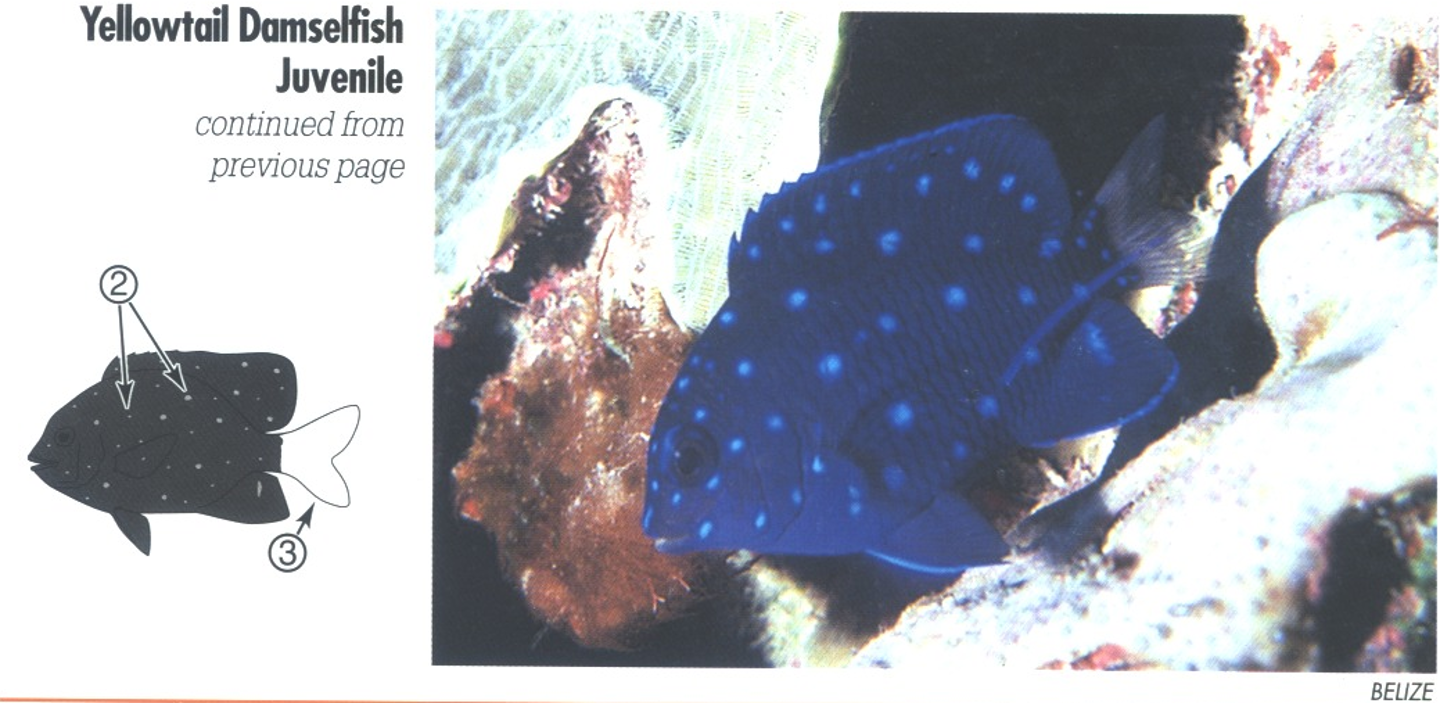

1. Five black body bars. 2. Upper lip does not overhang lower.
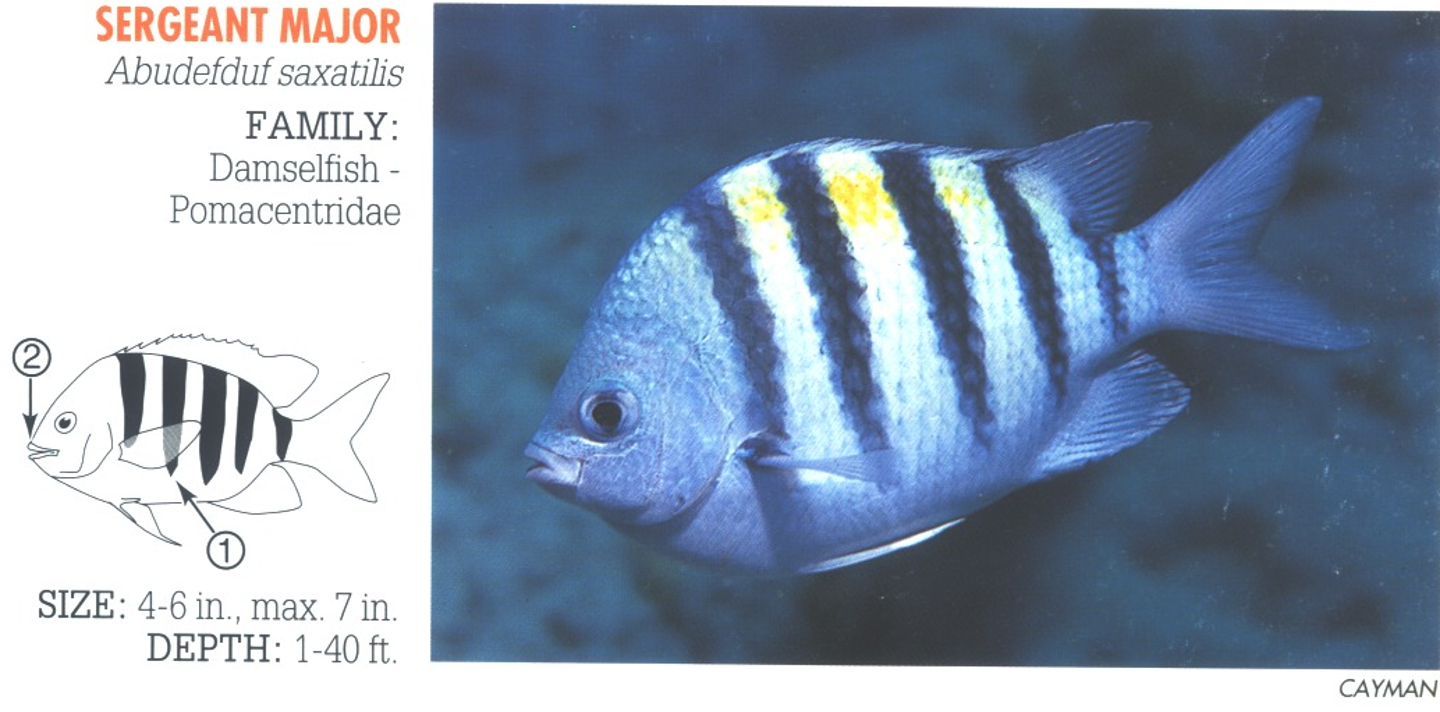
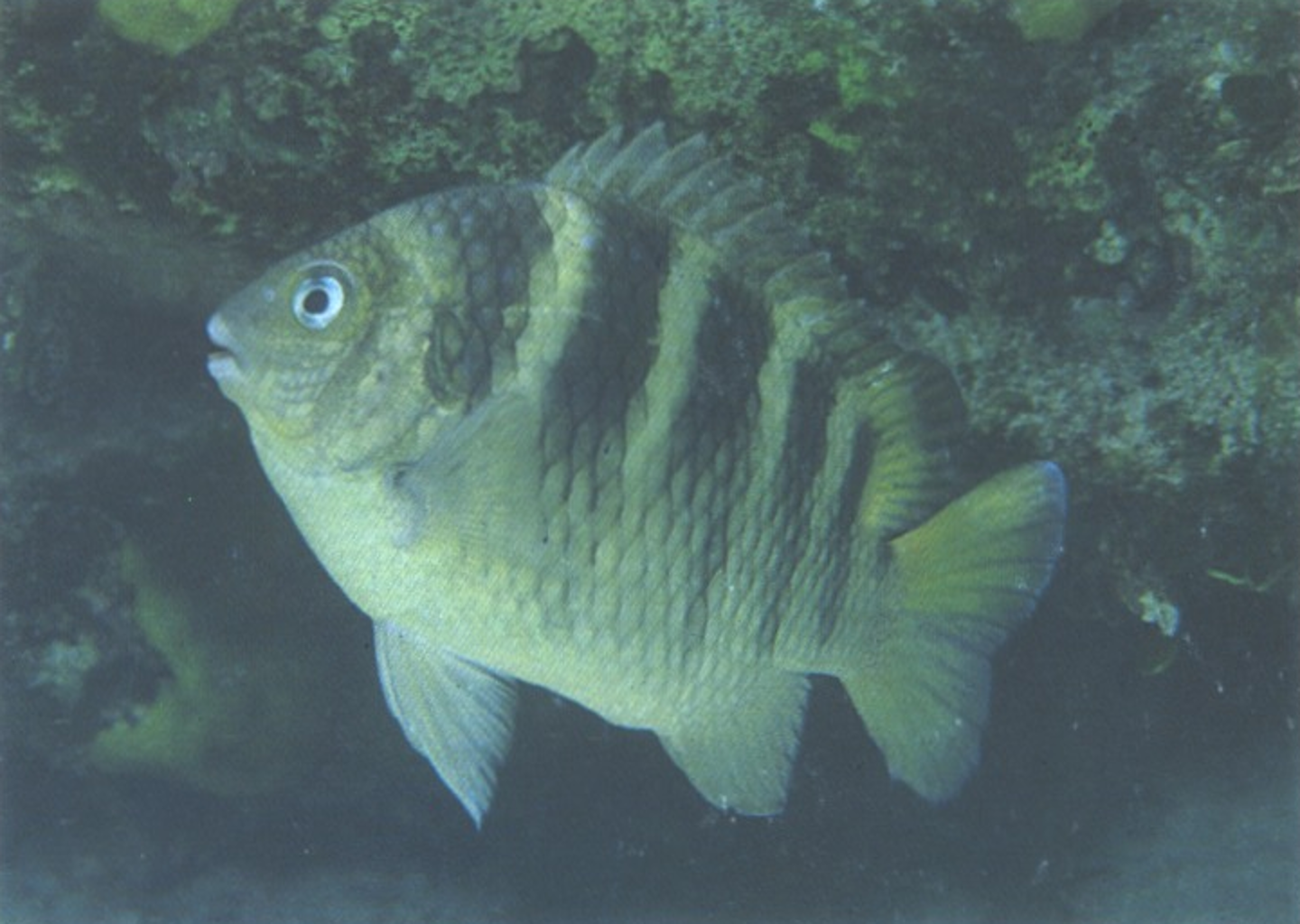
1. Five black body bars. 2. Upper lip slightly overhangs lower.
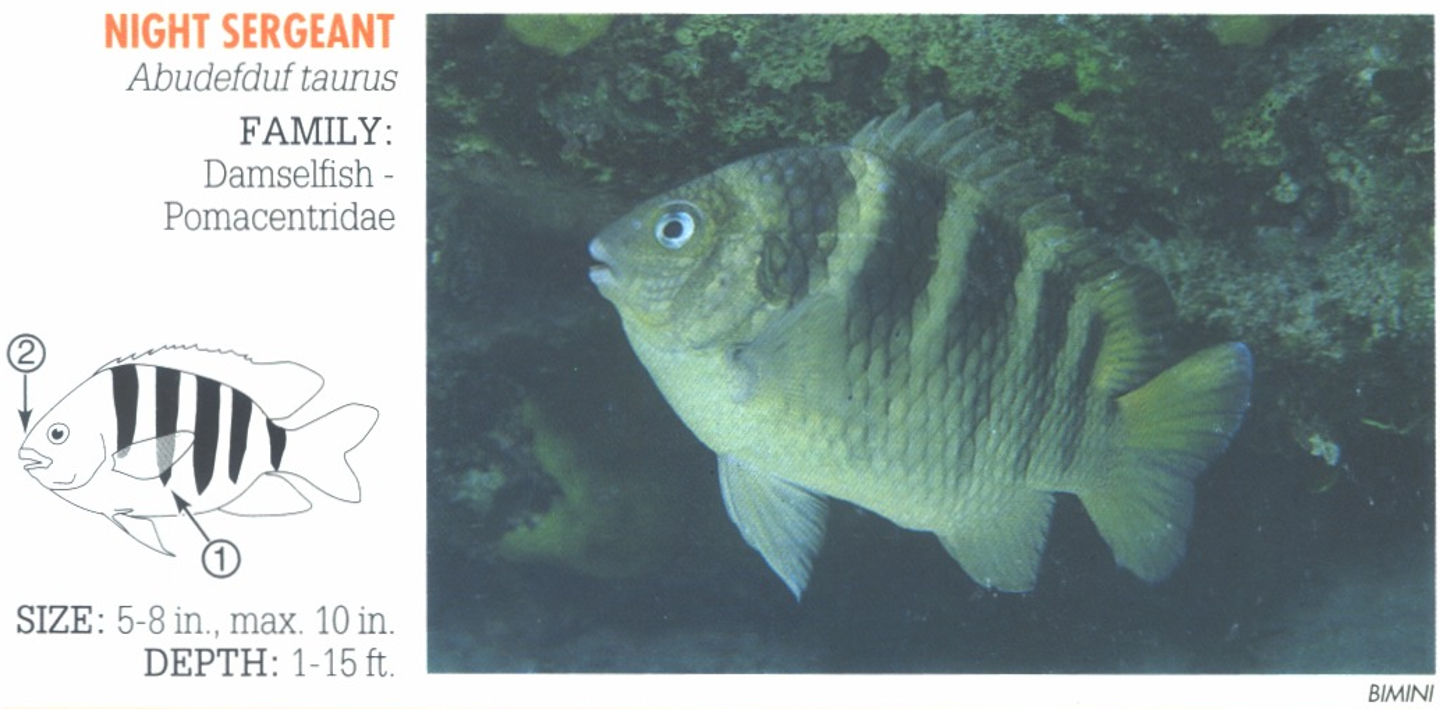
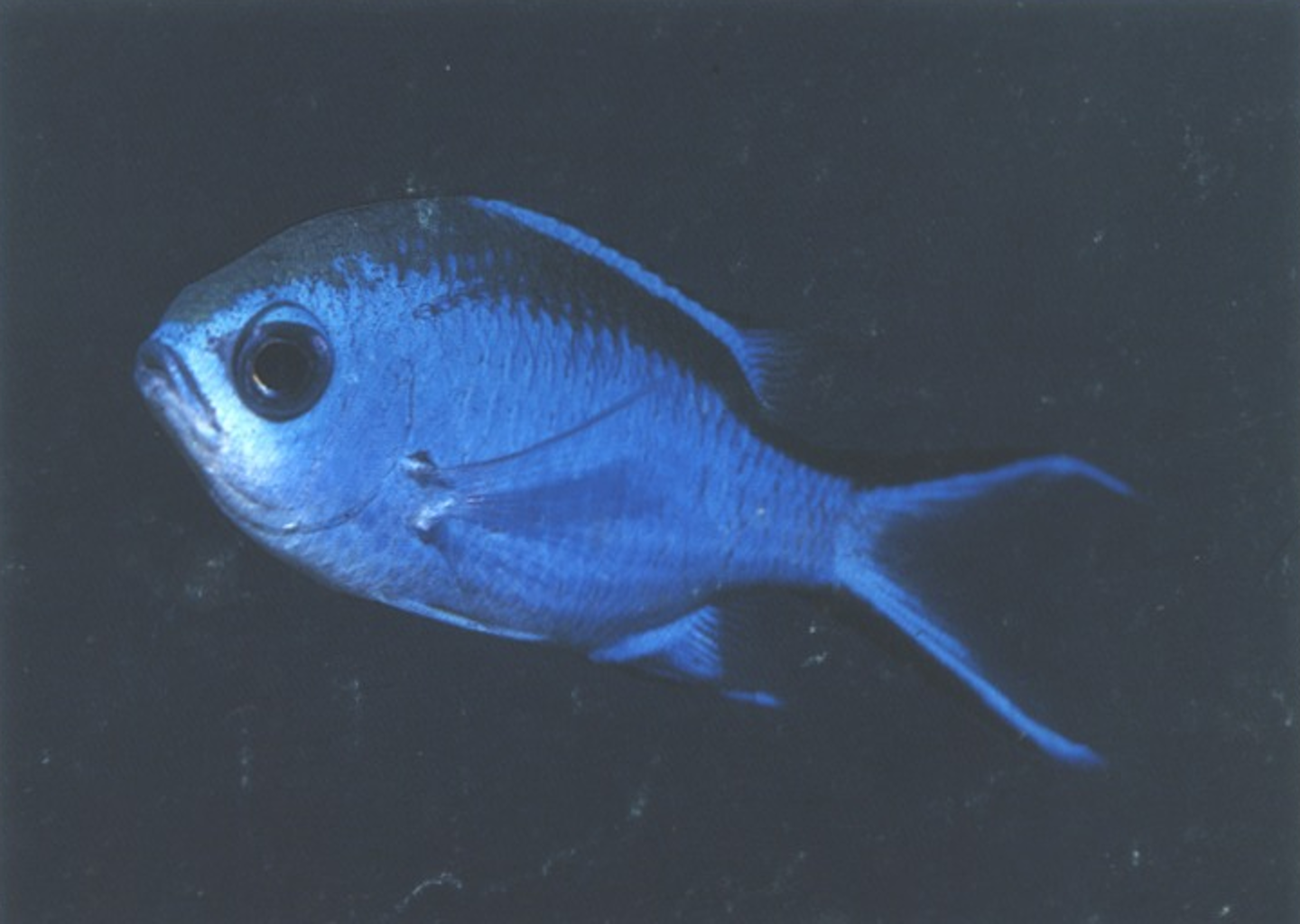
Brilliant blue. 1. Slender, deeply forked tail with dark borders.
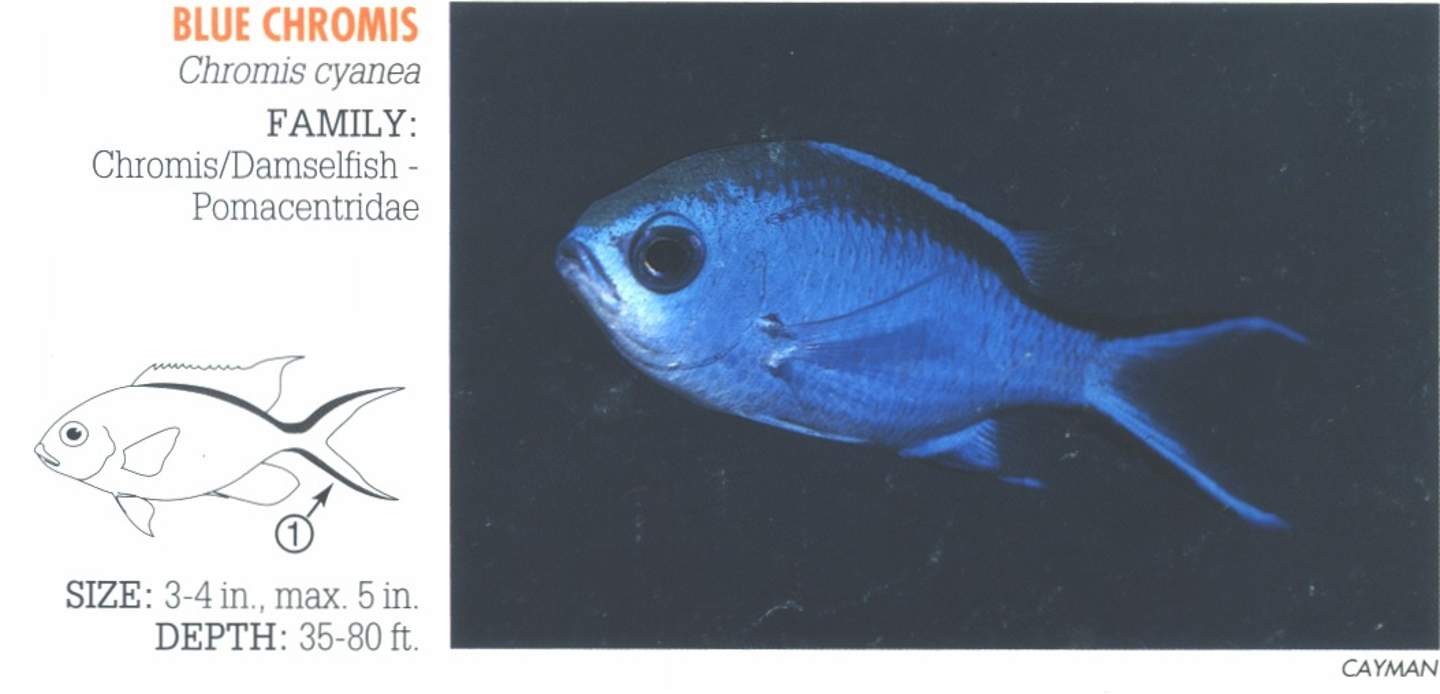
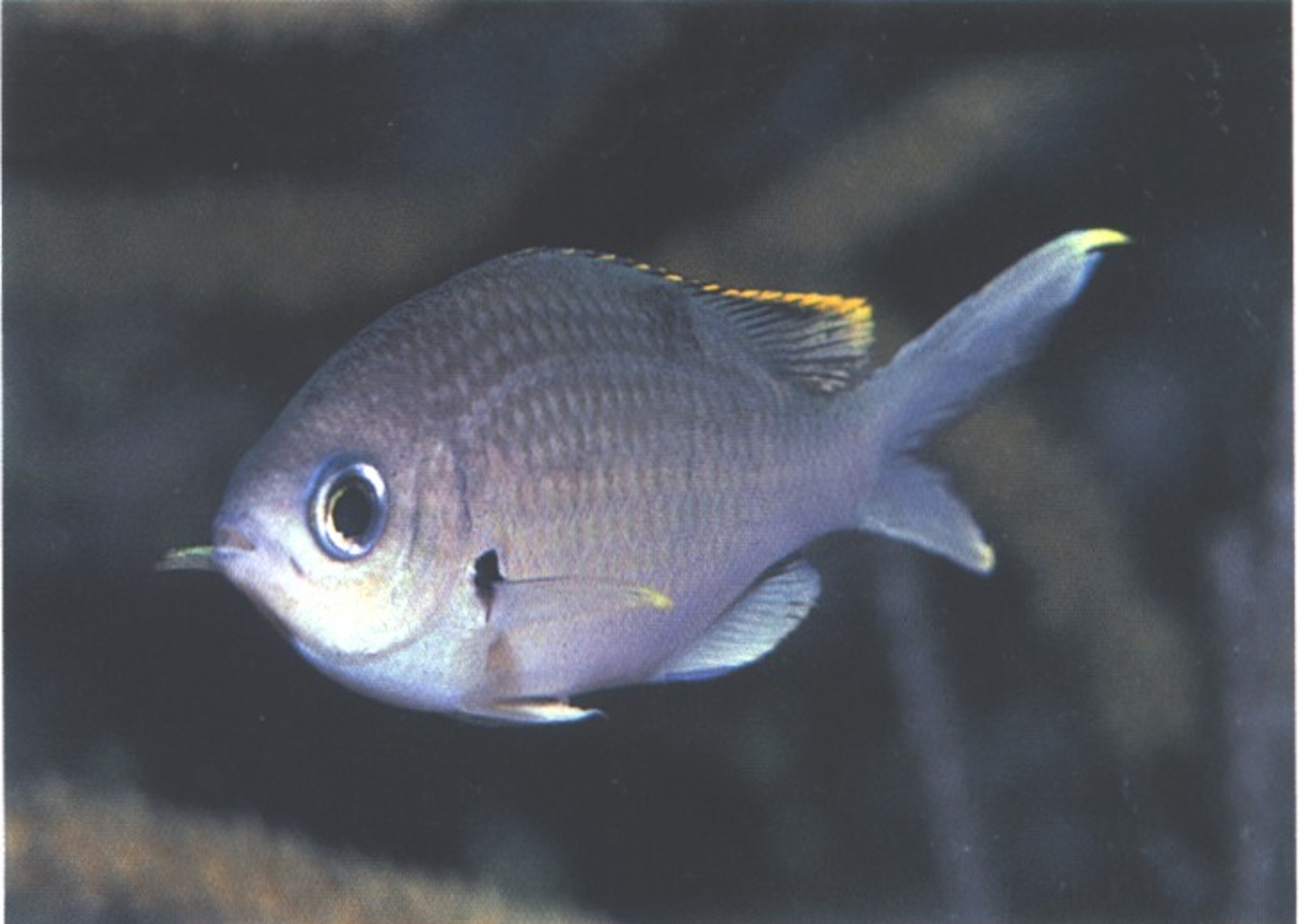
Brown. 1. Border of dorsal fin and tips of tail fin yellow. 2. Dark spot around base of pectoral fin.
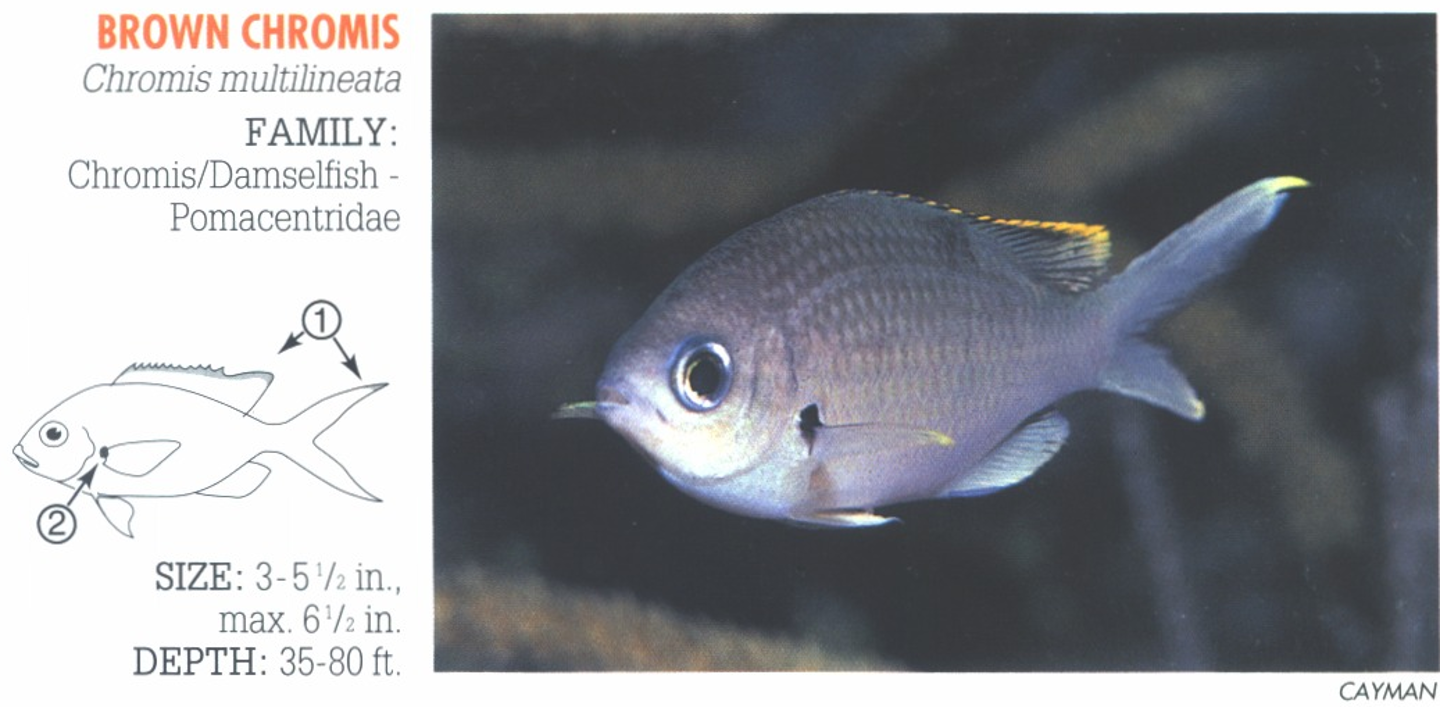
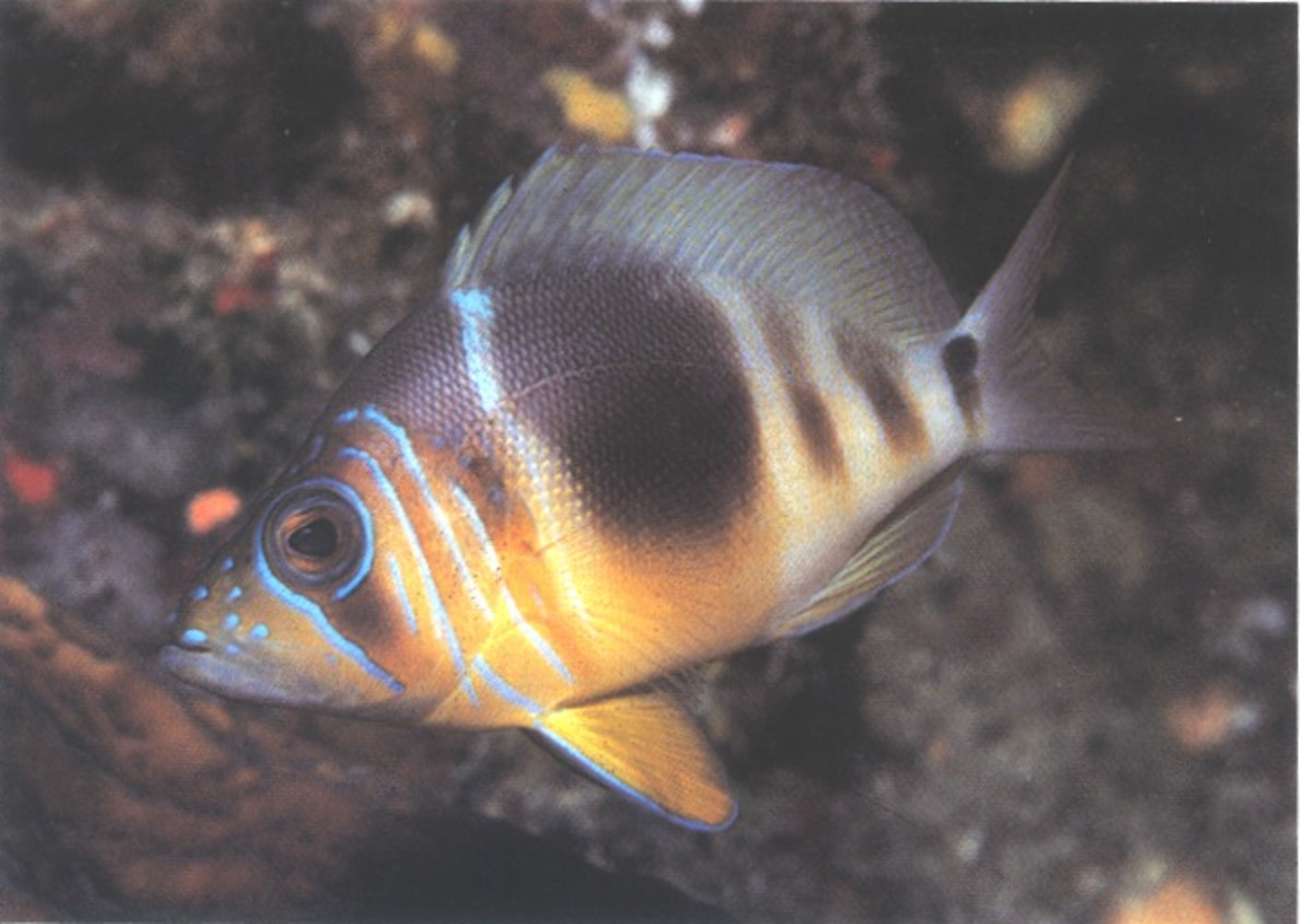
1. Broad V-shaped bar on midbody.
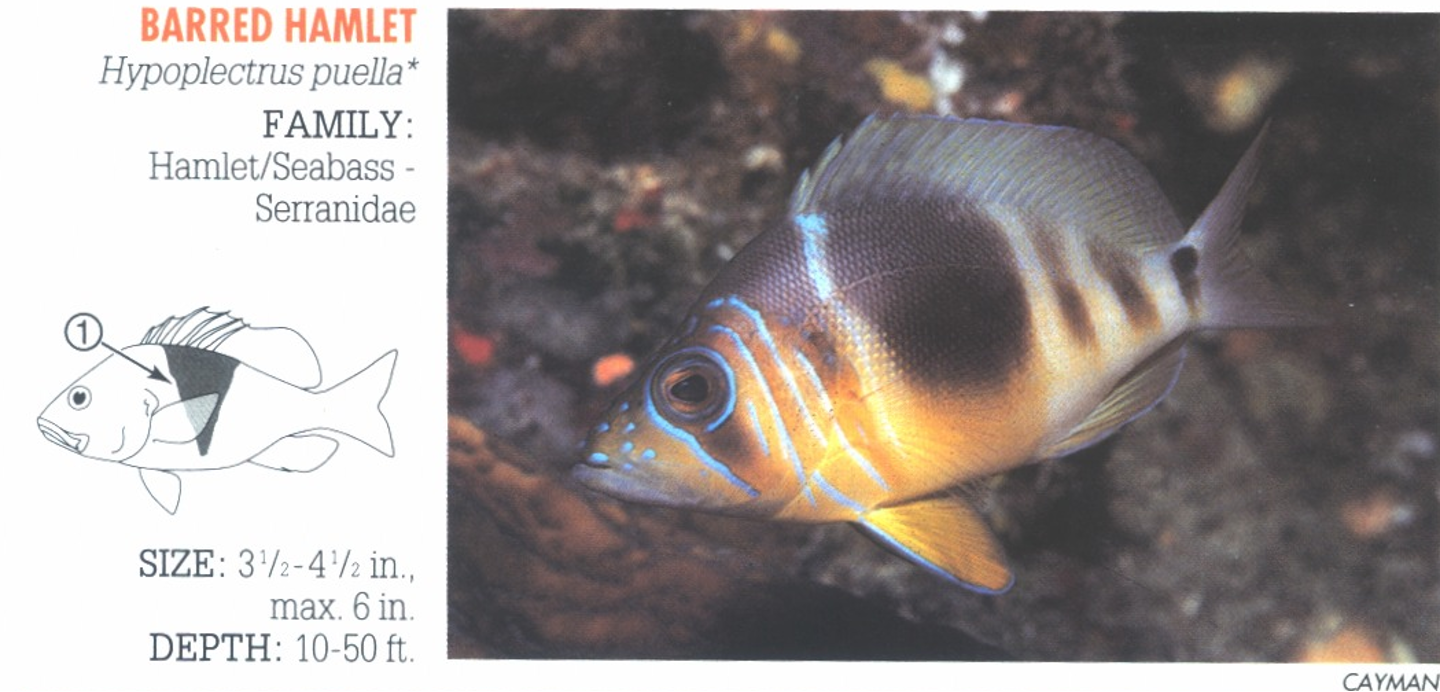
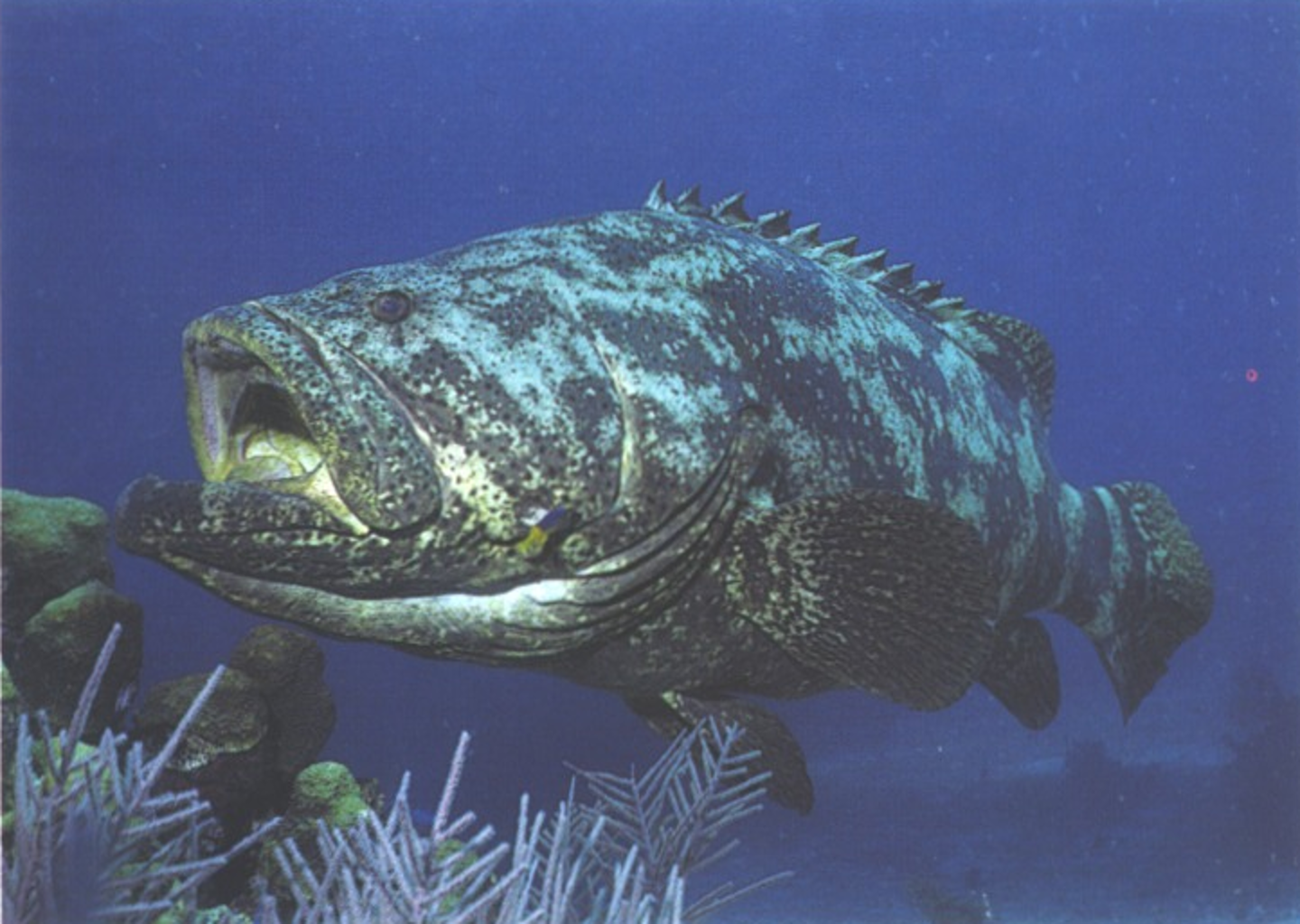
Largest fish observed on the reefs. Small dark spots over body and fins.
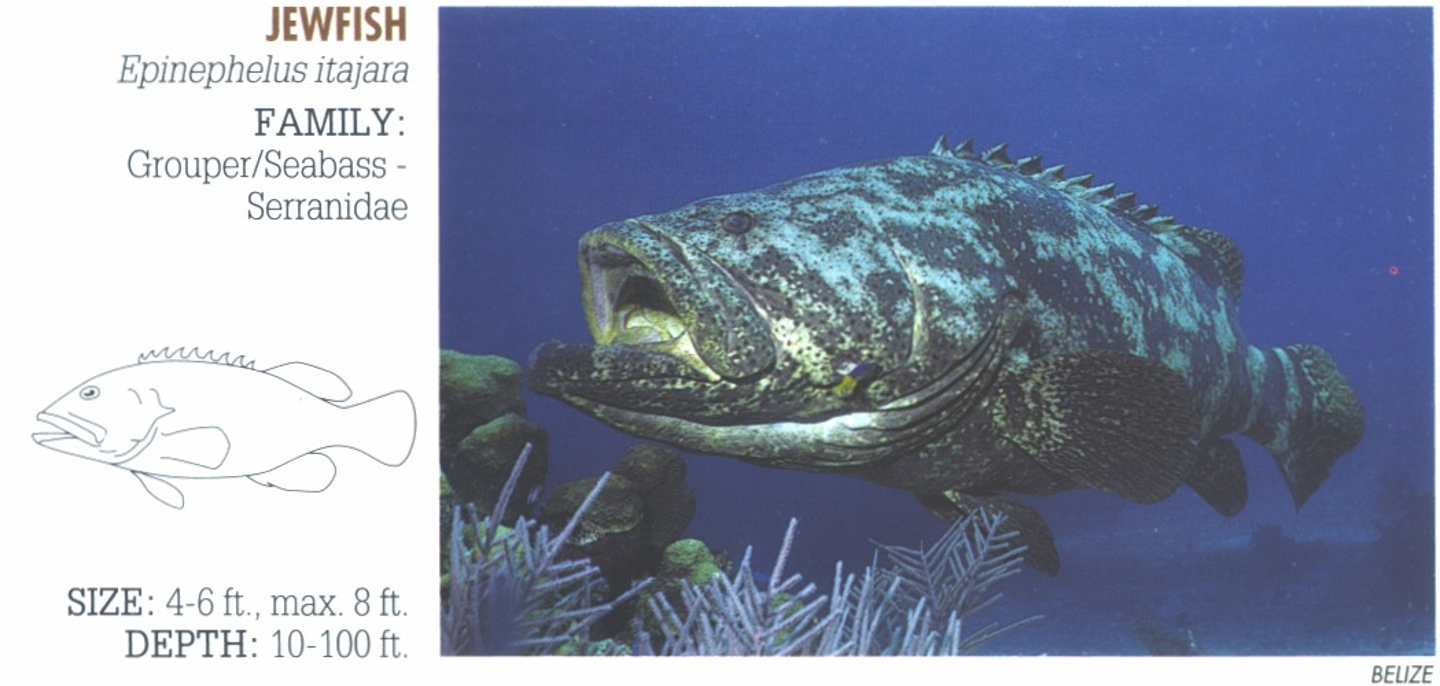
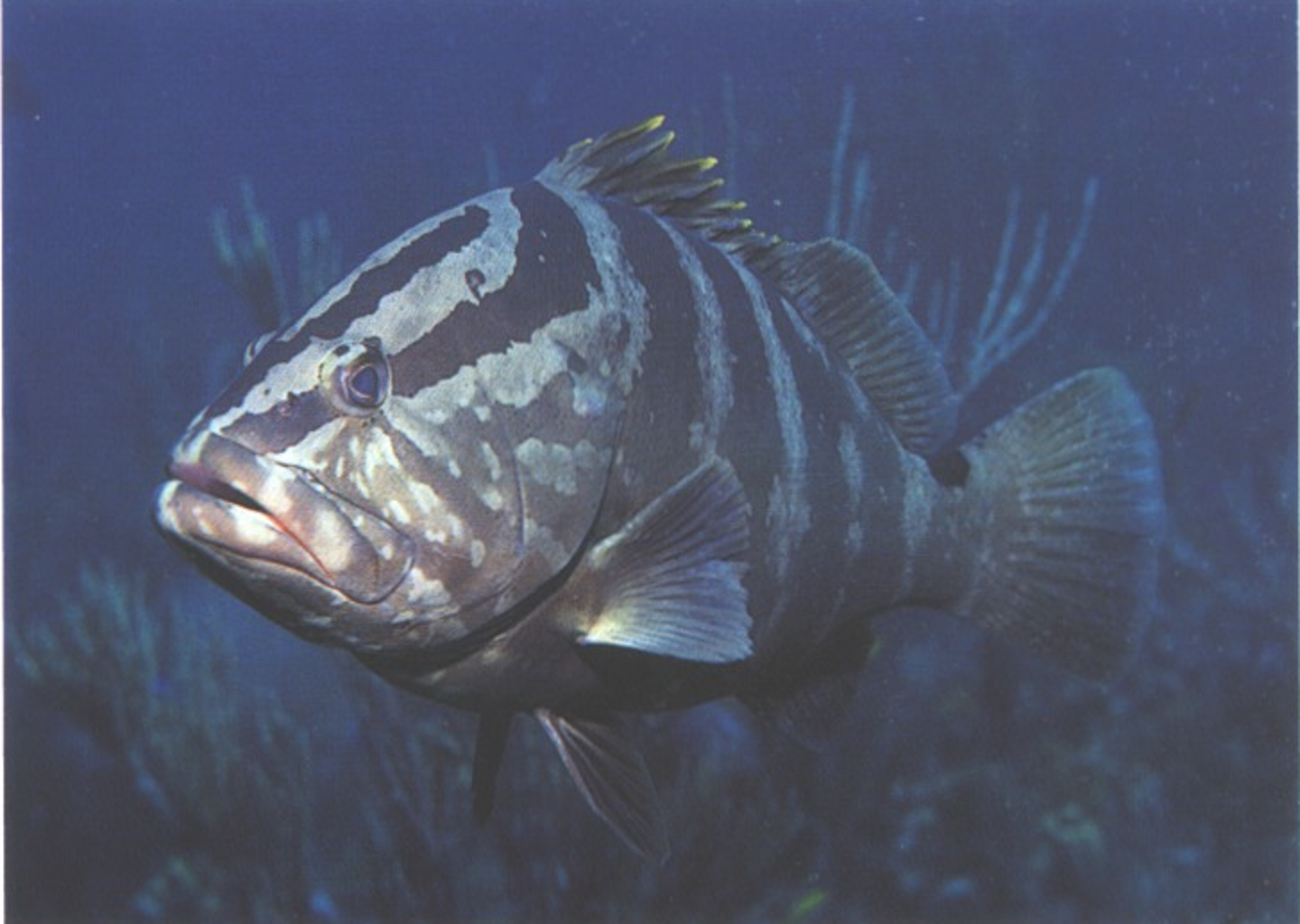
1. Black saddle spot on base of tail. 2. Dorsal fin notched between forward spines.

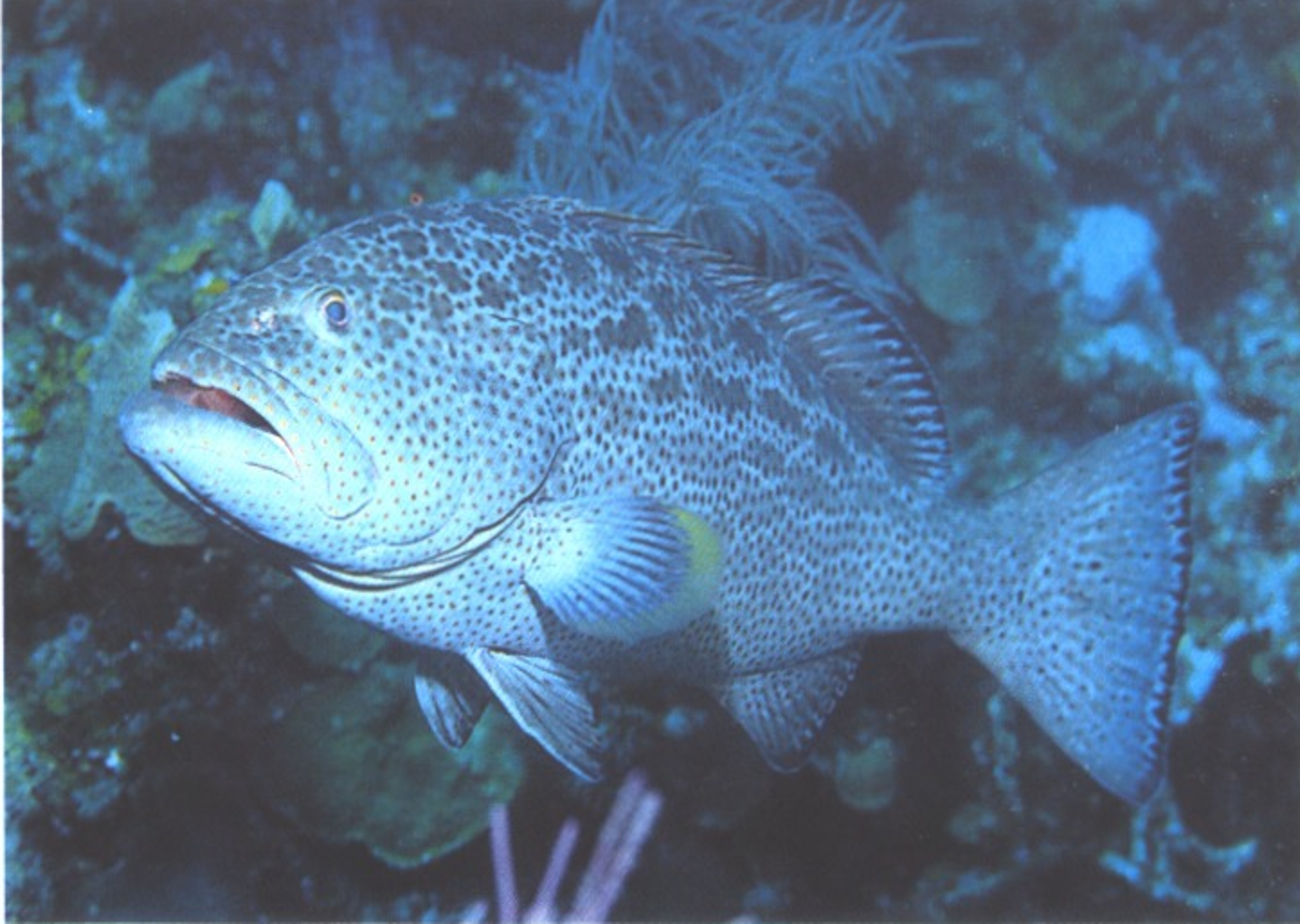
1. Outer third of pectoral fin is pale to bright yellow. 2. Ends of rectangular body blotches rounded (can pale blotch patter to become indistinct showing only spots). (Compare similar Black Grouper, M. bonaci, where ends are square.) 3. Tail has thin dark irregular margin.
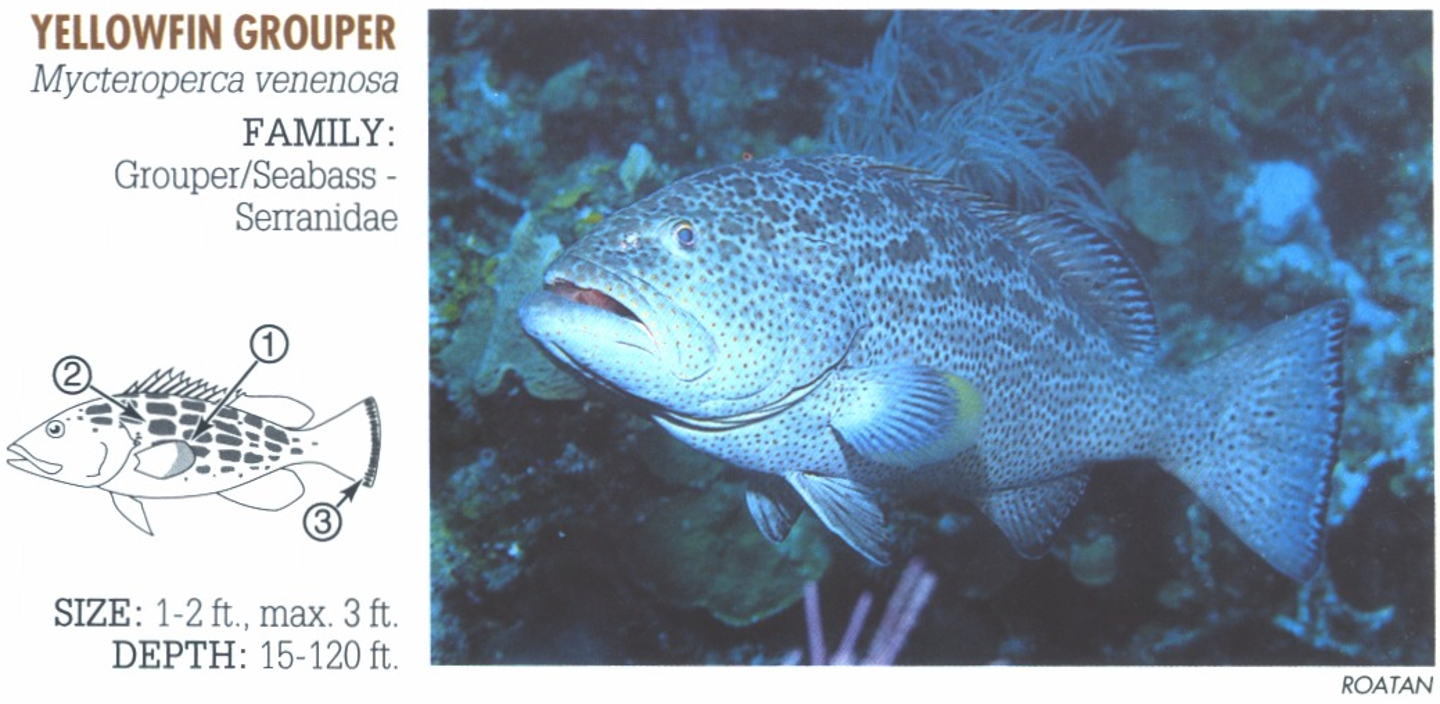
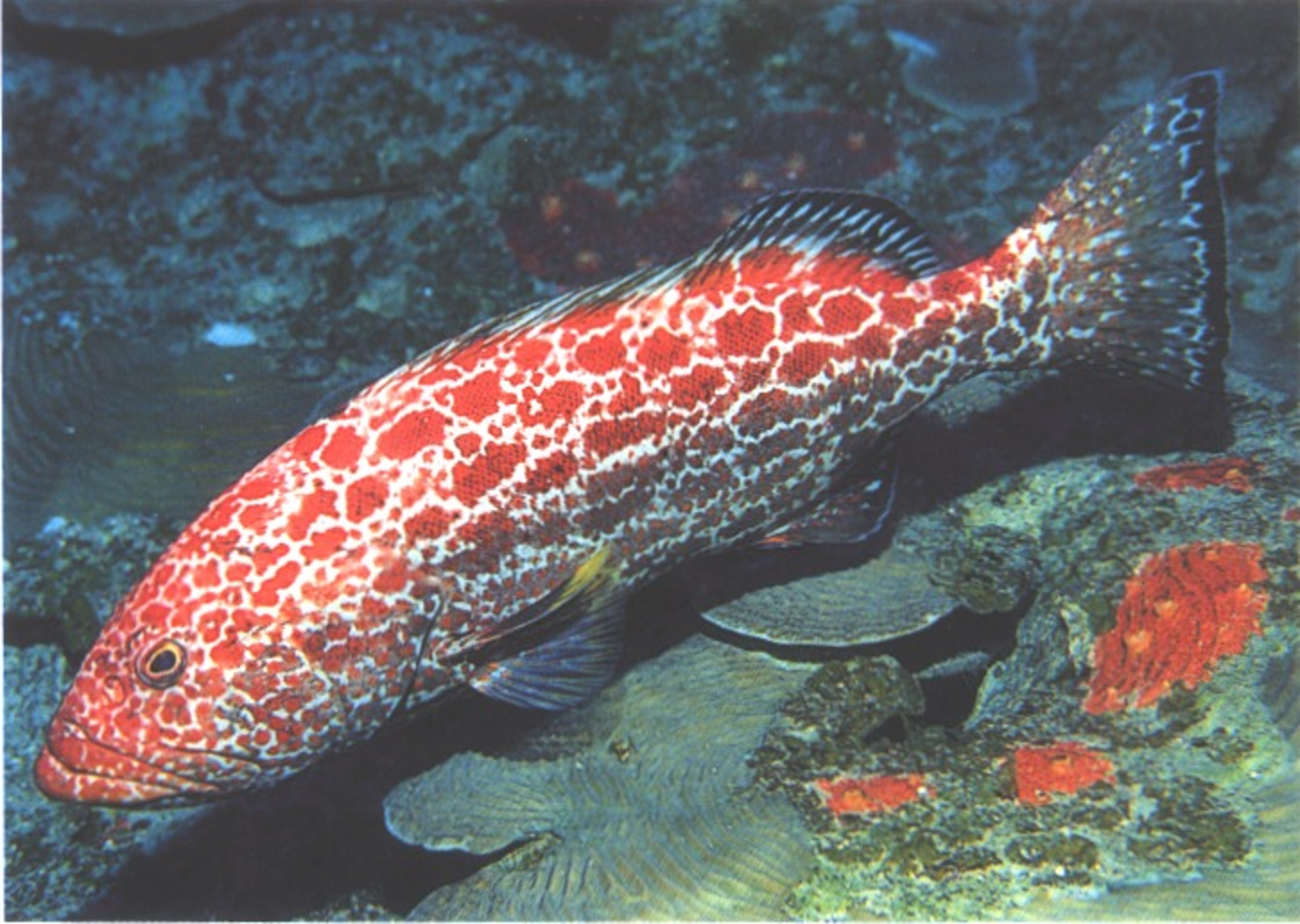
Red phase displaying rounded rectangular body blotches.
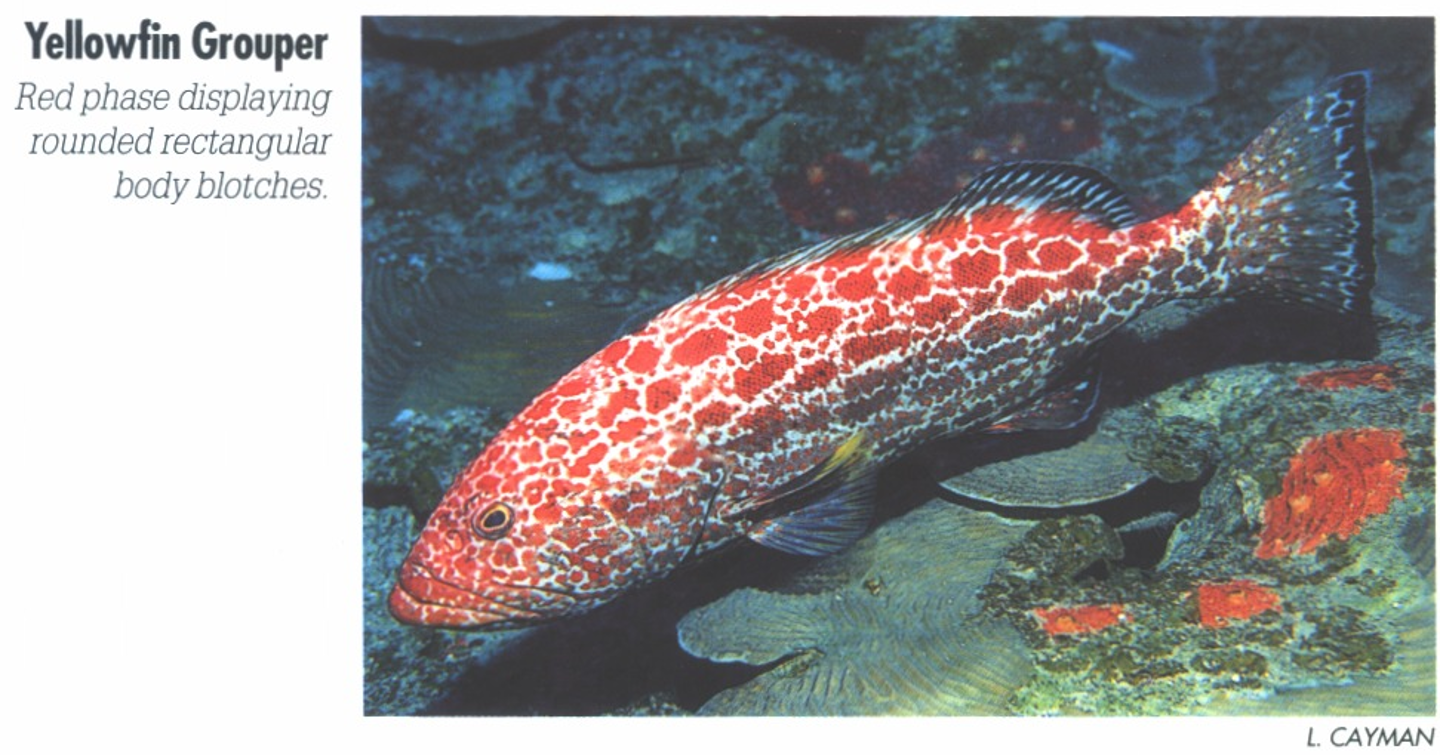
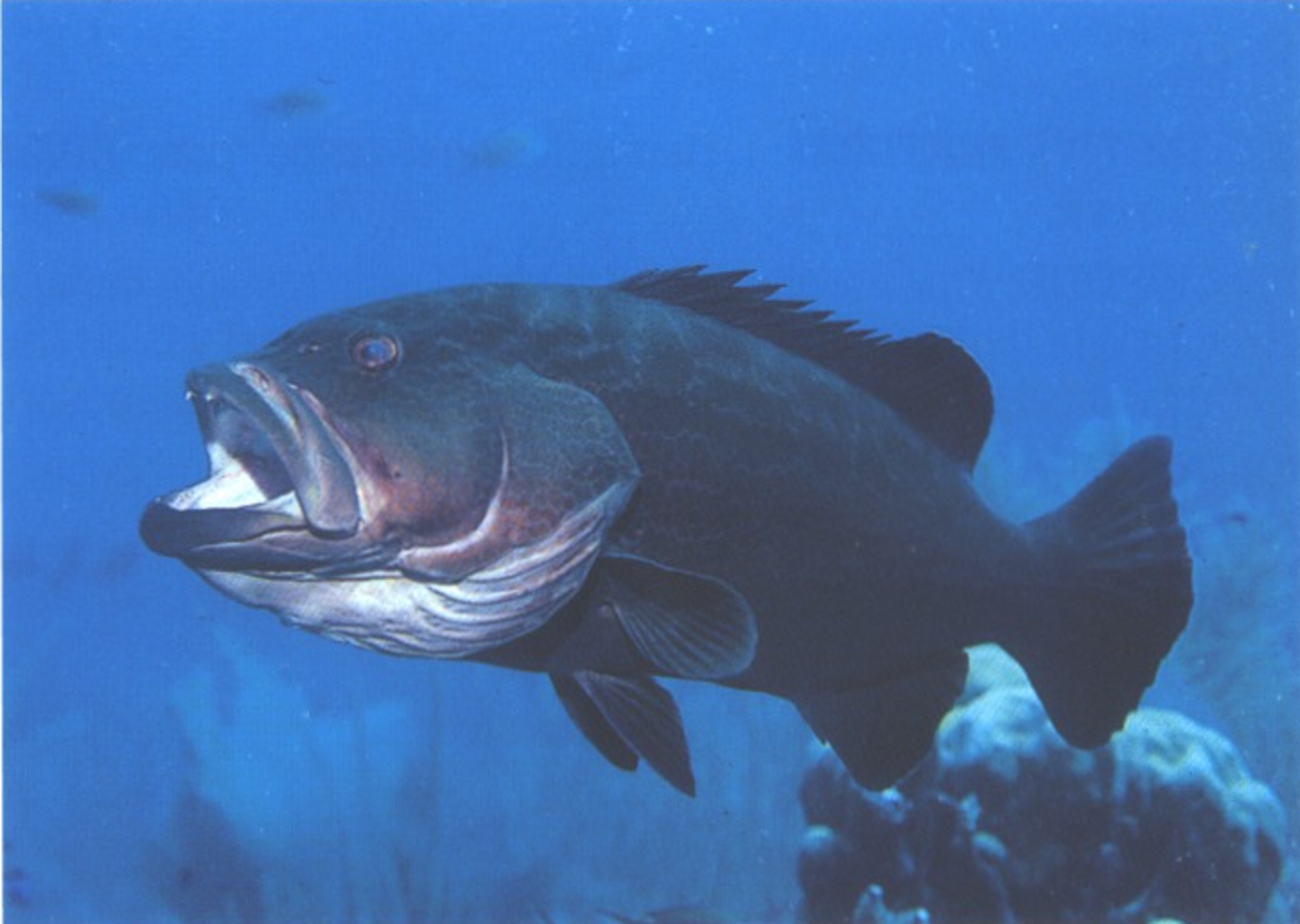
1. Thin, pale to yellow margin on pectoral fins. 2. Ends of rectangular blotches on upper body are nearly square (Compare similar Yellowfin Grouper, M. veneosa, where ends are rounded.) 3. Tail has wide, black margin with thin, white edge.
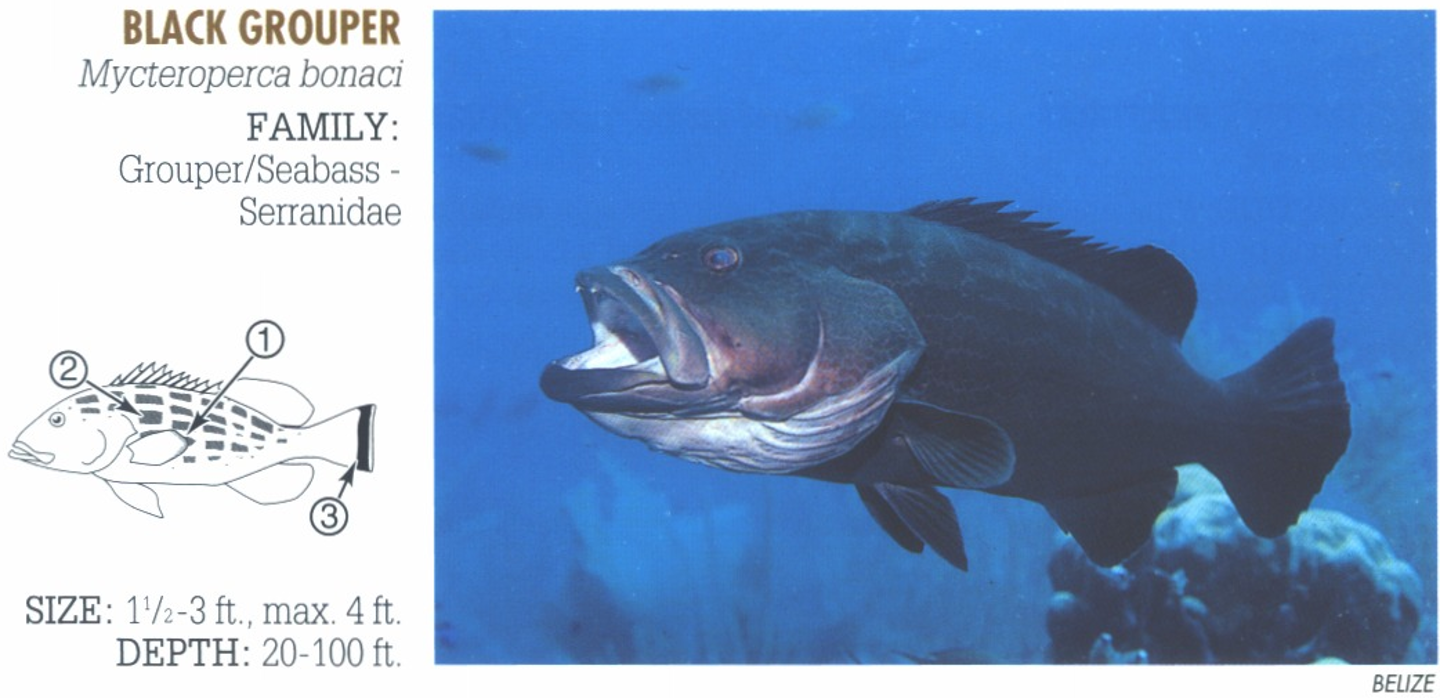
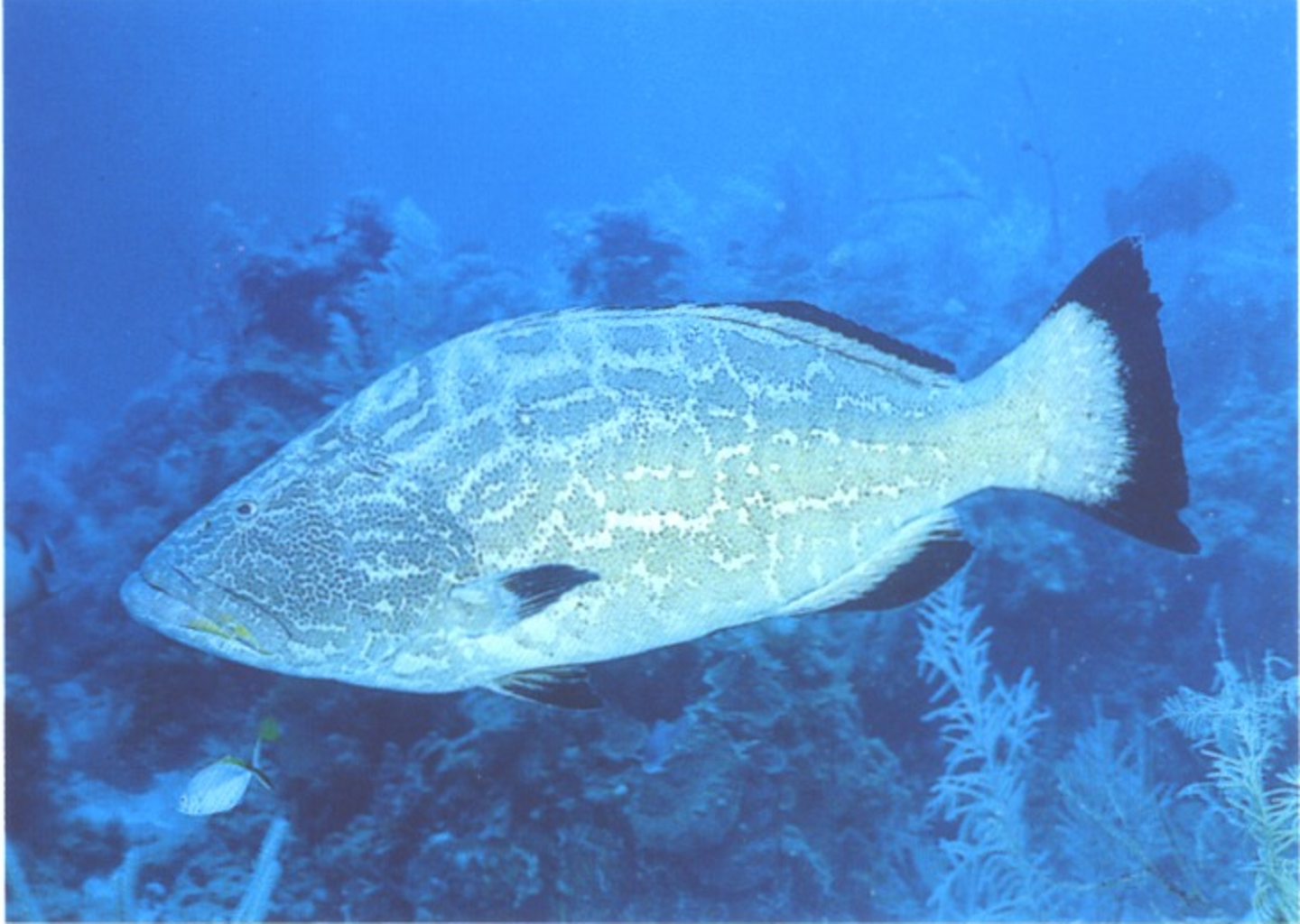
Color and marking phases
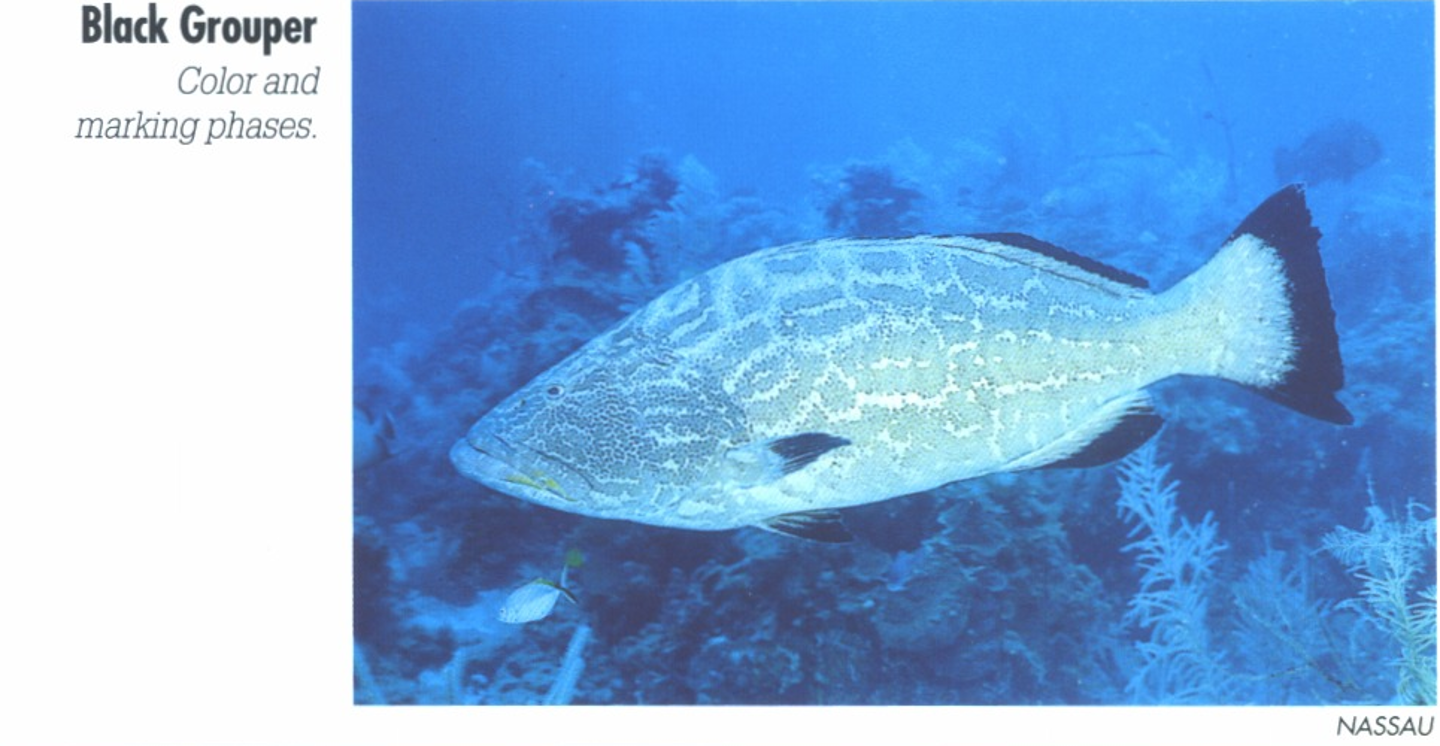
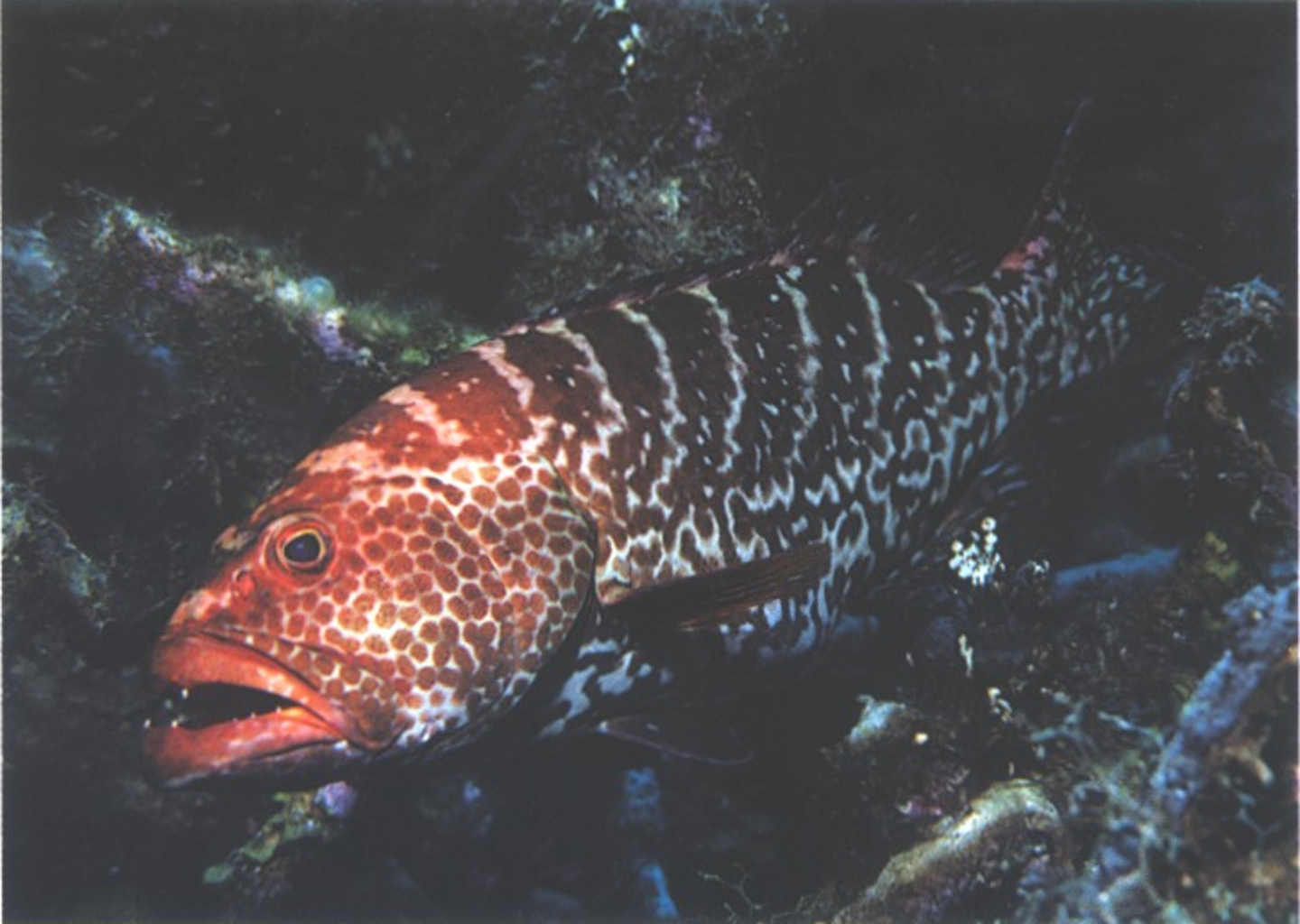
1. Dramatic “tiger-stripe” bars.
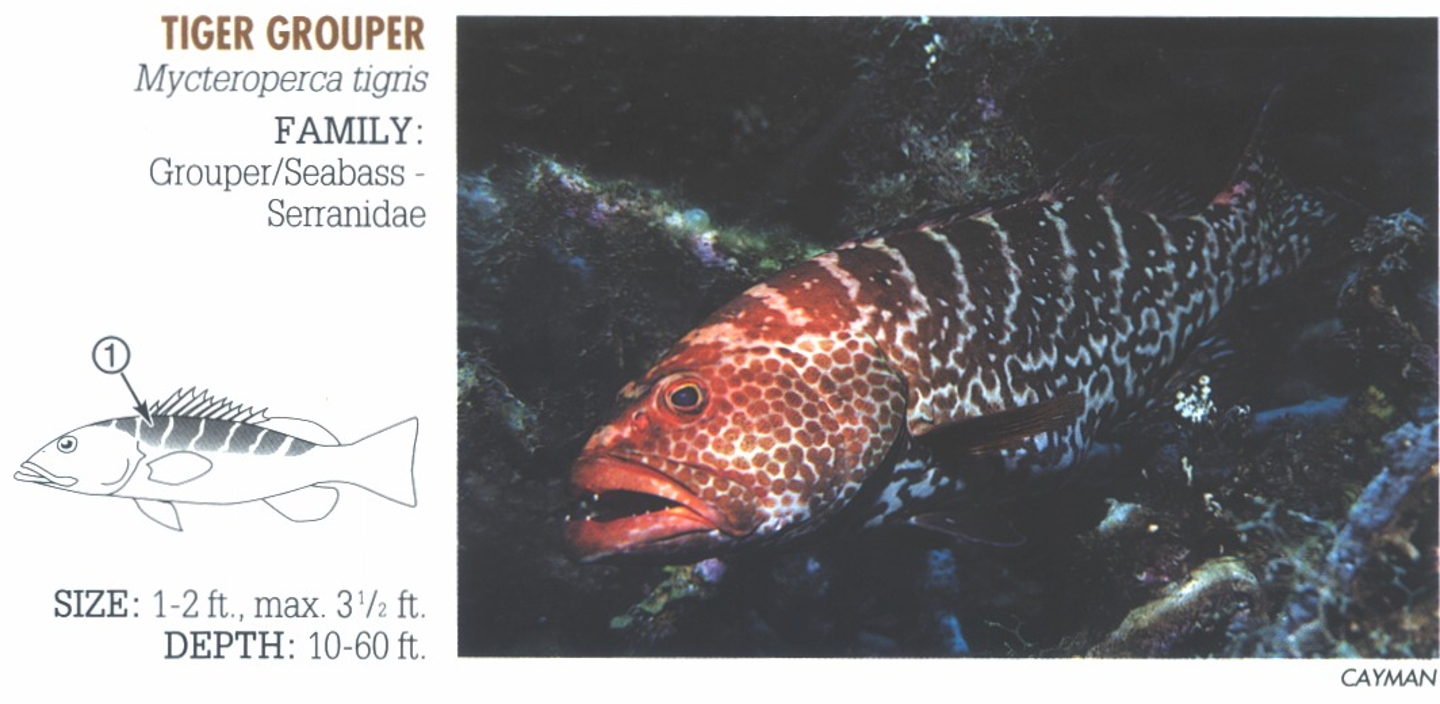
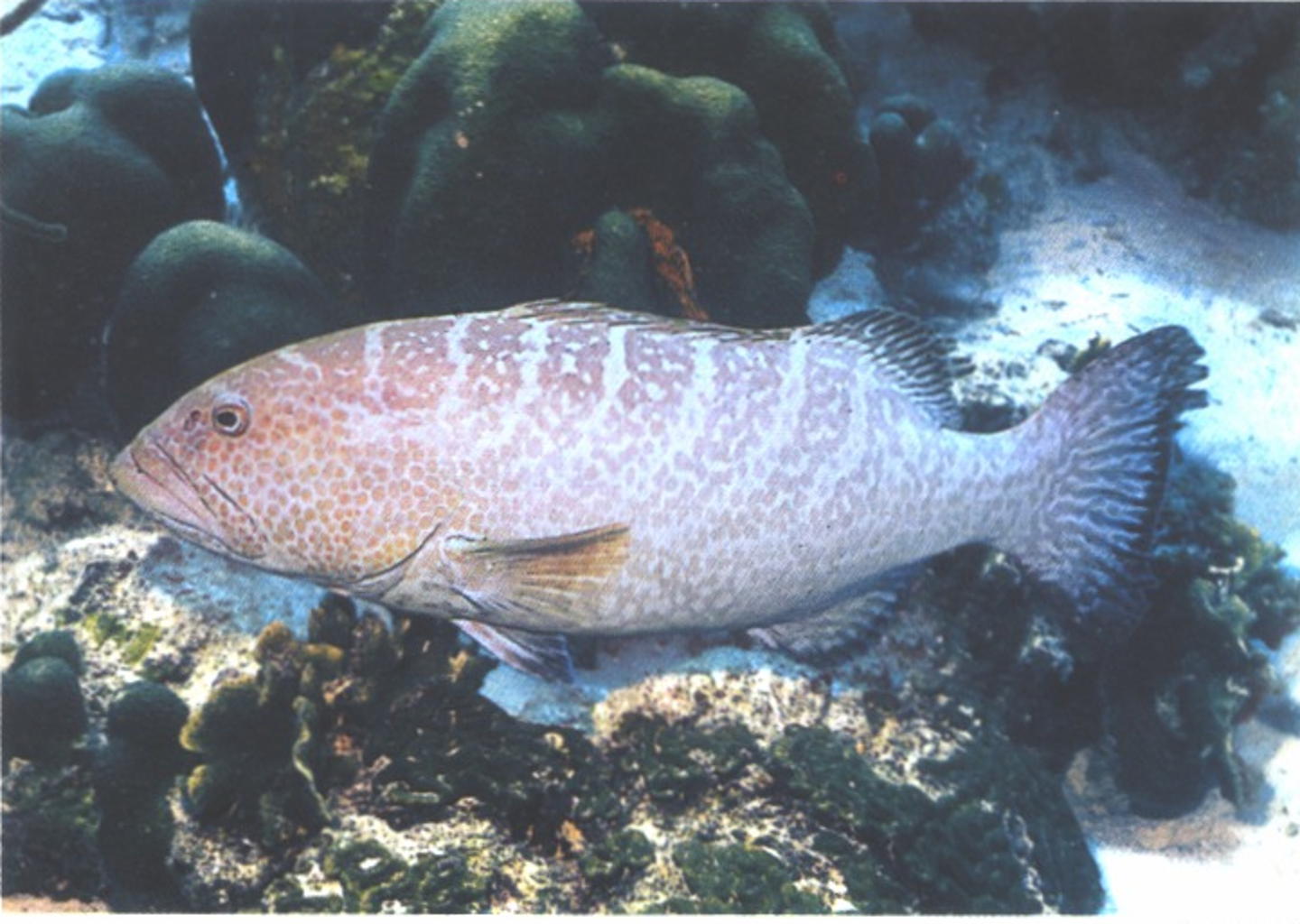
color phases
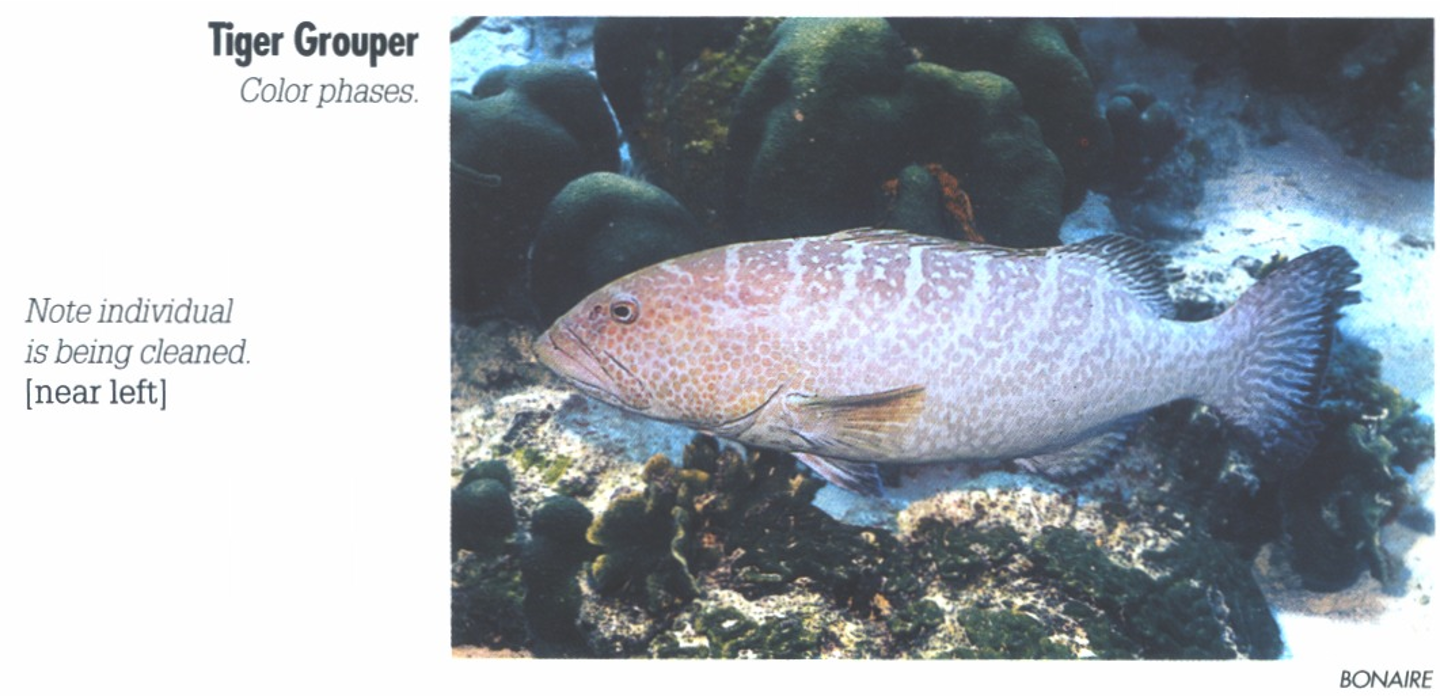
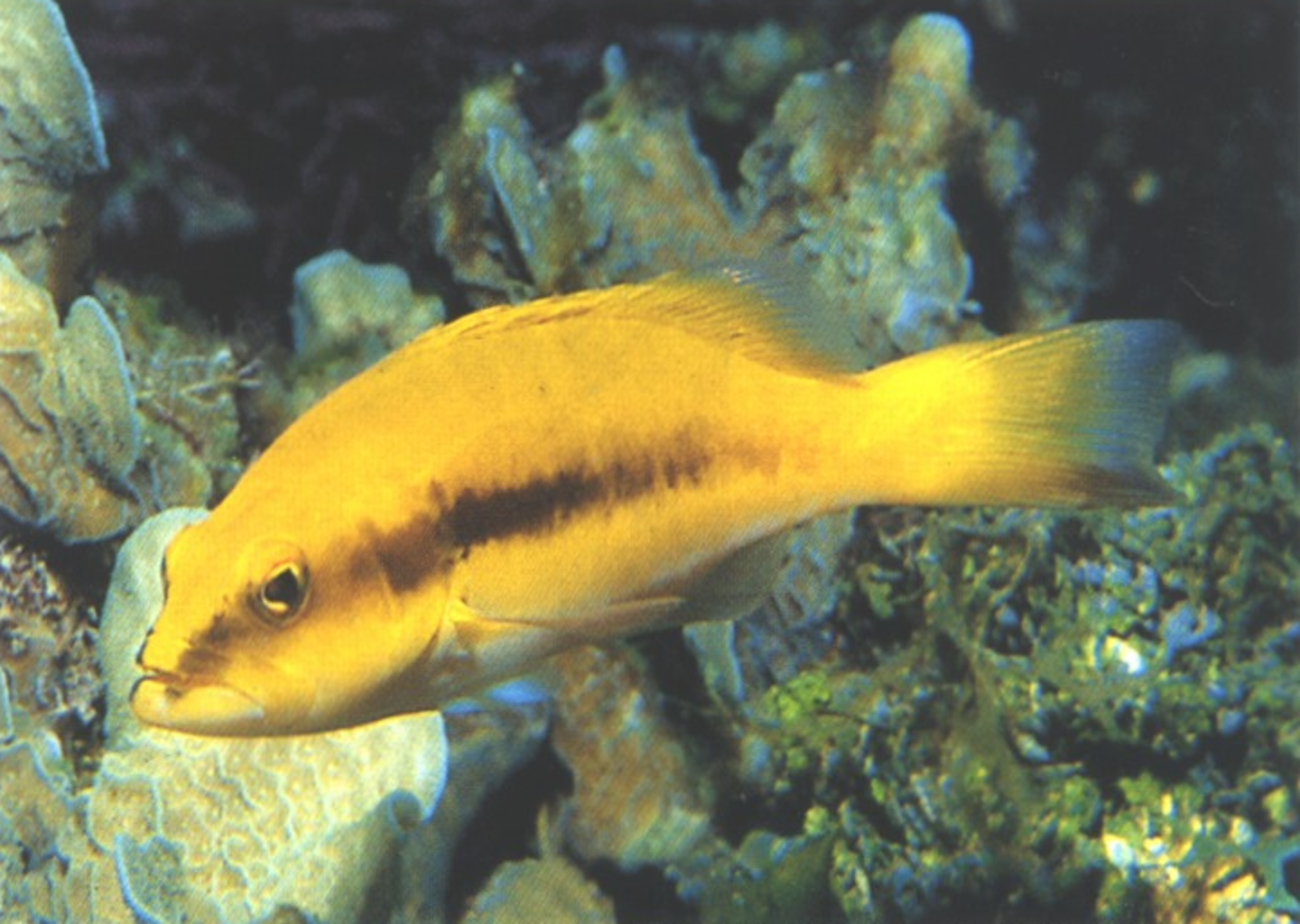
Juveniles: Yellow. 2. Dusky midbody streak.

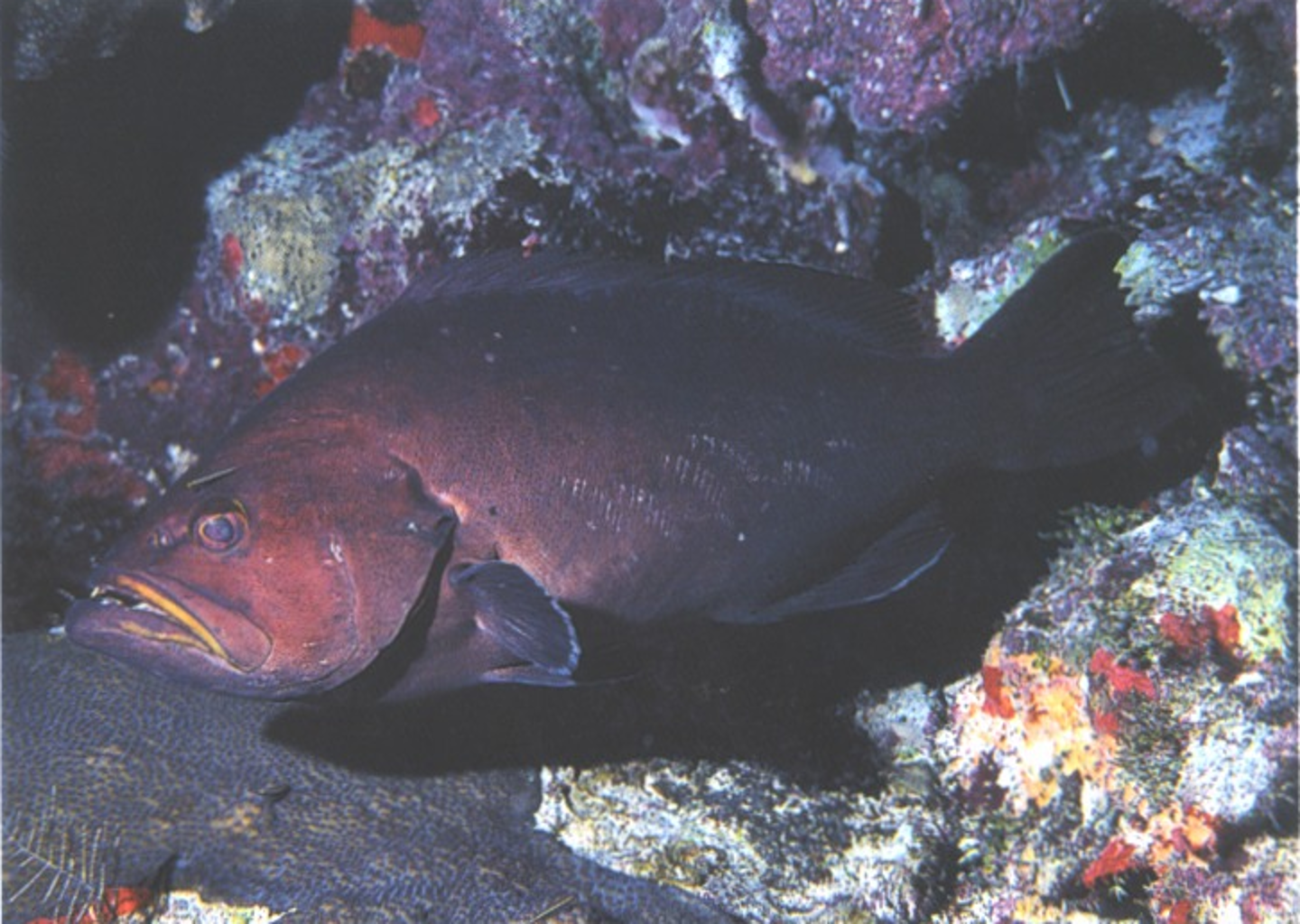
1. Distinct yellow around corners of mouth. 2. Pectoral fins pale at base and margin.
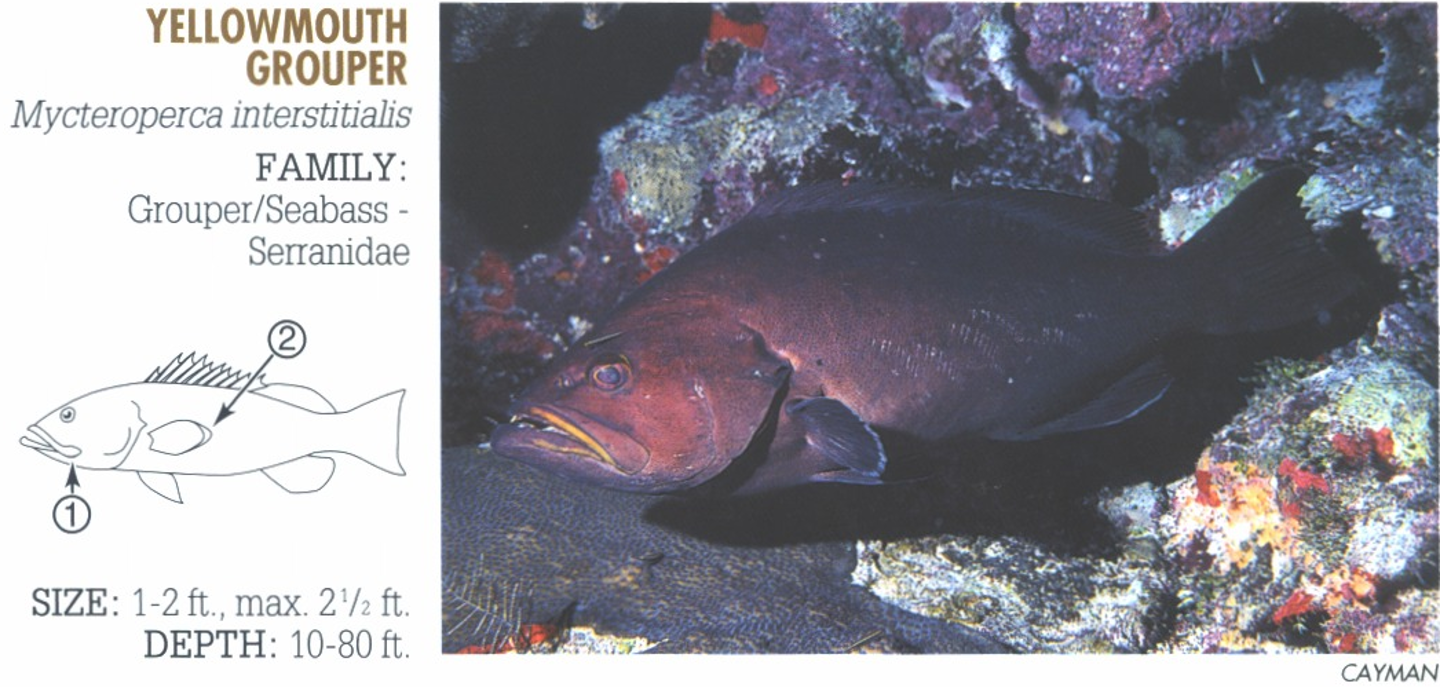

blotched pattern
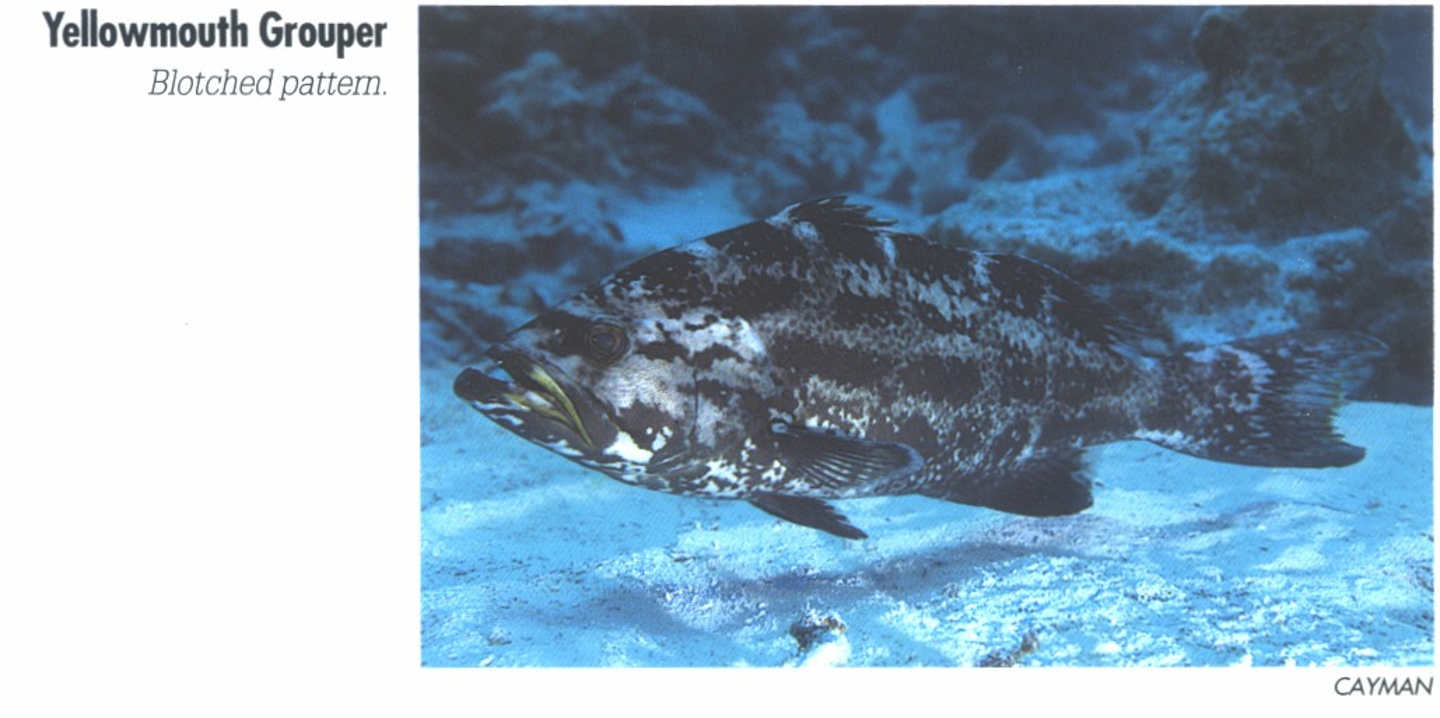
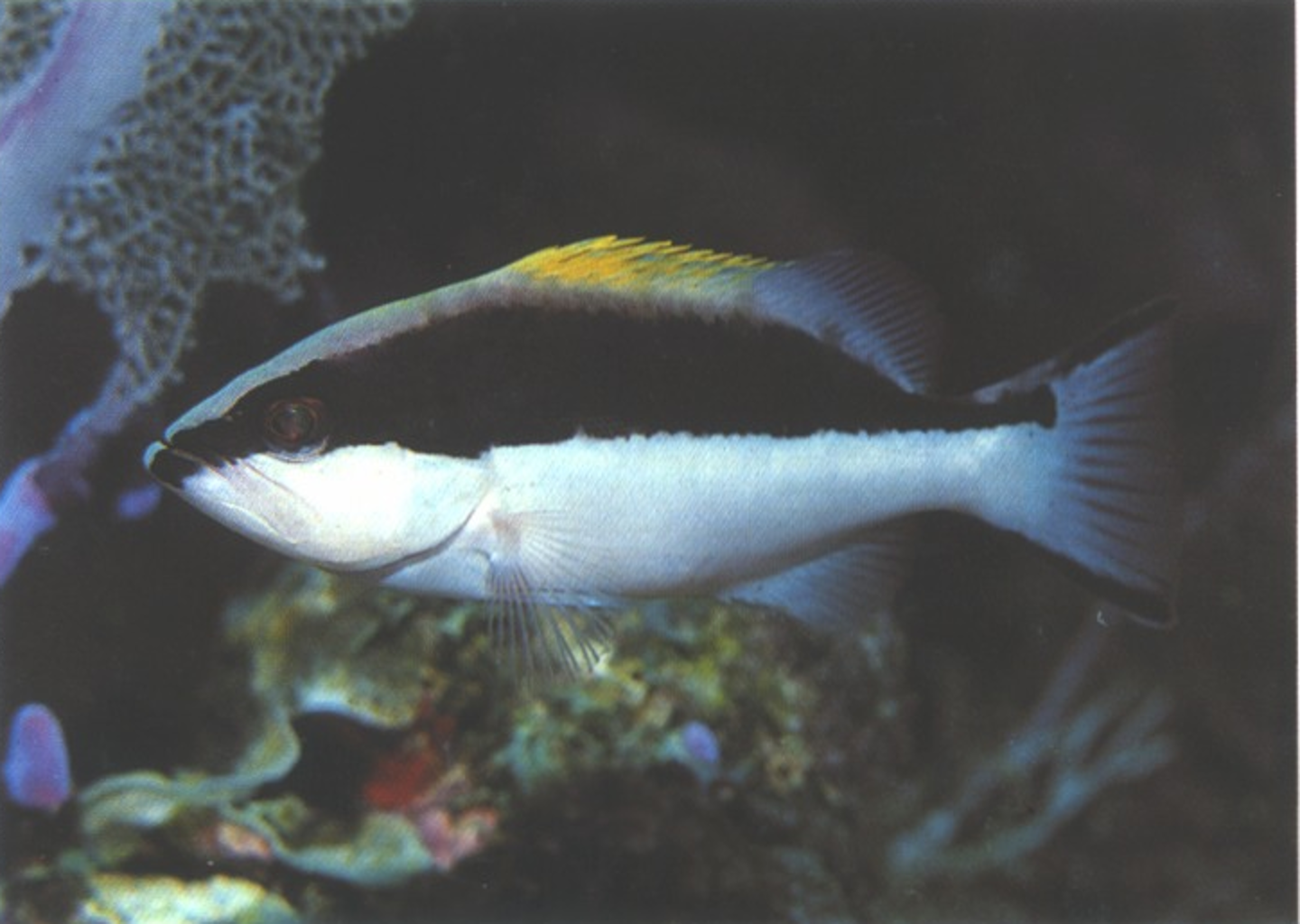
JUVENILE: 3. Bicolored; dark back, white belly. 4. yellow spinous fin.
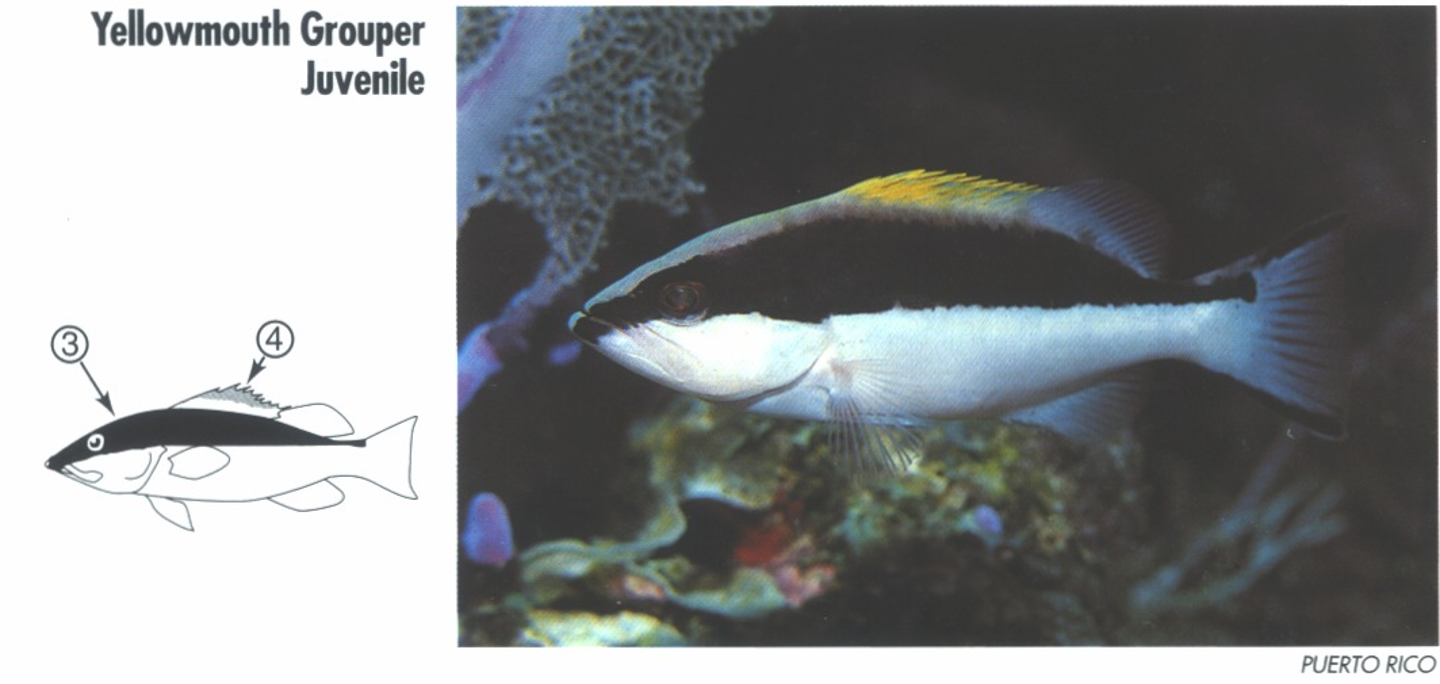
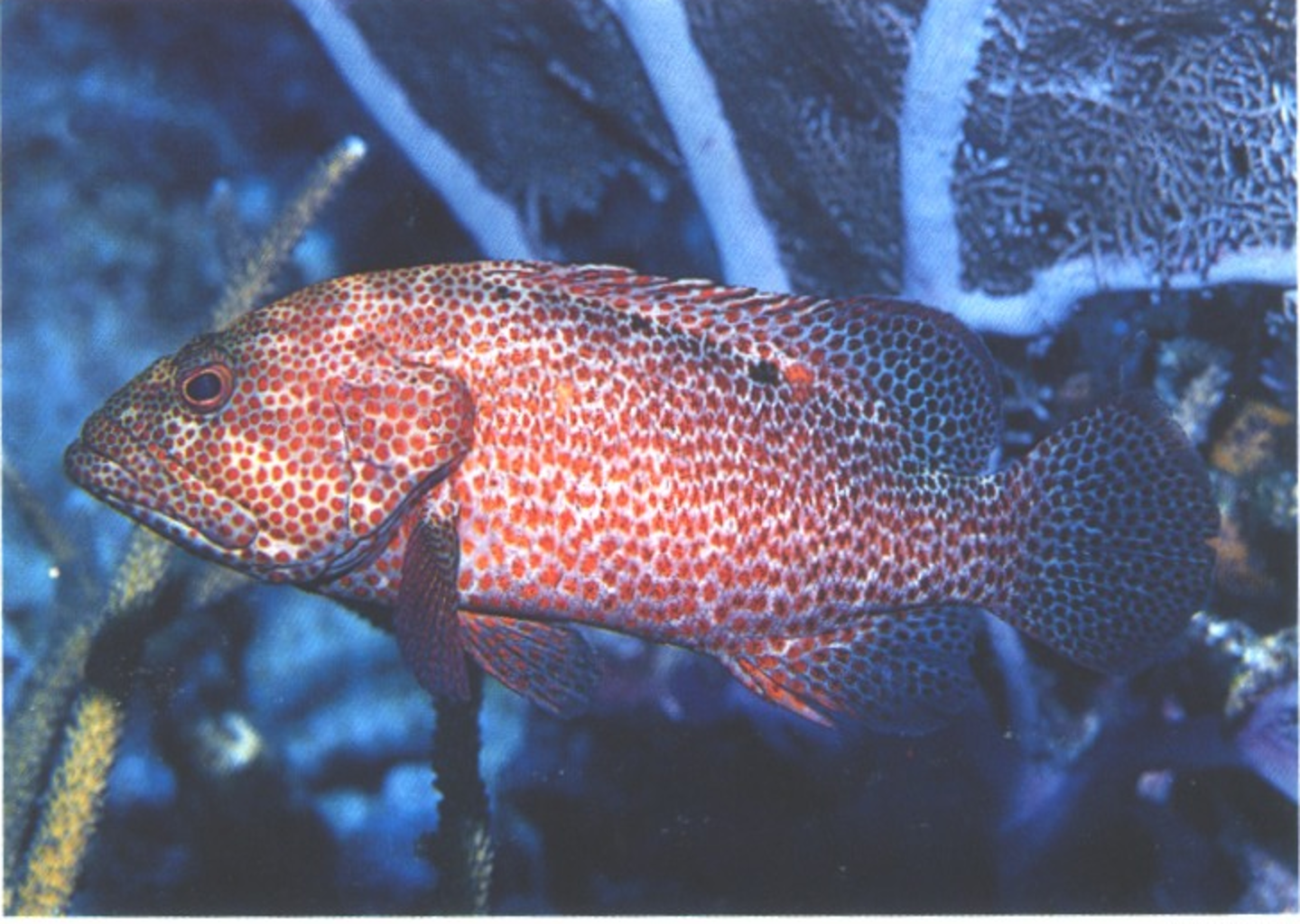
1. Three to five pale or dark spot along base of dorsal fin. 2. Tail more rounded than similar species.
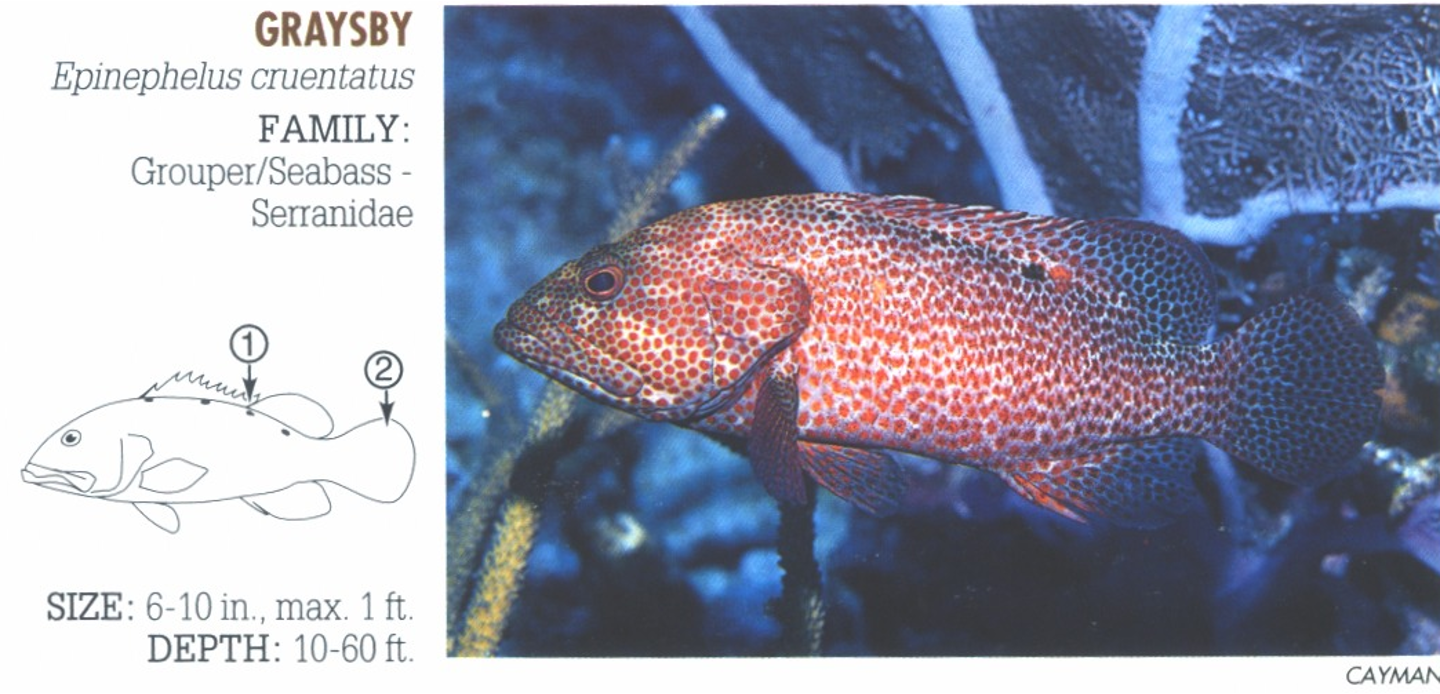
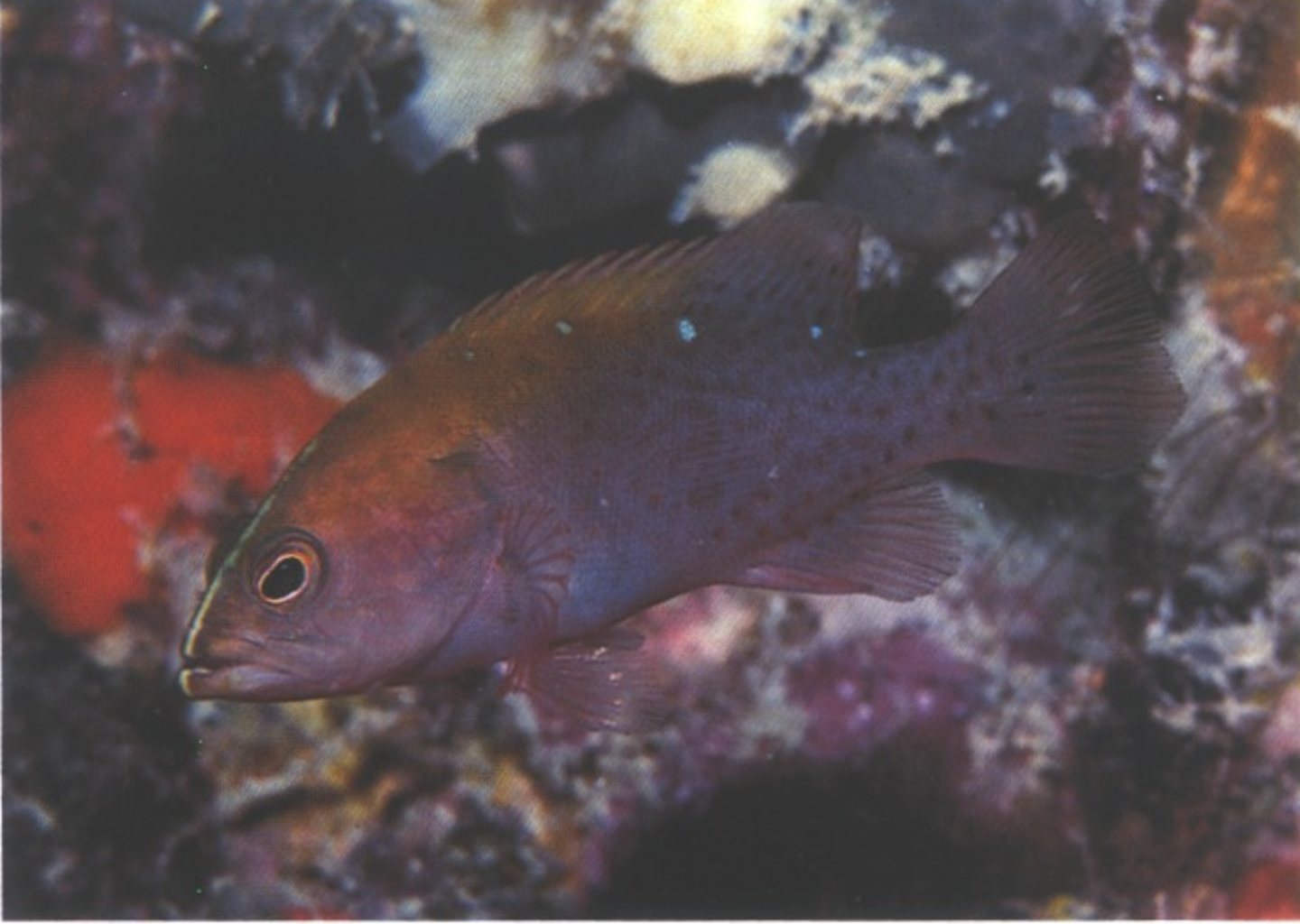
JUVENILE: 3. White band runs from nape, between eyes to lower lip.
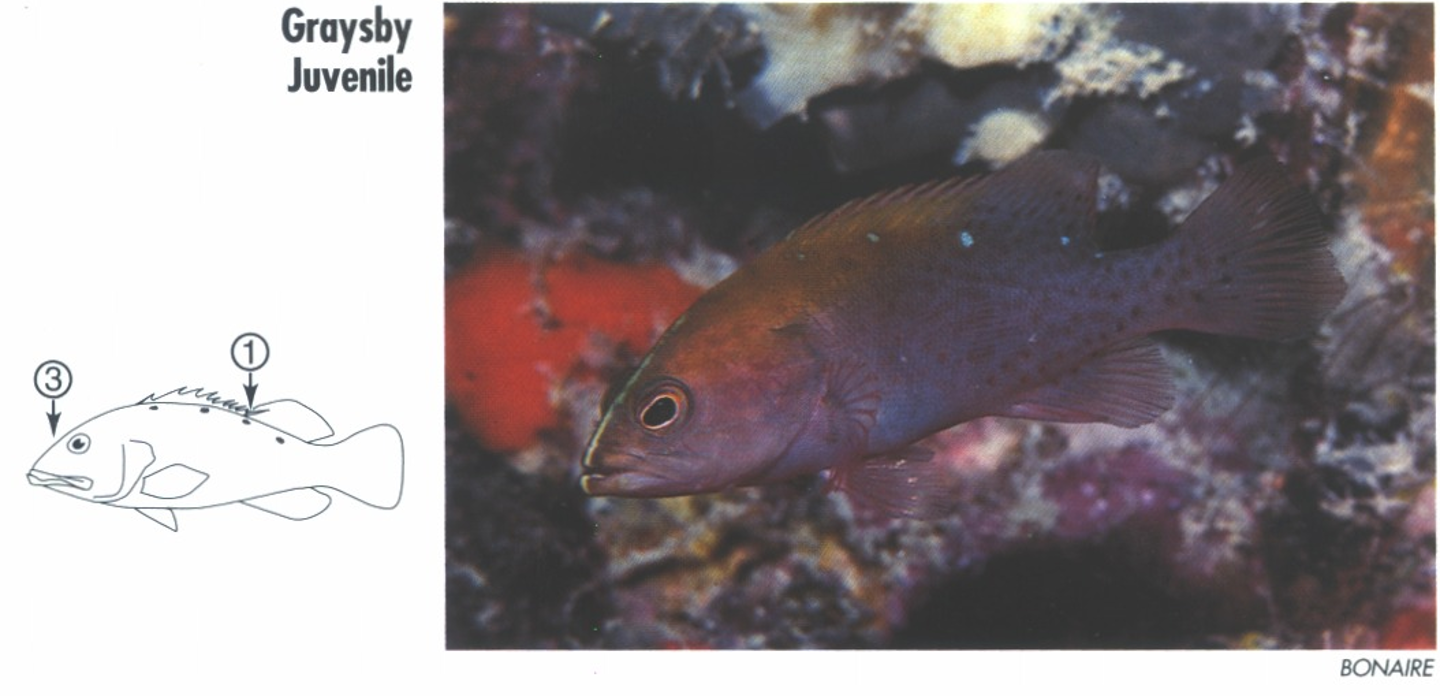

1. Tail and rear fins have black margin edged in white. (Similar Rock Hind, E. adscensionis, distinguished by lack of black margin.)

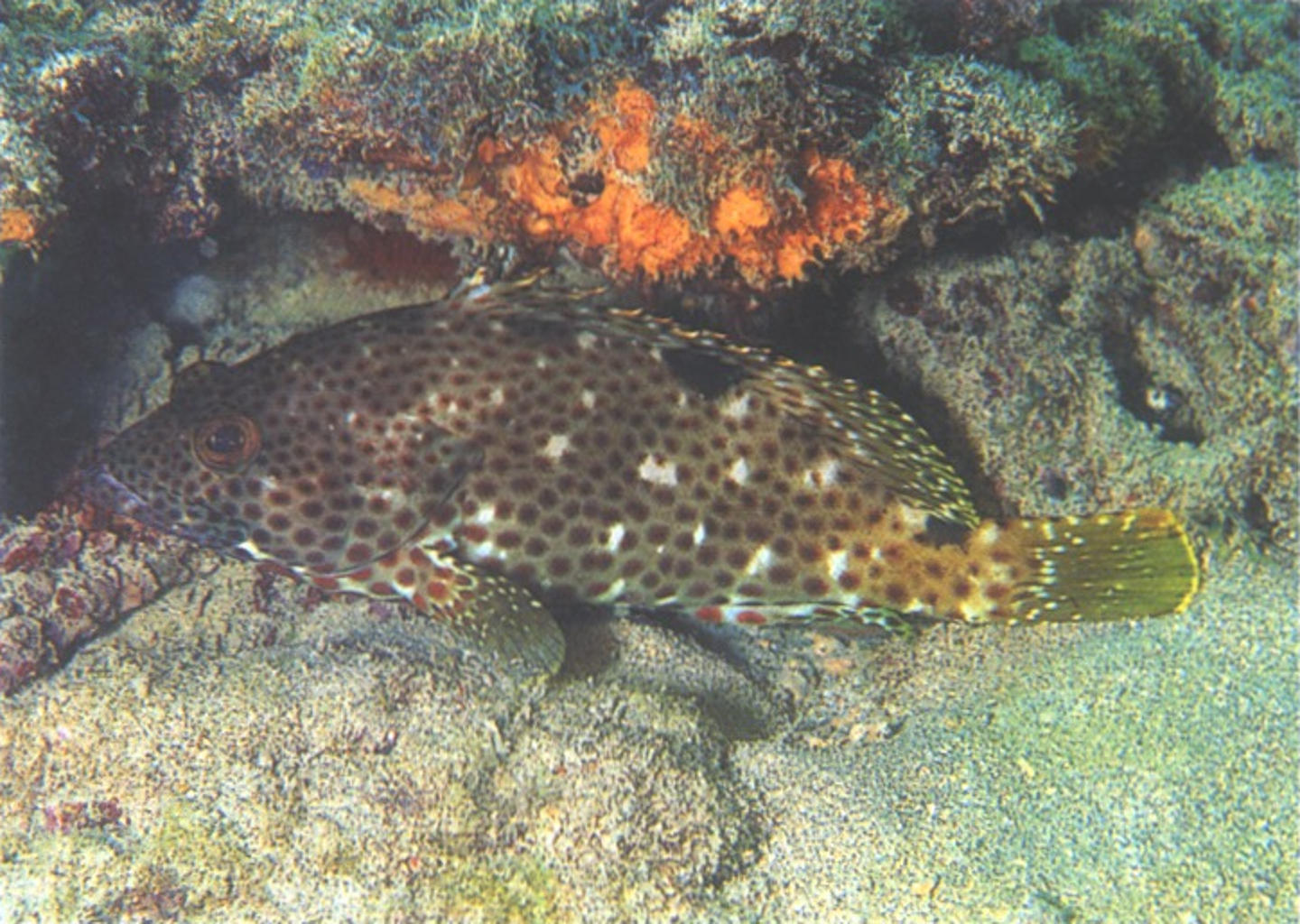
1. Black saddle blotch on base of tail. (Similar Red Hind, E. guttatus, distinguished by lack of saddle blotch.)
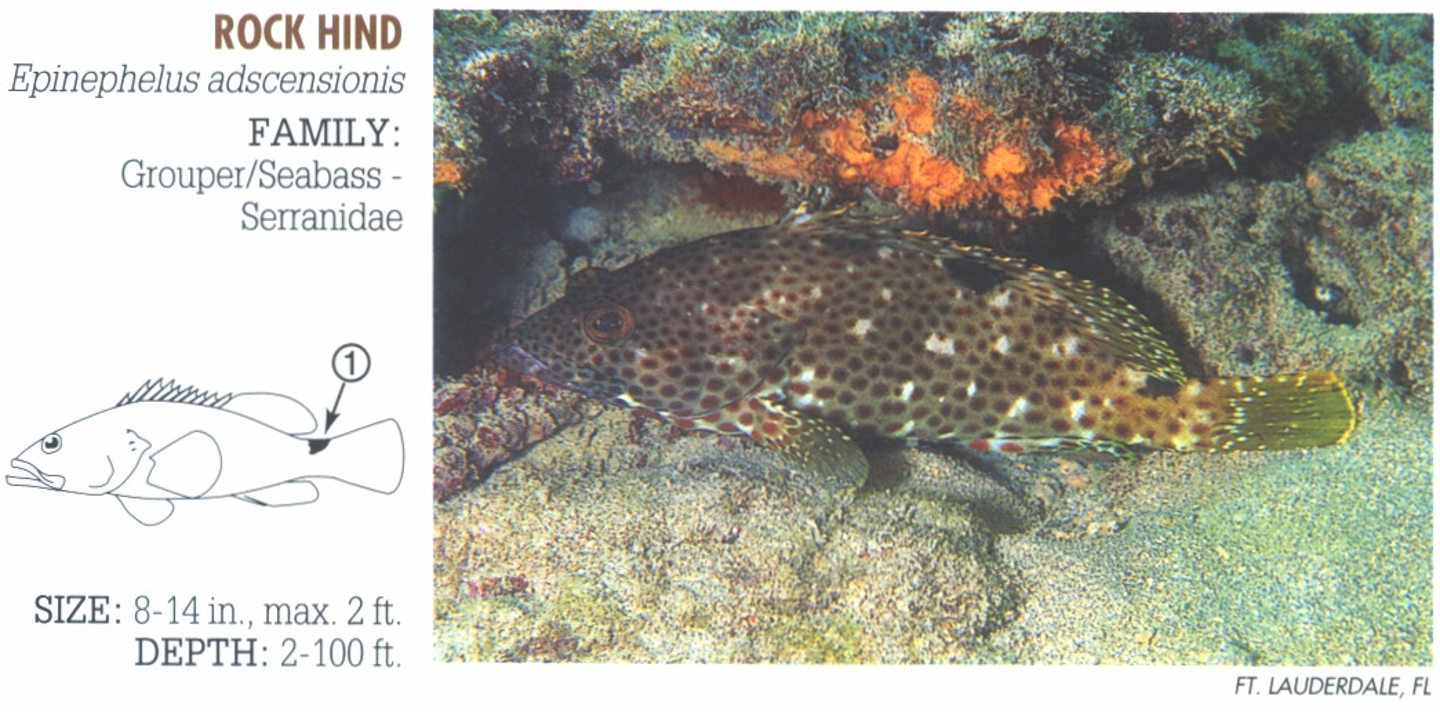
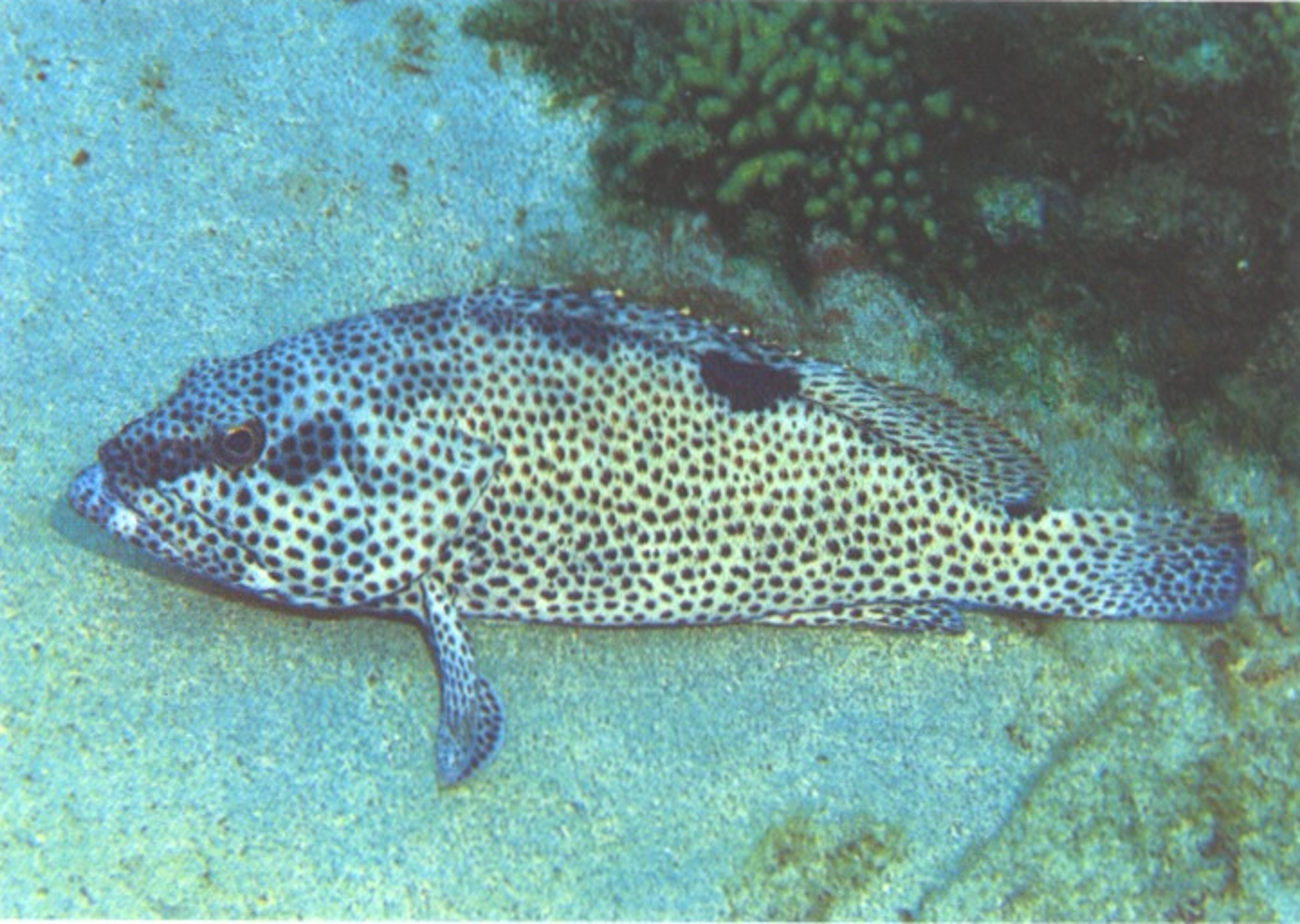
Pale phase displaying dark blotches on back.
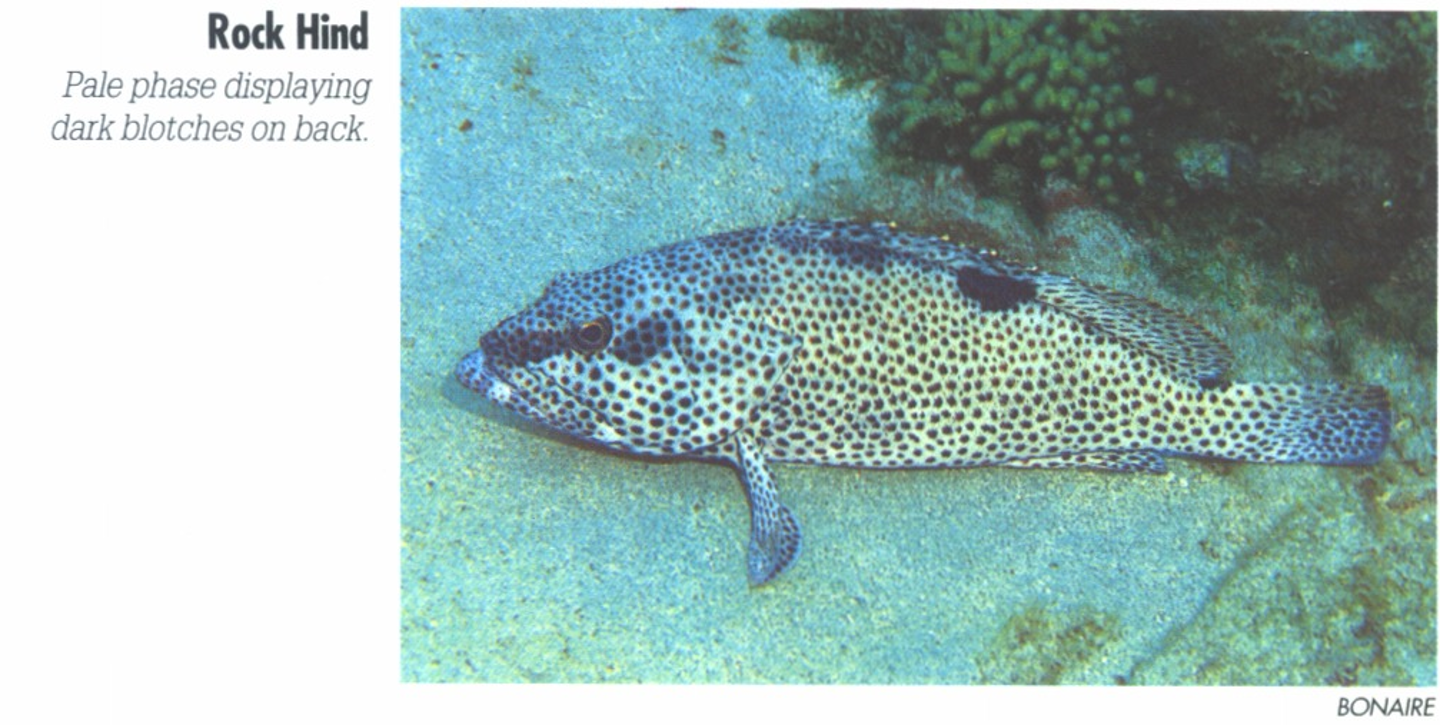
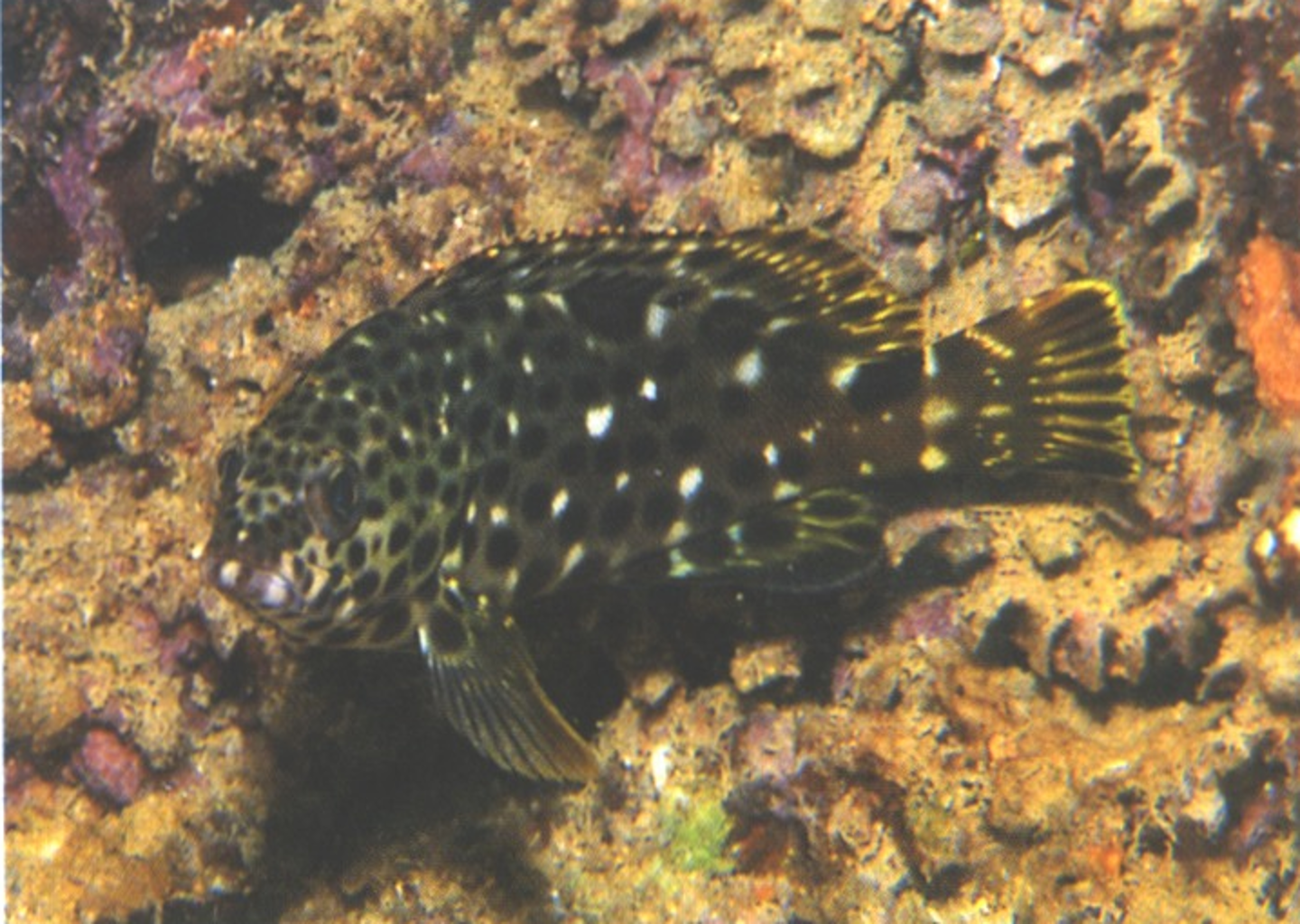
rock hind young
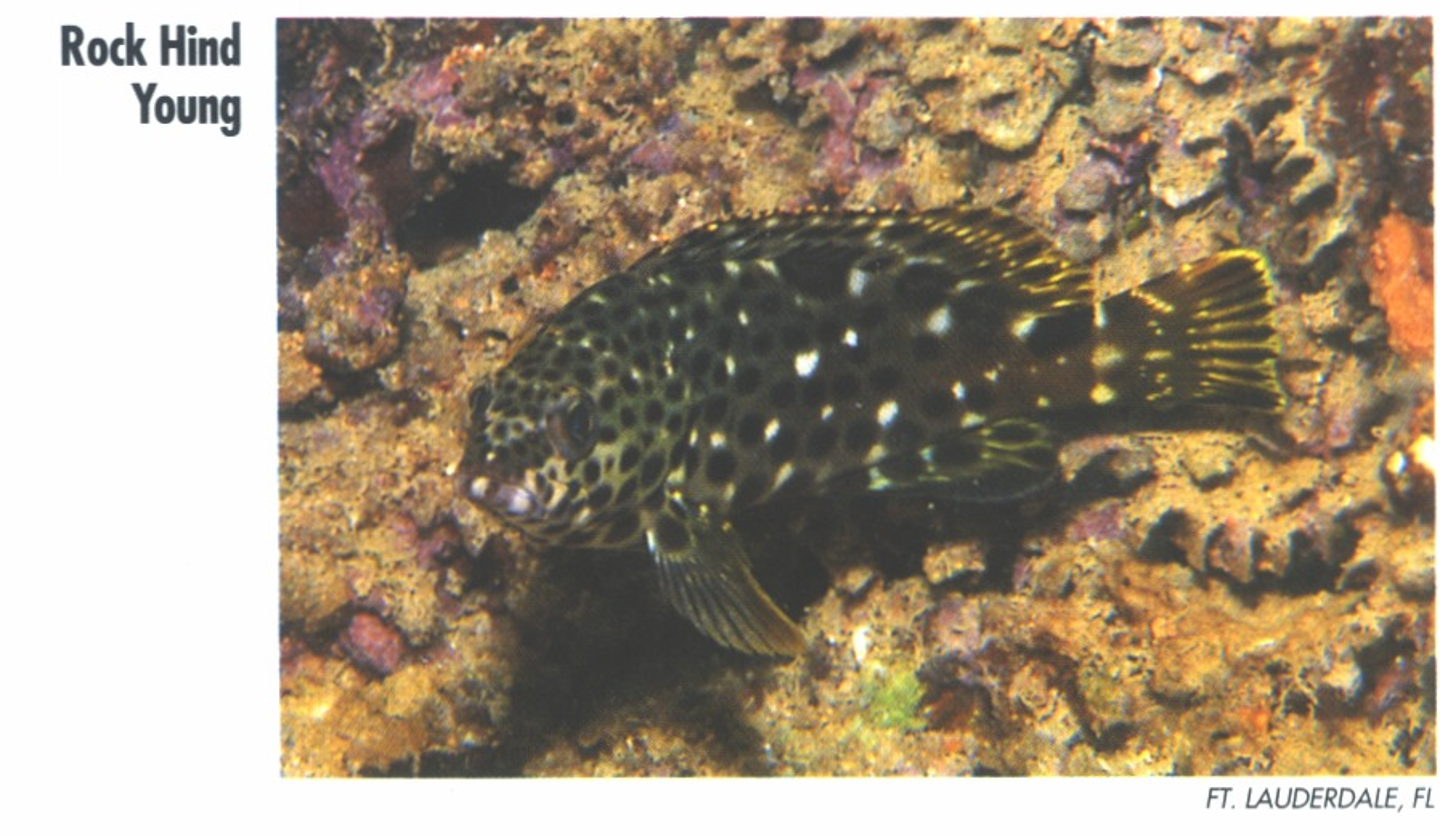
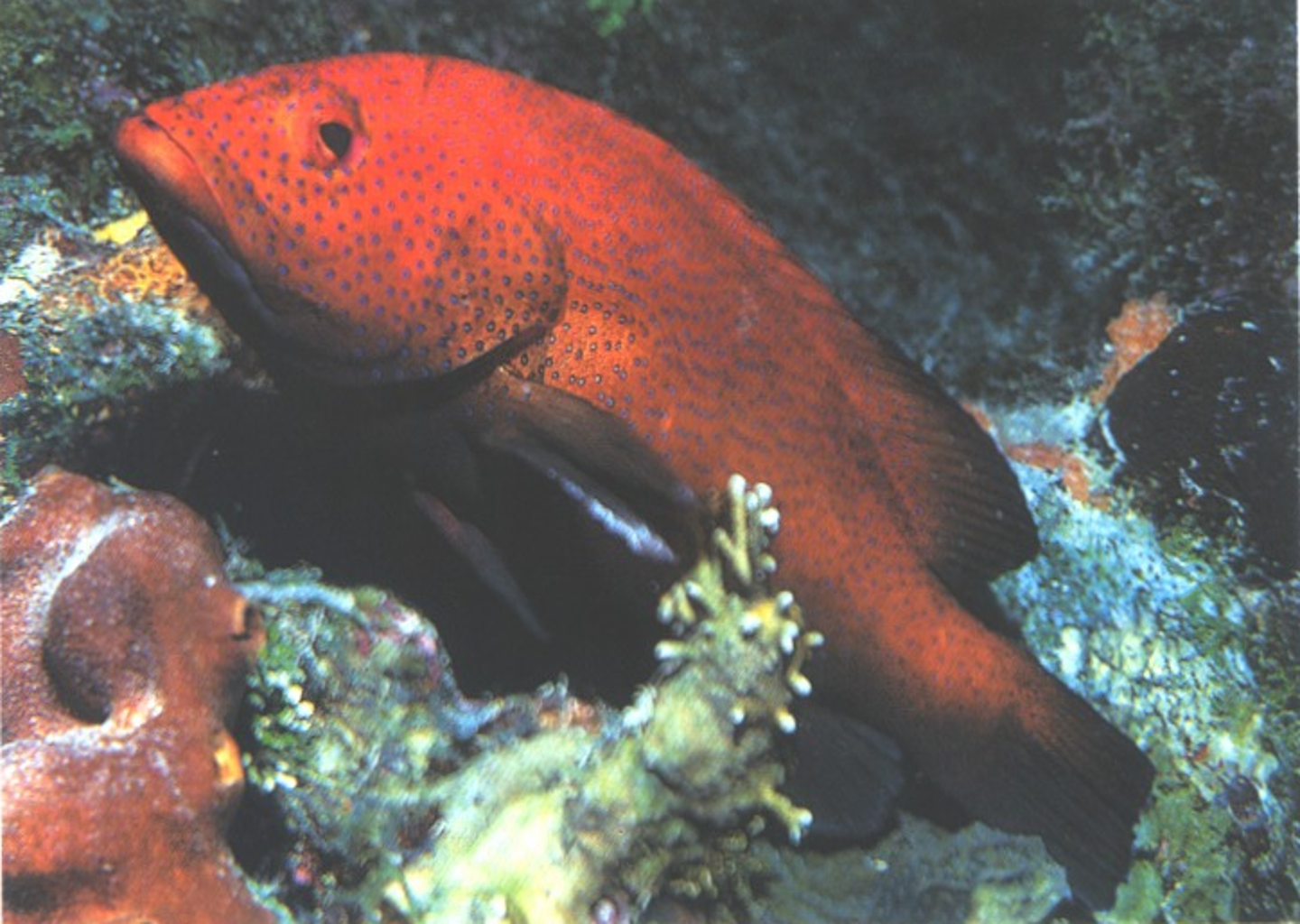
1. Two black dots on lower lip. 2. Two black dots behind dorsal fin on base of tail.
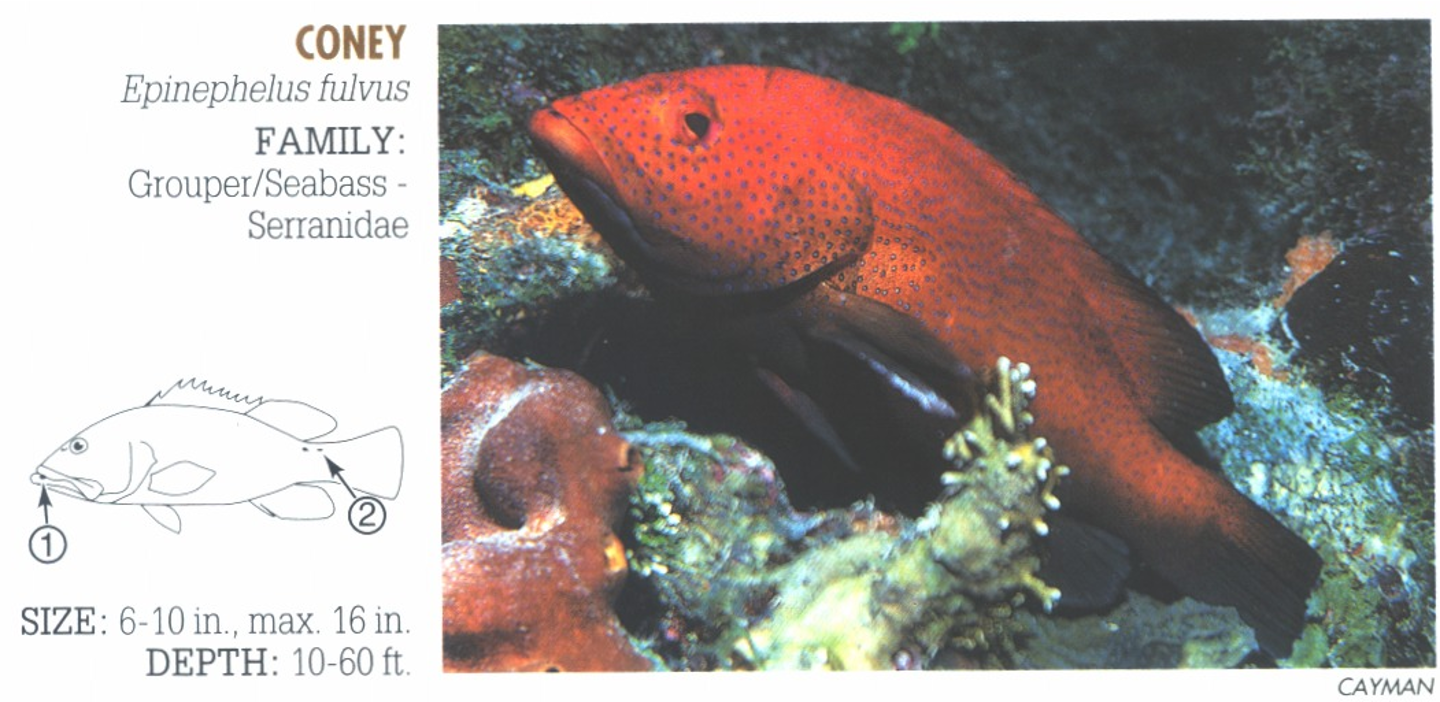
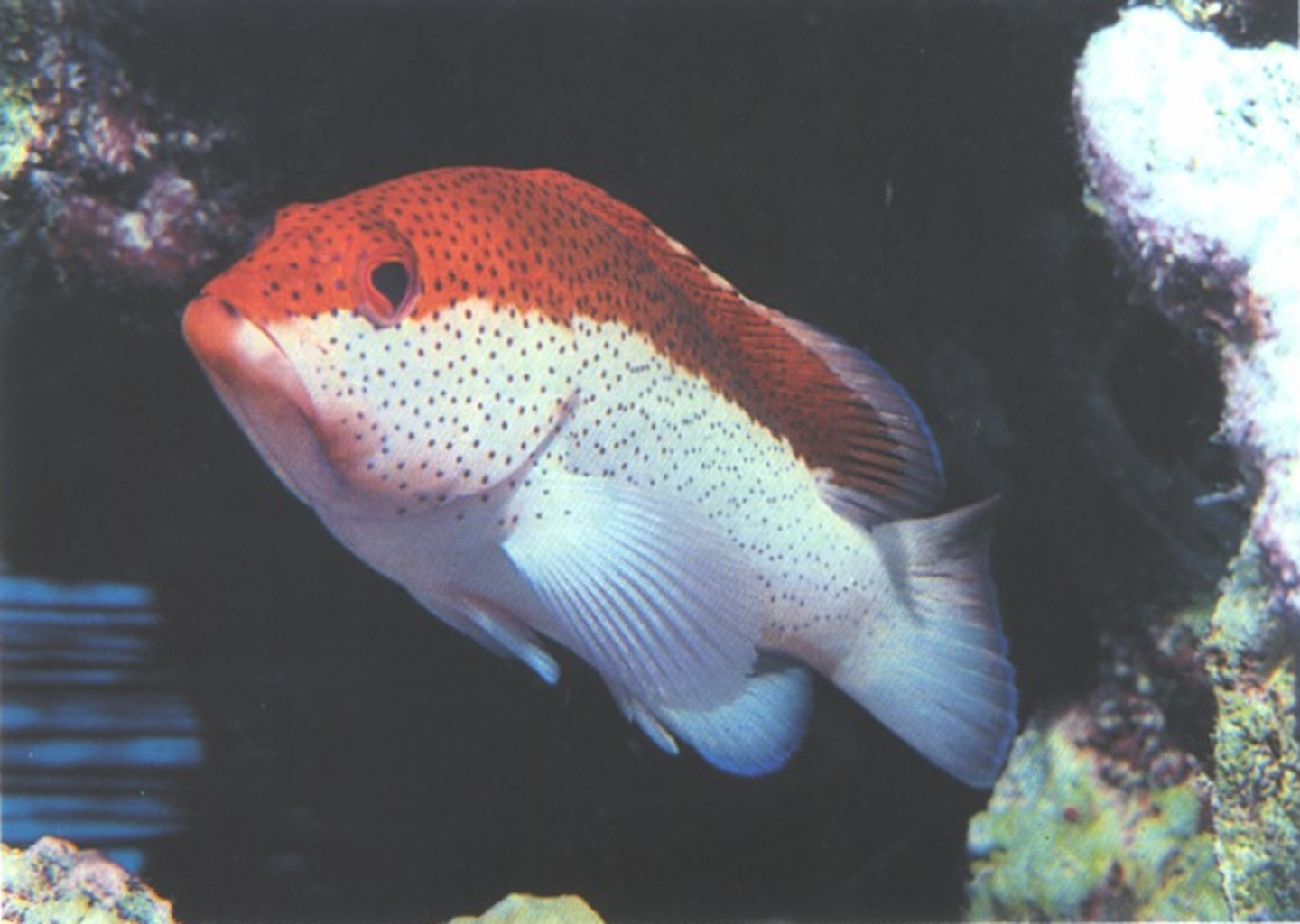
1. Two black dots on lower lip. 2. Two black dots behind dorsal fin on base of tail.

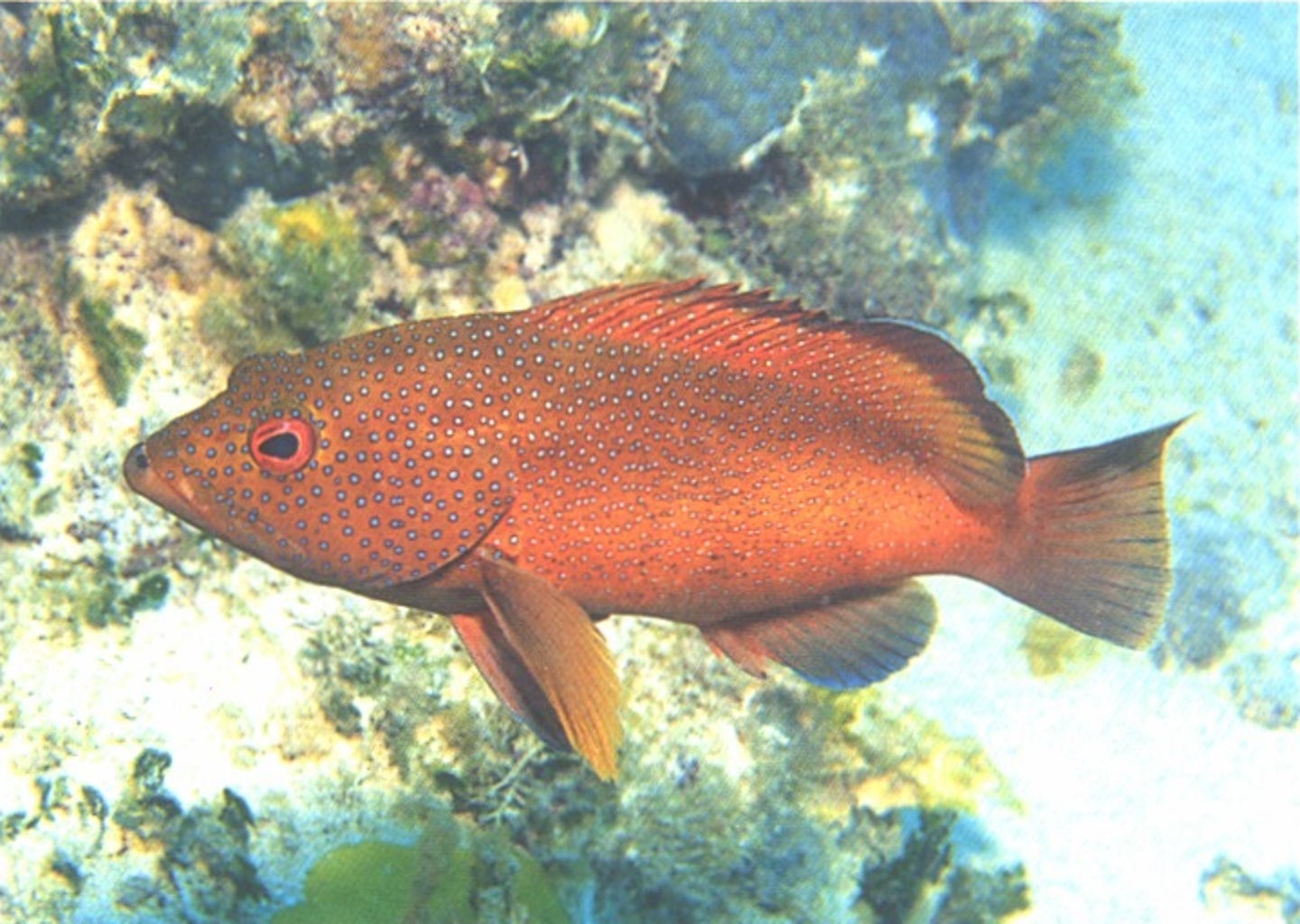
Brown color phase.
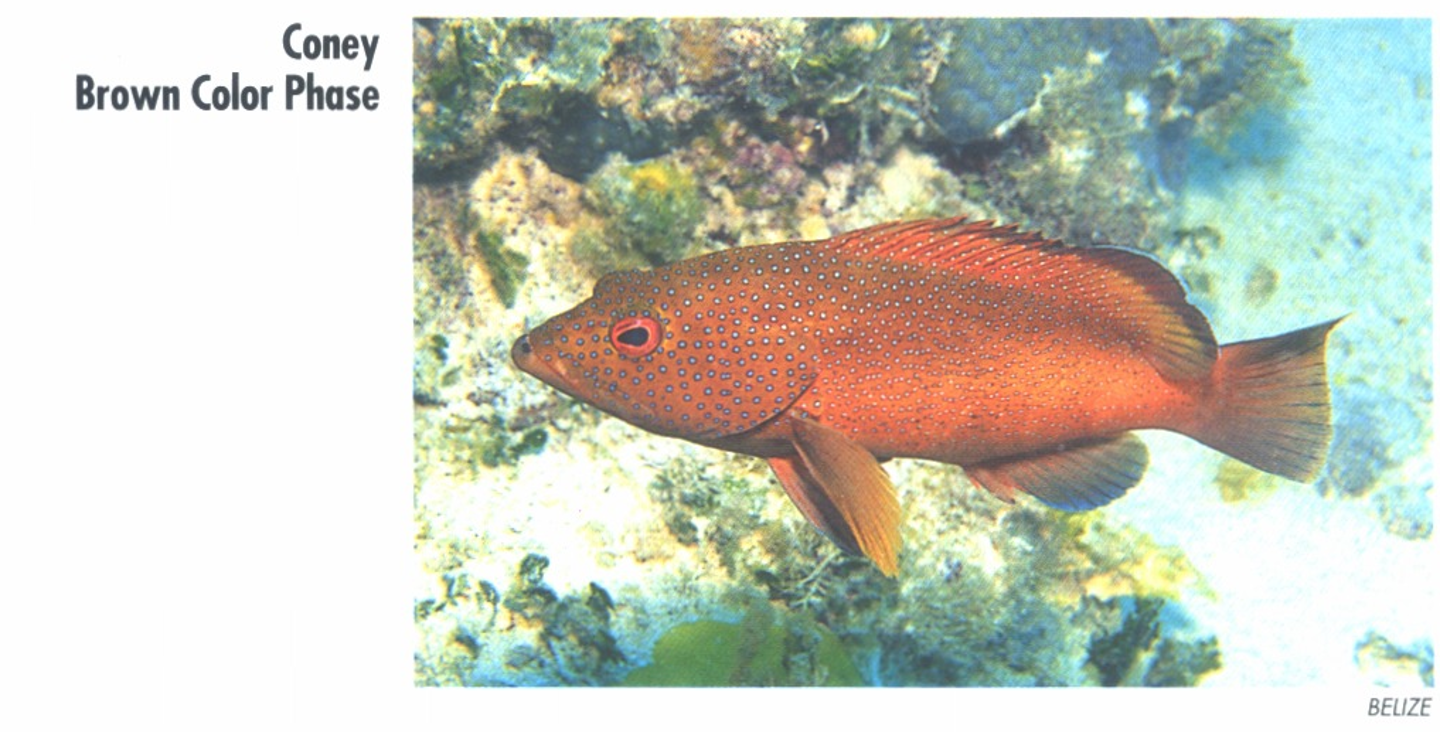
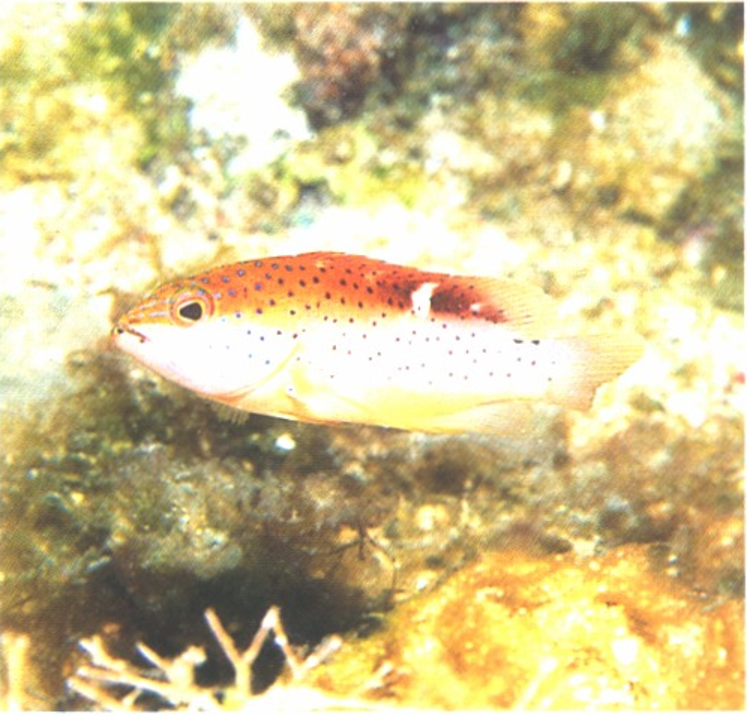
JUVENILE: 3. White spot on middorsal fin and back, often surrounded by black. 4. Four spots on lower lip. 5. Two white spots on base of tail.
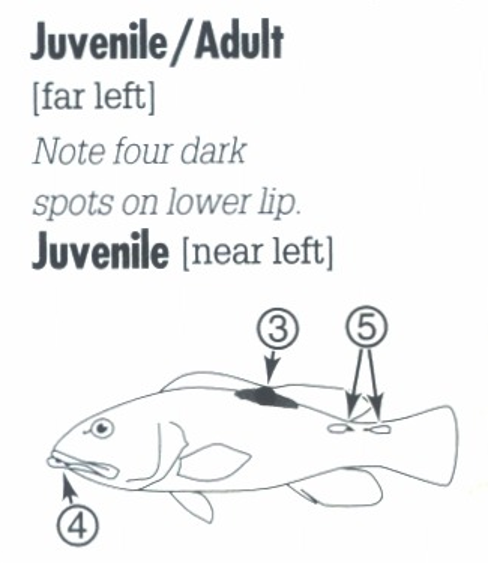
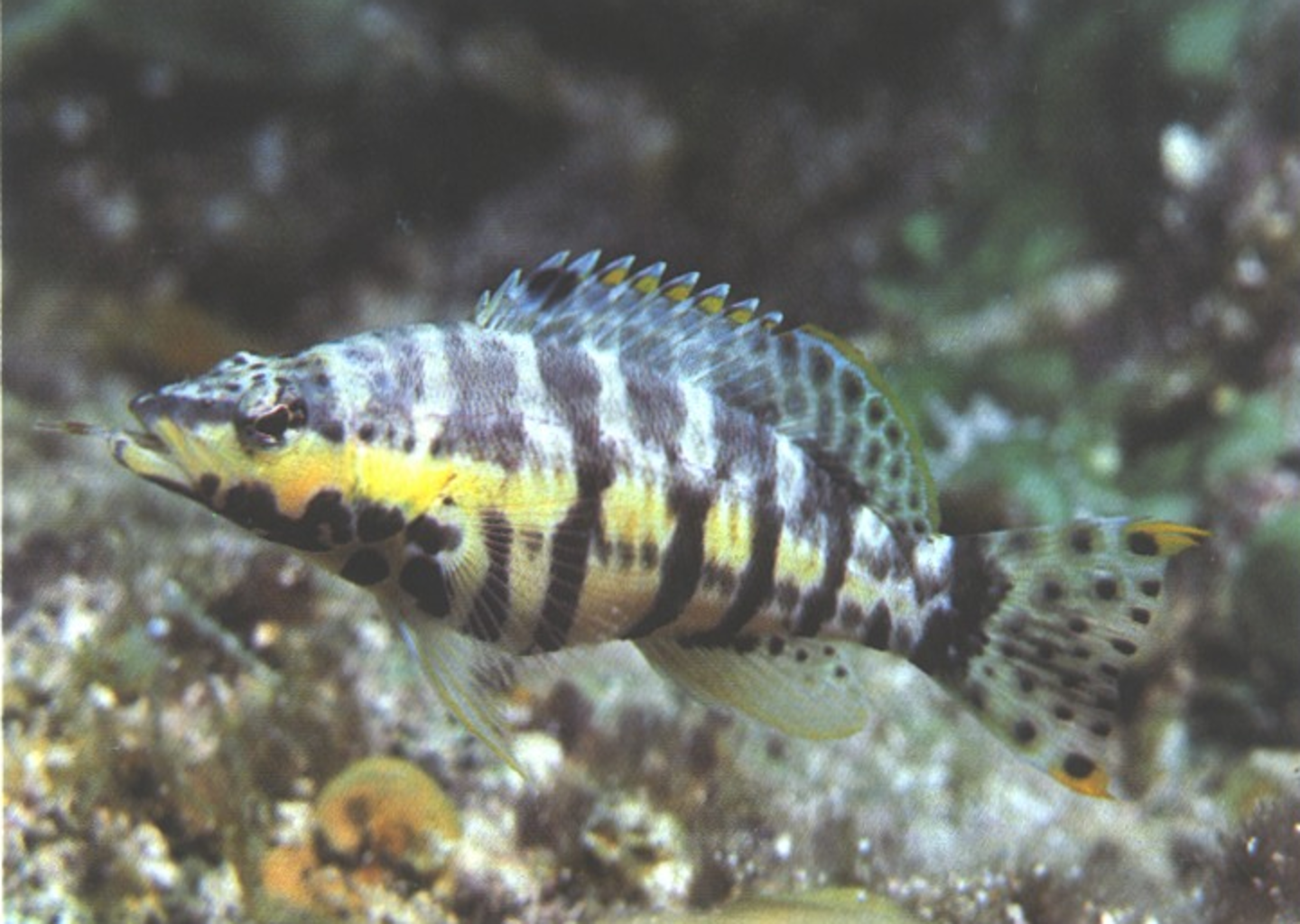
1. Dark, tiger-like bars.
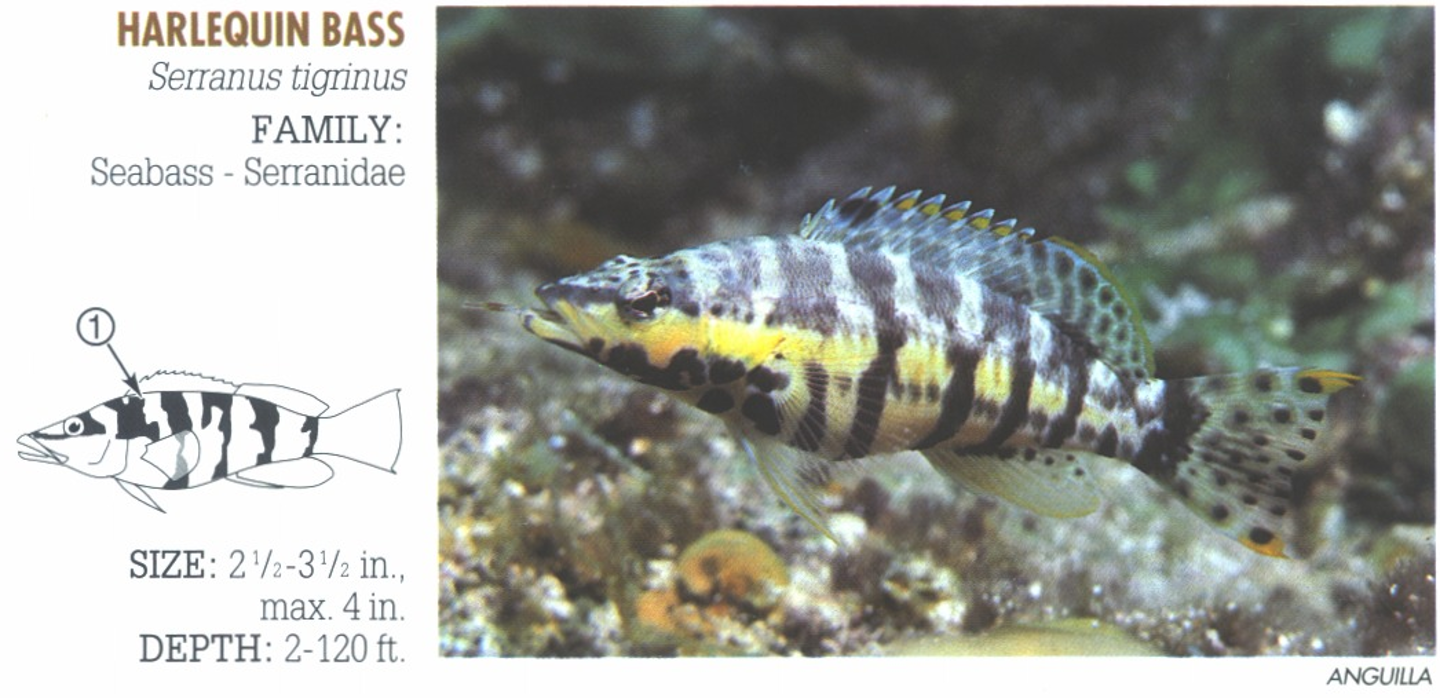
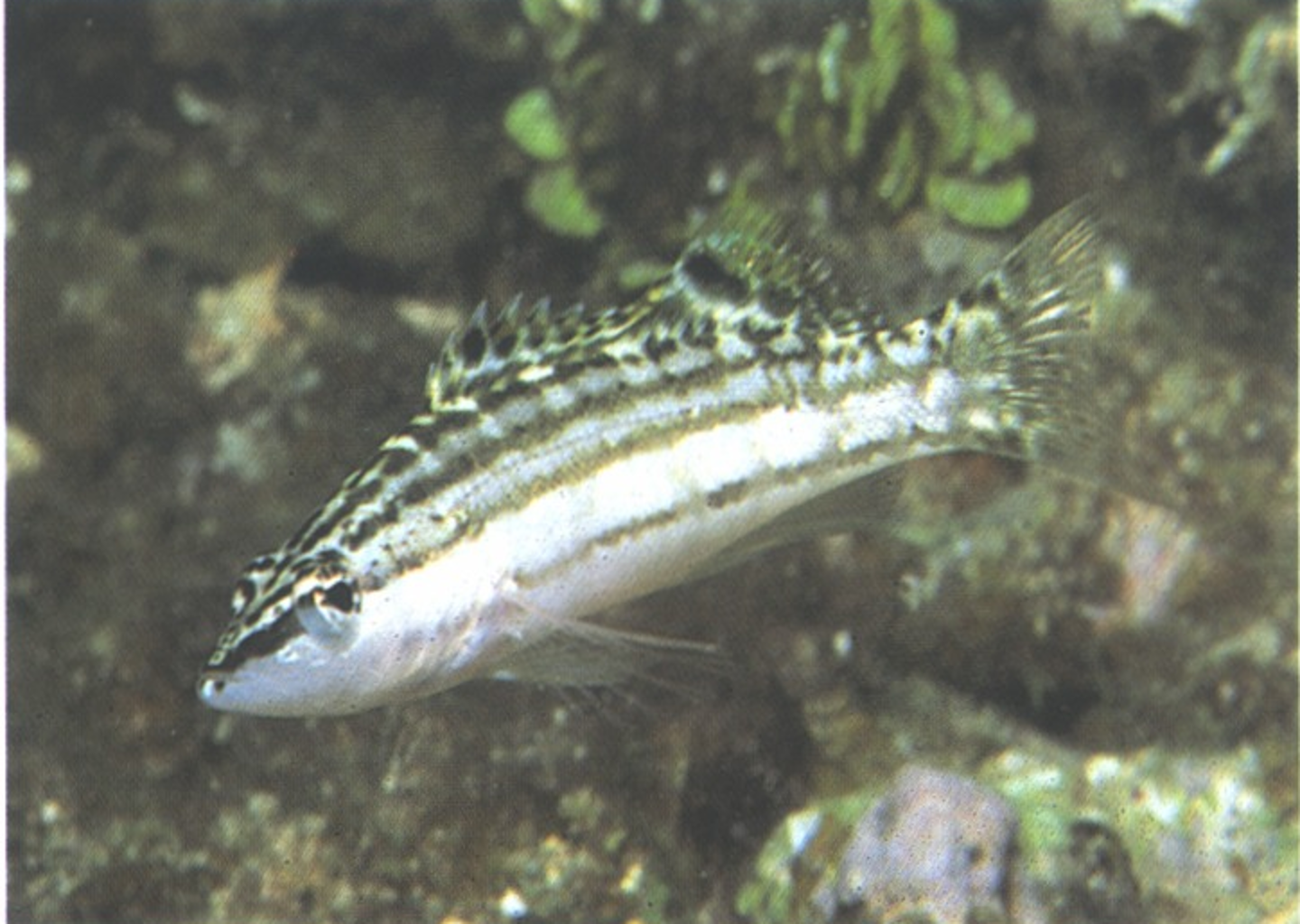
Harlequin Bass Juvenile.
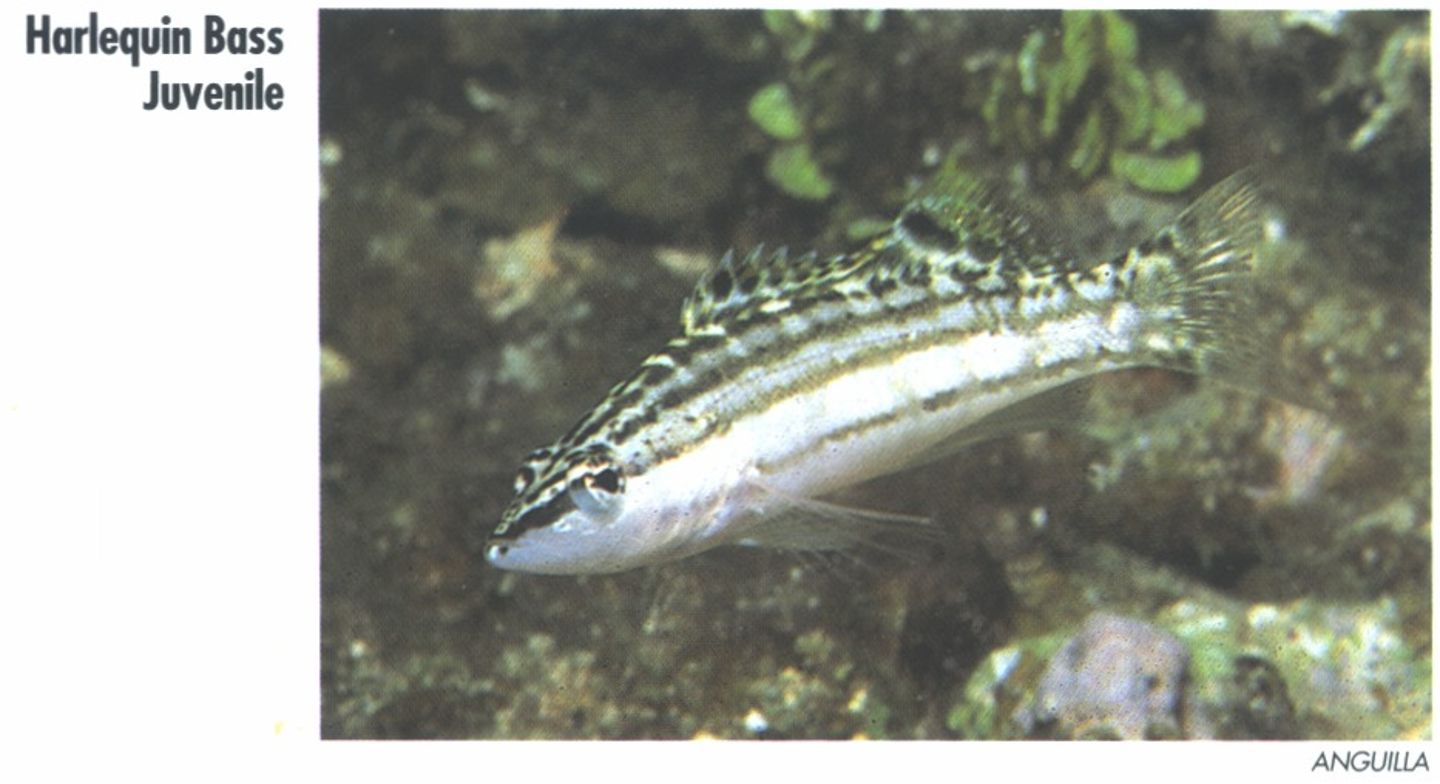
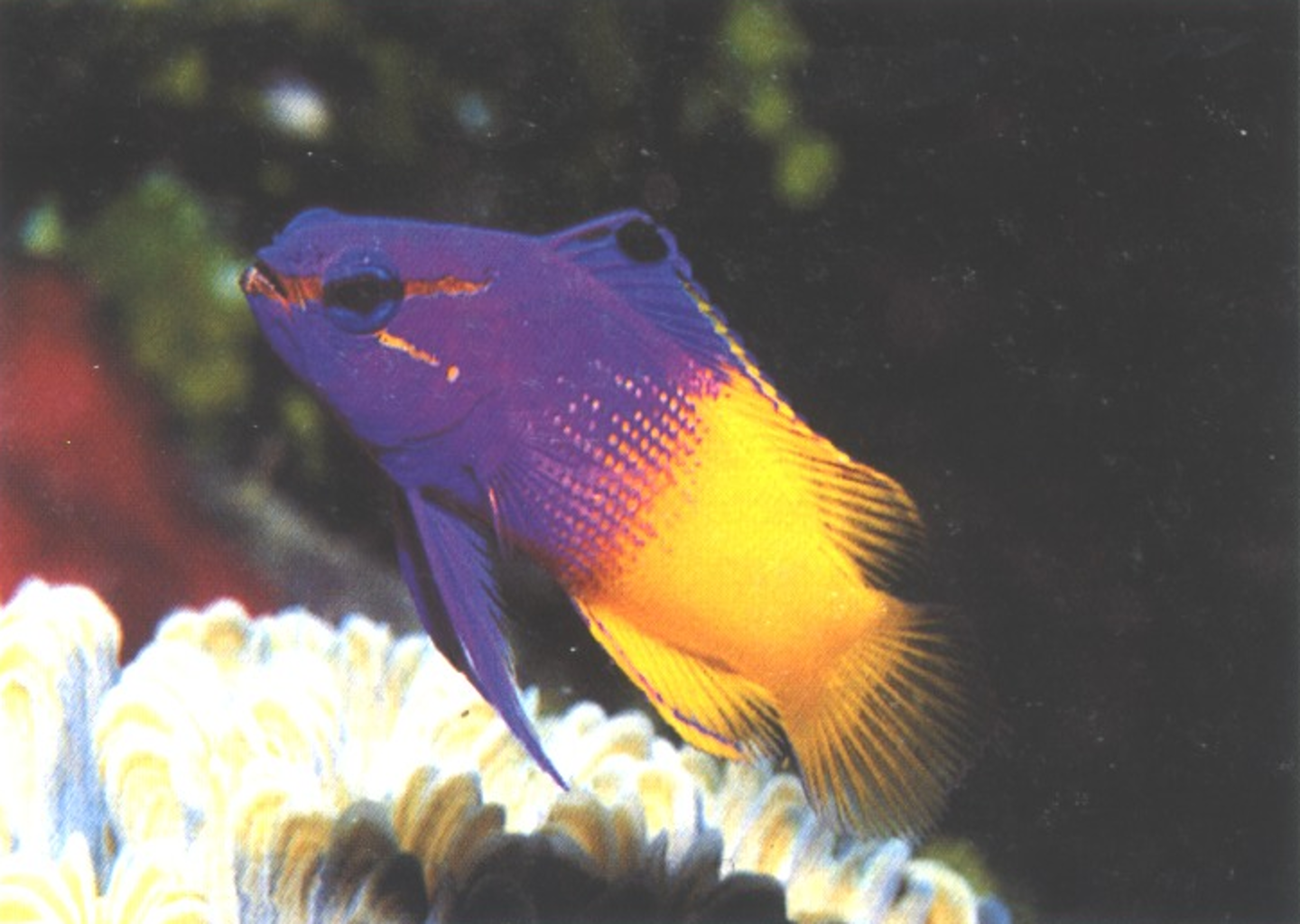
1. Bicolored—purple to violet front and yellow to gold rear. 2. Dark spot on dorsal fin.
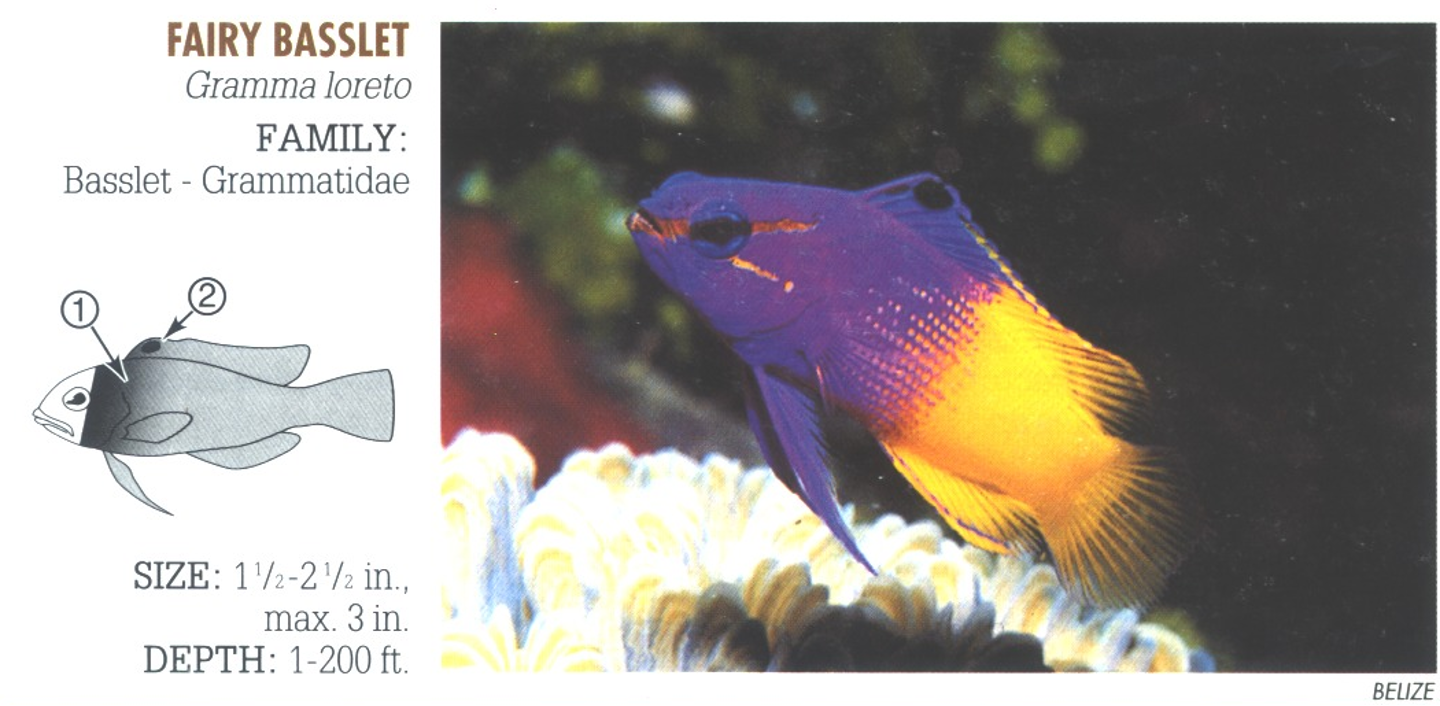
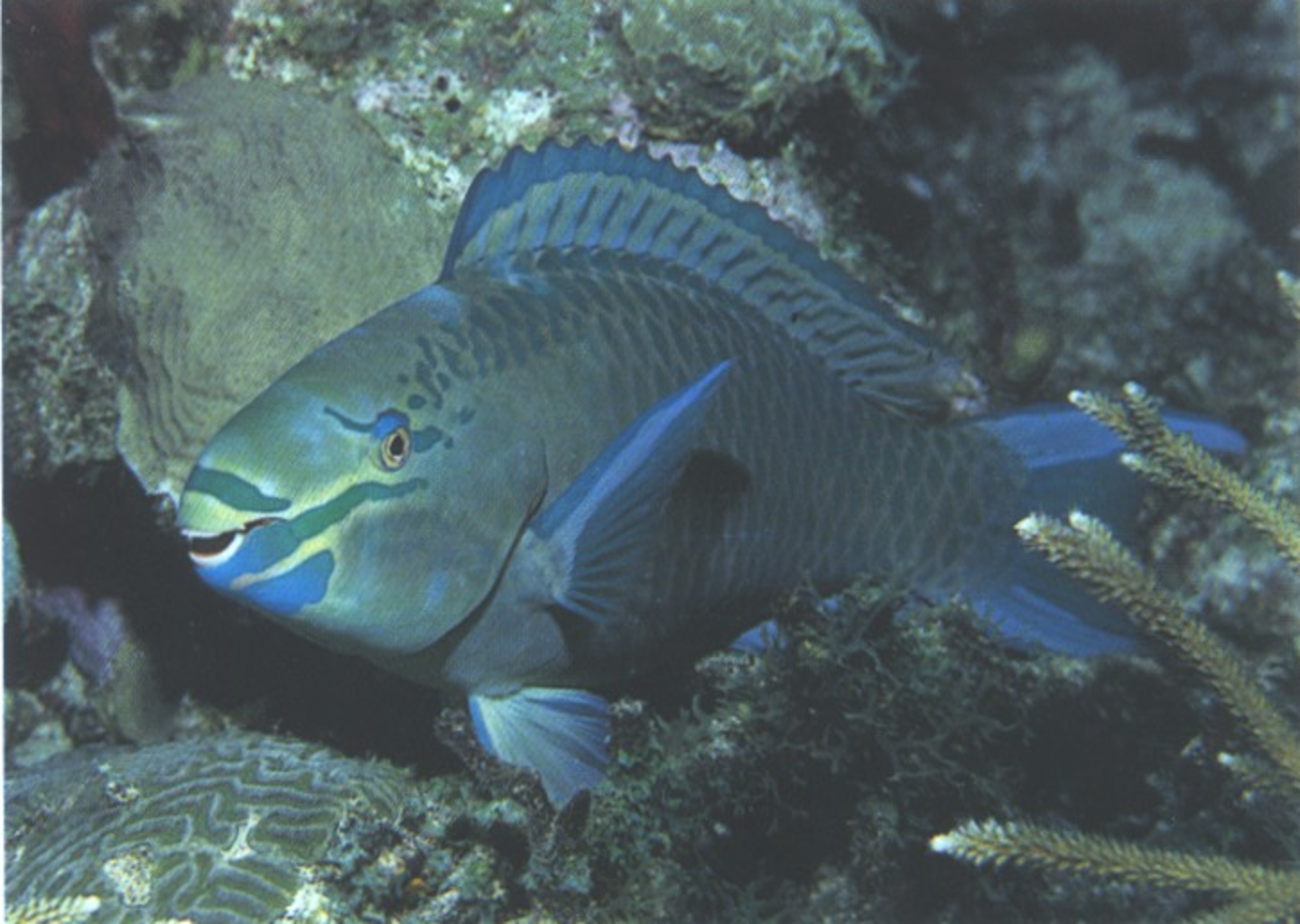
TP: 1. Dramatic blue to green markings around mouth. 2. Light bar on pectoral fin.

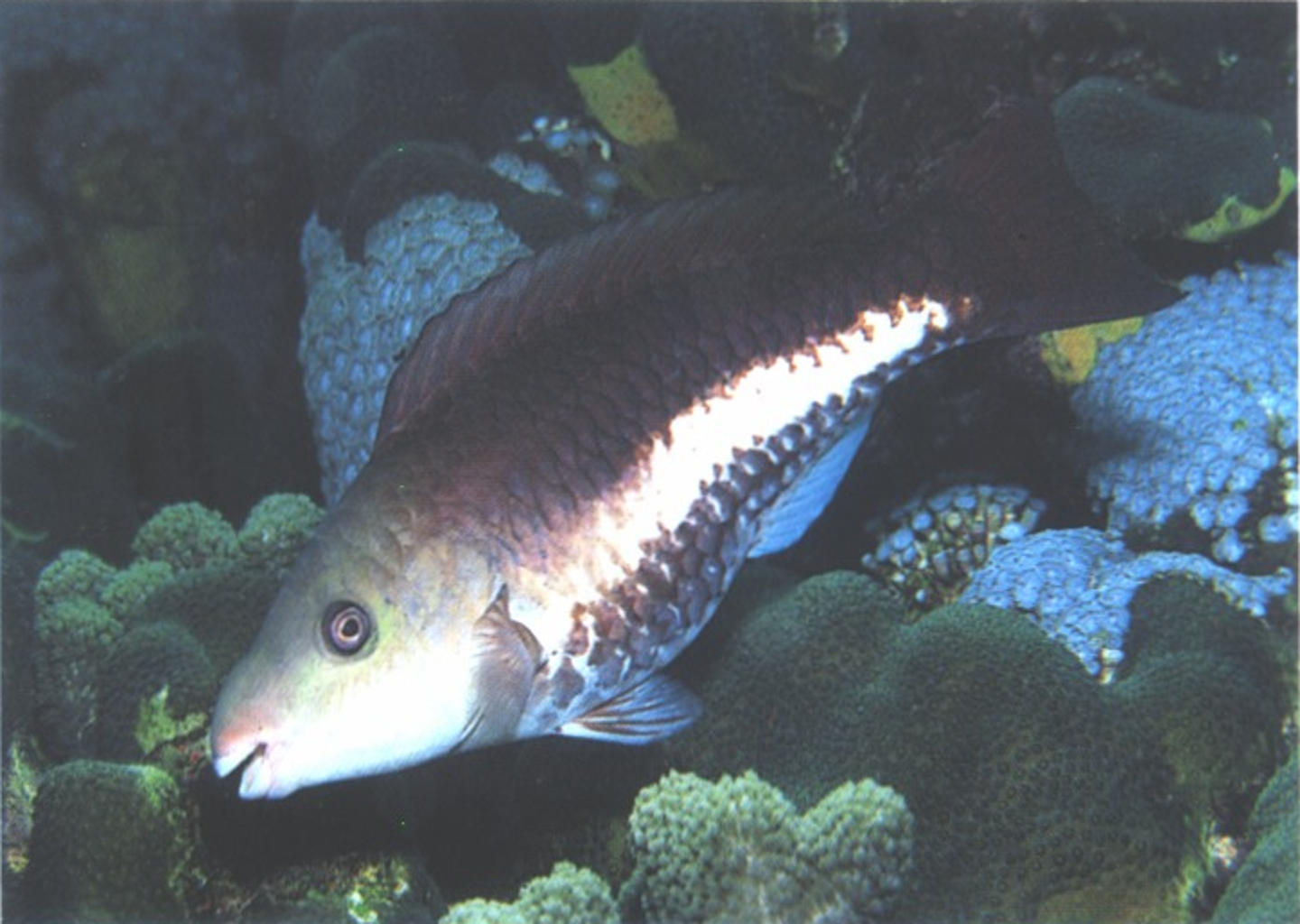
IP: Dark gray to black. 3. Broad, white stripe, with diffuse edges, down midbody.

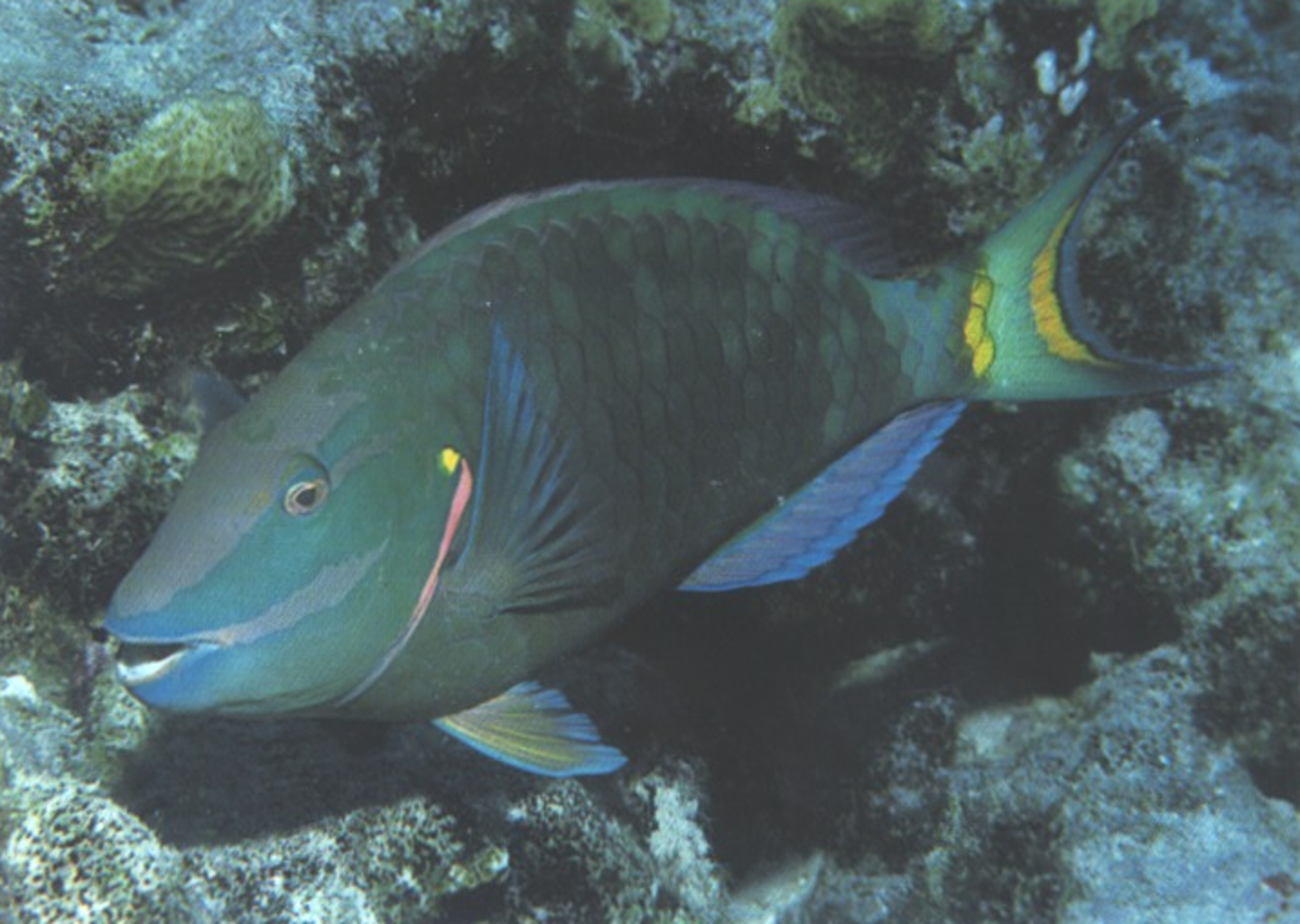
TP: 1. Bright yellow spot at upper corner of gill cover. 2. Yellow area at base of tail. 3. Salmon to yellow crescent on tail.
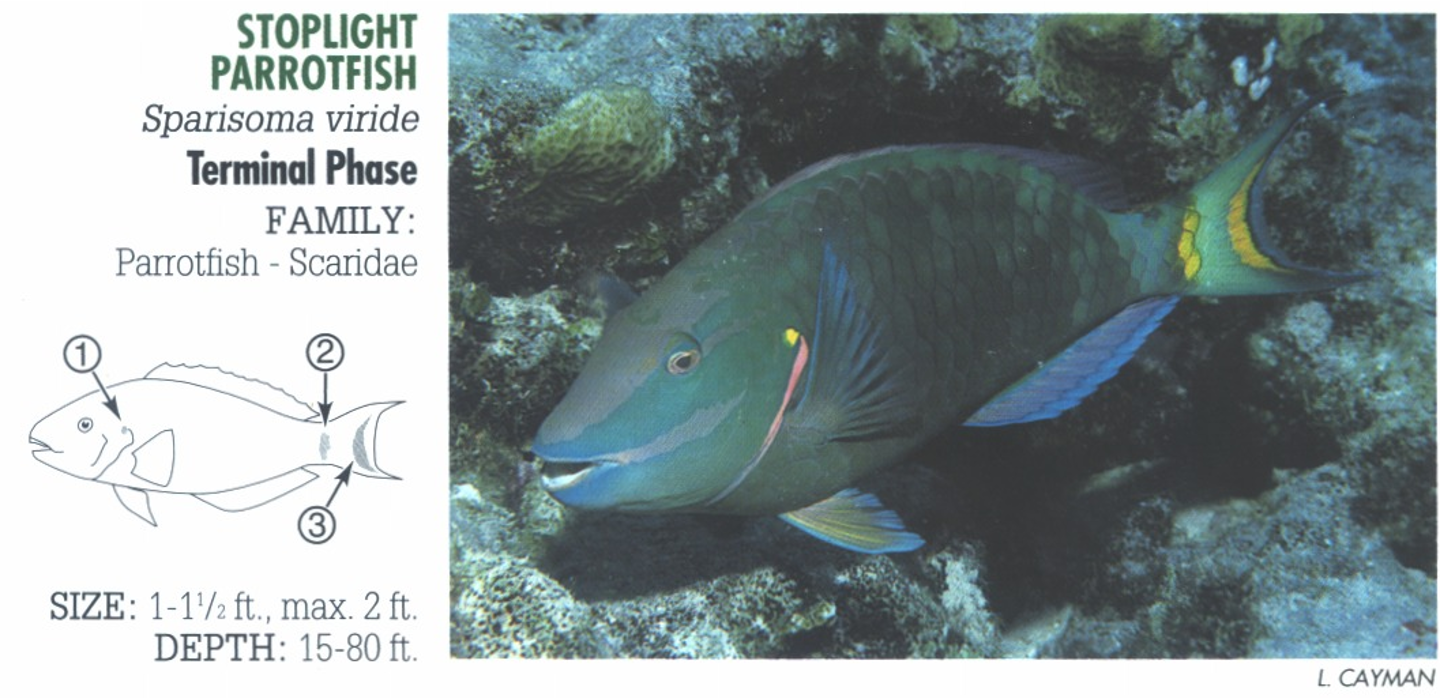
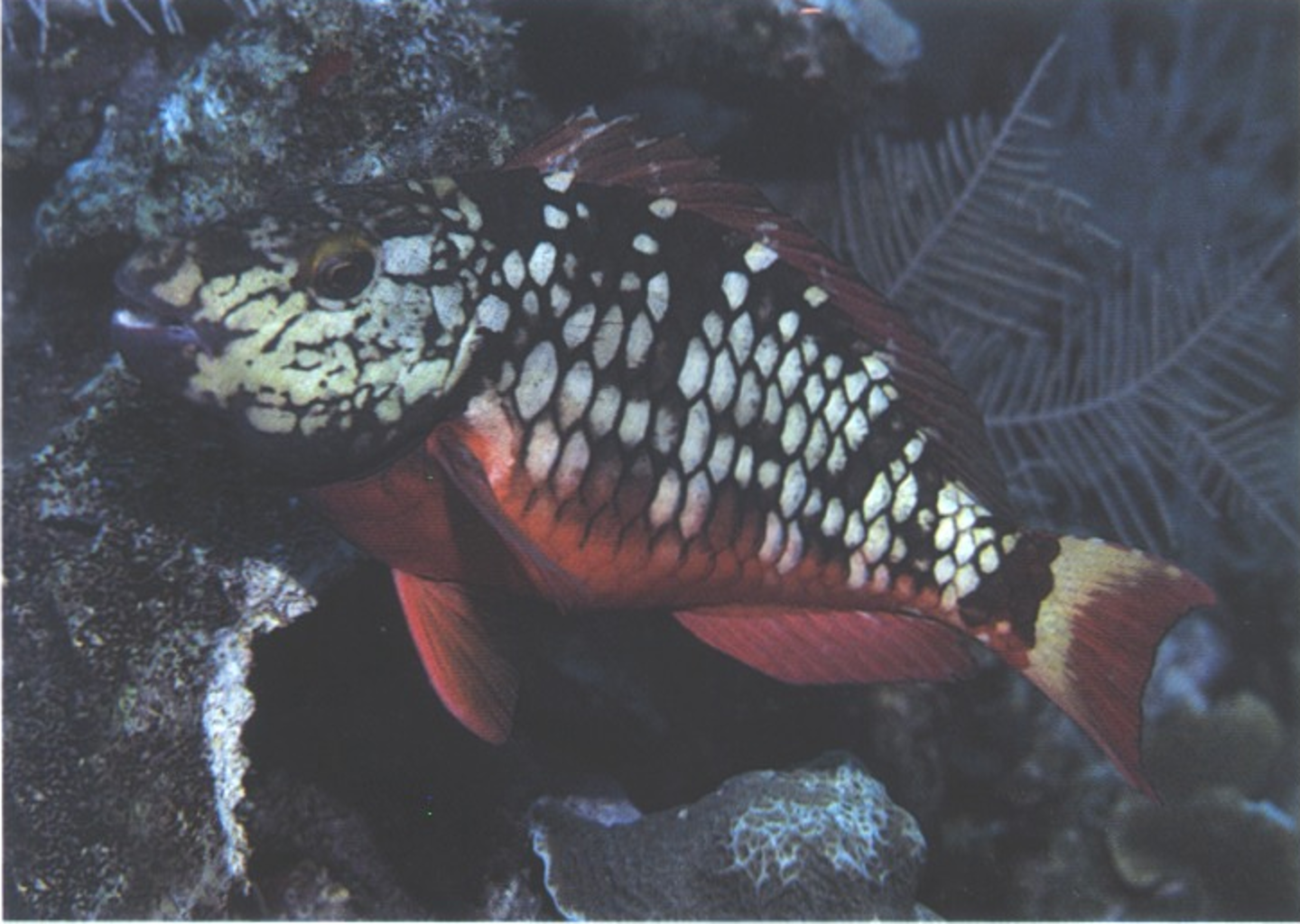
IP: 4. Red belly and tail.
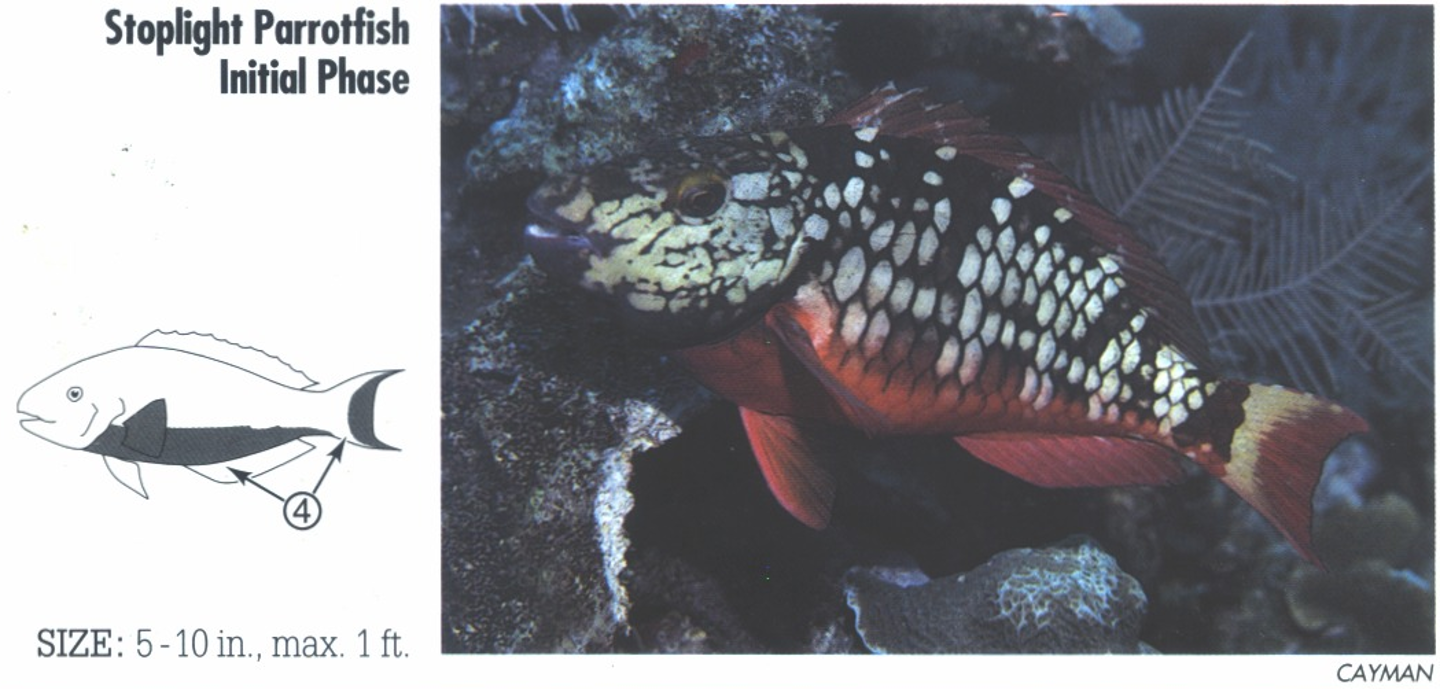
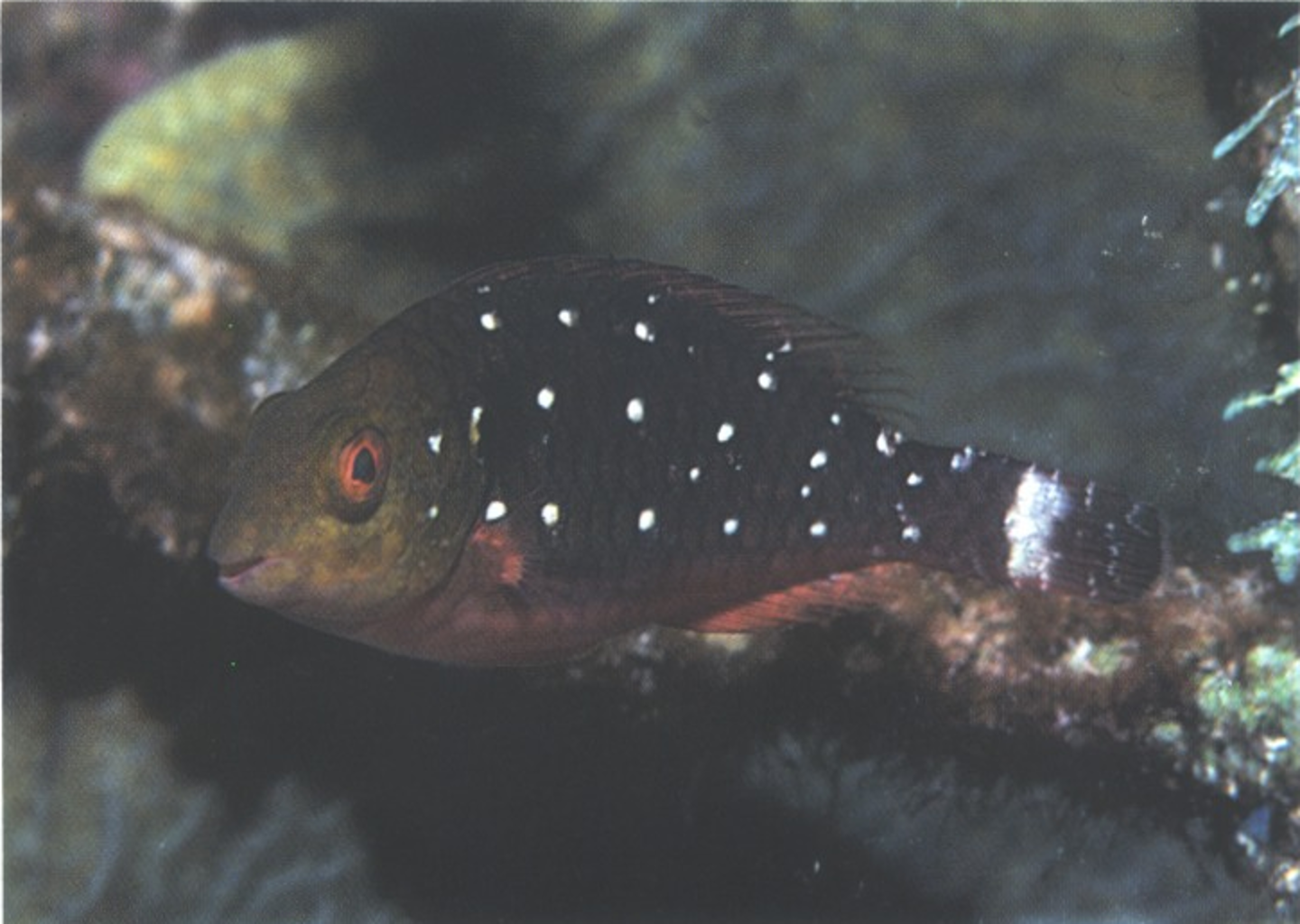
JP: 5. Three rows of widely spaced white spot run length of body.
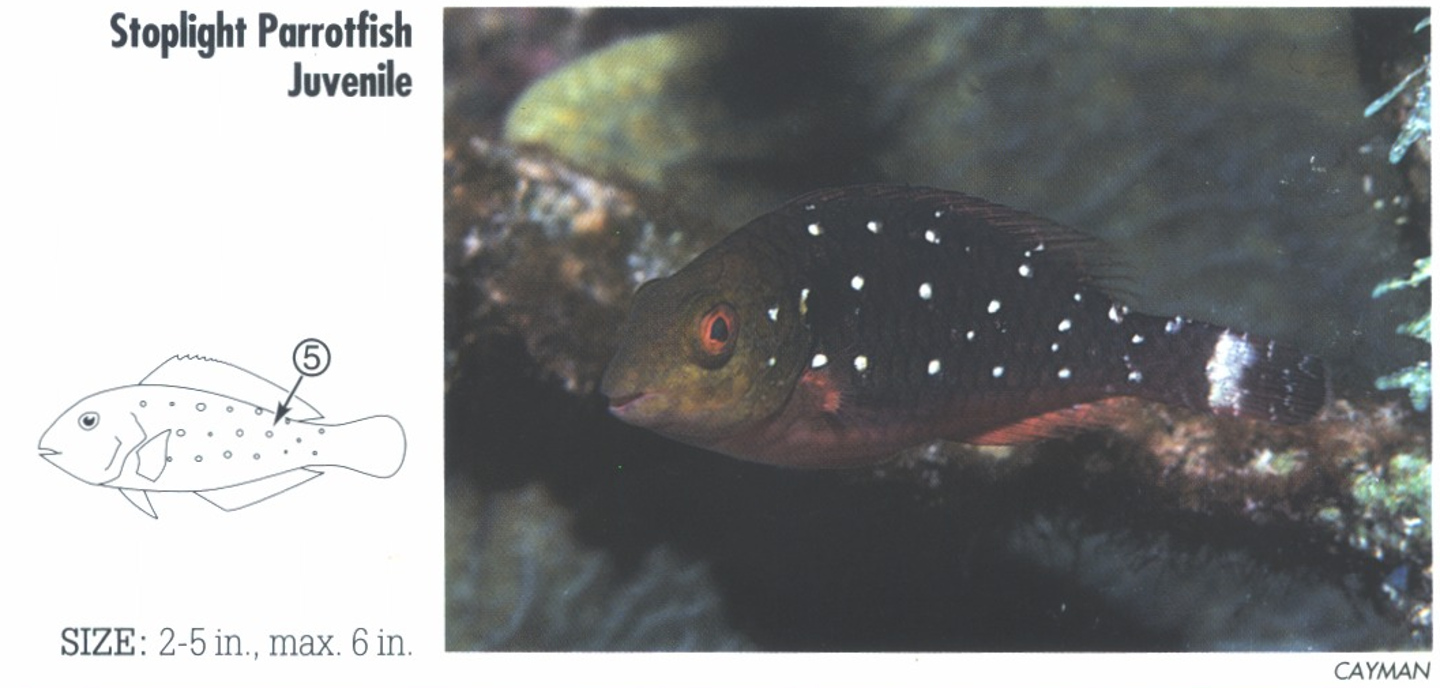
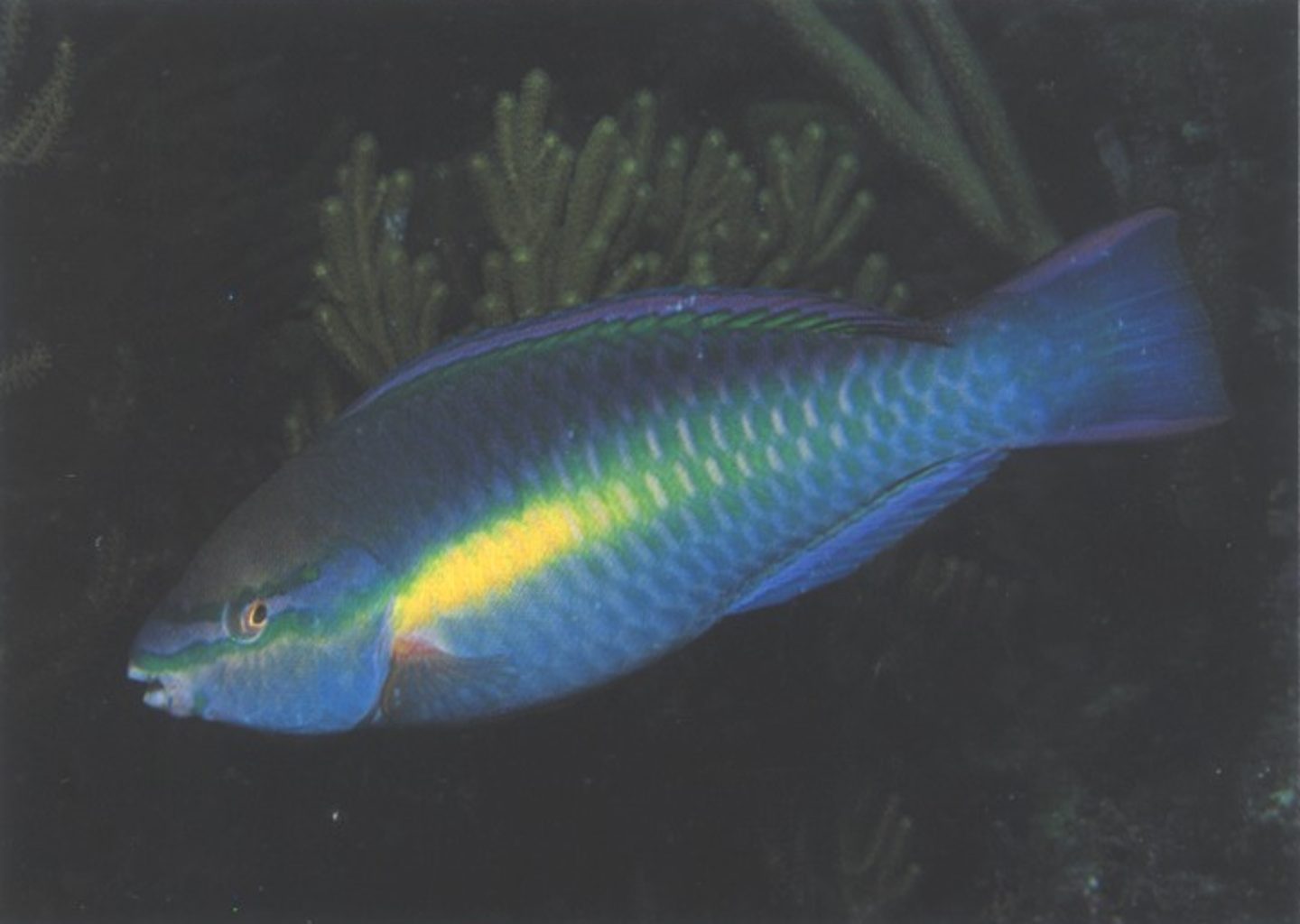
TP: 1. Borders of tail yellow to orange or pink. 2. Yellow or orangish stripe down midbody, fading toward rear.
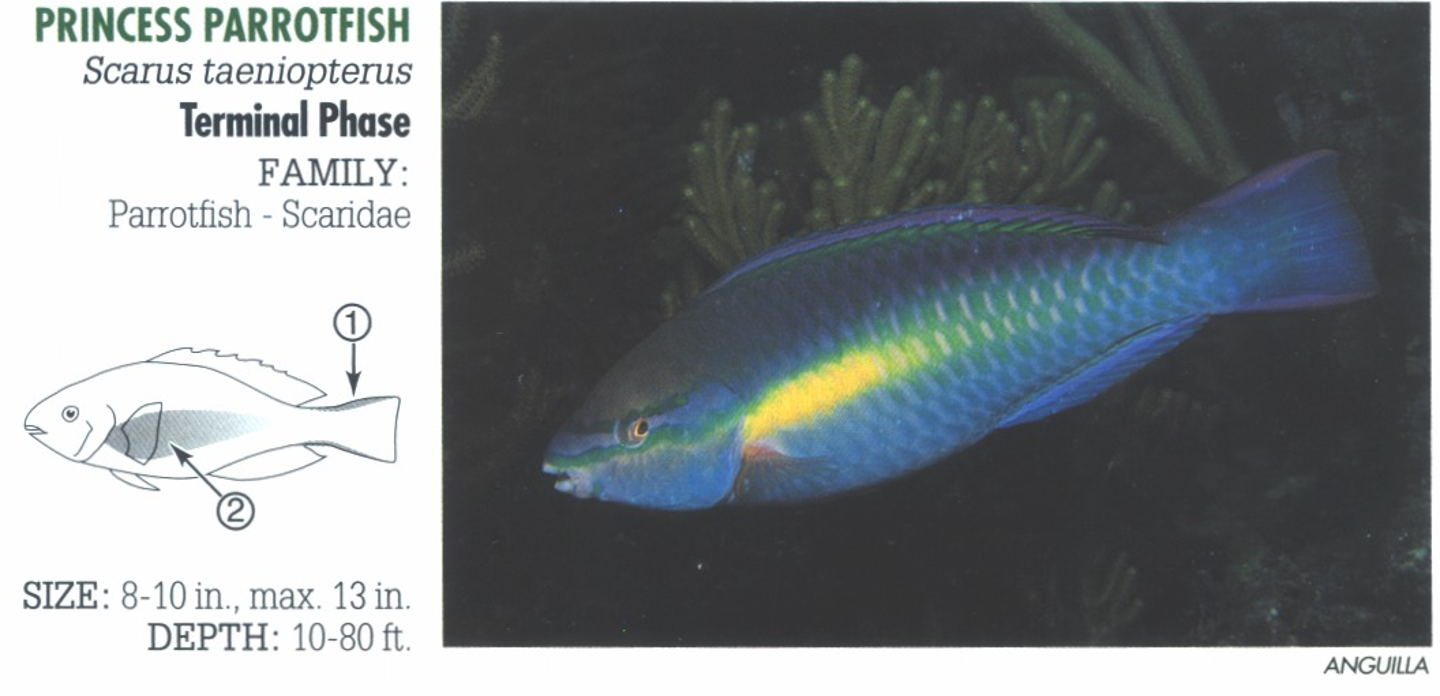
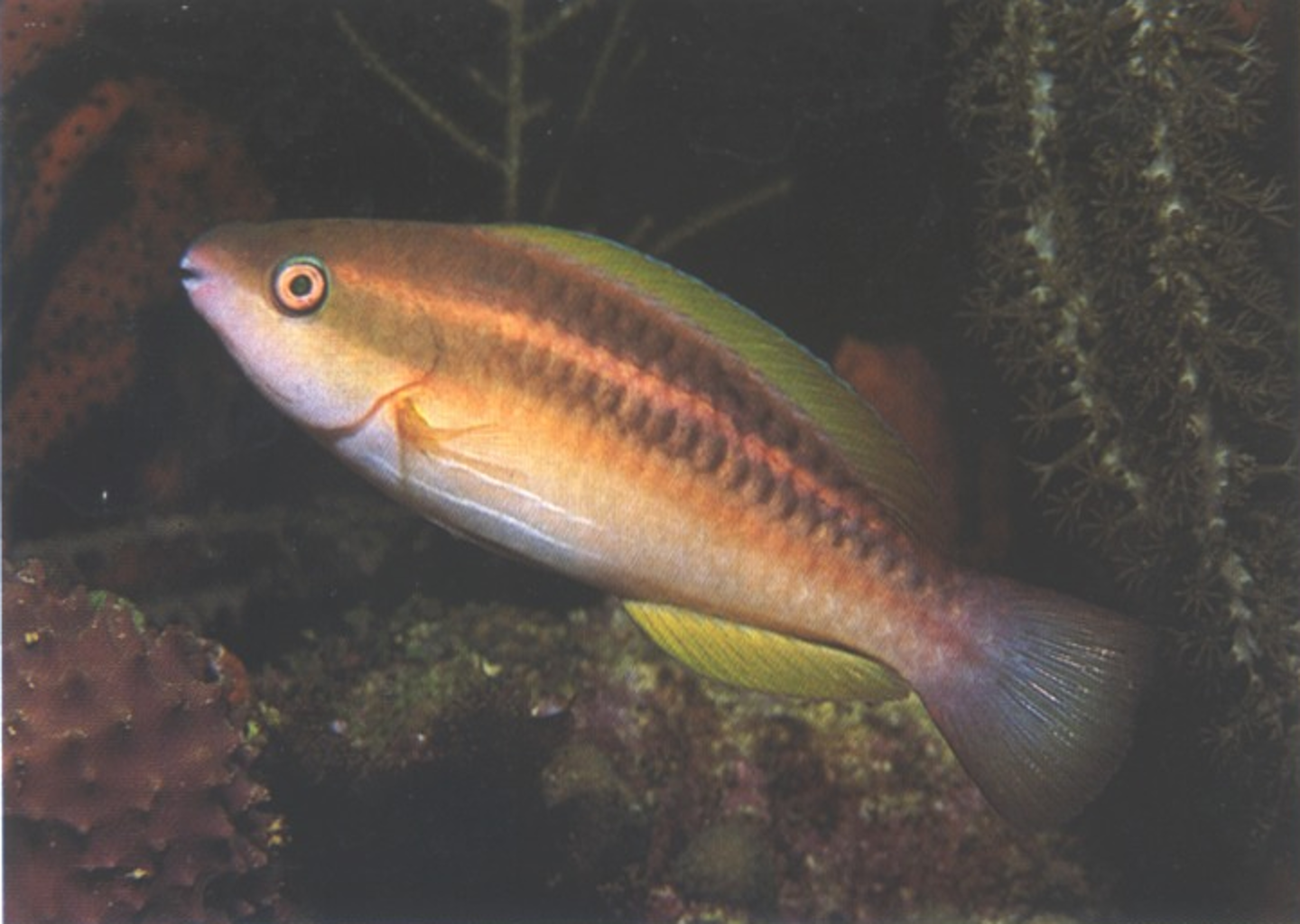
IP: 3. Border of tail dark. (Similar Striped Parrotfish, S. iserti, distinguished by lack of marking on border of tail.
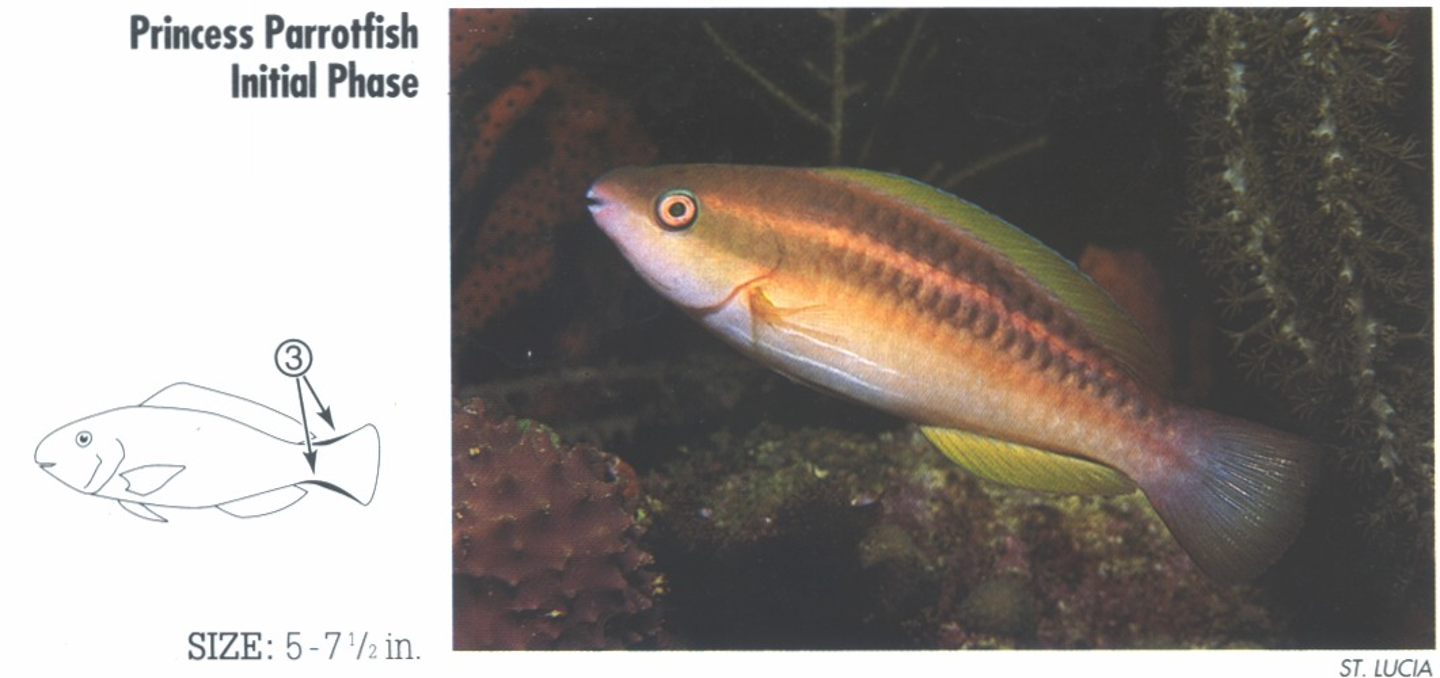
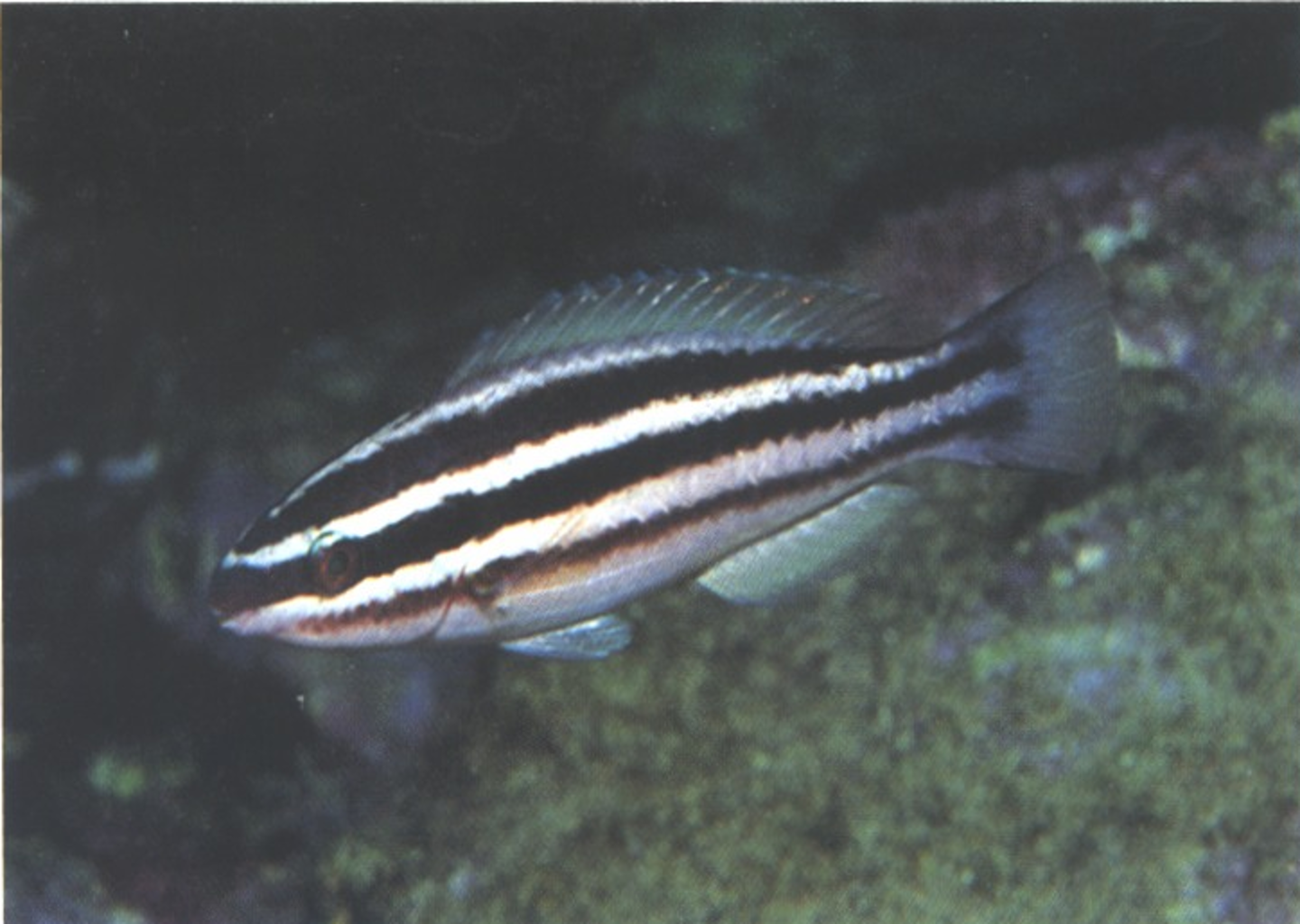
JP: 3. Border of tail dark. (Similar Striped Parrotfish, S. iserti, distinguished by lack of marking on border of tail.
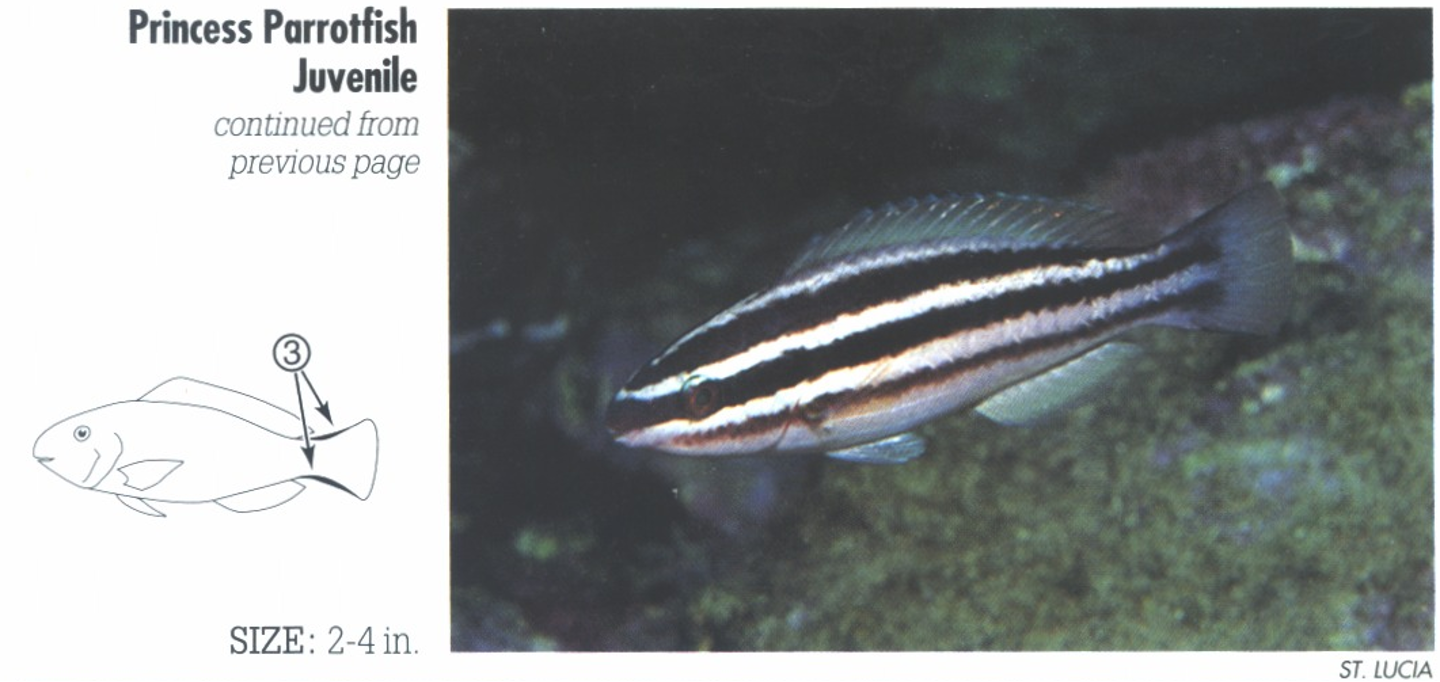
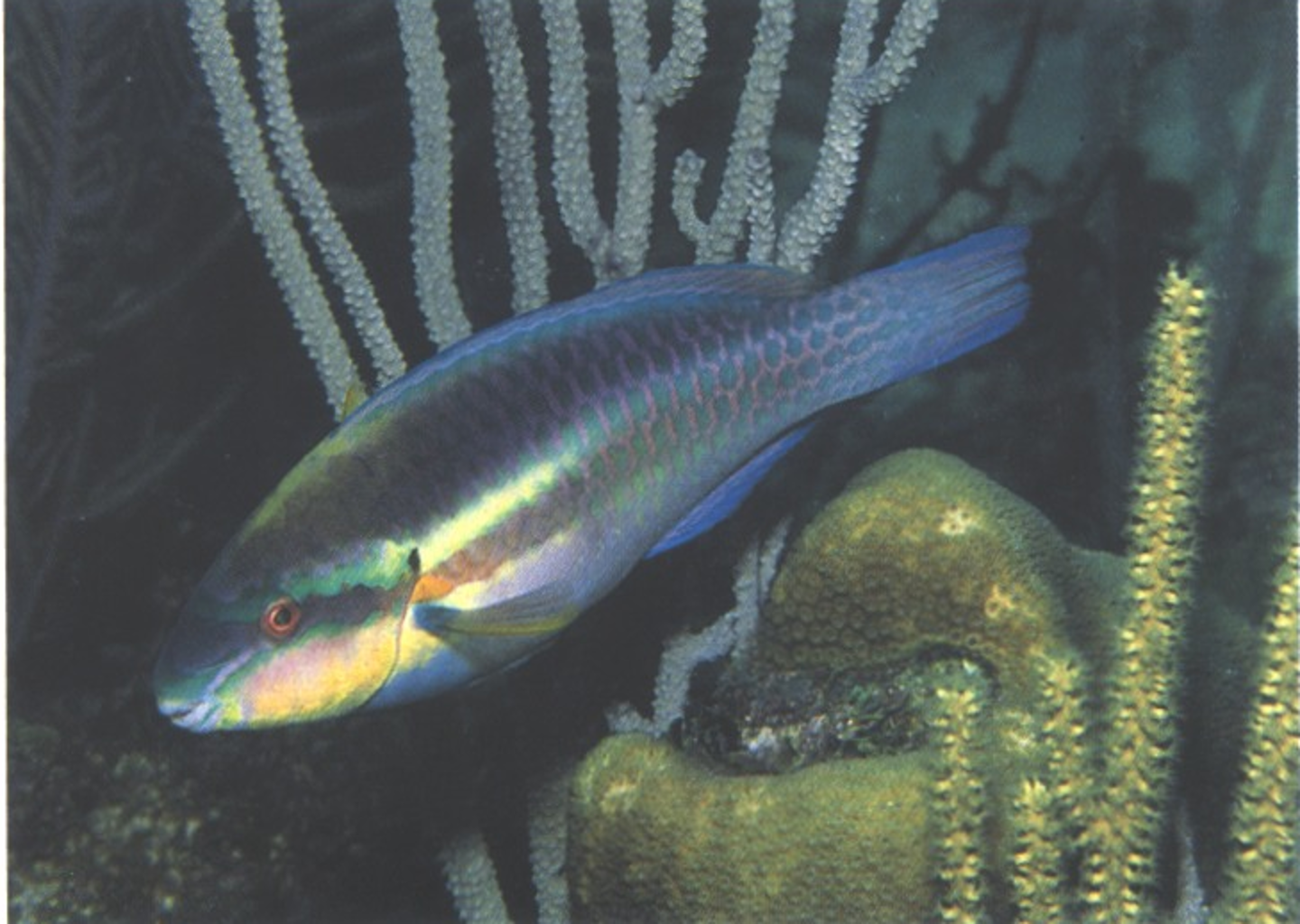
TP: 1. Dark blue or green tail has pink, yellow or orangish linear markings between borders. 2. Gold to yellow spot or stripe above and behind pectoral fin.
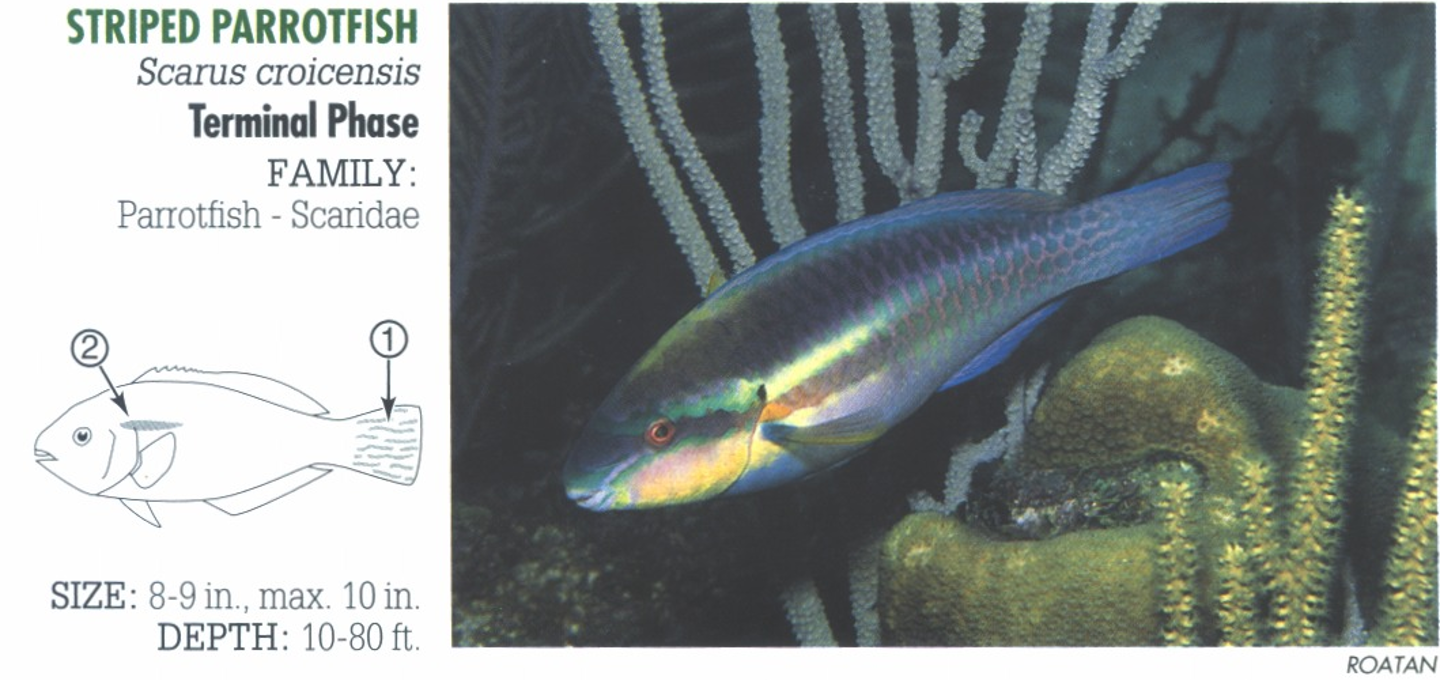
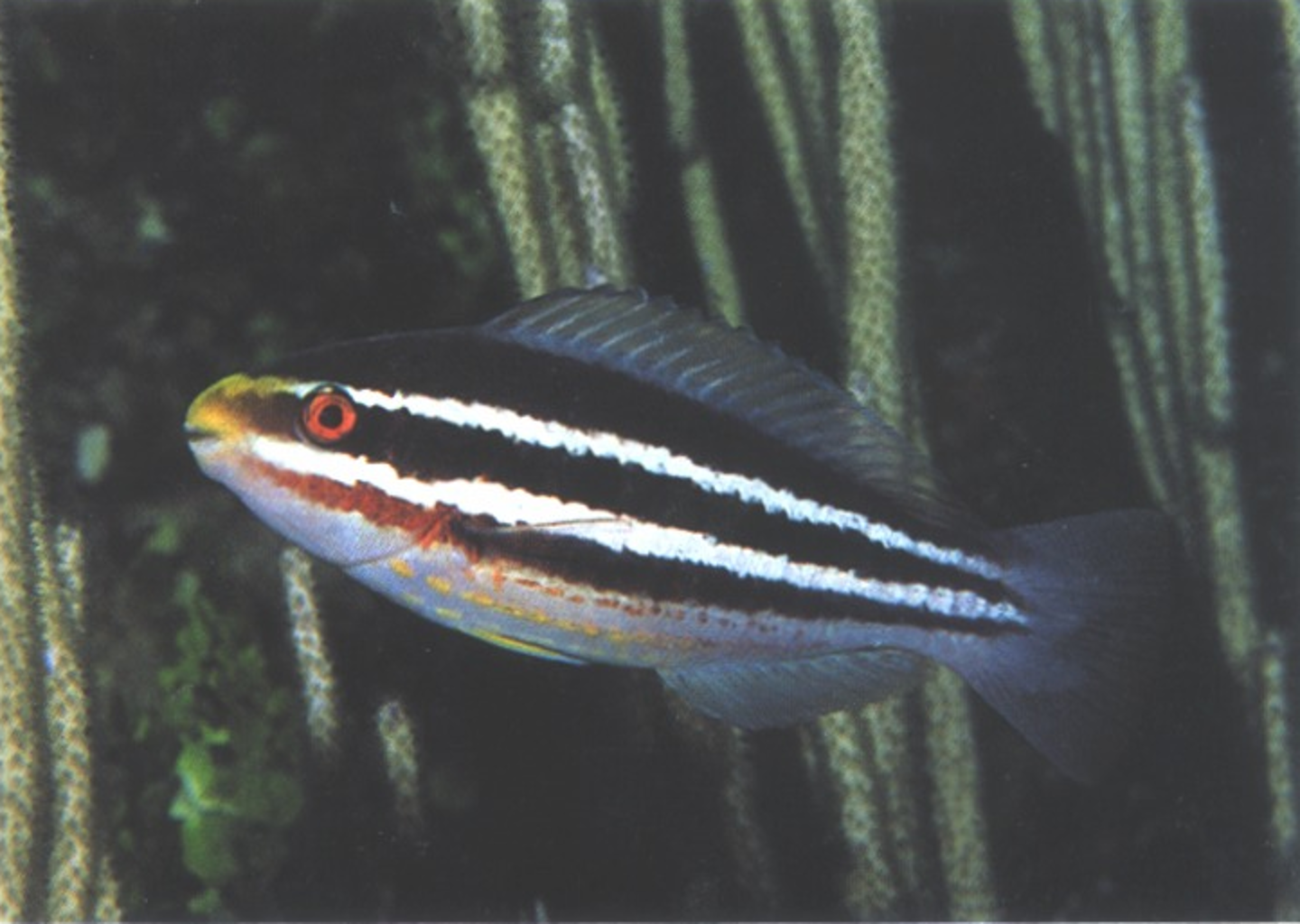
IP: 3. No dark marking on borders of tail. (Similar Princess Parrotfish, S. taeniopterus, distinguished by dark borders on tail).
